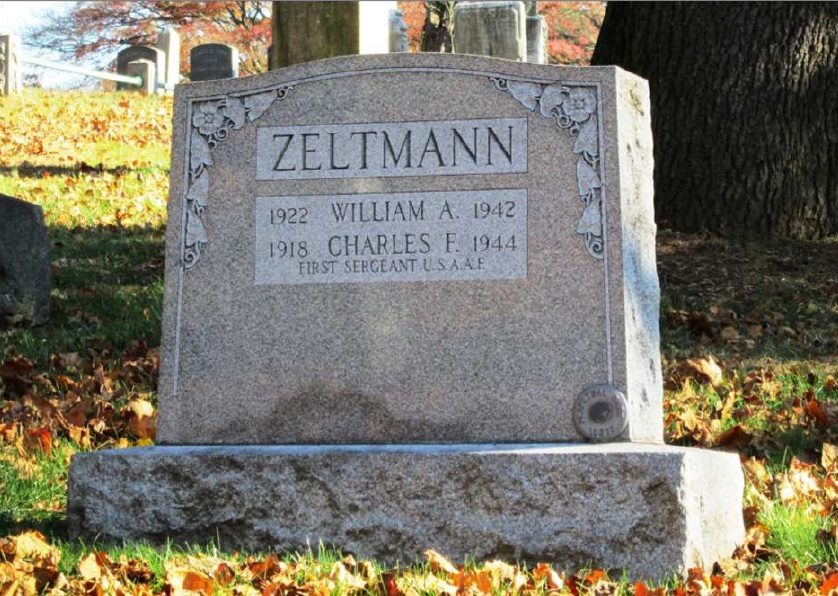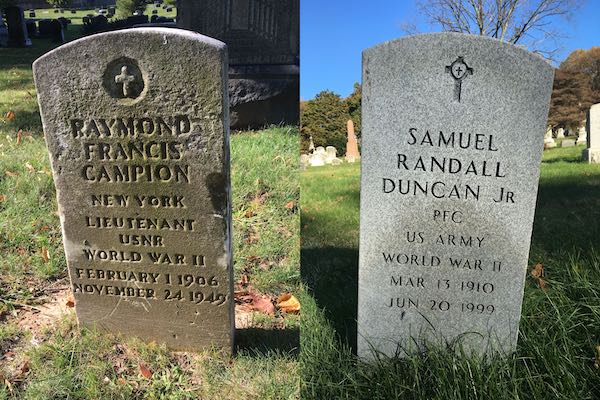
WWII Bio Search
Click for the other World War II biographies: Intro/Part 1 (Aceto-Conti) Part 2 (Costa-Krutz), and Part 3 (La Barbera-Phipard)
Click here to share the story of someone you know who took part in World War II.
PIZZA, ANDREW ANTHONY (1926-2021). Technician 5th grade, United States Army. According to his World War II draft card, Andrew Pizza was born in Brooklyn. As per the 1930 federal census, he lived with his parents, Edward and Genevieve, and a younger brother, on 21st Street in Brooklyn. That census reports that Andrew’s father was employed in a bakery shop. The 1940 federal census documents that the family lived on 7th Avenue in Brooklyn and his father was a foreman at a bakery supply company.
Pizza’s World War II draft card details that he resided at 195 21st Street in Brooklyn and his mother was designated next of kin. His employer was Mr. Joe Lowe and his place of employment was Bakery Supplies in Manhattan. Noted on his draft card is his discharge date of July 18, 1946. The registrar’s report, dated August 8, 1944, describes him as 5′ 8″ and 155 pounds with gray eyes, brown hair, light complexion with a large scar on his left leg caused by an accident. Pizza signed up for the draft on his eighteenth birthday (August 8). As per his World War II enlistment record, Pizza’s actual date of enlistment was October 1, 1944. He was single, entered the army as a private, and completed three years of high school. There is no other documentation regarding his service history. His daughter, Mary Ann, notes that he was discharged with the rank of technician 5th grade.
As per the 1950 census, the twenty-three-year old Pizza lived with his parents and siblings, Anthony, 20, and Rose Ann, 6, at the 195 21st Street residence. Andrew is documented as a laborer’s helper at the Edison Electric Company; his daughter reports that he was a mechanic. He and Rina Rosiello applied for a marriage license in Brooklyn in 1954. The couple celebrated sixty-seven years of marriage and had two children, Edward and Mary Ann. In 1974, the couple moved to Staten Island.
According to his obituary page from the Hanley Funeral Home, which confirms his World War II service, “Andrew “Chubby” Pizza retired from Con Edison in 1988 after 40 years. He loved to garden and play cards. He enjoyed his stay in Florida and the Arrochar Friendship Club. He was very handy and could build or fix anything. He was happiest when spending time with family!” A funeral mass was held at Our Lady Queen of Peace Church. The family asked that donations be made to A Very Special Place, Inc., a social services organization, in New Dorp, Staten Island. He was survived by his wife, his children, grandsons Edward and Ryan, and his sister. Section 132, lot 42148.
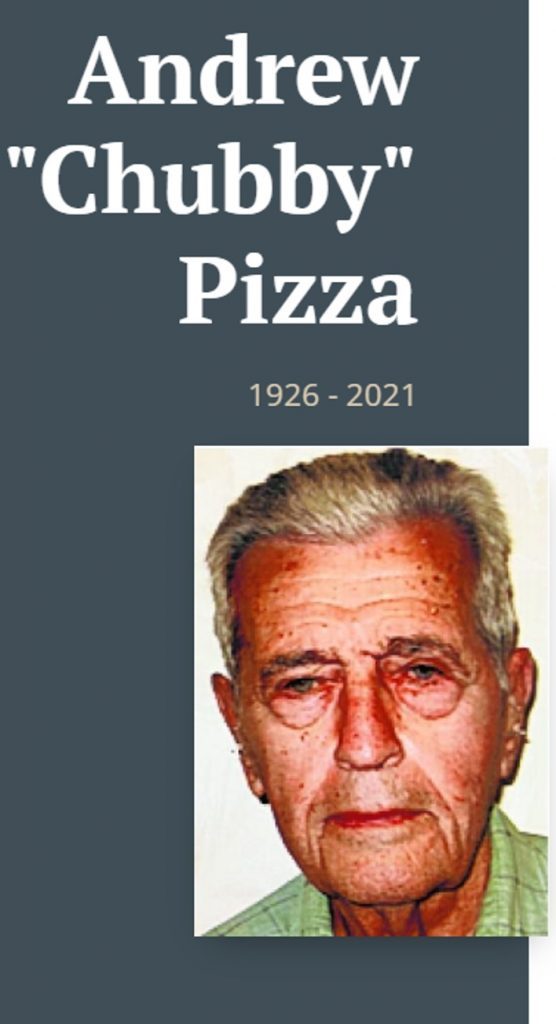
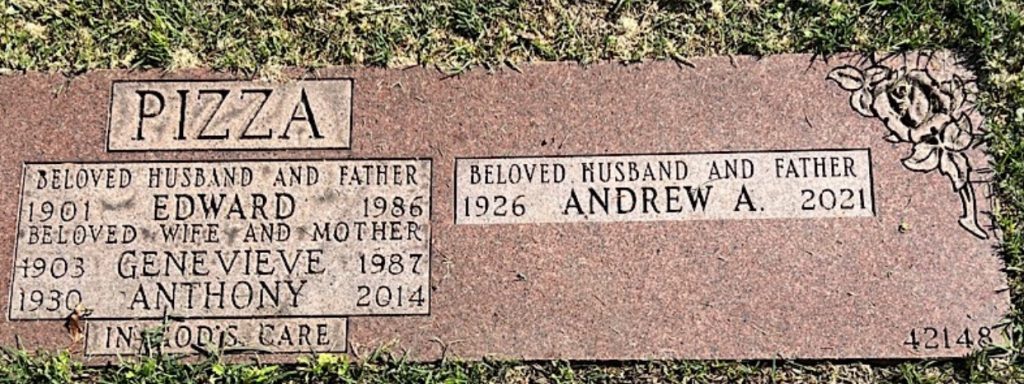
PLACIDO, STEVE (or STEFANO) (1926-2014). Seaman first class, United States Navy. Placido was born in New York to Stefano Placido, an Italian immigrant, and Rosalie Placido, an American of Italian descent. At the time of the 1930 census, his father Stefano, a cabinet maker, was 29 years old, his mother Rosalie 23, Steve (then known as Stefano) was 3 years and 9 months, and his younger brother Gastavo was just over 1 year old. The family lived in Brooklyn at 328 12th Street. As per the 1940 census, the family continued to live on 328 12th Street. Stefano Placido was then 39 and a cabinetmaker and his wife Rosalie was 33 and a dressmaker. They had three children: Stefano was 13, Gastavo 11, and a younger daughter named Mary was 9. Placido attended St. Saviour Elementary School and Manual Training High School (now John Jay Educational Campus) in Park Slope.
In 1943, Placido registered for the United States Navy at the age of 19. The registration card lists his first name as Steve, his employer’s name as Veteran and his father is listed as the person who will always know his address. That document indicates that he had a home telephone. His daughter, Susan Placido Lauser, reports that from 1944 to 1945, Placido served on board the USS Monterey (CVL-26), a small aircraft carrier, which made voyages to the Philippines including Leyte Gulf, Japan including Honshu and Okinawa. He is listed among the sailors aboard the USS Monterey on May 29, 1944, with his service having begun on May 14, and is also listed on the ship’s muster roll for March 31, 1945. There were many air strikes in Okinawa, Saeki, Kure, Tokuma, Misawa, Atsugi and Tokyo but the aircraft carrier was never captured. It was however, struck by Typhoon Cobra while in the Pacific and the ship almost sunk. Gerald R. Ford, the future 38th President of the United States, was also serving on the Monterey at this time. For his service, Placido was given the Philippine Liberation Ribbon, Asiatic-Pacific Campaign Medal, American Campaign Medal, and the Victory Medal. Placido is listed on the muster roll for the USS Monterrey on April 1, 1946.
In 1949, Placido married Helen L. Miscione and the couple had two children: Susan (born in 1954), and Steven (born in 1956). As per his daughter, he was the owner of West Potato, Inc. According to the United States Public Records, he lived in Brooklyn from 1984-1996 and again from 1998 to 2005, then in Parksville, New York, from 1996 to 1998, and in New York City from 2005 until his death. Section 39/40, lot 38325, grave 821.
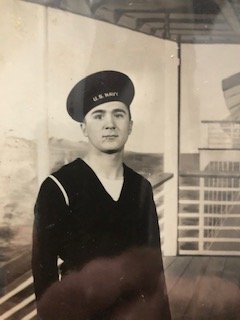
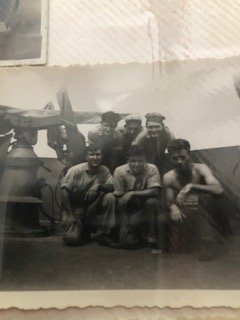
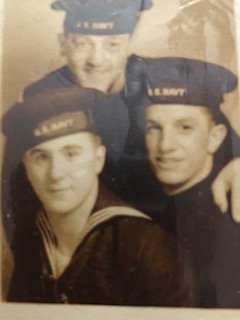

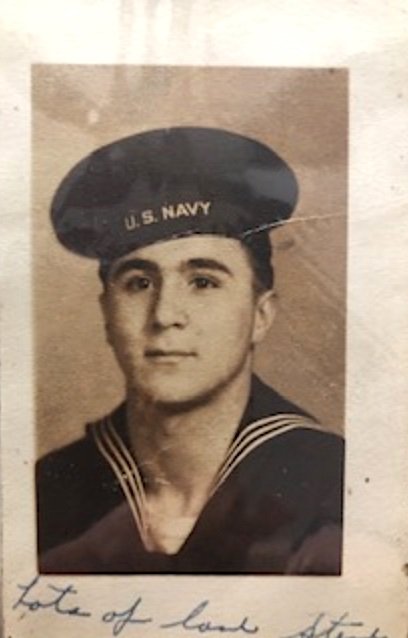
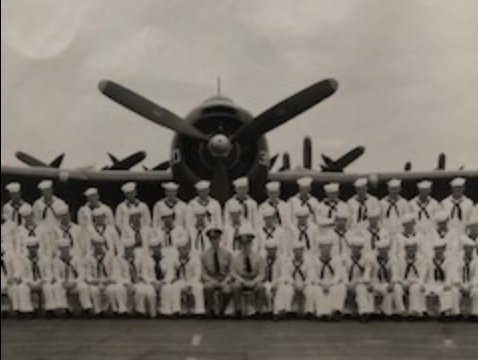
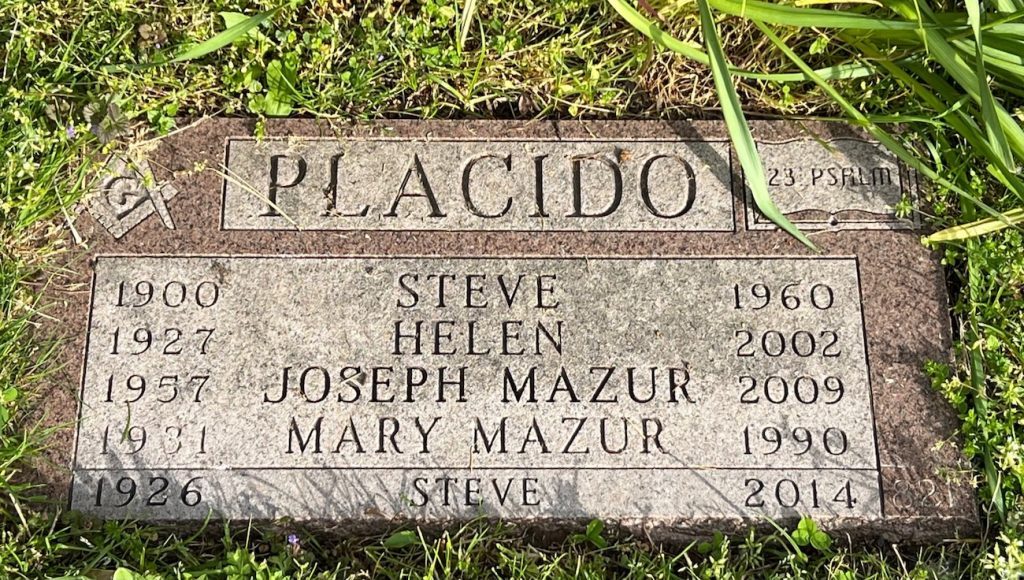
PLAENER, ALFRED JOHN (1922-2007). United States Coast Guard. Alfred John Plaener was born in Manhattan to William Ludvig Plaener, born August 28, 1887, and Anna McCormack Plaener, born August 9, 1888. His parents had married in New York on February 2, 1918. William was born in Hamburg, Germany, and Anna, also later known as Anne, in Roscommon, Ireland. Both parents eventually became United States citizens, William on March 22, 1932, and Anna on May 1, 1956. When William filed his Declaration of Intention to become a citizen on March 31, 1925, he listed his address as 414 61st Street, Brooklyn, and his occupation as chef manager; he was 5′ 7″ in height, weighed 150 pounds, with light brown hair, blue eyes, and a fair complexion. By the time he was naturalized, in 1932, he was living at 261 67th Street in Brooklyn, and indicated that he had initially entered the United States from Bermuda, at which time his nearest relative or friend lived on 277 West 11th Street in Manhattan. Anna had entered the United States by way of New York City on March 15, 1905. The manifest for the S.S. Fort Victoria shows that both parents, already married, had been outside the United States and had returned together from Bermuda on March 24, 1921.
Alfred had an older brother, William Robert, born October 24, 1919, also in New York City. In 1940, according to the federal census of that year, the family lived at 261 67th Street in Brooklyn and Alfred’s father was a manager at a restaurant. Alfred was living at this same address in 1993.
Plaener registered for the draft on June 30, 1942, when he was 20 years old. According to his draft card, Alfred was 6 feet tall, weighed 175 pounds, and had a light complexion with brown hair and blue eyes. His brother William is described in almost the same way on his draft card, although William was 5′ 9″ tall. At the time Alfred registered, he worked at E.W. Bliss Company on 53rd Street and 2nd Avenue in Brooklyn. Although it is unknown what Alfred did while employed there, the Bliss Company manufactured metal pressing machines and pressed metal products and “during the Spanish-American War and World Wars I and II the company obtained important defense contracts for the manufacture of torpedoes.” Alfred’s father William also registered for the draft, and his 1942 registration card showed him working at Cosmo Cafeteria, 1321 Surf Avenue in Coney Island and living at 261 67th Street in Brooklyn.
Alfred served in the military from December 28, 1942, until March 29, 1946. Although the Department of Veterans Affairs record for Alfred indicates that he served in the Navy, his gravestone more specifically identifies him as a veteran of the United States Coast Guard. This is not a discrepancy since the Coast Guard operates under the Navy in times of war.
According to the 1950 federal census, Alfred lived with his mother and father, but his brother William was no longer in the household, perhaps because he was already married and living with his spouse, Jane Letitia Greffath. Alfred’s father was still a restaurant manager and Alfred worked as a bartender in a tavern.
The Trans World Airlines passenger manifest of July 22, 1955 shows that Alfred Plaener flew out of New York on Trans World Airline Flight No. 880-22. He returned to New York on August 18, 1955, arriving on Trans World Airlines Flight No. 861-18 from London, England.
Plaener’s father died in August 1964. His mother died in 1971. Alfred’s brother, William, died on November 11, 1993, when he was 74. William, his wife Jane, their son Christopher, and his mother Anna are all interred in the same plot at Green-Wood, Section 131, lot 35217, but Alfred’s father William is not at Green-Wood, and Alfred is interred in a different plot. Section 103, lot 45067.
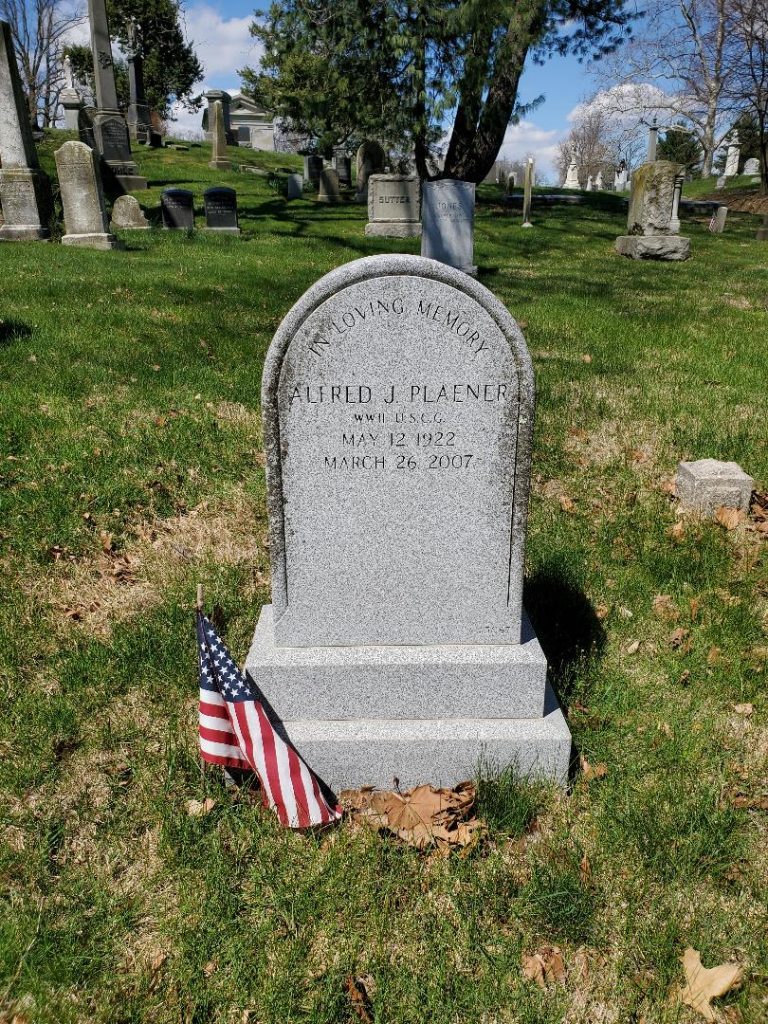
PLATT, THERON GRIGGS (1917-1942). Second lieutenant, 90th Bomber Squadron, 3rd Bomber Group, United States Army Air Corps. Theron Griggs Platt was born in Brooklyn to Augustine Rice Platt, age 44, and Florence Griggs Platt, age 40. According to the 1920 federal census, Theron resided on East 21st Street in Brooklyn with his parents and six-year-old sister, Dorothy. All family members had been born in New York. Augustine Platt was a manager at the International Mercantile Marine Company (IMM), a holding company headed by J.P. Morgan. One of its subsidiaries was the White Star Line, which owned the RMS Titanic in 1912.
The 1925 New York State census, recorded when Platt was seven years old, shows the family residing at 2123 Albemarle Terrace in Brooklyn. Also in the household was Mary Driscoll, age 39, a servant. Augustine Platt was still employed as a manager at International Mercantile Marine Company. The 1930 federal census lists the family at the same Brooklyn address. Florence’s 83-year-old father, Rufus T. Griggs, a lawyer, was residing with them, as was Mary Driscoll. Augustine was still employed as a manager at International Mercantile Marine Company. Theron Platt, age 12, was in school, and able to read and write. On June 18, 1930, the Times Union newspaper printed an article about Theron’s grandfather’s estate. Rufus T. Griggs died at their Brooklyn home on June 7, 1930, and funds were left in his will to educate his two grandchildren.
Theron attended Poly Prep Country Day School in Brooklyn. The Brooklyn Citizen newspaper printed an article on May 31, 1935, noting that he was one of 50 students attending Brooklyn schools to be awarded a set of Charles Dickens books as a prize for winning the David Copperfield-Charles Dickens contest held in conjunction with the showing of the David Copperfield film at the Loew theaters in Brooklyn. According to an article in the June 16, 1935 Brooklyn Daily Eagle, Platt graduated high school on June 7, 1935 and would be spending that summer with his family at their summer home at Sea Cliff, Long Island. Platt then attended Hamilton College in Clinton, New York, graduating on June 12, 1939. The Brooklyn Daily Eagle printed an article, on December 3, 1937, about his football activities in college.
At the time of the 1940 federal census, Theron, who was sometimes known as “Tom,” was residing at 34 The Oaks, in Roslyn Estates, New York, with his parents. Also in the home was Nellie May, age 45, a servant. Platt had completed his fourth year of college and was still a student. After obtaining his undergraduate degree, he went on to study forestry at Yale University but left after a year to join the military.
Platt’s World War II draft card, signed on October 16, 1940, shows him living in Roslyn, with his father as his contact. He was unemployed, 5′ 8″ tall and weighed 160 pounds, with gray eyes, brown hair, and a ruddy complexion. He enlisted in the United States Army on December 5, 1940, and his World War II enlisted men card shows that he served with Battery G Company, 207th Coast Artillery Anti-Aircraft Regiment, until February 10, 1941. He wanted to serve with the Army Air Corps and, on November 4, 1941, he enlisted again, this time at Fort Bragg, North Carolina, as an aviation cadet. The enlistment record indicates that his civilian occupation was in the field of acting. His religion was Protestant.
Platt served as a pilot in the Army Air Corps, holding the rank of second lieutenant with the 90th Bomber Squadron, Third Bombardment Group, and was stationed in Australia. According to an article in the November 7, 1942 Brooklyn Daily Eagle, after his commission as a second lieutenant, he flew as a pilot with his squadron from San Francisco to Hawaii on September 2, 1942. He later went on to Australia, where he was stationed at the time of his last flight. Sadly, 24-year-old Theron Griggs Platt was killed in action over New Guinea in the southwest Pacific on November 1, 1942. Edgar R. Cochrun, chaplain, kept a list of the men at whose funerals he had officiated. He wrote that Platt “died in plane crash following mission over enemy territory 2 November 1942, Landing gear of plane shot off by enemy fire” (this earlier date of death may be due to the time difference between Asia and North America.) His parents and sister, Dorothy Platt Nelson, survived him. He was awarded a Purple Heart. According to National Cemetery records, Platt was initially interred at the Ipswich United States Air Force Cemetery in Brisbane, Australia. However, his remains were transferred to the National Memorial Cemetery of the Pacific in Honolulu, Hawaii, on January 10, 1949. A cenotaph memorializes him at Green-Wood. Section 141, lot 27113.
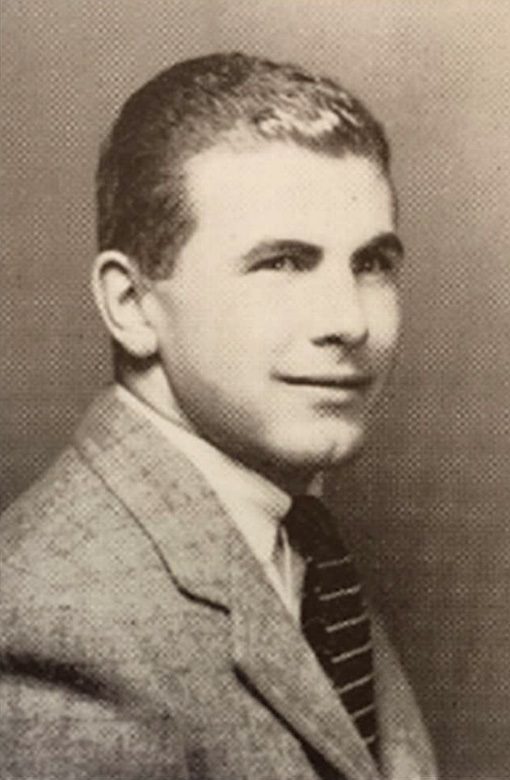

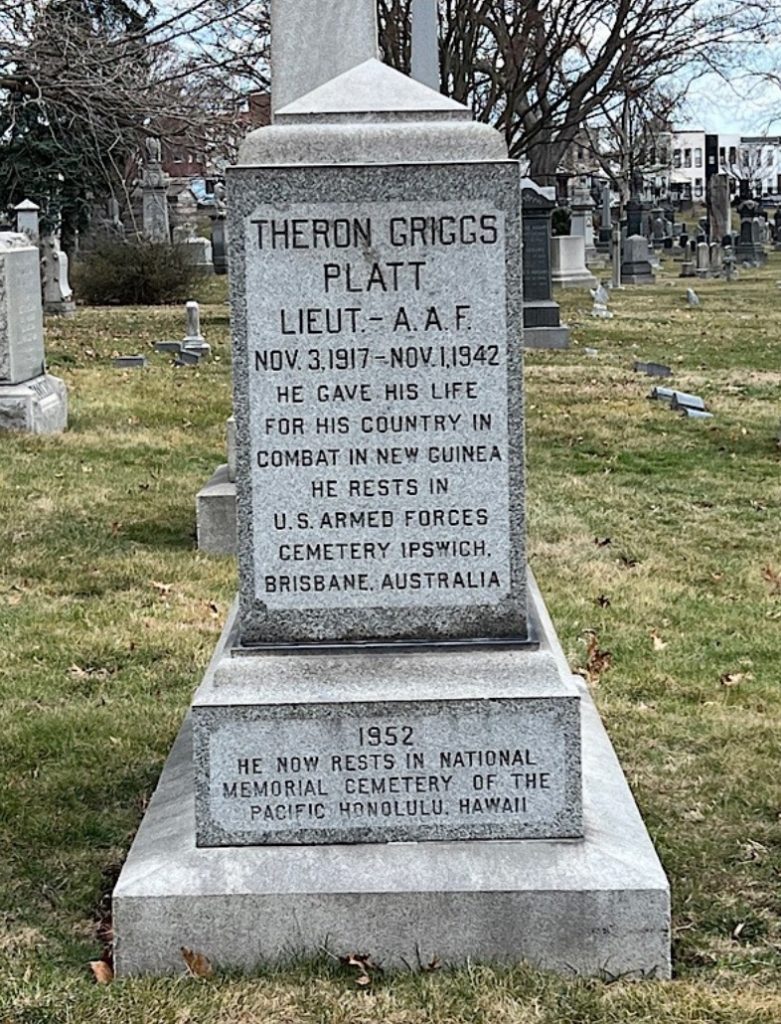
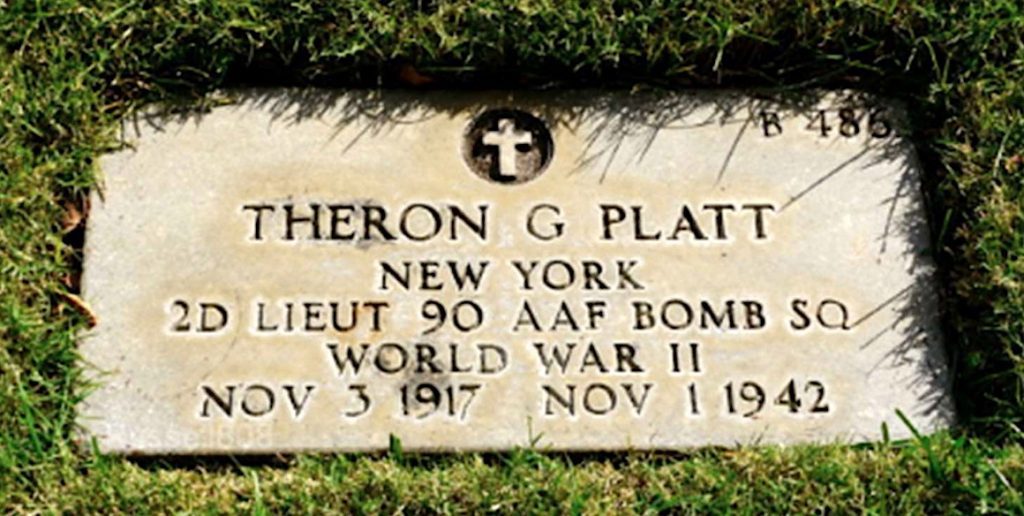
POLESINELLI, FRANK JOSEPH (1919-2002). Corporal, Merrill’s Marauders, United States Army. Frank was born in Brooklyn to parents Barnard and Josephine Polesinelli. He attended Our Lady of Peace Grammar School through the eighth grade. The earliest record of the family is the 1940 census which describes Barnard Polesinelli as fifty-three and his wife Josephine Polesinelli as fifty. Frank was recorded as white, single and twenty-one years old and one of the eldest children, his sister Mildred also being twenty-one. He had four younger sisters: Rose who was nineteen, Mary who was eighteen, Antoinette who was eleven, and Lorion who was five. Frank had completed his school education till the 8th grade and worked as a peddler. The same 1940 census records indicate that he had worked thirty hours in the week prior, worked for himself and had an income of $182.
In 1942, Polesinelli enlisted in the army at Fort Jay on Governors Island in New York Harbor. His enlistment record describes him as 5′ 8″ tall, 158 pounds and lists that he worked as a huckster and peddler. His registration card indicates he lived at 571 Union Street in Brooklyn, his mother was his emergency contact and his employer was Frank Cassillo at 63 Garfield Place in Brooklyn.
Polesinelli trained in Trinidad, Louisiana, and Georgia. As reported by his son, he volunteered for the 5307th Composite Unit (Provisional), also known as Merrill’s Marauders and named after Frank Merrill, the United States Army general who commanded the unit in the World War II’s Burma Campaign. When he volunteered, he did not know what his mission would be; volunteers were told that they would receive a special and dangerous assignment. Merrill’s Marauders was a special operations force active between 1943 and 1944 which fought in the China-Burma-India Theater. The Marauders advanced 750 miles in just over five months, carrying their equipment on their backs or on mules, in some of the harshest jungle terrain in the world. This was farther than any other United States Army advanced in World War II, despite hunger and disease. These men were considered expendable; they were not expected to survive. Polesinelli fought battles near Walawbum (February 24 through March 7, 1944) and Shaduzup (March 12 through April 25, 1944) as reported by his son. The special force also fought in Inkangahtawng, Nhpum Ga, and Myitkyina. During the siege of Nhpum Ga beginning on April 9, 1944, the 3rd Battalion broke through the enemy line. Polesnelli’s son reports that at Nhpum Ga, Burma (now Myanmar), his father was ill with amebic dysentery and was evacuated by small plane. The Marauders battled the Japanese Army on thirty-two separate occasions, including two battles for which the unit was not equipped or intended to take part.
For their service in Burma, the Marauders each received the Combat Infantry Badge, the Bronze Star, and they were awarded the Presidential Unit Citation (originally called the Distinguished Unit Citation). In 2020, the Merrill’s Marauders Congressional Gold Medal Act became law. It awarded the highest token of gratitude for the service, and sacrifice, of the men of that unit. In 1945, Polesinelli was discharged and he retired as corporal. He was married to Mary Jean; the couple had a son and a daughter. He was self-employed in the fruit and vegetable business. His death was attributed to natural causes. Section 5, lot 39944, grave 1.
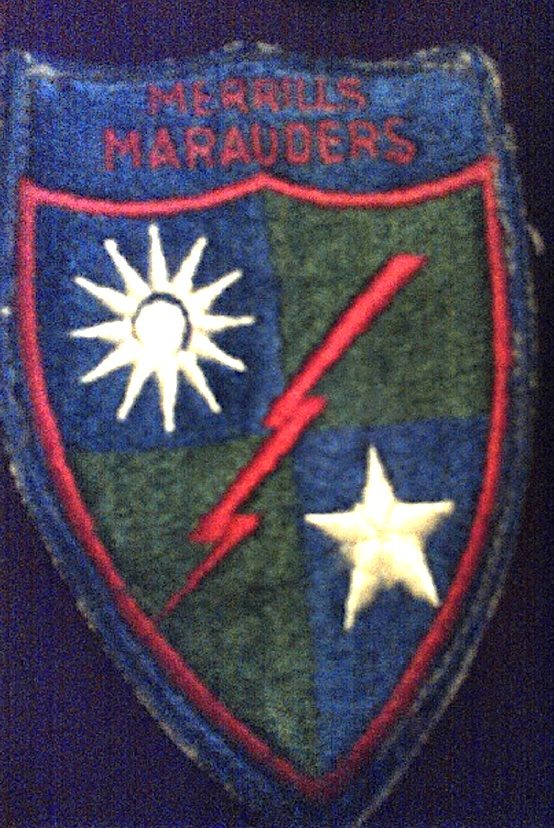
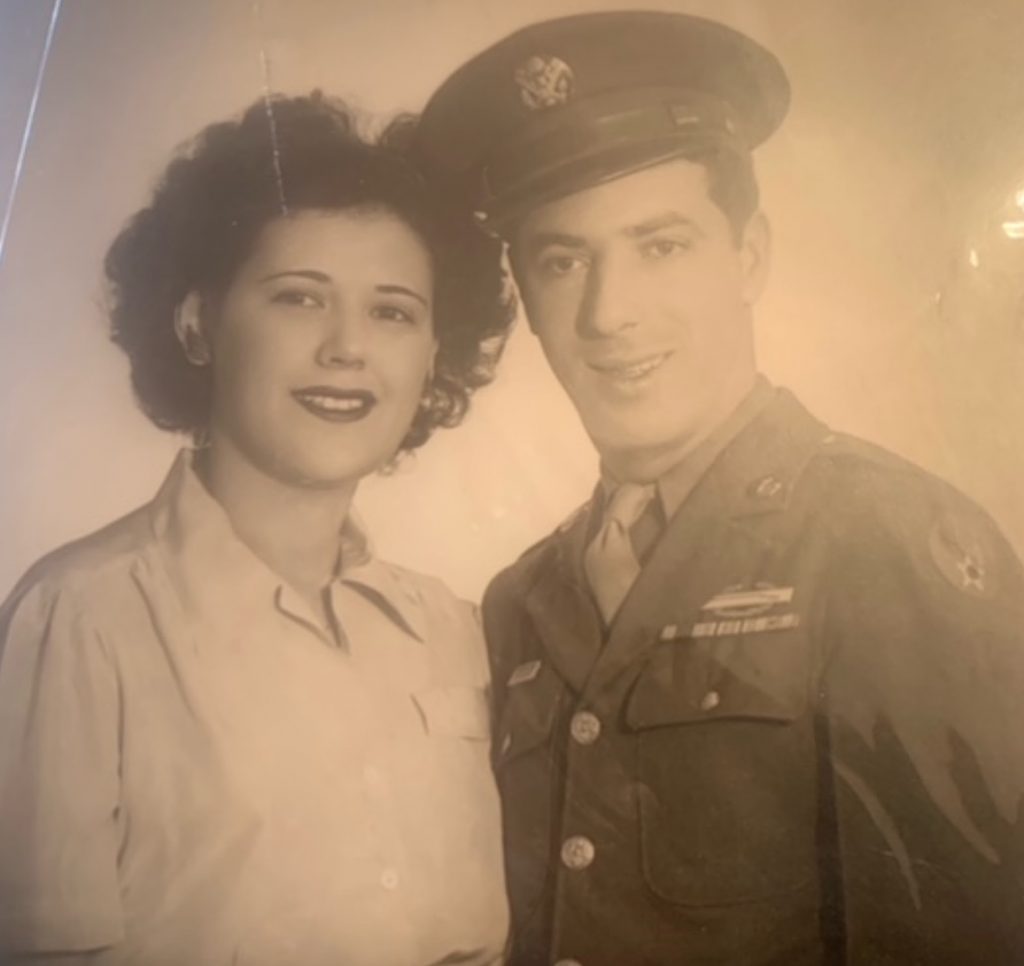


PONZI, EMIDIO LAWRENCE (1925-2018). Corporal, 1st Division, 6th Regiment, United States Marines. Born in Brooklyn and raised in Park Slope, Emidio was the second child of Vincent and Isabel Ponzi. Vincent Ponzi was an Italian immigrant and a street railway worker; his wife, Isabel, was born in New York. As per the 1940 census, the family lived at 187 8th Street in Brooklyn. At the time, Emidio had an older sister named Helen who was eighteen and he himself was fifteen years old and had completed his third year of high school.
In 1943, at the age of eighteen, Ponzi graduated from what was then Manual Training High School (now known as John Jay Educational Campus) in Brooklyn and enlisted in the Marines. His registration card listed his mother as his next of kin and his employer as N.W Gossard at 315 4th Avenue in New York City. He received training at the 4th Recruit Battalion at Marine Corps Recruit Depot, Parris Island in South Carolina, and began his service as private, fighting in the Pacific Theatre at the Battle of Okinawa with the 6th Marine Division. By 1946, after three years of service, Ponzi had become a corporal.
In 1951, Ponzi joined the New York City Police Department where he served for thirty-six years and retired as detective sergeant in the Brooklyn South Homicide Squad. He was one of the detectives on the Brooklyn South Task Force investigating the sniper shootings in southern Bensonhurst in 1981. In a May 26 Daily News report on the shooting investigation, he was quoted as saying that it appeared it was “random shootings by an unknown sniper firing from an altitude.”
Ponzi and his wife, Edith, had three children: Vincent, Isabel, and Joseph. After his retirement in 1987, the couple moved to Palm Harbor in Florida where they lived for many years. He is said to have made a lot of friends and was described as “a voracious reader.”
In 2015, Ponzi’s wife Edith passed away and Ponzi died three years later at the age of ninety-three. He was survived by his three children; his grandchildren Janine, Christine, Philip, Laura, and Jennifer and eight great grandchildren. One of his dearest childhood friends described him as a great man and friend, respected by all, especially his peers on the job and in life. Ponzi’s funeral mass was held at Our Lady of Pity Roman Catholic Church in Staten Island. Section 177, lot 40415, grave 1.

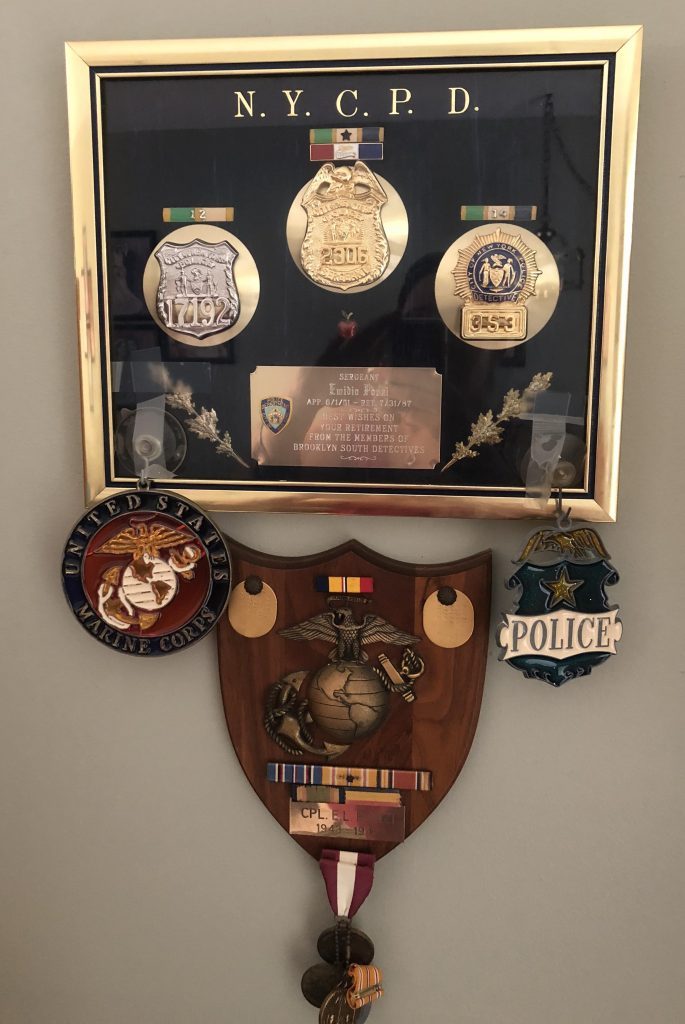
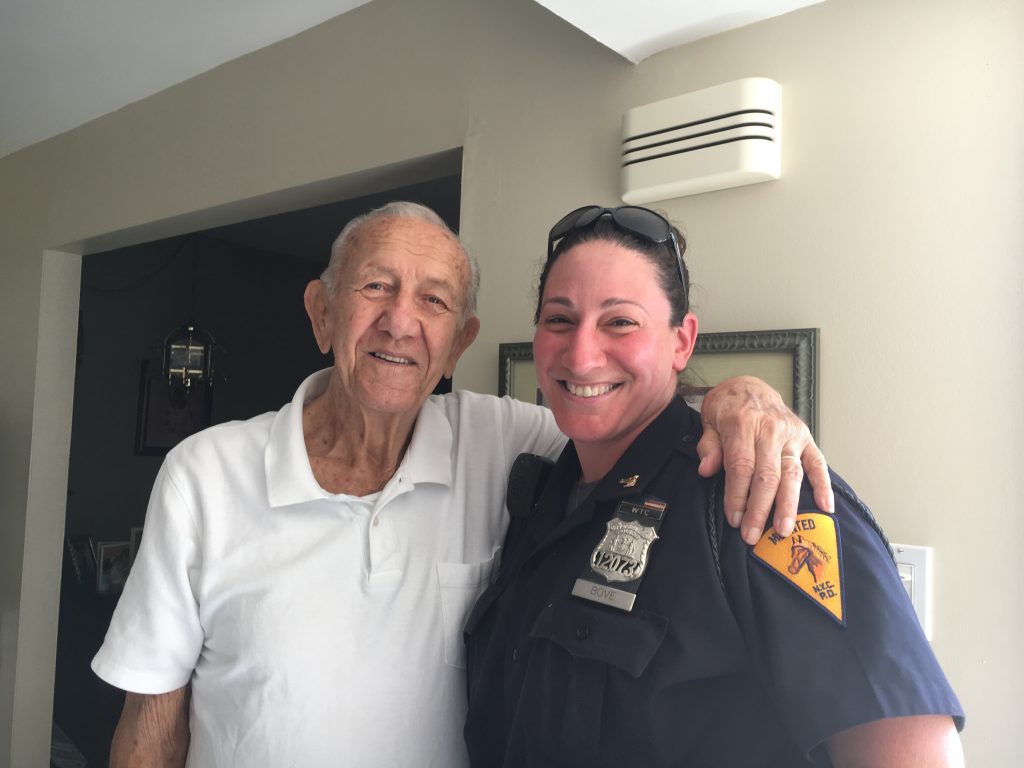
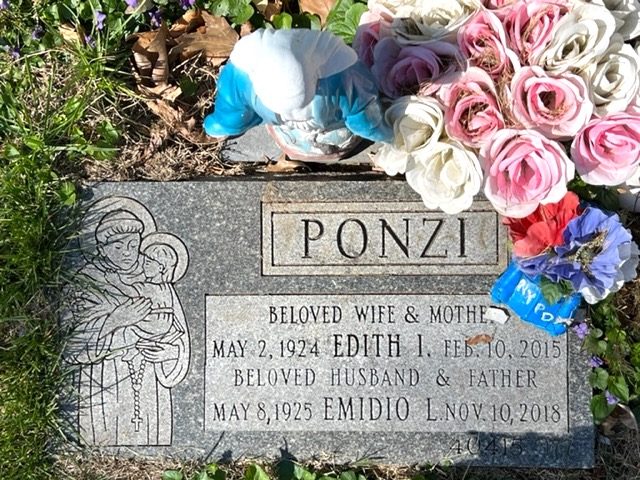
PRICE, FREDERIC (or FREDERICK) P. (1917-1994). Captain, Company D Infantry, United States Army. Price was born in Oneonta, New York. His first name is recorded as Frederick on the birth index as well as on all subsequent documents issued prior to his military service. However, his name was often spelled with the “k” at the end. As per the 1920 federal census, he lived with his parents, Clinton and Mae, and his older brother, George, on Spencer Place in Brooklyn. Both parents were born in the United States – his father in Pennsylvania and his mother in New York. Although this census records his father as an inspector in the carpet industry, ensuing documents chronicle him as a civil engineer. Furthermore, his father’s first name is listed as Chilton. As stated by the 1925 New York State census, the Price family lived at 129 Rogers Avenue in Brooklyn. Frederic and his brother attended school and his father was a civil engineer. The 1930 federal census notes that the family continued to reside at the Rogers Avenue address and his father was a civil engineer for the War Department.
Details of Price’s early life and renowned baseball career are best depicted on the website “Baseball’s Greatest Sacrifice” by Gary Bedingfield, most of which is substantiated by Price’s son, Dan:
Frederic P. Price was educated in Brooklyn at Erasmus Hall High School where he was a three-letter star in baseball, football and soccer. He attended George Washington University, Washington, D.C., where he played baseball and basketball, attracting the attention of New York Giants’ scout Pancho Snyder, and played for the Lormawood Club during the summer. Price left college after his first year and joined the Giants’ spring training camp a Gulfport, Mississippi, in 1937. He was sent to the Greenwood Giants of the Class C Cotton States League for the season and batted .233 in 139 games. The next year – 1938 – he was with the Fort Smith Giants of the Class C Western Association where he hit .277 in 141 games. Price advanced to the Clinton Giants of the Class B Three-I League in 1939, and batted .260. Still with Clinton in 1940, he hit .245 in 115 games and hoped to gain the first base job at Jersey City in the International League the following year.
As per the 1940 federal census, Price and his parents resided at 427 Eastern Parkway. Frederic is recorded as single, twenty-three years old and a baseball player. The transcription inaccurately details that his highest level of education was first grade.
Price entered “Fred” as his first name on his World War II draft card. The card documents that he was twenty-three years old and living at the Eastern Parkway residence. His father was designated next of kin. His employer was the National Exhibition Company located at 104 West 42nd Street in Manhattan. The registrar’s report, dated October 16, 1940, describes him as 6′ 0″ tall and 180 pounds with brown eyes and hair and a light complexion.
The November 20, 1940 issue of The Brooklyn Daily Eagle lists his name among 1,917 inductees from Brooklyn and Queens that were to report to the army on November 25, 1940. Beside his name is a “V” indicating he was a volunteer. Another article in the same issue, “Star on Giants’ Farm Team Goes to Bat for Uncle Sam,” reports, “Asked why he volunteered, and thus became one of the first called (to service), Price declared: ‘Well, you’ve got to get the thing over with, and I thought I might as well do it now.’ His enlistment was one year prior to the involvement of the United States in World War II which, according to Bedingfield, “meant serving a year and missing only one season.”
As per Bedingfield’s website:
Private Price was assigned to Camp Upton on Long Island. Following six weeks of basic training he was assigned to Company D at the 122nd Reception Center, Camp Upton, and was detailed to drill recruits in fundamental marching. During this time, he had a few opportunities to play semi-pro baseball with Barton’s Nighthawks. When questioned at the time about whether he ever expected to pick up his baseball career again, Price explained, “If I didn’t love baseball, I think I would stay in the Army for a career. But I don’t think the world would seem right to me if I couldn’t play baseball. When my year is up, I will apply to Commissioner Landis for reinstatement and report back to Bill Terry (Giants manager).”
Price’s participation in baseball activities at Camp Upton is well-documented by The Brooklyn Daily Eagle. The June 3, 1941 article, “Camp Upton Nine Ready for Battle with All Comers: May Take on Dodgers in Addition to Teams from Colleges, Forts,” reports that Price shared coaching duties with Sergeant Stanley Kulakowski on the newly organized varsity baseball team. The article continues to relate that a tentative schedule of games was drawn up to play against New York University, St. John’s University, Long Island University, Fort Totten, and Fort Tilden, among others. The August 7, 1941 article, “Unbeaten Upton Nine to Meet Southampton,” details an upcoming game between the Camp Upton team and the Southampton team. The article relates that the Camp Upton team was on a 14-game winning streak and describes Price as the “star of the soldier team.” The August 20, 1941 issue of the newspaper features a photo of the Upton Baseball Squad with Price pictured with his teammates.
By October 1941, Price, having served his one year, was released from active duty. As cited earlier, his intentions were to be reinstated with professional baseball and report back to the Giants. However, due to the attack on Pearl Harbor, this never transpired. As per David Finoli’s book, For the Good of the Country: World War II Baseball in the Major and Minor Leagues:
Price, who had been released in October of 1941 after his one-year commitment, was still in the reserves when he was called back to active duty after Pearl Harbor and sent to the Asian Theater. His baseball record might not have been the thing legends are made from, but his war record was about to be. While fighting on April 10th, 1945 at Cebu in the Philippine Islands, First Lieutenant Fred Price was shot twice, first hit by shrapnel right below the right knee, a second time in the lower stomach.
Dan Price, Frederic’s son, has shared an excerpt from a document signed by Major W. A. Moreland, Adjutant General, describing Frederic’s combat activities:
FIRST LIEUTENANT FREDERIC P. PRICE 01311570, Infantry, United States Army. On 10 April 1945 during the advance to take a strategic hill, Lieutenant Price’s company was subjected to heavy enemy rifle, machine gun and 20 mm gunfire. Due to the nature of the terrain, it was impossible to maneuver troops to either flank of the company and allowed the enemy to concentrate fire on a small area. Lieutenant Price, weapons platoon leader, observing several enemy positions, immediately ordered his platoon into firing positions and went forward to observe the effect of the fire. While crawling to a better observation post, he was seriously wounded in the knee by an enemy 20mm shell. Refusing to leave his post, he continued to direct fire for mortars and machine guns for a period of forty minutes while he was under constant enemy fire.
At the time Frederic sustained his war injuries, he was married to Helen Mildred (Ryan). The couple may have applied for a marriage license in Brooklyn on May 16, 1941, as per the New York City Marriage License Indexes. However, according to information shared by his son, the Prices were married in 1940.
A Western Union telegram was delivered to Helen on May 5, 1945. This official notice related: “The Secretary of War desires me to express his deep regret that your husband 1/Lt Price Frederic P was seriously wounded on Cebu 10 Apr 45. Hospital sending you new address and further information. Unless such new address has been received, address mail for him quote rank, name, serial number.” In his book, Finoli quotes Dan, Frederic’s son, describing the stressful event: “It was a frightening time for my mother. She hadn’t heard from my dad for a month. She didn’t get the letter until May informing her that my dad had been seriously injured and where to send the mail. It was another month before she heard from him again.” According to Finoli, Frederic was hospitalized for two-and one-half months.
As per his son, Price was awarded two Purple Hearts and a Bronze Star for his service. In listing Price’s awards, Finoli also includes a Philippine Liberation Ribbon. On September 6, 1946, Price was promoted to the rank of captain. According to the American Baseball Bureau Questionnaire completed by Frederic, he served in the infantry from November 1940 to January 1946. In his book, Bedingfield states that Price was honorably discharged on January 14, 1946. Quoting Bedingfield, “Fred Price was the first professional ballplayer to voluntarily enlist for military service during WWII, and holds the distinction of being the longest serving.”
After the war, according to Finoli,
In January of 1946, with his war injuries healed, he came home and reported to the Giants’ spring training camp. Unfortunately, there would be no spot on the team, as the Giants only would offer a position on their AAA minor league club. With a family to worry about, Price did not want to go to the minors again. The war had cost Price what might have been a promising major league career.
Price’s son shares that his father was an employee benefits manager for Equitable Life Insurance Company and then went on to work for SCM Insurance. As per Price’s baseball questionnaire, he liked basketball and fishing and his baseball ambition was “to play in a World Series.” According to his obituary notice in the New York Daily News, Frederic and Helen had three children: Stephen, John and Daniel (Dan). Price passed away in Hillsborough, Florida at the age of seventy-six. Section 86, lot 18066, grave 91.

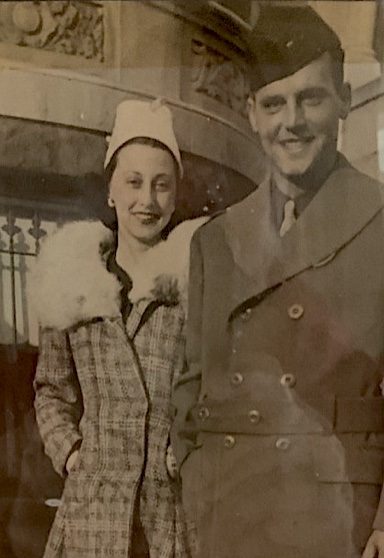
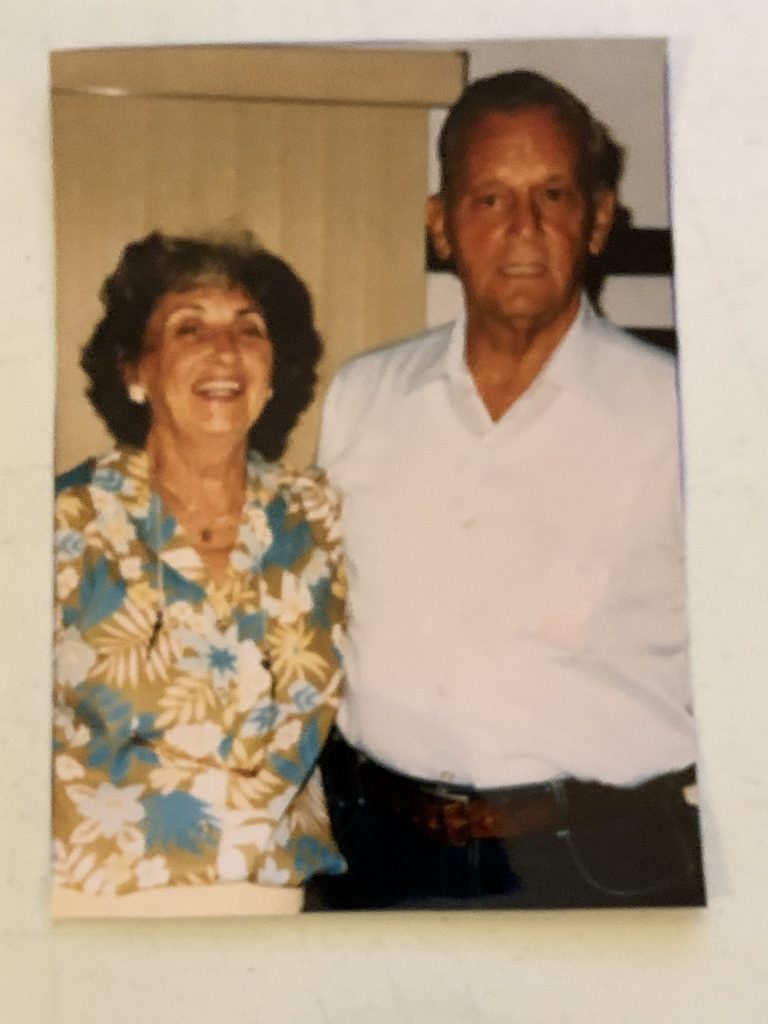
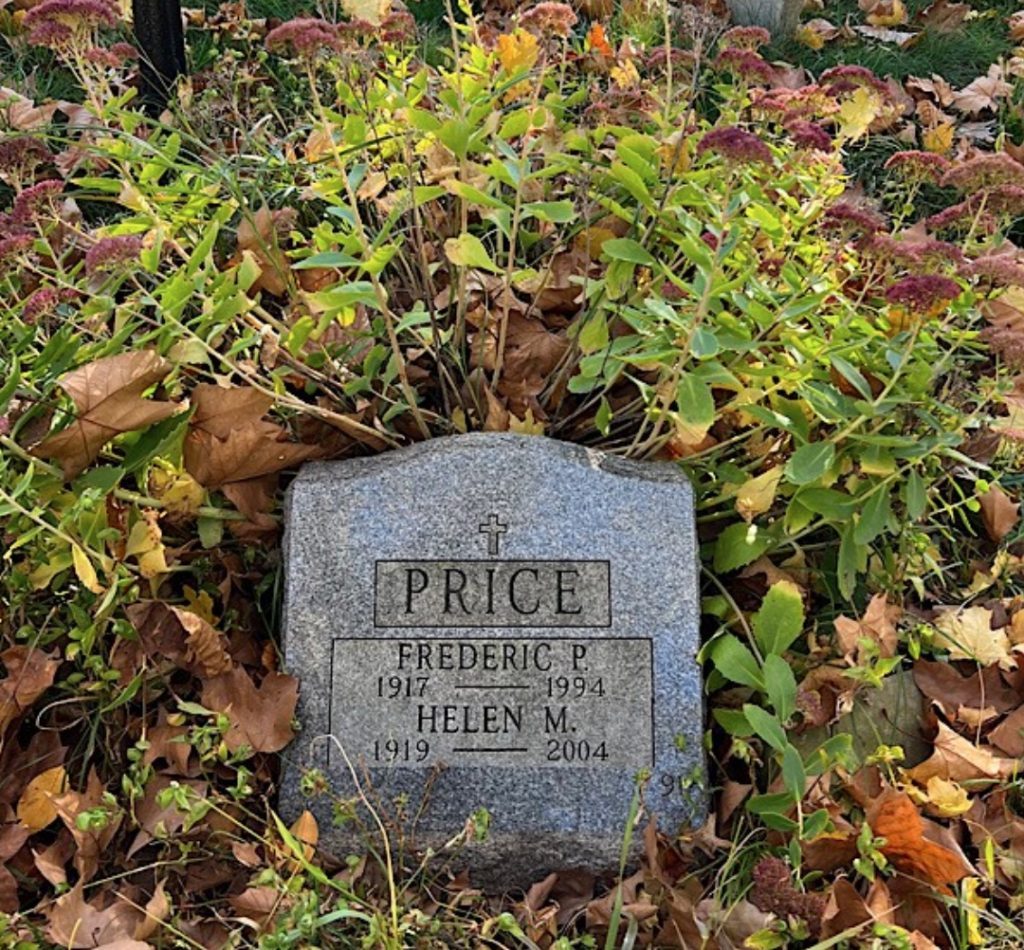
PUGLISI, VICTOR (or VITTORIO) (1919-2000). Private, 106th Infantry, Company E, United States Army. Vittorio Puglisi was born in Brooklyn. Per the 1920 federal census, Victor was living with his parents, Fred and Mary Puglisi, on Nostrand Avenue in Brooklyn. Fred Puglisi was 29, born in Italy, and working as a railroad conductor. Victor’s mother, Mary, was 19 years old and born in Italy as well. They all spoke Italian. The Social Security Claims Index lists Victor’s parents as Frederick Pugliesi and Mary Terino. The 1925 New York State census lists Fred Puglisi as a restaurant worker. A daughter, Florence, 1 year old, had been added to the family.
By the 1930 federal census, the family was living on Midwood Street in Brooklyn. Victor was then 10 years old, his father, Fidelio (Fred), was 40 and working as a counterman at a restaurant, while his mother, Mary, was 29, and sister Florence was 6. According to the 1940 federal census, the family was living on Martense Street in Brooklyn. Victor, at 30 years of age, worked part-time at a garage. His father was unemployed. Younger siblings were Florence, 16, and Jonny, 8.
Victor’s New York National Guard service card and enlistment record shows that he enlisted on May 23, 1940, in Buffalo, New York (while still a resident of Brooklyn) in the 106th Infantry. He had completed two years of high school and was assigned to the field artillery branch of the National Guard. The 106th was inducted into federal service, as a unit of the United States Army, on October 15, 1940. Victor served as a private in Company E of the 106th Infantry until demobilized on October 7, 1945. The 106th Infantry Division was sent to Hawaii on March 20, 1942. After helping to secure the Island of Eniwetok from the Japanese in February 1944, the 106th landed on Saipan on June 20, 1944, five days after the initial invasion. They fought along rough jungle terrain and were able to defeat a last-ditch Banzai charge by Japanese troops. Moving on to fight on Okinawa in March 1945, the 106th Infantry repelled another Banzai charge and then was sent to occupy the Island of Lejima. When the war ended, the division arrived in Japan on September 12, 1945, for occupation duty.
Victor and Rose Ann Squicciarini applied for a marriage license in Brooklyn on June 10, 1946. As per the 1950 federal census, they were living on East 45th Street in Brooklyn. Victor was 30 and working as a window trimmer at a department store, while Rose, 28, worked as a finisher at a perfume factory. Rose’s parents, Ignazio and Anna, also lived with the couple, along with Rose’s brothers Nicholas (see), also a World War II veteran, and Thomas. Everyone was employed.
Puglisi’s last residence was on Staten Island. Victor’s gravestone identifies him as a “WWII veteran,” and he is interred with Rose, who died in October 2016. Rose’s parents and brother Nicholas Squicciarini are interred at Green-Wood next to the Puglisis. Section 129, lot 39044, grave 2.
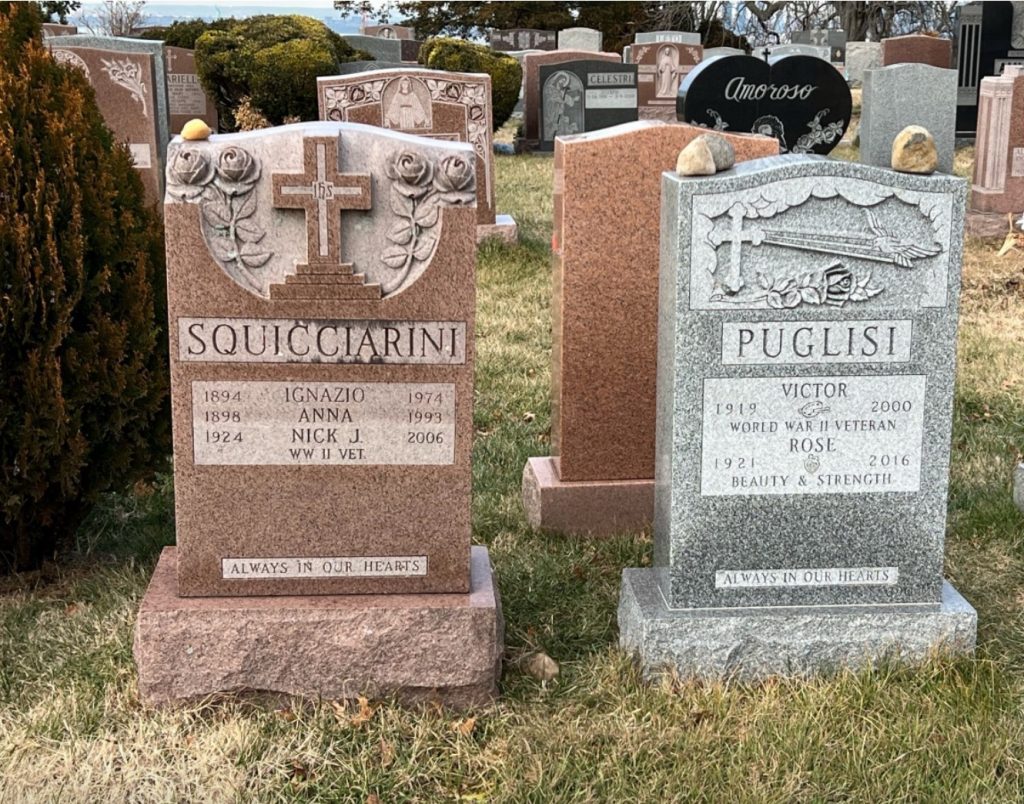
QUINN, JOHN RICHARD (1918-1977). Private, United States Army. John Richard Quinn was born in Jersey City, New Jersey. His parents were John J. Quinn and Kathryn O’Donnell. When he filed his draft registration card on October 16, 1940, he was living at 619 Rogers Avenue in Brooklyn. His mother, Katherine (rather than “Kathryn”), was listed as his contact. His employer was Royalace Paper Works Co., 234 Rogers Avenue, Brooklyn. His race was noted as white, and he had a light complexion, with blue eyes and red hair. His height was listed as 5′ 10″ and he weighed 152 pounds.
According to Veterans Affairs records, Quinn enlisted in the United States Army on October 10, 1946, after World War II was over. However, his gravestone, issued by the Department of Veterans Affairs, identifies him as a World War II veteran, which might be in error. He was a private and was discharged on April 12, 1947.
Quinn and Jeanne F. Roever filed for a marriage license in Brooklyn on June 6, 1942. By 1950, according to the federal census of that year, the couple was living in Brooklyn, and Quinn was working 40 hours per week as a shoe salesman in a retail establishment. His wife was a homemaker.
Quinn died on August 27, 1977, according to Veterans Affairs records, and was interred at Green-Wood on August 30, 1977. Jeanne F. Quinn passed away on November 4, 2013 and is interred at Green-Wood with her husband. Section 206, lot 33384, grave FRC.

REID, JOSEPH ROBERT (1926-1991). Corporal, United States Army. Episcopal Diocese of New York Church records and the New York City birth index show that Joseph Robert Reid was born on May 1, 1926, in the Bronx. His parents were Pearson Andrew Reid and Eva Marie Kunzenmann; they lived at 759 Melrose Avenue in the Bronx. He was baptized on June 24, 1926, at Emmanuel Episcopal Church and his godparents were Anna K. White and Edward White.
According to the 1930 federal census, the Reid family was then living on Ogden Avenue in the Bronx. Joseph’s father, Pearson Reid, was 42, from Scotland, and worked as a carpenter, while his mother was 39. Joseph was three years old and had six siblings: Lyndell, Ronald, Ruth, William, Susan, and Thomas. By 1940, the family had moved to East 73rd Street in Manhattan. Joseph’s mother, Eva, was listed as the head of the family, with her son Ronald, 21, employed as a hospital porter and daughter Ruth, 20, working in a button factory. Both Susan, 16, and Joseph, 13, were in school.
Reid signed his draft card in May 1944 when he had just turned 18. He was living with his mother at 548 East 147th Street, Bronx, and was unemployed. He was described at 5′ 6″ tall, 118 pounds, white with a light complexion, grey eyes, and brown hair. He had a scar on his right wrist.
His World War II army enlistment records show that he had two years of high school and was single with no dependents. He enlisted on August 2, 1944, in New York City and was discharged on October 26, 1946. Reid and Marion L. Connolly obtained a marriage license in the Bronx on July 16, 1949. Military records show that Reid re-enlisted for the Korean War on October 30, 1950, and was discharged on August 8, 1951. His rank was listed as corporal.
According to Reid’s obituary in The Charlotte Observer, he retired from the New York City Sanitation Department and was a member of the American Legion Post of Sag Harbor, New York. At the time of his death, on December 7, 1991, Reid was living at 7401 Idlewild Road in Charlotte, North Carolina. He died at Mercy Hospital in Charlotte and was survived by his wife, Marion, his son, Joseph Reid, daughters Allison Pharaoh and Lyndell Gregorio, and siblings Ronald Reid and Susan Tillotson. He had two grandchildren. Section 84, lot 5889, grave FLC.
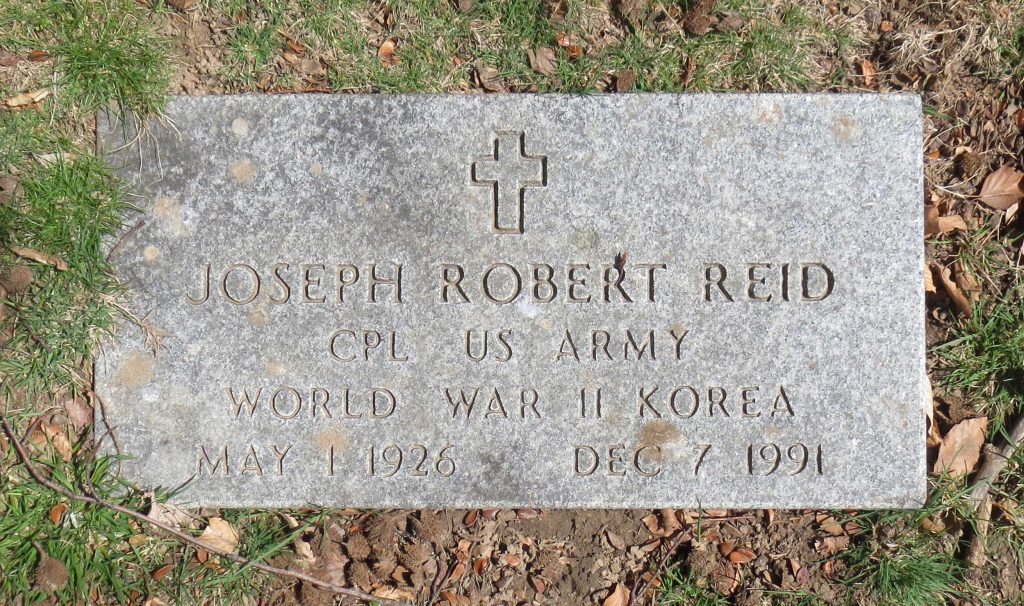
REINERTSEN, ARNOLD CARL (1921-1991). Corporal (T-5), 116th Antiaircraft Artillery Gun Battalion, United States Army. Reinertsen was born in Brooklyn. Records from the 1925 New York State census report that he resided at 4619 5th Avenue with his parents, Nils Gabriel and Anna Marie, an older brother, Reinert, his uncle and cousin, Jack Brown and Jus Abrams, a lodger, Harry Simon, and a roomer, Hilmer Rykipnes. Both parents were born in Norway. Reinertsen’s first name and middle initial are recorded as Carl A. The 1930 federal census states that his family resided at 738 59th Street and his father was a yacht steward. There were no census listings for his uncle, cousin, the lodger, and the roomer. As in the 1925 census, his first name is recorded as Carl. However, he printed and signed his World War II draft card as Arnold Carl Reinertsen. His residence was 449 61st Street, and his mother, residing at that address, was listed as the contact person. He worked as a clerk for The New York Times, located at 1475 Broadway in Manhattan. The registrar’s report, dated February 15, 1942, notes that he was 6′ tall, weighed 188 pounds, had hazel eyes and blond hair, a light complexion, with a scar behind his right ear.
Reinertsen’s World War II Army enlistment record states that he was single, had completed three years of high school, and was skilled in general woodworking. His enlistment date was March 6, 1943. The transcription erroneously describes him as 7 ‘3″ tall with a weight of 111 pounds. As per his daughter, he served with the 116th Antiaircraft Artillery (AAA), was stationed in France, Germany and Belgium, and engaged in battles in the Ardennes (Battle of the Bulge), Central Europe, Normandy, Northern France, and the Rhineland. According to the Battle of the Bulge Association, the 116th AAA Gun Battalion engaged in various heroic activities from June 6, 1944, to December 31, 1944. Since Reinertsen served in this battalion, he may have engaged in the following assignments that it received: June 6, 1944 – defend beach installations on Utah Beach, as a part of the Normandy invasion on D-Day; July 12 to August 4, 1944 – ordered to abandon its antiaircraft mission and assume a tank destroyer role in the Chaumont area; August 6, 1944 – deployed to Mayenne to set up an antiaircraft defense, accomplished its goal, received an emergency request from the 16th Infantry Division to engage in a field artillery mission against the enemy, and saved the 16th Infantry from annihilation; August 25, 1944 – ordered to leave the Mayenne area, arrived in the Paris area two days later, and set up AAA defenses in Paris and at the bridges over the Seine River; September 8, 1944 –moved to Sedan, France, set up AAA defense on the bridges over the Meuse River, but did not engage in any action; September 29 to October 12, 1944 –called upon to protect the locks of the Albert Canal and bridges over the Maas River in Maastrict, Holland; October 12, 1944 –ordered to protect the VII Corps Artillery in Aachen, Germany, and was the first gun battalion to fire on German soil; and December 16, 1944 –continued to support the VII Corps Artillery between Stolberg, Germany and the front lines near the Roer (or Rur) River. Throughout its deployment, the 116th is credited with destroying 32 enemy aircraft.
Reinertsen’s daughter relates that although he was engaged in combat, his letters “…somehow always focused on the more uplifting and positive stories—of staying with a poor family in France and helping their daughter get a piano, etc. In his letters he tried to only convey positive stories to his mother, for example…telling her about the British family in the United Kingdom that took them in for Thanksgiving even though they didn’t have much.” In a letter to his mother, dated December 22, 1943, Reinertsen wrote:
Dear Mom,
Just another letter to let you know I’m still safe and sound, and to ease any worries you might have. The weather is a little snappy, but you know Mom that’s the way we like it around Christmas. Speaking of Christmas, it’s only a few days off. We expect to have some sort of a party, you know Mom, to sort of cheer the boys up and bring them closer to home. Quite a few of my buddies have been invited to some of the homes about here for dinner and such. The people are really trying to be nice to us.
I received a letter from you and Marion yesterday. It sure was swell to hear from home. It sure was swell to hear that Rolf is still working hard and feeling so well. I was surprised to find that Ray is still home. He must know what he’s going to do by now. Maybe after Christmas he’ll do what’s right. Well Mom the lights are going out soon, and there’s no more room so—good night – till tomorrow.
Your Loving Son
Carl
As per his enlisted records and report of separation, Reinertsen was honorably discharged on October 29, 1945. Reinersten’s daughter noted that her father achieved the rank of corporal (T-5), and that he was awarded the European-African-Middle Eastern Service Medal with a Bronze Arrowhead and the Good Conduct Medal. She also shared that although he left Alexander Hamilton High School after the eleventh grade, he earned his high school equivalency after the war. Her father’s primary place of employment after the war was Addressograph Multigraph Corporation in New York, where he worked for 25 to 30 years. Reinertsen married Ida Cecilia Agoglia in 1953 and the couple had two sons and two daughters. According to his daughter, “He was a good and loving father and son.” According to the California death index, he was residing in San Dimas, a suburb of Los Angeles County, at the time of his death. Section 41, lot 36080, grave B.
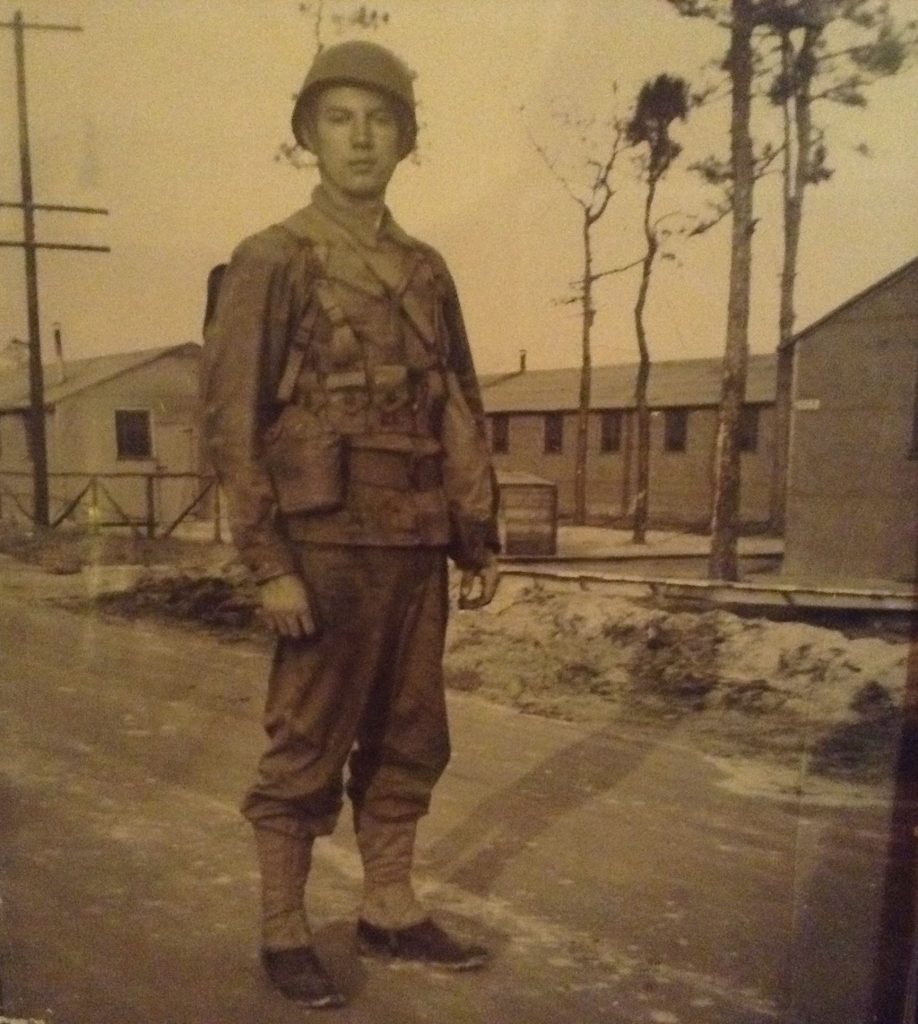

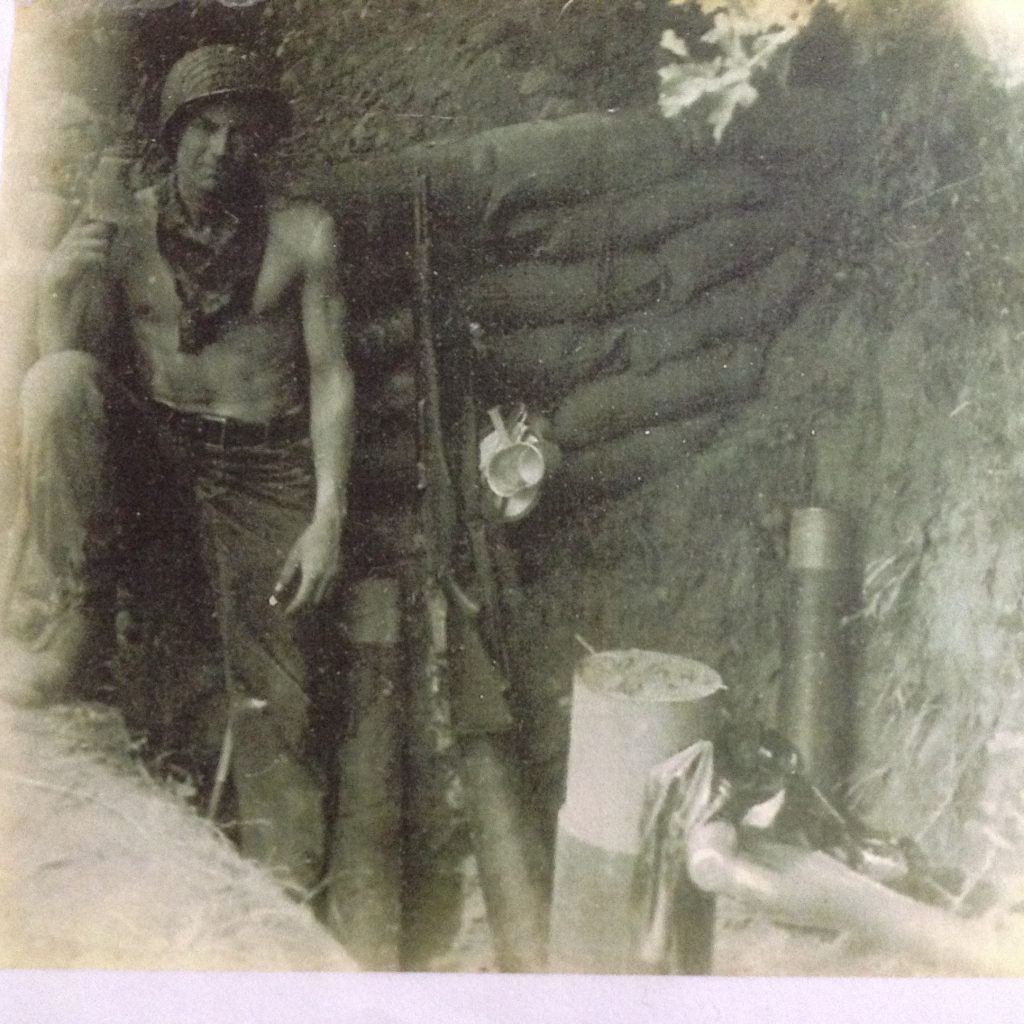
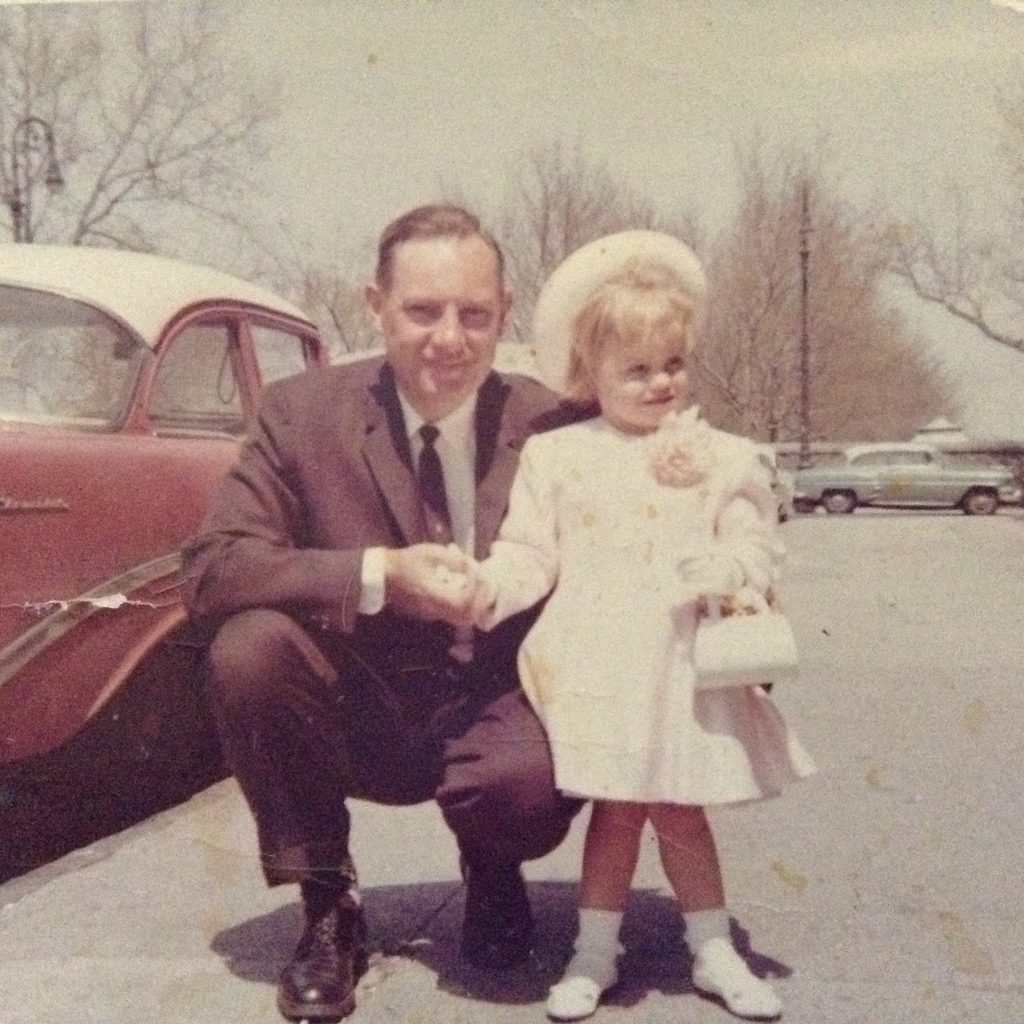
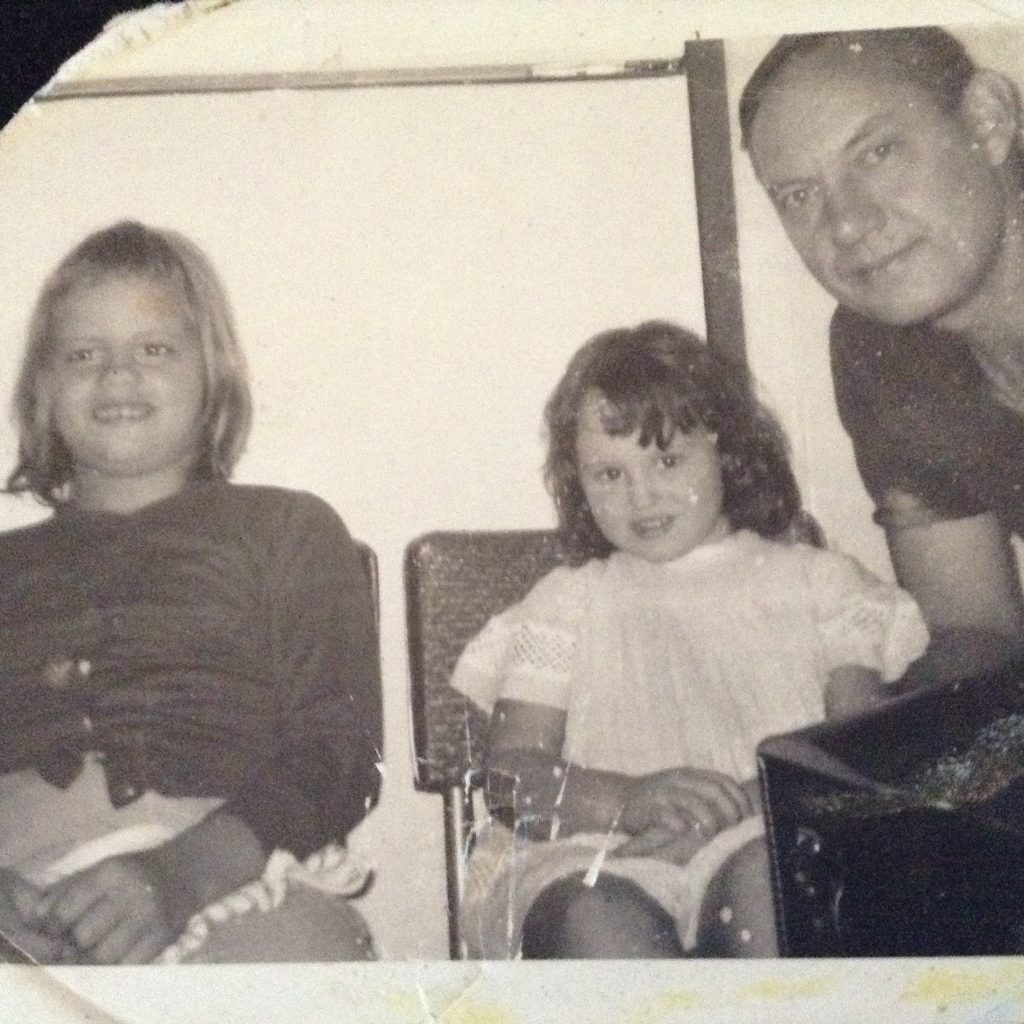
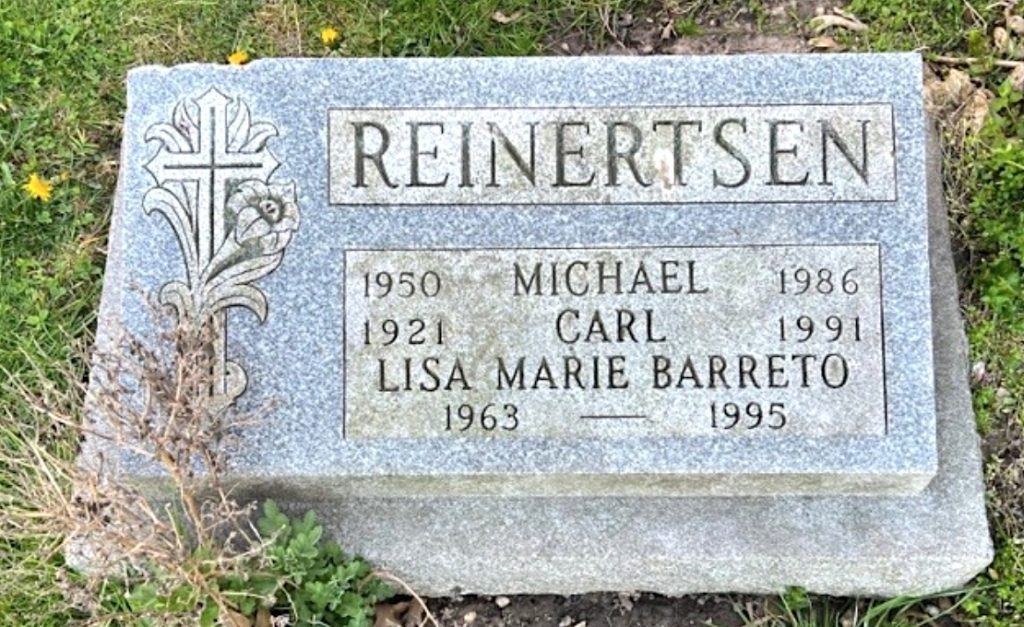
REZK, MITCHELL G. (1913-1973). Staff sergeant, 773rd MP Battalion, 4900th Service Command Unit, United States Army. Mitchell was born in Brooklyn in 1913 to George and Amelia (Abourizk) Rezk. According to the 1915 New York State census, the family also included his father’s brother, Phillip Rezk. All three adults had immigrated from Syria in 1901. His father was employed as a tailor. Phillip’s occupation is listed as “Embroidery.” In 1916, Mitchell’s brother Victor was born. A second brother, George Jr., may have been born in 1917 or 1918. Another brother, Albert, born in 1919, only survived for two days. The 1925 New York State census reported the family living on Court Street in Brooklyn. Phillip was no longer living with the family, and George Sr. was reported to be in the “Cleaner and Drier” business.
In 1932, a new business venture on Court Street—Rezk’s Auto Driving School—was announced in the Times Union newspaper. Nineteen-year-old Mitchell was the proprietor. About one year later, an investigative article in the New York Daily News mentioned Rezk’s Auto Driving School among those offering to obtain license plates for a fee. (At the time, no fee was charged for in-person applications at the State office building across the street.) “Saving steps for saps” was the article’s catchy lede.
According to the 1940 federal census, Mitchell and brother Victor were living at home with their parents. Mitchell was working as a bookkeeper and Victor as a clerk. Mitchell registered for the draft in October, 1940, at the age of 27. He was described on his registration card as 5′ 7″ tall, weighing 130 pounds, with brown eyes, black hair, and a light brown complexion. His employer was Sunnydale Farms, a dairy.
In May 1942, Rezk enlisted in Company C, 14th Regiment, of the New York National Guard, the state militia which had been nationalized with the advent of World War II. (The 14th Regiment Armory, its former home base, still stands, less than a mile from Green-Wood.) A few months later, Mitchell was inducted into the United States Army on August 24. His home address was 632 84th Street in Brooklyn.
Rezk served as a military police sergeant in the 773rd MP (Military Police) Battalion, 4900th Service Command Unit, at Fort MacArthur, in California. He achieved the rank of technician 3rd grade (tec 3), equivalent to a staff sergeant, a non-commissioned officer. The technician rank was created to recognize enlisted soldiers with special, non-combat skills. In his role as staff sergeant, Mitchell supervised clerical work and prepared reports for the outpatient and clinical departments of Fort MacArthur’s medical facility. On February 2, 1946, he was honorably discharged, having received the Good Conduct, American Campaign, and World War II Victory medals.
In June 1944, Mitchell and Alice Lucente obtained a marriage license in Brooklyn. In 1948, their son George was born. By the time of the 1950 federal census, the Rezk family was living on Fort Hamilton Parkway and consisted of Mitchell, Alice, and George, along with Mitchell’s parents and his brother Victor. Mitchell was working for an ice cream company—he had stayed in the dairy business. Victor’s occupation was listed as a clerk in a soda company—a happy pairing, perhaps, in the mind of young George. Mitchell and Alice also raised a daughter, Roberta, born in 1951. Along with ice cream sodas, George and Roberta may have enjoyed the thrills of the famous Coney Island Cyclone, partly owned and managed by their uncle Victor. He died in Brooklyn. Section R, lot 42537, grave N1.
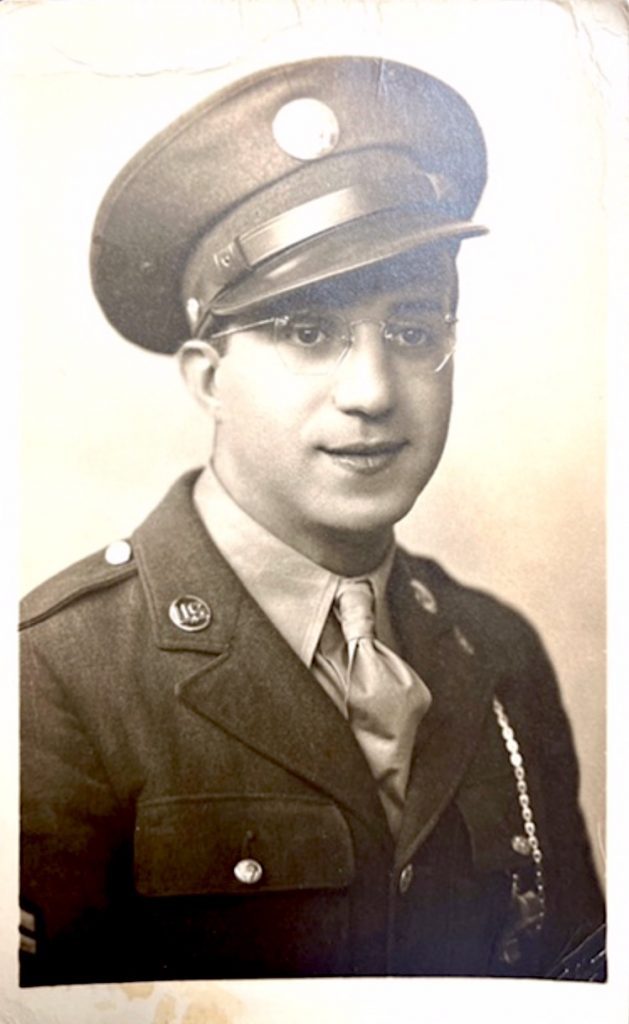
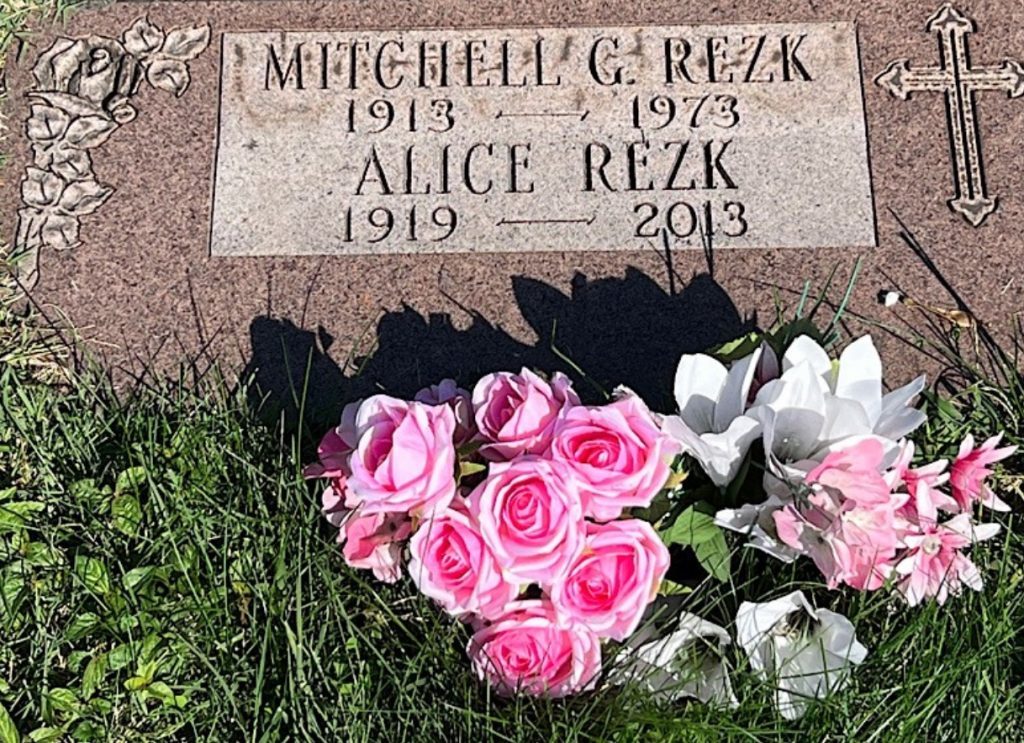
RICCIARDI, ANTHONY (or ANTONIO) (1915-1974). Corporal, 158th Infantry Regiment, United States Army. According to the New York City birth index, Ricciardi was born in Brooklyn. Records from the 1920 federal census report that he resided at 418 Lake Street with his parents, Joseph and Concetta. His father immigrated from Italy in 1897, and his mother, also from Italy, immigrated in 1900. His father worked as a shoemaker in a factory. His parents had eight children: Amadeo, Frank, Angelo, Gerard, Carmine, Rocco, Anthony, and Philomena. The 1930 census notes that the family still resided at the Lake Street address. Ricciardi’s father had passed away and his mother was head of household with five children still living with her. His oldest brother, Amadeo, married with a daughter, is documented as the head of a separate household at the same address. Ricciardi’s first name is recorded as Antonio. The 1940 census notes that the twenty-four-year-old Ricciardi was a shoemaker, and still resided on Lake Street with his sister, Philomena, and two brothers. His mother had passed away. The census documents his two brothers, Amadeo and Frank, as separate heads of household.
Ricciardi’s World War II draft card records his residence on Lake Street, his age as twenty-four, and his brother, Frank, as the contact person. He worked at Lippert Brothers Company at 1 Main Street, Brooklyn. The registrar’s report, dated October 16, 1940, notes that he was 5′ 2″ tall, weighed 125 pounds, had gray eyes and brown hair, and a light complexion. The Department of Veterans Affairs BIRLS (Beneficiary Identification and Records Locator Subsystem) Death File documents his enlistment date as September 5, 1941. As per his son, he served in the 158th Infantry Regiment, engaged in action in the Philippines on the Bicol Peninsula in southern Luzon and Lingayen Gulf, and “was very proud to have been a Bushmaster.” Those serving in the 158th were known as “Bushmasters.” The 158th Infantry Regiment has a long history. It was formed as the First Arizona Volunteer Infantry and engaged in the Indian Wars and the Mexican Expedition. On August 5, 1917, the 158th was drafted into federal service. It was deployed during World War I, World War II, and the war in Afghanistan.
On December 7, 1941, three months after Ricciardi’s enlistment, Pearl Harbor was attacked. The 158th Regiment soon was deployed to Panama to secure the canal and train in jungle warfare. According to the article, “Bushmasters Always Stand Tall,” on the Department of Emergency and Military Affairs website, by Specialist Wesley Parrell, “Arriving in Panama on January 2, 1942, the soldiers of the 158th began an intense training program in the jungles, which were better suited for insects and reptiles than they were for men. For weeks on end, the day’s long rains soaked the soldiers as they hacked through the thick vegetation with machetes, callusing their hands. Frequent dealings with the deadly snakes of the jungle, led to the unit adopting the name “Bushmasters” after the venomous pit vipers found in Central America.” The bushmaster snake became the distinguishing insignia on the shoulder patch of the 158th Regiment. The fighting skills of the “Bushmasters” were so renowned that General Douglas MacArthur personally selected and requested they be sent to his command in the Southwest Pacific Theatre. MacArthur lauded the Bushmasters: “No greater fighting combat team has ever deployed for battle.”
According to the Fort Tuthill Military Museum, the 158th Regiment engaged in major campaigns from December 1944 through May 1945. Since Ricciardi served in this regiment from September 1941 to October 1945, he likely engaged in the following assignments: December 1944 – Arawe, New Britain Island; May 1944 – Wakde Island-Sarmi New Guineas; July 1944 – amphibious assault Noemfoor Island, New Guinea; January 1945 – amphibious assault Lingayan in the Philippine Islands; March 1945 – Batangas Province, Southern Luzon, Philippine Islands; April 1945 – amphibious assaults at Legaspi Southern Luzon, Philippine Islands and Bacon, Sorsogen Province Philippine Islands; May 1945 – Mt. Isarog Bicol Peninsula, Philippine Islands.
The 158th Infantry Regiment engaged in combat zones longer than any National Guard unit in all wars, was the first army unit trained in jungle warfare, was the regiment that traveled furthest in their 5 ½ years of active duty, more than any Army unit in any war, and was the first army unit to be sent overseas after Pearl Harbor.
In 1987, Bushmasters: America’s Jungle of World War II, by Anthony Arthur was published. This book not only details the history of the 158th Infantry Regiment, but also focuses on the personalities of some of the officers and enlisted men. Ricciardi is memorialized in this book in the recounting of an event involving the twenty-seven-year-old Ricciardi who took responsibility for safeguarding a seventeen-year-old fellow soldier, Jimmy Boyer, on the beach at Arawe.
As per the Department of Veterans Affairs BIRLS Death File, Ricciardi was discharged on October 1, 1945. Little is known of his life after the war. His last residence was in Brooklyn. According to the obituary in the New York Daily News, dated April 9, 1974, he was survived by his wife, Louise, and his two children, Anita Murphy and Anthony Jr. Section 137, lot 39369, grave 2.


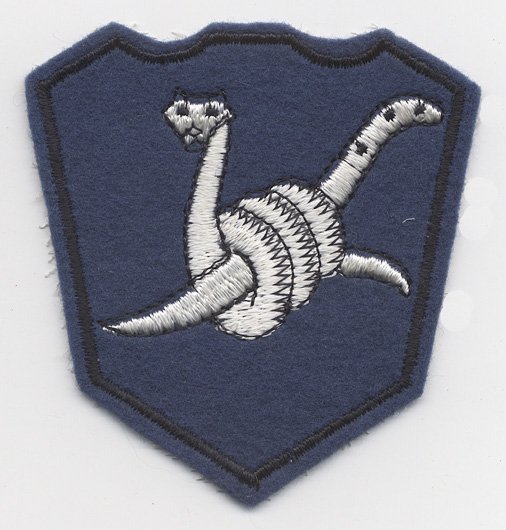
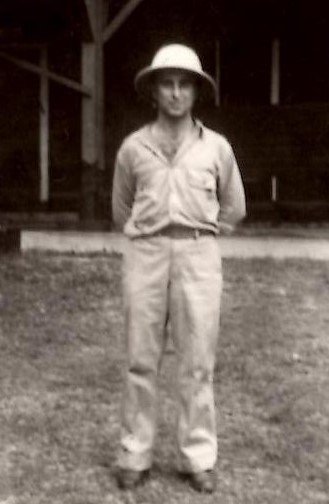
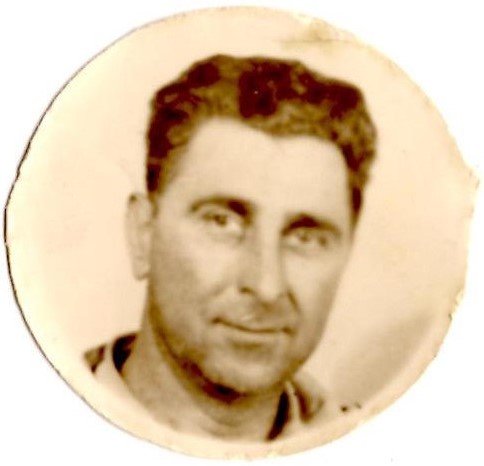
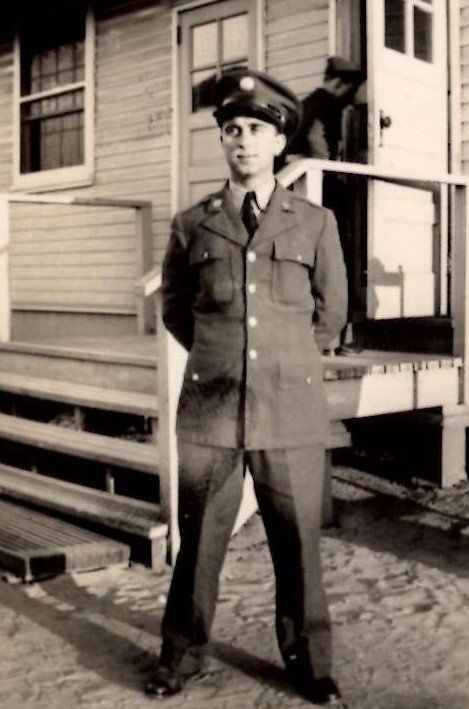
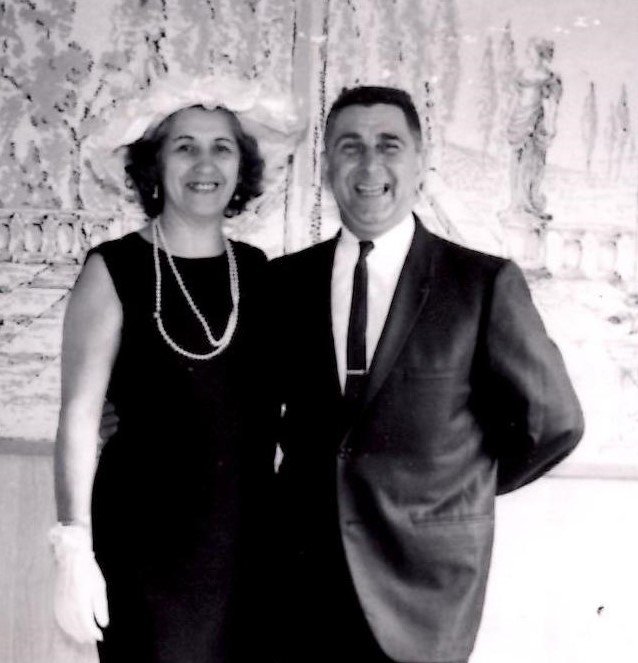

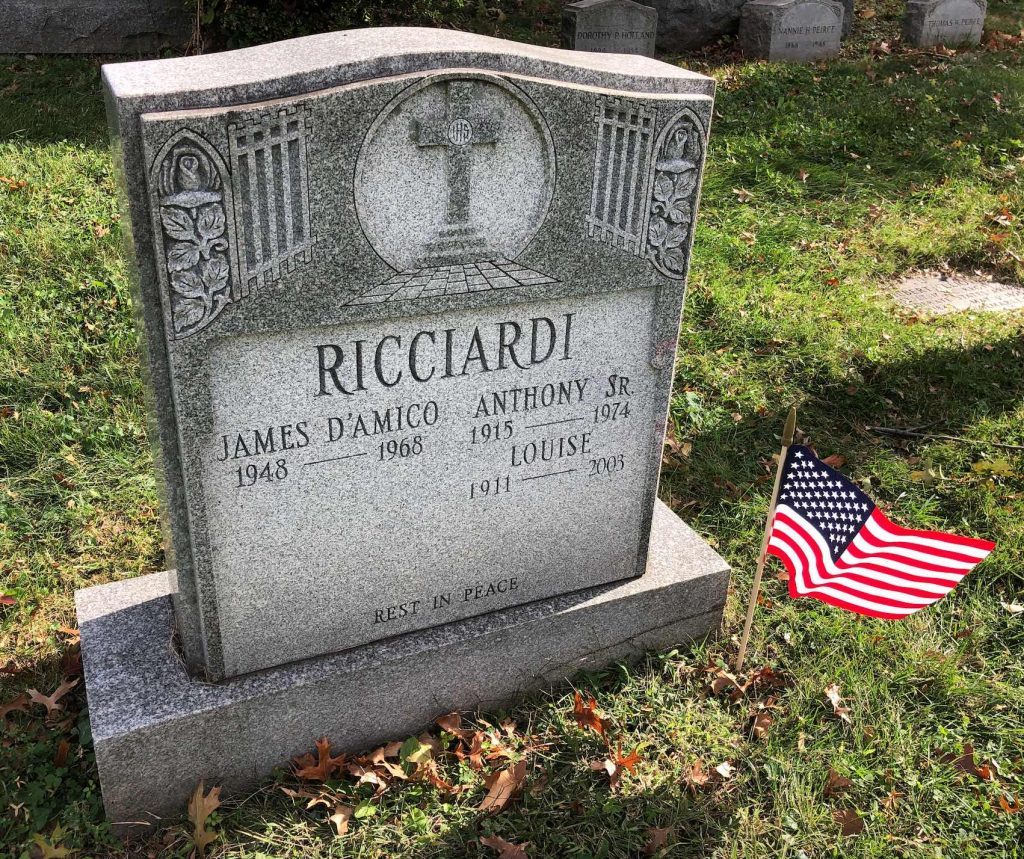
RIGNOLA, CARMINE (1923-2014). Private first class, 35th Tank Battalion, 4th Armored Division, Headquarters Company, United States Army. According to his World War II draft registration card, Rignola was born in Mineola, New York. His parents, Salvatore and Teresa (Tessie), were born in Italy. As per his father’s family tree and fact sheet on Ancestry.com, Salvatore was born in Carbora, Italy. He immigrated from Naples to New York in 1892 aboard the Olessia. He declared his intention to become a United States citizen on April 8, 1910 and submitted naturalization papers on March 19, 1913 in New York. Carmine’s mother was born in Egidio, Italy and immigrated to the United States before the age of 10. Salvatore and Teresa were married on May 14, 1905, in Brooklyn, and the couple had eleven children. The siblings, in birth order, are: Lucy, Domenica (Minnie), Dominick (see), Botlomia (Bertha), Florence, Thomas, Vincent, Carmine (Harry), Albert, Gloria, and Theresa.
As per the 1910 federal census, his parents, Salvatore (misspelled Sahatore) and Teresa lived at 117 3rd Street in Brooklyn with their three children: Lucy, Minnie and Dominick. According to the 1920 federal census, the family had grown to six children with the births of Florence, Thomas and Vincent. The Rignolas resided in the family-owned, but mortgaged, home at 251 6th Avenue and Salvatore was a stevedore at the New York Navy Yard. By the 1930 federal census, the Rignola family had moved to 1923 8th Avenue and had nine children living at home, ranging in ages from under one to seventeen. Salvatore was a self-employed plumber. Carmine’s mother passed away on May 31, 1931 at the age of forty-three. According to the 1940 federal census, the seventeen-year-old Carmine was living with his father and five siblings in their 8th Avenue home.
According to Rignola’s World War II draft registration card, he registered on June 30, 1942 at the age of eighteen. He is described as 5′ 5″ tall and 131 pounds with black hair, brown eyes and dark complexion. He was employed by Virginia Dare Extract Company at Bush Terminal in Brooklyn. The Virginia Dare Company has been in business for over ninety years with headquarters on Third Avenue in Brooklyn, a production factory in Carteret, New Jersey, and facilities in Shanghai, Paris, and Madagascar.
Carmine’s World War II enlistment record details that he was single, attended three years of high school and worked in the “manufacture of electrical machinery and accessories.” His enlistment date was February 10, 1943. On November 14, 1947, Carmine received his honorable discharge from the Army. Inscribed on it were his name, rank (private first class), unit (Headquarters Company 35th Tank Battalion 4th Armored Division), and date of discharge (January 9, 1946). Given his enlistment and discharge dates as well further information from his daughter that he drove a tank and served in Europe, he may have taken part in the following events as detailed in “4th Armored Division Campaigns during World War II”:
The 4th Armored Division landed at Utah Beach on July 13, 1944, a month after the D-Day invasion of the French Normandy coast. Within weeks, the “Breakthrough” division was sweeping across France. During the Battle of the Bulge, the unit provided badly needed support to the encircled US forces in Bastogne, Belgium. In late March 1945, the 4th crossed the Rhine River into central Germany and, by war’s end, had reached the Czech border.
On April 4, 1945, the “Breakthrough” division overran Ohrdruf, a subcamp of the Buchenwald concentration camp and the first Nazi camp liberated by US troops…The 4th Armored Division’s discovery of the Ohrdruf camp opened the eyes of many US soldiers to the horrors perpetrated by the Nazis during the Holocaust.
The 4th Armored Division was recognized as a liberating unit by the US Army’s Center of Military History and the United States Holocaust Museum in 1985.
The commanding general of the 4th Armored Division refused to sanction an official nickname for the 4th, believing that the division’s accomplishments on the battlefield made one unnecessary. “Breakthrough” was occasionally used, apparently to highlight the division’s prominent role in the breakout from the Normandy beachhead and liberation of France in 1944.
In his article “Fighting Men: The 4th Armored Division,” Mack Dean details:
The 4th Armored was amongst the busiest of the US Army’s armored divisions…In July, the division transitioned to France over the Utah beach and the first elements tasted combat on July 17. From that point on, the 4th formed as a mechanized spearhead, heading Patton’s drive through the French countryside towards Germany. The 4th Division’s tanks and half tracks blew through steadily weaker defenses until a lack of fuel, longer supply lines, and a rallying foe called for a halt. Later, when the German army attacked US forces in the Ardennes region of Belgium, the 4th Armored was well to the south, in the Saar region of France and Germany. On December 18th, 1944, the 4th attacked north to try to reach the 101st Airborne Division trapped in the town of Bastogne. It had broken contact and covered 150 miles in 19 hours. On December 26th, the 4th Division finally entered Bastogne, providing the 101st with a firm supply line that enabled the scrappy airborne troops to take the fight to the enemy.
From the Battle of the Bulge, the war was practically downhill for the vaunted 4th Armored. After crossing the Rhine in late March of 1945, town after town fell to the division in a drive that ended on VE Day in Czechoslovakia.
For his service, Carmine received numerous medals, including: European-African-Middle Eastern Campaign, Army of Occupation Medal, American Campaign, and Army of Occupation of Germany.
Carmine was not the only Rignola brother to enlist in the military during World War II. Three of his brothers also had the honor of serving their country. According to his brother Albert’s World War II enlistment records, Albert enlisted on September 9, 1943 as a private. His discharge date was February 27, 1946, as per the Department of Veteran’s Affairs BIRLS (Beneficiary Identification and Records Locator Subsystem) Death File. As detailed in his Department of Veteran’s Affair BIRLS Death File, his older brother, Vincent (see), enlisted on August 22, 1942 and was discharged on December 14, 1945. His brother, Thomas, gave the ultimate sacrifice. According to the January 31, 1945 issue of the Brooklyn Eagle, “Sgt. Thomas Rignola, 26, of 1923 8th Avenue was killed in action in Belgium on Dec. 31, his father, Salvatore, has been informed by the War Department. He had been overseas since November.”
After the war, Carmine and Rita Caputo applied for a marriage license on July 24, 1948 in Brooklyn, as per the New York Marriage License Indexes. Their daughter states that they married on August 7, 1948. According to the 1950 federal census, the couple and their first-born daughter were living with Carmine’s in-laws in Brooklyn. Carmine and Rita were married for sixty-four years and had three children – Diane, Salvatore, and Elizabeth.
Rignola’s primary employment was with the New York City Transit Authority Bus and Trolley. The United States Public Records Index records that Carmine lived at 167 Amber Street in Staten Island in 1986. A subsequent Public Record from 1992, records him living at 1149 36th Street in Brooklyn.
Carmine received a letter, dated May 8, 2001, from the Consulat General de France. In it, Richard Duque wrote:
I would like to thank you for the part you played in the battles for the Liberation of France during World War II. I am pleased to send you the certificate of recognition issued by the French Secretary of State for Veterans Affairs, Jean-Pierre Masseret, and the Chairman of the Basse-Normandie Region, Rene Garrec.
In describing her father, Carmine’s daughter Diane shares about her father, who also was known as Harry:
Harry’s grandchildren (Jacqueline and Stephen) were the apple of his eye. For enjoyment, Harry played cards with his brothers and brothers-in-law, as well as hunting, fishing, and searching for fresh mushrooms. He took great pleasure in cooking his precious mushrooms, which were a family favorite. In his later years, he kept himself busy attending flea markets. Harry lived a long, productive and happy life.
Section 126, lot 44600, grave 3.

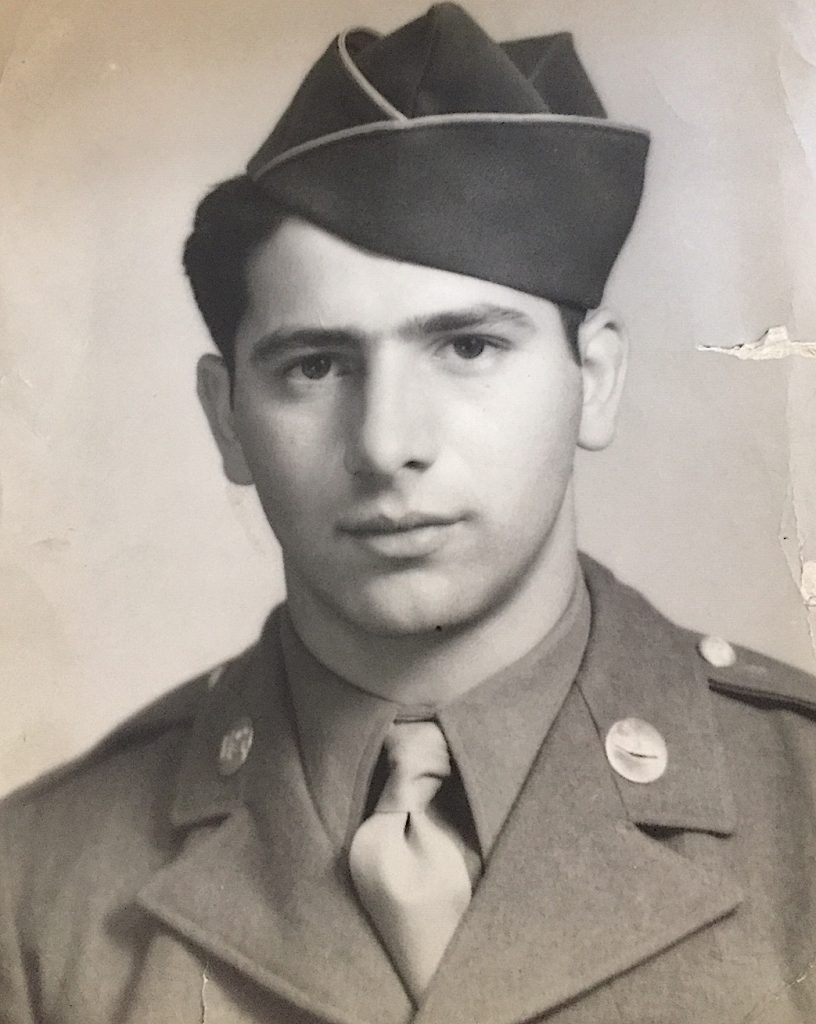

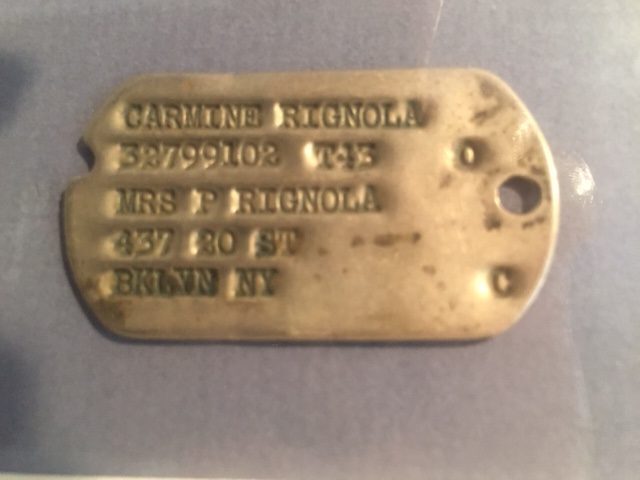
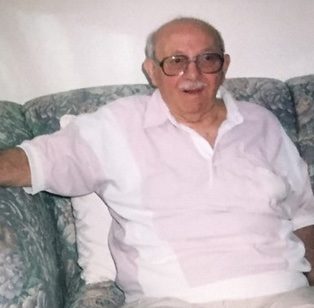

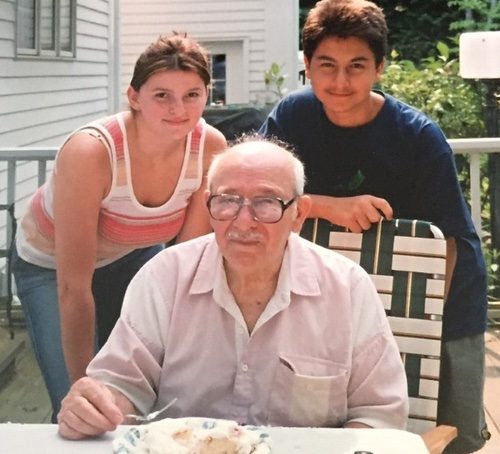
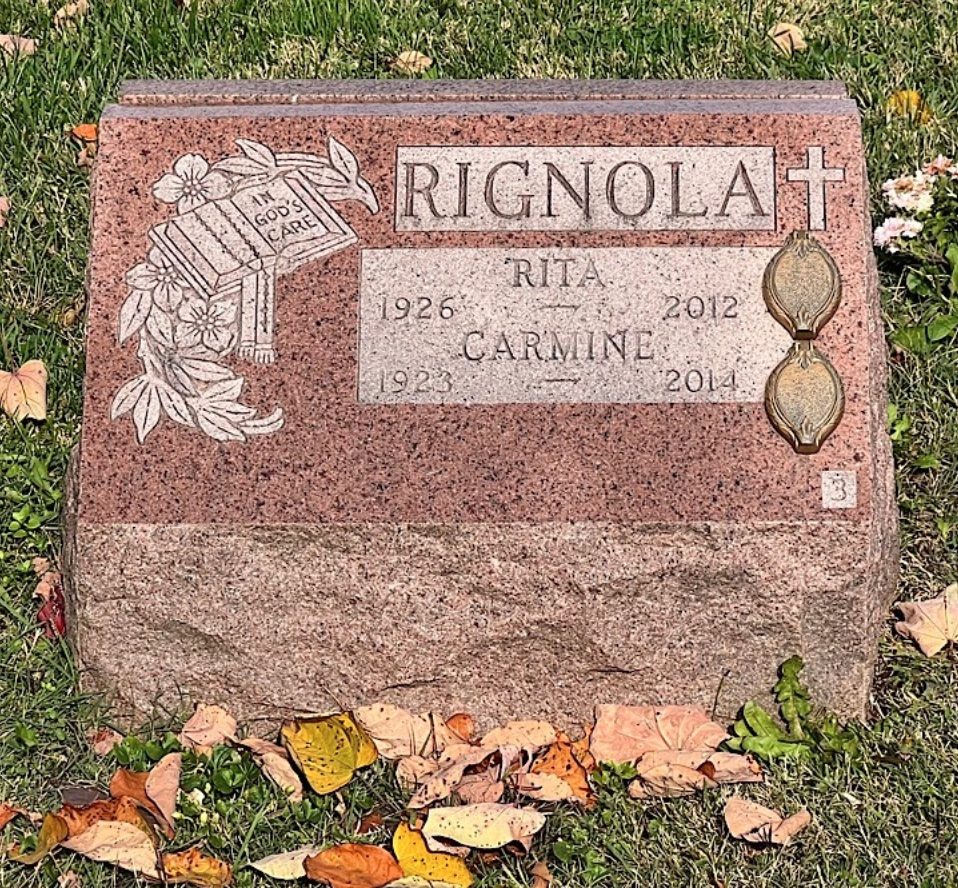
RIGNOLA, DOMINICK (1912-1982). Rank and service branch unknown. Dominick was born in New York into a large Italian immigrant family. His father Salvatore was born in Carbora, Italy, and came to the United States in 1892 aboard the ship Olessia; his mother Tessie Rignola was born in Egidio, Italy and arrived in the United States in 1895. Salvatore and Tessie married in 1905 in Brooklyn when they were about twenty-four and eighteen years old, respectively. They had eleven children: Lucy, Domenica, Dominick, Bertha, Florence, Thomas, Vincent, Carmine (Harry), Albert, Gloria and Theresa.
According to the 1915 state census, the Rignola family lived at 117 Third Street in Brooklyn. Salvatore Rignola worked as a porter and his wife Theresa did housework. Dominick was three years old and had two older sisters and a younger one. Per the 1925 New York State census, the Rignola family had moved to 284 1st Street in Brooklyn. Salvatore now worked as a bootblack and Dominick, who was twelve years old, attended school and was one of seven children.
By the time of the 1930 federal census, the family was living at 1923 8th Avenue in Brooklyn. Salvatore Rignola owned the family home, worked as a plumber, and both him and his wife Tessie were naturalized citizens. Now nine of their eleven children lived in the home with Dominick, aged seventeen and the eldest, working as a runner on Wall Street. Sadly, Tessie would pass away only a year later, at the age of forty-three.
Records show that in the summer of 1936, Dominick applied for a marriage license at the age of twenty-three and married Filomena Dilarante on July 5. Per the 1940 federal census, Dominick Regnola, as written there, and his wife, listed as Florence, rented their home at 437 20th Street in Brooklyn, just a stone’s throw away from Dominick’s father and siblings, and just across the street from Green-Wood Cemetery. Dominick worked forty hours a week with a yearly salary of $1,000 as a varnisher at a paint factory. It is possible that he worked with his younger brother Thomas who, as indicated by the records, had the same occupation. These records also tell us that Dominick had completed four years of high school and he and his wife had three children: twin daughters Mary and Theresa, aged six and a half, and a son named Salvatore, aged two.
In the fall of 1940, World War II draft records tell us that Dominick registered for service. The document describes Dominick as 5′ 4″ in height, one hundred and thirty-five pounds, with a dark complexion, brown eyes, and black hair. His wife Filomena is listed as his next of kin and Sapolin Company, at 183 Sorrain Street in Brooklyn, is listed as his employer.
While precise details of Dominick’s time in service are unknown, family records tell us that Dominick came from a family of men who served during World War II. All four of his younger brothers, Thomas, Vincent (see), Carmine (see), and Albert, served during the war. Sadly, Thomas did not return home; the January 31, 1945 issue of the Brooklyn Eagle reported, “Sgt. Thomas Rignola, 26, of 1923 8th Avenue was killed in action in Belgium on Dec. 31, his father, Salvatore, has been informed by the War Department. He had been overseas since November.” Vincent served in New Guinea and Philippines as part of the Asia-Pacific War campaign against Japanese offensives; Harry (Carmine’s nickname) was a private, first class in the 35th Tank Battalion, 4th Armored Division, served in Europe and received several medals for his service; and records show that Albert served between 1943 and 1946.
Per the 1950 census, Dominick lived at 454 20th Street and worked forty hours a week as a mechanic machinist. He and his wife now had four children: Salvatore , Theresa, Mary and Anne (aged four). According to public records, the last known address for Dominick was 437 20th Street in Brooklyn which was his first home address after marriage and his address when he registered for the draft. Section 134, lot 37830, grave 619.

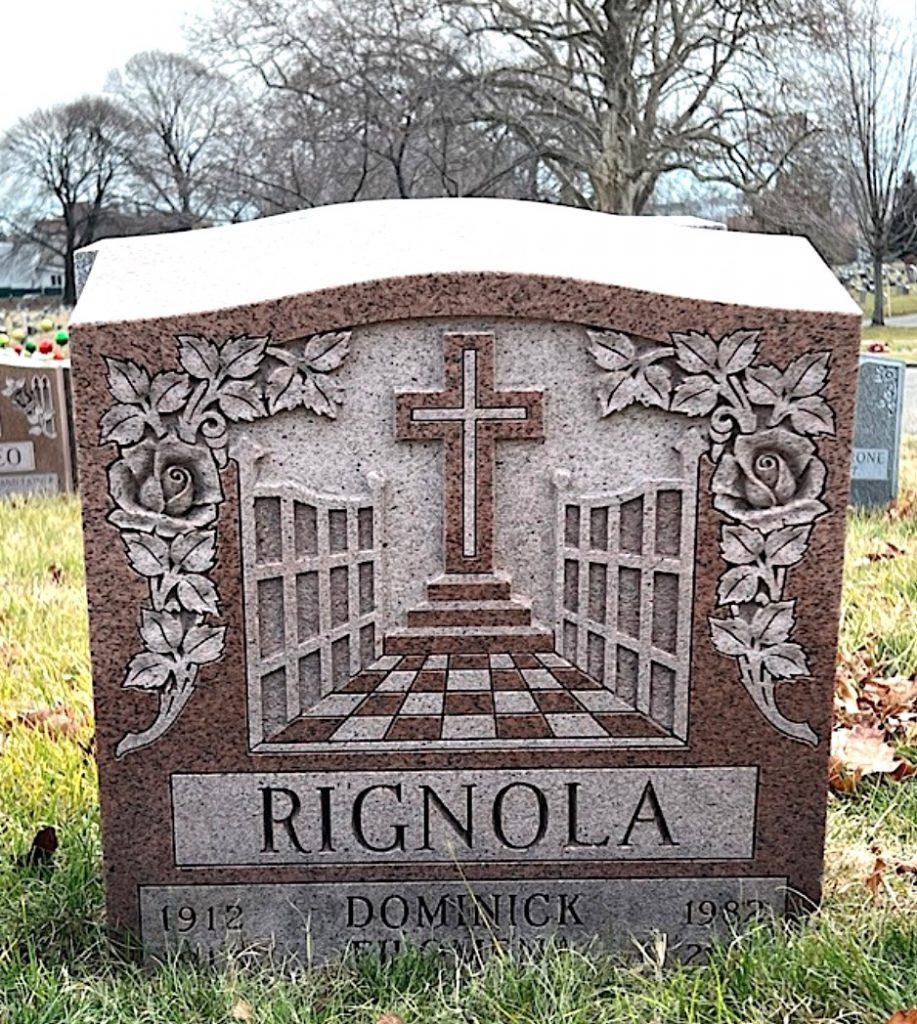
RIGNOLA, VINCENT J. (1921-1987). Private, United States Army. Vincent was born in Mineola, Nassau County, New York, into a large Italian immigrant family. His father, Salvatore, was born in Carbora, Italy, and came to the United States in 1892 aboard the ship Olessia; his mother Tessie Rignola was born in Egidio, Italy, and arrived in the United States in 1895. They were married in 1905 in Brooklyn; Salvatore and Tessie were about twenty-four and eighteen years old, respectively, at that time. The couple had eleven children: Lucy, Domenica, Dominick (see), Bertha, Florence, Thomas, Vincent, Carmine (or Harry) (see), Albert, Gloria and Theresa.
At the time of the 1925 New York State census, the Rignola family lived at 284 1st Street in Brooklyn. Salvatore worked as a bootblack and his wife Tessie did housework; Vincent, listed here under his middle name James, was four years old.
By the 1930 federal census, the Rignola family was living at 1923 8th Avenue in Brooklyn. Salvatore Rignola owned the family home, valued at $4000, and worked as a plumber. Both parents were naturalized citizens and the oldest two children no longer lived with them. Vincent was nine years of age at this time and attended school at P.S. 154 on 11th Avenue. Sadly, only about a year after this census was recorded, his mother Tessie passed away at the age of forty-three.
Per the 1940 census, the family continued to live at the same house. Sal Regnola, as his name was written here, worked as a fireman. Vincent, who was now nineteen years old and had completed the first year of high school, worked as a laborer.
In February of 1942, Vincent Rignola registered for service when he was almost twenty-one years old. The draft records described him as 5′ 7″ tall with brown eyes and hair and a ruddy complexion. He weighed 180 pounds and a scar on his forehead was noted as a distinguishing physical characteristic. His father was listed as his next of kin and the Army Base at 58th Street in Brooklyn was listed as his employer.
Rignola served in New Guinea and Philippines as part of the Asia-Pacific War campaign against Japanese forces. Due to the conditions that he served in, Rignola was one of thousands of soldiers who suffered from malaria at a time when adequate medical care and supplies were a challenge. He received the Good Conduct Medal which is awarded to soldiers for exemplary conduct, efficiency, and fidelity throughout their active service, and was discharged on December 14, 1945.
In his military service to the country, Rignola was joined by four of his brothers: Dominick, who registered for service in 1940, Albert who served between 1943 and 1946; Carmine (Harry), who was a private first class in the 35th Tank Battalion, 4th Armored Division, served in Europe and received several medals for his service; and Thomas who tragically did not return home. The January 31, 1945, issue of the Brooklyn Eagle reported, “Sgt. Thomas Rignola, 26, of 1923 8th Avenue was killed in action in Belgium on Dec. 31, his father, Salvatore, has been informed by the War Department. He had been overseas since November.”
In 1948, Vincent married Elizabeth Salzone. Per the 1950 federal census, the couple lived at 502 Prospect Avenue with Elizabeth’s father, Joseph Salzone. Rignola was thirty years old, Elizabeth twenty-eight, and the couple had a one-year-old daughter named Mary. Rignola worked forty-eight hours a week as a chauffeur for a valve fitting company. The couple also had a second child named Theresa. As reported by his daughter, Vincent worked in the Department of Transportation for twenty years.
Rignola continued to live at 502 Prospect Avenue as late as the 1980s and this was his last address. When he passed away, he was survived by his wife, his two daughters and five grandchildren. He is buried next to his brother Carmine (Harry). Section 126, lot 44600, grave 4.
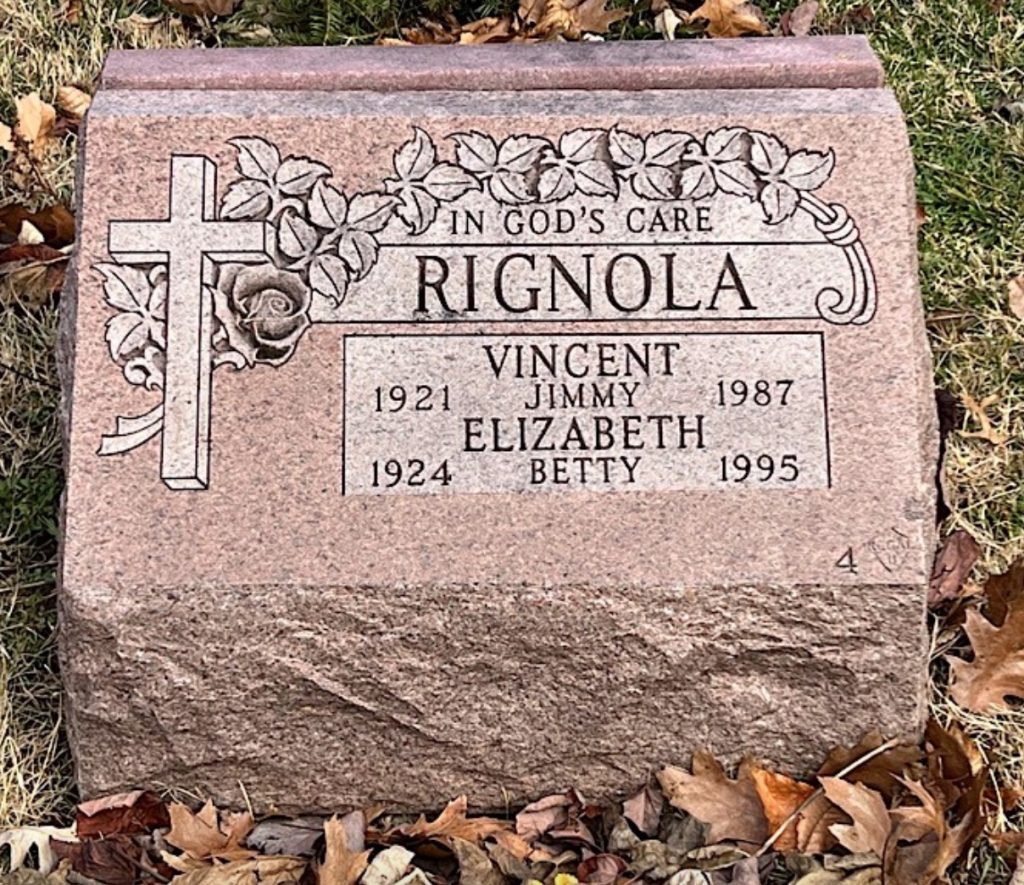
RIZZO, GERARD (or JERRY) MICHAEL (1916-1967). Sergeant, United States Army Air Forces. Gerard was born in Brooklyn in 1916 to Michele and Teresa (née DiBuono) Rizzo, both of whom were born in Italy and immigrated to the United States around 1897. Michele worked as a hotel cleaner, according to census records. The 1910 federal census listed five daughters born to the Rizzos and living at home, ranging in age from 12 years to 11 months. The 1920 federal census noted two more Rizzos—Josephine, age 5, and Gerard (listed as Jeremiah), age 3½, youngest child and only son. He had six older sisters.
The available decennial census reports (the federal reports occurring on the decade; the state reports occurring on year five in between) could not capture the births and early deaths of two other Rizzo daughters: Lillie, who died in 1904 at about two months of age; and Susie, born 1911, who died in the 1918 Influenza Pandemic, according to the New York State Death Index.
By the time of the 1940 federal census, 24-year-old Gerard, known as Jerry, was the only child still living at home. His father was working as a porter in a “reception hall,” apparently the Grand Prospect Hall in south Brooklyn (which was in business 1903-2022). Gerard had graduated from Manual Training High School (now John Jay Educational Campus in Park Slope), and was working as a pin-maker in a jewelry factory.
In October of the same year, Gerard registered for the draft. According to his registration card, his employer was Joseph H. Meyers on 25th Street in Brooklyn. Gerard listed his mother as the person who would always know his whereabouts. He was described as 5’ 4 ½” in height, weighing 143 pounds, with brown hair and eyes, a ruddy complexion, and wearing eyeglasses.
Gerard Rizzi was inducted into the Army at Fort Jay, on Governors Island, in September 1942. His enlistment record notes that he had completed one year of college. A series of local news clippings served to track Gerard’s stateside progress: in May 1943, Corporal Rizzo was reported by the Brooklyn Daily Eagle to be in Casper, Wyoming, where the Army Air Base there trained bomb groups for overseas assignment and crew replacement. By early March 1944, Sergeant Rizzo was stationed at Tinker Field, Oklahoma, a supply and maintenance depot as well as the site of a Douglas aircraft factory producing the C-47 transport and the A-2o Havoc bomber aircraft. He also served as chief clerk at Walker Field, Kansas, the training base for the B-29 Superfortress bombers. The B-29s led the attacks on the Japanese home islands that began in March 1944.
According to his great nephew, Ronald Spence, Gerard went on to serve in the Pacific Theater of the war, although the details are unavailable. It’s possible that because of his eyesight (as noted on his draft card, Gerard wore eyeglasses), his draft status was originally A1L, or “limited service,” meaning only for noncombat roles in the Army, usually stateside. In 1943, limited-service soldiers began to be either discharged or reclassified and sent overseas. Having served both in the United States and overseas, Rizzo was discharged from the Army on January 3, 1946, according to government records.
In 1955, the New York City Marriage Index recorded an application for a marriage license for Gerard and Anna Papa. According to his great nephew, Gerard pursued a career in banking and the couple had two children. In June 1967, Gerard died at the age of 51. His wife, Anna, died in 2009 and is interred next to him. Section Yard, lot 39000, grave 982.
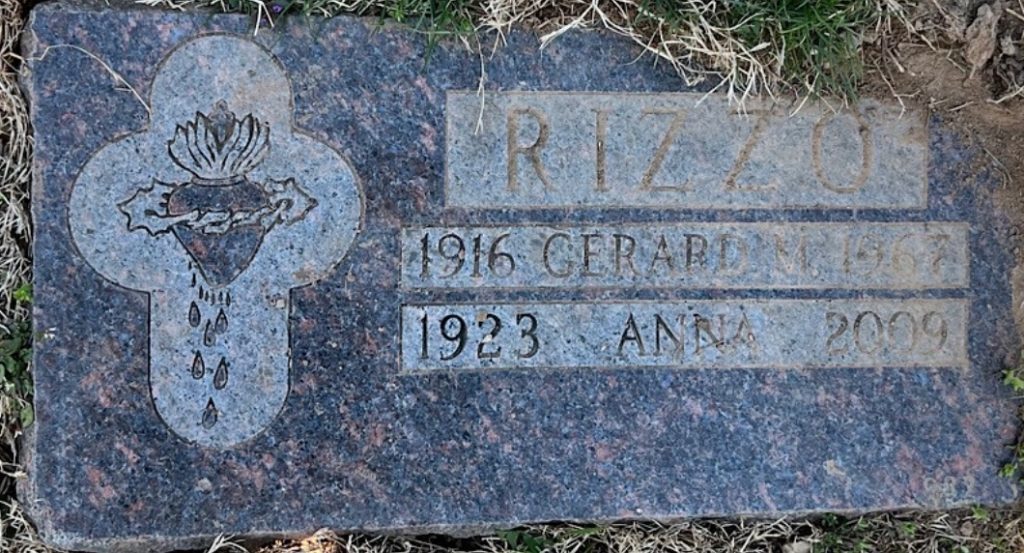
RIZZO, JOSEPH (or GIUSEPPE) S. (1914-1997). Private first class, 63rd Infantry Division and Artillery, United States Army. Rizzo was born in Brooklyn. His first name is recorded as Giuseppe on birth records. However, all records from 1920 and on document his first name as Joseph. The 1920 federal census states that the five-year-old Joseph lived on West 9th Street in Brooklyn with his mother, father and older sister, Pauline. Both parents, Philip and Frances, were born in Italy and his father was a brush-maker. By the 1925 New York State census, the family had moved to 161 West 9th Street and his father worked for a cement company. The Rizzo family had grown to three sons and a daughter with the births of James and Alfred.
As per Rizzo’s National Guard record, he served in the How. Co. 14th Infantry for three years. He enlisted on May 3, 1934 and was honorably discharged on May 2, 1935. Rizzo re-enlisted in the 14th Infantry on May 3, 1937 and received another honorable discharge on May 2, 1938. On May 3, 1938, he again joined the National Guard’s 14th Infantry, but no separation date is given.
His granddaughter, Tracey Lucey, shares that Rizzo married Theresa on June 5, 1938. According to the 1940 federal census, the couple lived on Lynn Street in Brooklyn. Rizzo, twenty-six years old, was a shipping clerk for a toy factory and Theresa was a machine operator in a paper box factory.
Rizzo’s World War II draft card details that he was twenty-six years old and lived at 65 Rapelyea Street in Brooklyn. His wife was named next of kin. Rizzo had his own business located at 301 Douglas Boulevard in Brooklyn. His accompanying registrar’s report describes him as 5′ 8″ and 140 pounds with brown eyes, brown hair and light complexion.
As per his World War II Army enlistment records, he entered service as a private with one year of high school. His enlistment date is February 23, 1944. According to the World War Two Veterans website, Rizzo is listed among those who served in the Battery 861st Field Artillery Battalion – the 63rd Artillery. This is substantiated by his granddaughter who states he served in the “Blood and Fire” division in France and Germany, liberating concentration camp prisoners. The United States Holocaust Memorial Museum dedicates a page to the 63rd Infantry Division. Since Rizzo enlisted in 1944, he probably took part in many of the campaigns described by the museum:
The 63rd Infantry Division was created in 1943 and landed in southern France in December 1944, some six months after the massive Allied invasion of western Europe on D-Day (June 6). The “Blood and Fire” division advanced northward and eventually crossed the Saar River into Germany in early February 1945. At the end of the following month, on March 30, the unit took the town of Heidelberg, advanced southward into Bavaria, and crossed the Danube River.
As the 63rd advanced farther into the Bavarian countryside, on April 29-30, 1945, it liberated several Nazi subcamps attached to the Kaufering camp complex in the Landsberg region. One battalion of the division was ordered to search for and secure all the concentration camps in the area. Seven camps and hundreds of dead prisoners were discovered. The army reported that the camps were “full of starving and dying political prisoners. These people, many of them recently moved from Dachau, many of the from the Ghettos of Poland, were found in advanced stages of malnutrition, typhus, diarrhea, skin diseases, boils and abscesses, and mental and emotional illness.
According to the museum, the 63rd “was recognized as a liberating unit by the US Army’s Center of Military History and the United States Holocaust Memorial Museum in 2000.” The 63rd Infantry Division was nicknamed the “Blood and Fire” division. As per the museum: “The nickname commemorates British Prime Minister Winston Churchill’s statement at the Casablanca Conference in January 1943 that “the enemy would bleed and burn in expiation of their crimes against humanity.’”
According to his granddaughter, Rizzo received a Good Conduct Medal for his service to his country. His granddaughter also relates that he and his wife had two children. After the war, Rizzo was a shipping clerk and a truck driver. Section 1120D, Hillside Mausoleum Phase 1.
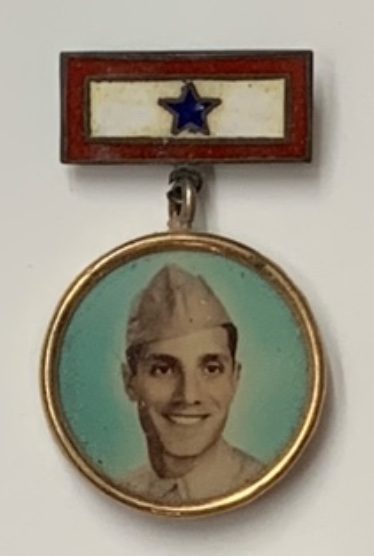
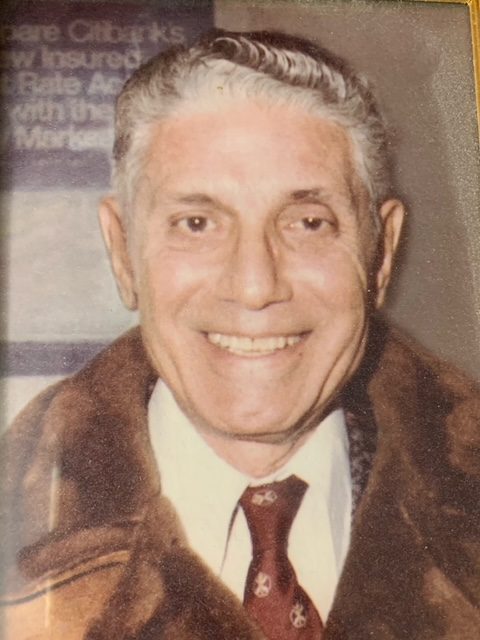

ROCHFORD, MARTIN XAVIER (1918-1995). Sergeant, 3rd Chemical Mortar Battalion, 3rd Division, United States Army. Martin was born in New York City to Martin Edwin and Anna M. (née Devins) Rochford; his father was born in Ireland while his mother was from New York. According to the 1920 federal census, the Rochfords, including Martin’s older siblings, James and Katherine, lived in a rented residence at 613 East 77th Street in Manhattan; Martin’s father worked as a highway paver. By the time of the 1925 New York State census, the family was living at a multi-unit building at 248 East 77th Street. That census indicates that Martin Edwin had been in the United States for 24 years and became a naturalized citizen in 1916. The father was still employed as a paver, his mother was identified as a housewife, and his older brother James was an office boy; two more sons, George and Thomas, had been added to the family. The 1930 census reports that the family was living in their own home (valued at $9,000) at 241 East 35th Street in Brooklyn. Martin’s father was a highway foreman, James worked as a clerk for the Edison Electric Co. and Catherine worked as a bookkeeper in the banking industry. Although always identified as New Yorkers by birth, Martin’s older siblings, James and Catherine, are listed as being born in Pennsylvania on that document. There were two more children in the family, Francis and Anna.
Martin, the subject of this biography, attended St. Francis Prep, where he was a tackle on the football team and from which he graduated in 1937. His yearbook photo (below) was in The Brooklyn Tablet newspaper announcement and his photo was in Brooklyn Daily Eagle on its sports page on September 17, 1936. In 1940, the family still lived in the East 35th Street house; Martin E. Rochford was an assistant supervisor for the highway department and Martin Xavier was a clerk at a brokerage firm; his two older siblings no longer lived at home. His family does not recall their father ever working at a brokerage house but at some point in his life, he was a delivery truck driver for Railway Express.
Rochford registered for the draft on October 16, 1940. He had a home phone, still lived at the East 35th Street address in Brooklyn, and identified his mother as his next of kin. His draft registration card notes that he was employed by “Sperry’s” at 42 Flatbush Avenue Extension in Brooklyn. The Sperry Corporation was a well-known equipment and electronics company that developed gyroscope-based aviation instruments such as auto-pilots, airborne radar systems, the Ball Turret Gun and bombsights, and was a major military supplier during World War II. According to registrar’s report, Martin had brown hair, gray eyes and a ruddy complexion. As per his subsequent enlistment record, he was 6′ 4″ tall and weighed 220 pounds.
On September 9, 1941, Rochford enlisted in the United States Army in Yaphank, New York, when he was 23 years old. A photo of Martin published in the Brooklyn Daily Eagle on March 17, 1943 when he was home on furlough notes that he was a sergeant; that rank is also recorded on a card with his name from the National Jewish Welfare Board Card which notes that he was wounded during his service. He served with the 3rd Chemical Mortar Battalion, 3rd Division, in North Africa, Sicily, France, Luxembourg, Belgium, and Germany. There is a monument to that Battalion in Grove, Oklahoma. He participated in the Battle of the Bulge under the command of General George Patton. Mortar battalions supported infantry divisions and infantry regiments as they went into combat, often staying in the line as infantry units were rotated out of combat and new fresh units came to the front. As per Wikipedia, during the Allied invasion of Sicily in the summer of 1943, the first time the mortar was used in wartime to fire chemicals, 35,000 such rounds were fired in 38 days, of which more than 90% were highly explosive.
In November 1943, Rochford was admitted to the hospital in Italy with a penetrating shrapnel would to his left knee sustained in the line of duty. As per his hospital admission record, he returned to duty after the shrapnel was removed. For his service, Rochford received numerous awards and medals, including the World War II Medal, Europe-Africa-Middle East Campaign Medal with Arrow Head and Silver Star, Good Conduct Medal, Germany Army Occupation Medal, American Defense Medal, American Campaign Medal, Purple Heart, Rifle Marksman Badge, and the French Croix De Guerre with Bronze Star for action in Monte Casino, Italy. Martin was discharged on June 24, 1945, shortly after his brother, Thomas, was killed in action in the Pacific. Rochford’s son Patrick confirms his father’s service in Europe and Africa, reporting that his father engaged in actions in North Africa, then moved to Sicily and up the Italian peninsula, finally fighting his way through France and ultimately Germany. He also notes that he was wounded a second time in 1945 on the France/Germany border when he was shot in the hip. He was in a Paris hospital when the war ended.
Martin married Agnes Regina Heavey on May 22, 1948, in Philadelphia, Pennsylvania. Martin and Agnes had six children (Mary Ann, Jane, Martin Jr., Noreen, and twins, Patrick and Regina.). The 1950 census indicates that the family, including a daughter, Mary, lived at 389 Schenectady Avenue in Brooklyn and that Martin was a city policeman. Rochford spent 23 years as an officer with the New York Police Department. As per his son Patrick, the bulk of his time with the police force was spent at the Brooklyn Supreme Court attached to Judge Lefkowitz; he retired from that assignment. In 1988, Martin and Agnes lived at 2068 Brown Street in Brooklyn.
At the time of his death in 1995, he and Agnes had been married for 47 years; they are buried together at Green-Wood. His son relates that his father rarely spoke of his wartime experiences. He said, “I know he must have seen horrific things in his four years overseas but if it affected him, he never let on. He deeply loved his wife and children and spent every day proving it. He was the epitome a a family man and we all miss him dearly.” Section 8, lot 44609, grave 238.

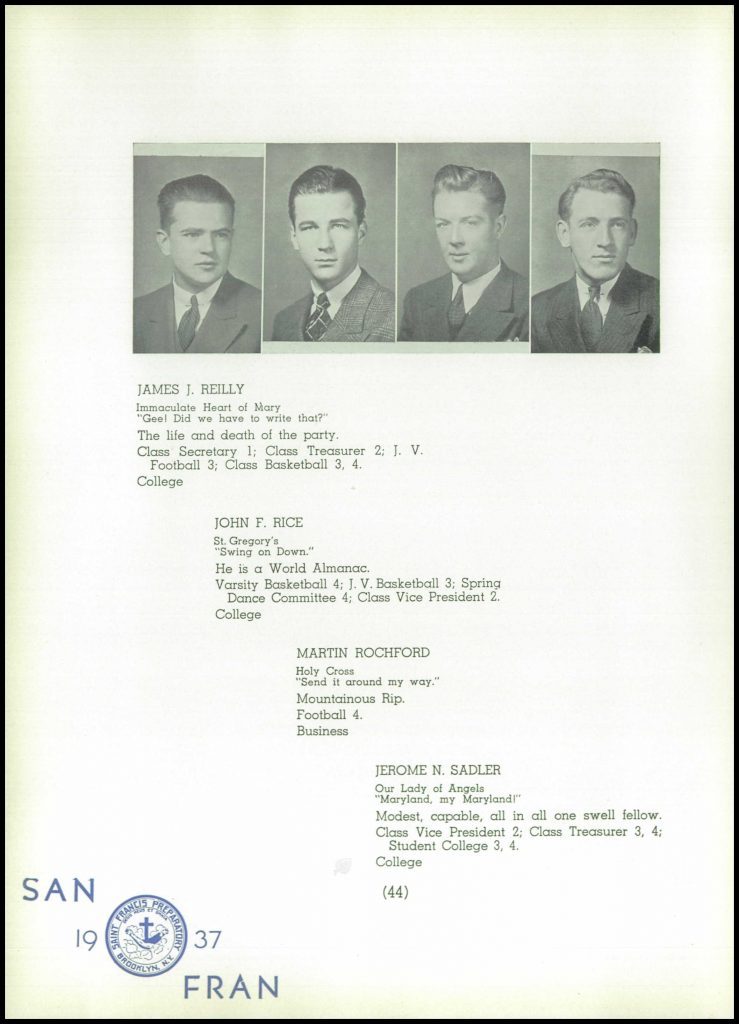

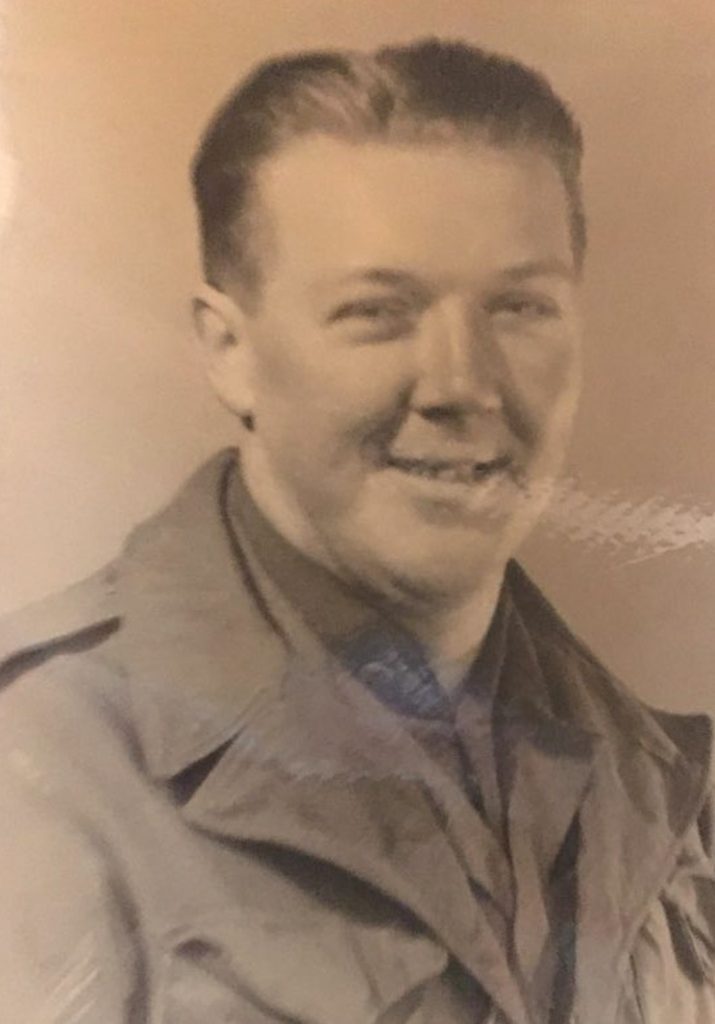

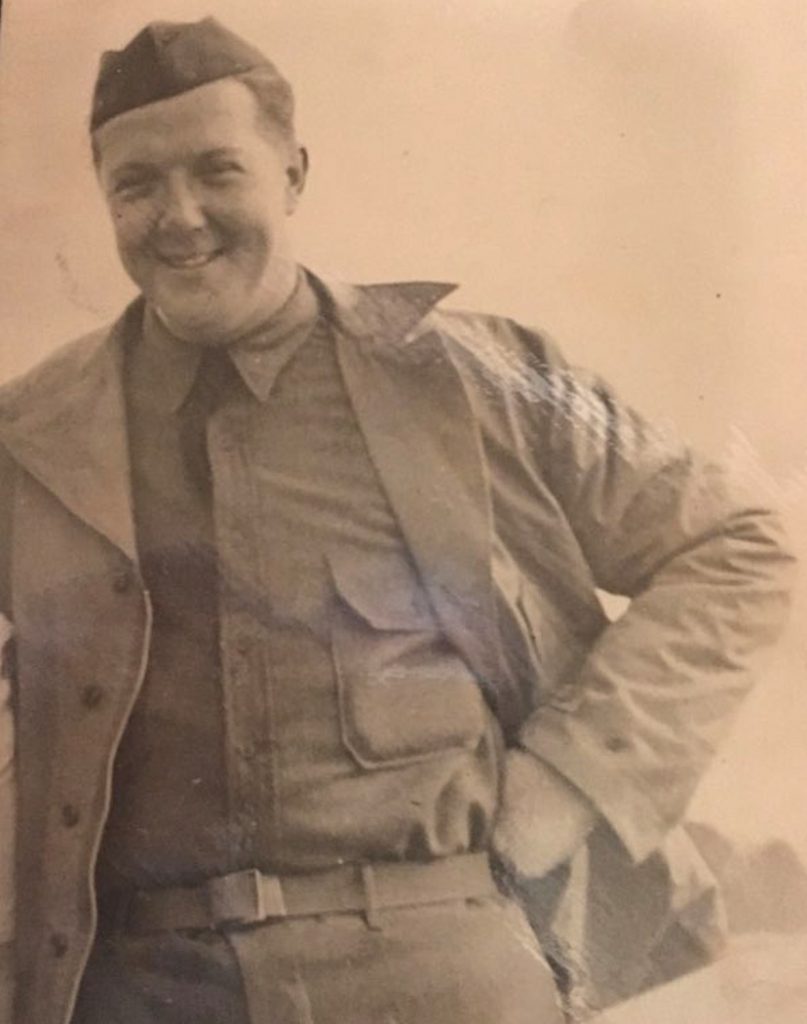
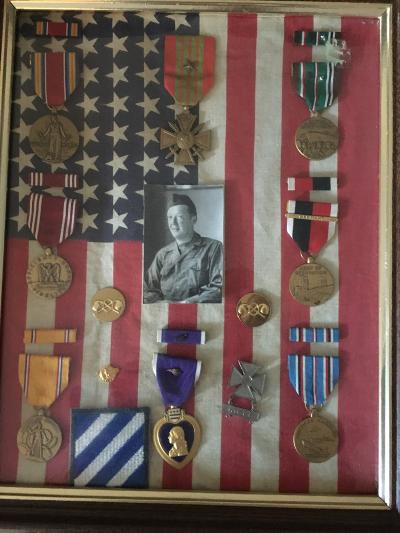
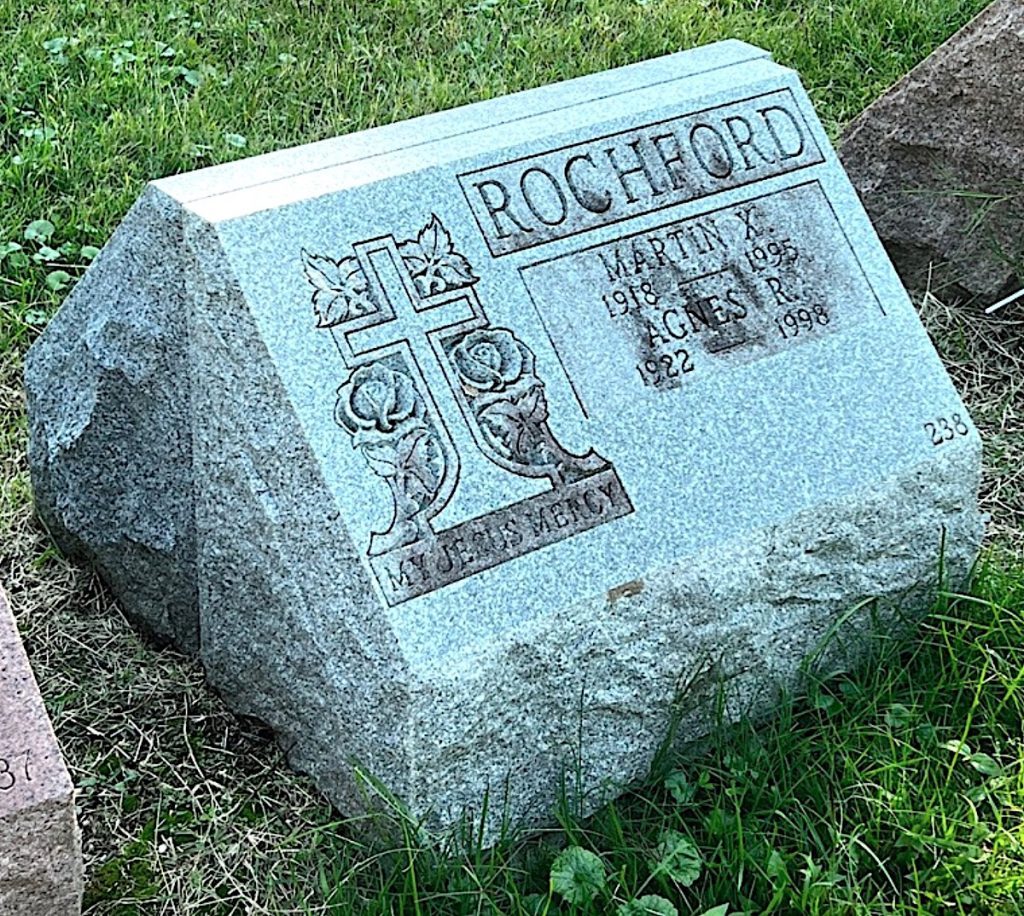
ROHLFS, HENRY WARREN (1920-2014). Private, 1st Armored Division, United States Army. Warren (as he was referred to by his family and others) was born in Brooklyn to parents Henry Richard Louis Rohlfs and Charlotte Dorothea Marie (Patsie) née Pruchnow when they were forty-three and twenty-four years of age, respectively. Henry, the father, was born in New York to German immigrant parents; he was married at age twenty and had a daughter from this marriage, Henriette, who was about nineteen or twenty years old when Warren was born.
In 1922, just ten days after Charlotte gave birth to Donald Frank, Warren’s younger brother, she passed away. Days before her death, Charlotte, apparently contemplating death, wrote a letter to Warren, anticipating that she might not live to see Warren grow up. In the letter Charlotte expressed her love for Warren and wrote of the life she wished for him:
Warren my little son – you are the joy of my existence – I pray for you night and day that you shall be a wonderful man and happy. I want you happy with just enough trouble to make you broad & big. Be clean in body and in mind. Believe this to be true in spite of what anyone else tells you: that for your own peace of mind and the happiness of the girl you marry and those you love keep clean – and as pure as you expect her to be. Oh! God you’re such a little fellow – You have the world to battle yet.I pray God will take care of me so that in my humble way I can lead your baby hands aright and see you well on the path towards a brilliant career whereby your fellow man will profit.
Why do I write this and cry, cry, like a heartbroken? Surely God will take care of me and I’ll bring another precious bundle home like I did you, you who tells me now you’ll help me take care of the “baby” when it comes, with your face all lit up in a wonderful glow. Two years old – I can hardly believe it. My baby no more – I love you.
In the years to come, Warren would lead an adventurous and impactful life, filled with travel, a passion for race car driving, sailing, and invaluable time spent with his family; a life his mother Charlotte would have been proud to see.
Per the 1925 state census, the Rohlfs family lived in Brooklyn at 157 85th Street. Henry Rohlfs was forty-nine and worked in hardware. Henriette was now twenty-four and did housework, Warren was five and a student, and Donald, the youngest, was two years old. The family also had a housemaid, Selma Klaahs, who was twenty-eight years old and originally from Germany. All members of the family and the maid were American citizens.
According to the 1930 census, the family continued to live at the same address. Henry Rohlfs owned the family home, valued at $35,000, and worked as a hardware merchant. His daughter, named as Etta C., was single; Warren, now aged ten, and his younger brother Donald, both attended school and all the family could read and write. Selma Klaahs, who spoke English and had been in the United States since 1923, continued to work for the family as a maid and cook. In the fall of that same year, Warren travelled to Germany. Ship records show his return trip to New York from the city of Bremen on September 22 aboard the S.S. Bremen that carried a total of twenty-nine passengers, twenty-seven of whom were immigrants with only Warren and a one-year old boy listed as United States citizens. A photograph from Warren’s trip to Germany, possibly taken at the Berlin Zoo, shows him wearing glasses and comfortably posing while holding a lion cub curled up in his lap.
The 1940 federal census reports that the Rohlfs family had moved to 9229 Shore Road in Brooklyn. The household now included just Henry Warren and his two sons; Henriette, listed here as Etta C., was married but lived in the same building. Henry Warren worked sixty hours a week at his own hardware store and Warren, who was nineteen years old and had completed the fourth year of high school, worked there as a helper, with an income of $570. Donald, the younger son, attended school and had completed three years of high school.
In 1941, Warren Rohlfs, twenty-one years old, registered for the draft. The records describe him as white, 5′ 7″tall, 168 pounds, with gray eyes, brown hair and a dark complexion. Rohlfs reported that he worked as an assistant production manager at Brewer-Cantelmo Company Incorporated at 116 East 27th Street in Manhattan; the company, still in operation today, creates hand-made, custom presentations. Rohlfs home address was still on Shore Road and his sister, named here as A.E. Delmhorst, was listed as his next of kin. Rohlfs enlisted in October of that year at Camp Upton in Yaphank, New York.
Warren Rohlfs served for four years in Africa, Italy, and Ireland and was awarded the Purple Heart for injuries received at Kasserine Pass. The Battle of Kasserine Pass in North Africa was the first time the American Army engaged in battle with the armed forces of Nazi Germany. After an initial defeat, the American forces, along with British reinforcements, held the exits through the mountain passes of Western Tunisia and defeated the Axis forces. In August 1942, he was admitted for treatment of bursitis at an aid station. The records of that treatment note that he was a member of the Signal Corps.
In 1947, Warren married Jeanne Russo, a daughter of American and Canadian parents, and a graduate of St. Angela Hall in Brooklyn and Marymount College, Tarrytown. The wedding announcement in the New York Herald Tribune includes a photograph of Jeanne from the wedding which took place at St. Patrick’s Cathedral; Warren’s brother Donald was his best man. The wedding reception was held in the main ballroom at the New York Biltmore Hotel.
Warren and Jeanne had four children: H. Warren Jr., Francis, Susan and Jaclyn. In 1958, Warren and Jeanne took a trip to Paris; travel records show their return to New York from Paris aboard the Trans World Airlines Flight 8751. These records also indicate that the couple lived in New Rochelle, New York, for some time after they were married and obituary records indicate that the couple spent 35 years together in Larchmont, New York, raising their four children.
Rohlfs ran F. A. Russo Incorporated, a photography business that served the advertising and media businesses of New York City. He was also commander of the American Legion Post 209 in New York City, and a member of the New York Sales Executives Club, the Toastmasters Roughriders Club, and served on the board of Junior Achievement of New York.
Warren’s life was filled with family gatherings, an avid interest in race car driving, and sailing. He was an amateur race car driver and had a race car called Lotus; in a photograph, he is seen standing proudly alongside it with his children sitting in the car. He was also a founding member of the Madison Avenue Sports Car Driving and Chowder Society, a group that continues to meet in New York City to share their love for sports and automotive competition. Warren shared his passion for race car driving with everyone from celebrity race car enthusiasts to people who just needed some encouragement. In a message posted online in response to Warren’s obituary, Robert McGoey wrote:
I met Warren Rohlfs when I was in high school in New Rochelle and he was racing a Lotus Eleven along with his partner Walter Cronkite. His encouragement to a young person resulted in a life long interest in sports car racing and my career of racing that lasted almost thirty years. I will never forget the look on the face of the gas station attendant in Larchmont when we pulled in to fuel in anticipation of a visit to race the next day at Bridgehampton. What a great guy.
Rohlfs also enjoyed sailing. A a family photograph from the early 1980s shows him aboard a Boat, “A Rainy Day,” with his brother Donald. In 1989, five years after his wife Jeanne passed away, Rohlfs retired to the open waters of the Pamlico River in Washington, North Carolina.
In 1995, at the age of seventy-five, Warren married Anne Stuart Harrington (nee Parker) in Palm Beach, Florida. In 2007, they moved to The Villages in Florida, where he enjoyed poker games and golf. He continued to enjoy spending time with his family and rented a beach house in the outer banks for many family reunions. In 2010, his last beach side family reunion was near Daytona Beach, Florida.
Warren Rohlfs passed away in Florida at the age of ninety-four and a family service was held at Green-Wood Cemetery. On his gravestone, is inscribed, “Beloved Pop.” He was survived by his wife Anne, his children Warren, Frank, Susan and Jaclyn, stepsons Anthony and M. Neil Harrington, nine grandchildren, and four great-grandchildren. His wishes, according to his obituary, were that “you take someone special to dinner and express your love and appreciation for them.” Section 206, lot 32416.
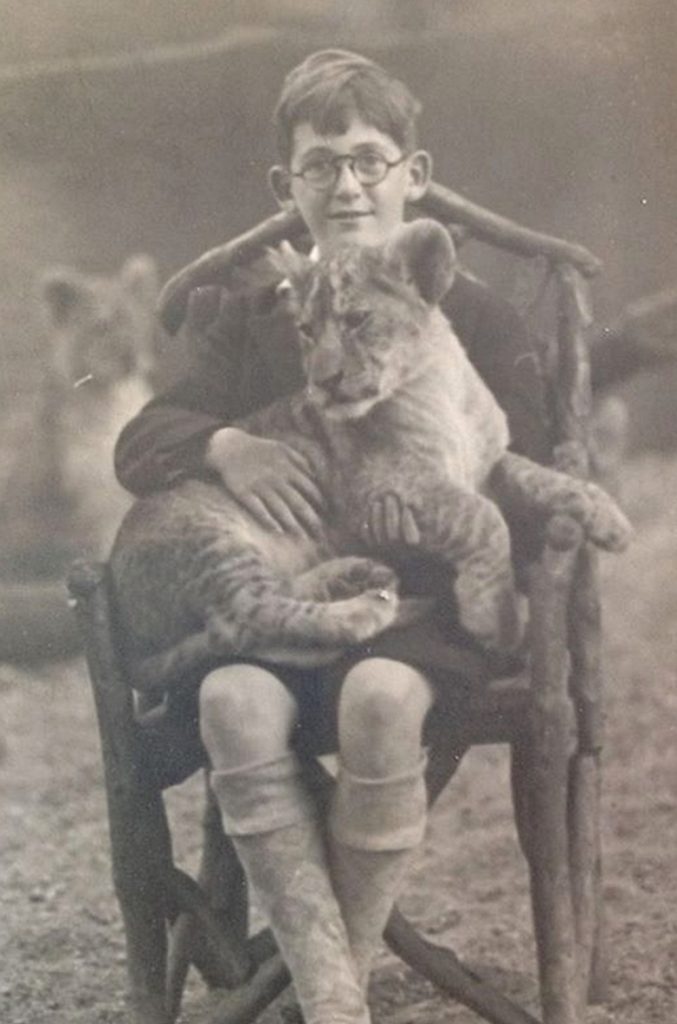
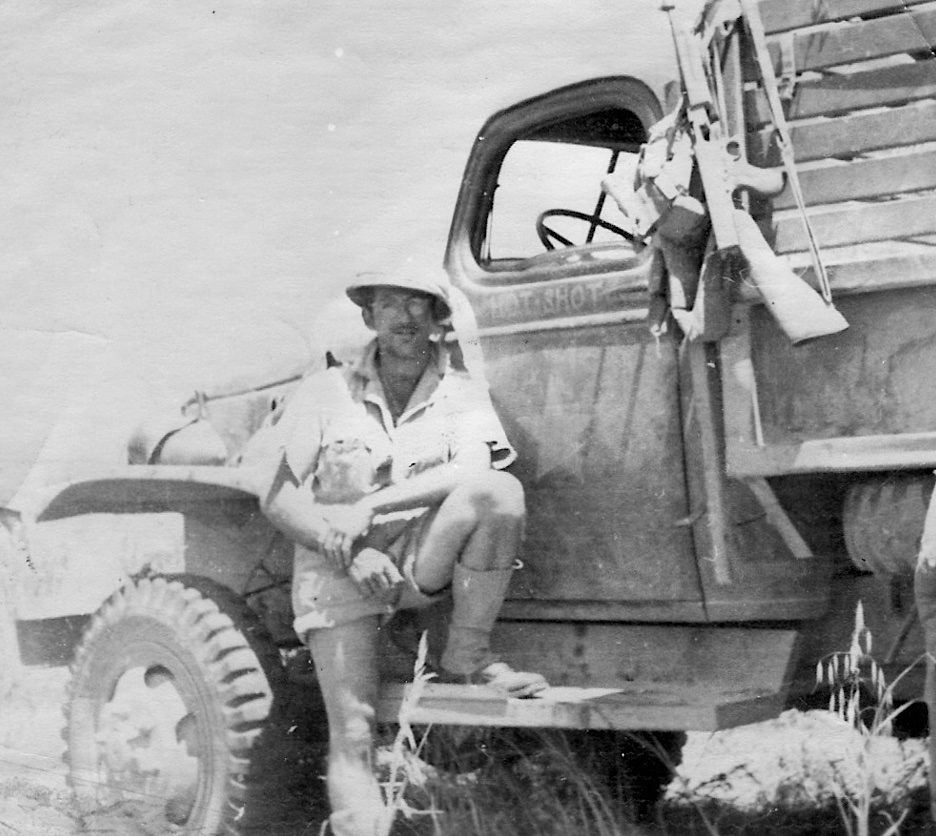
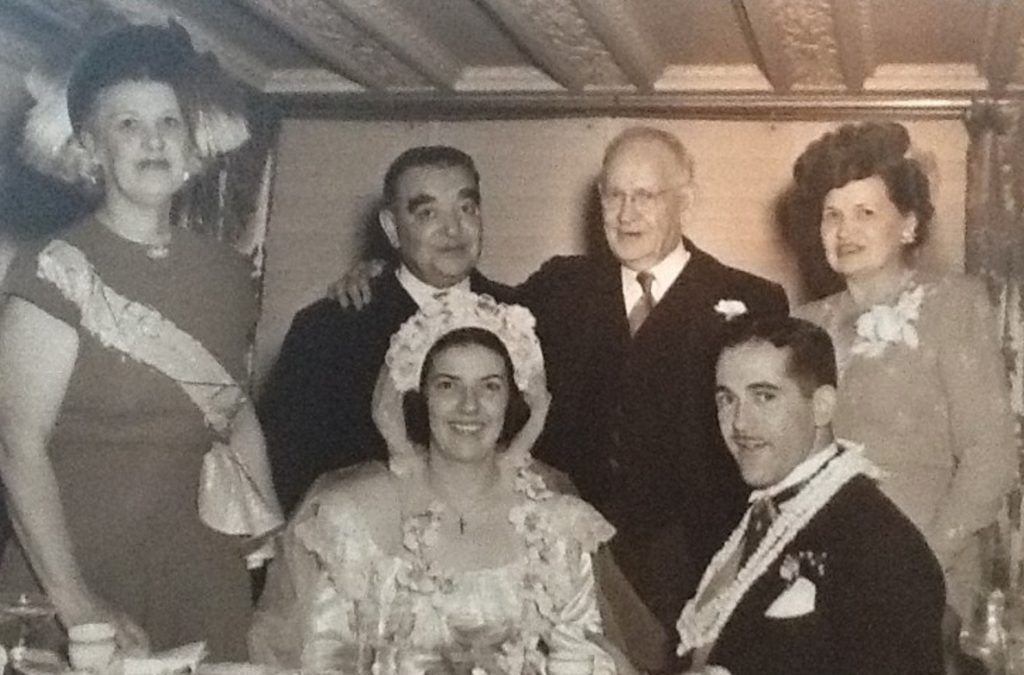
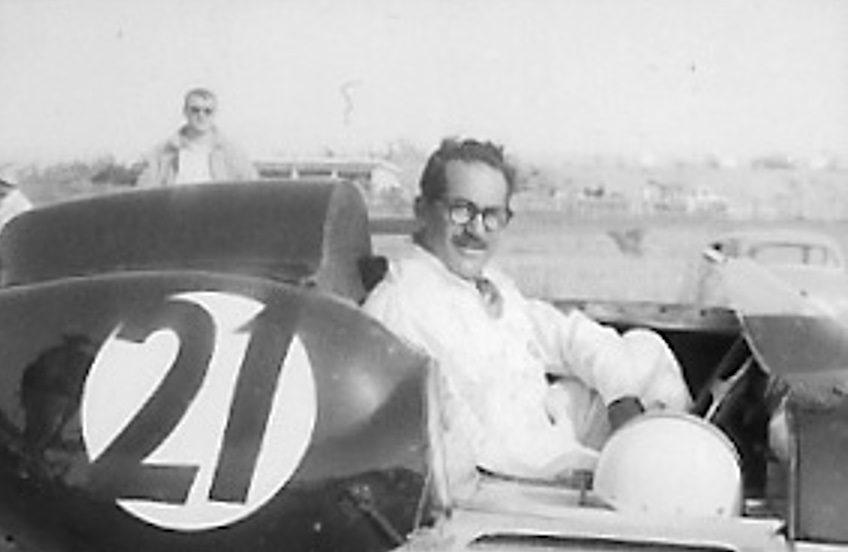
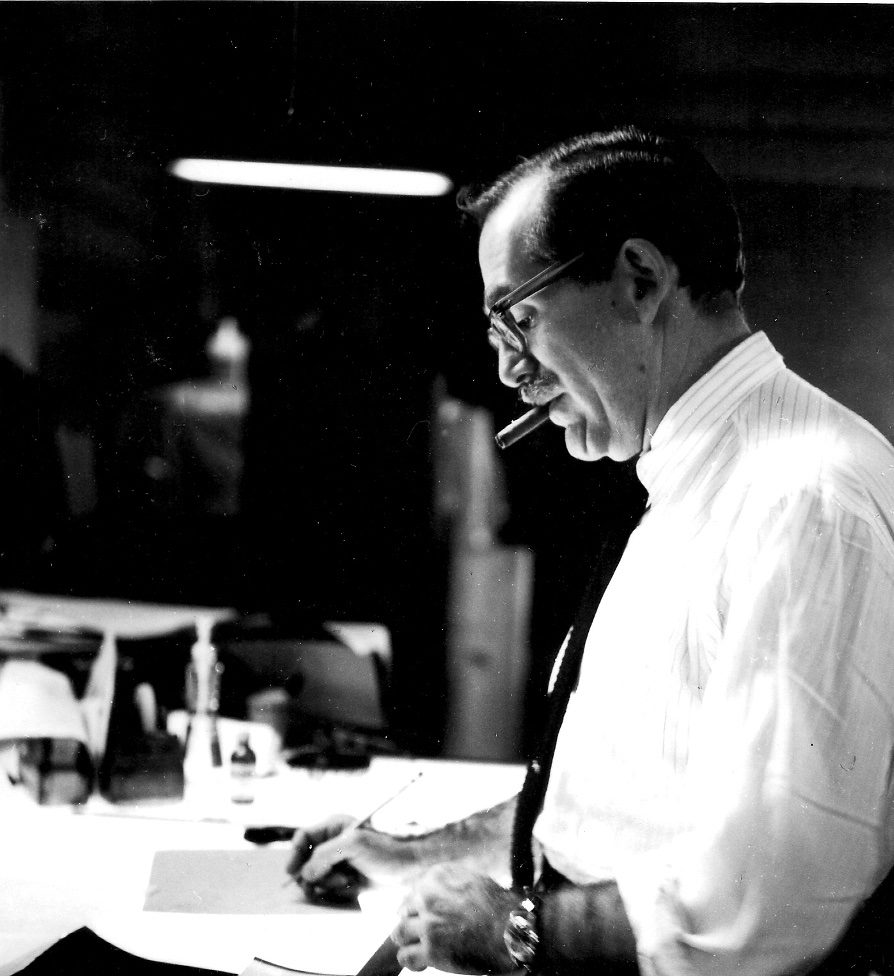
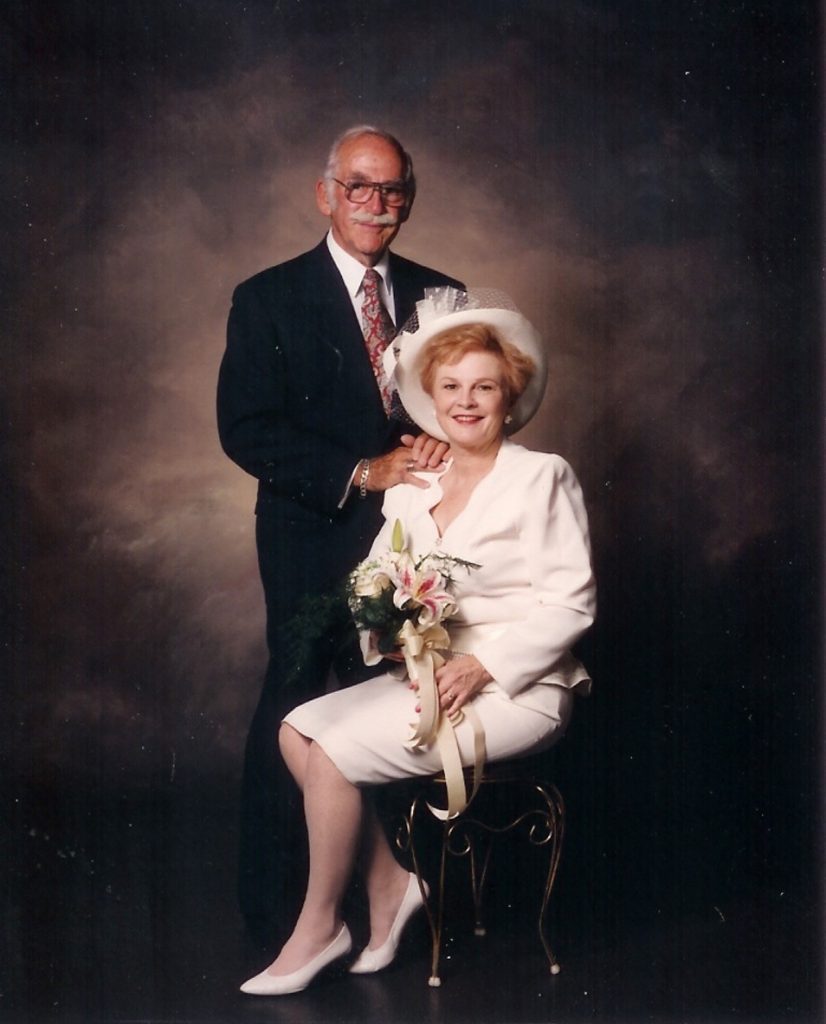
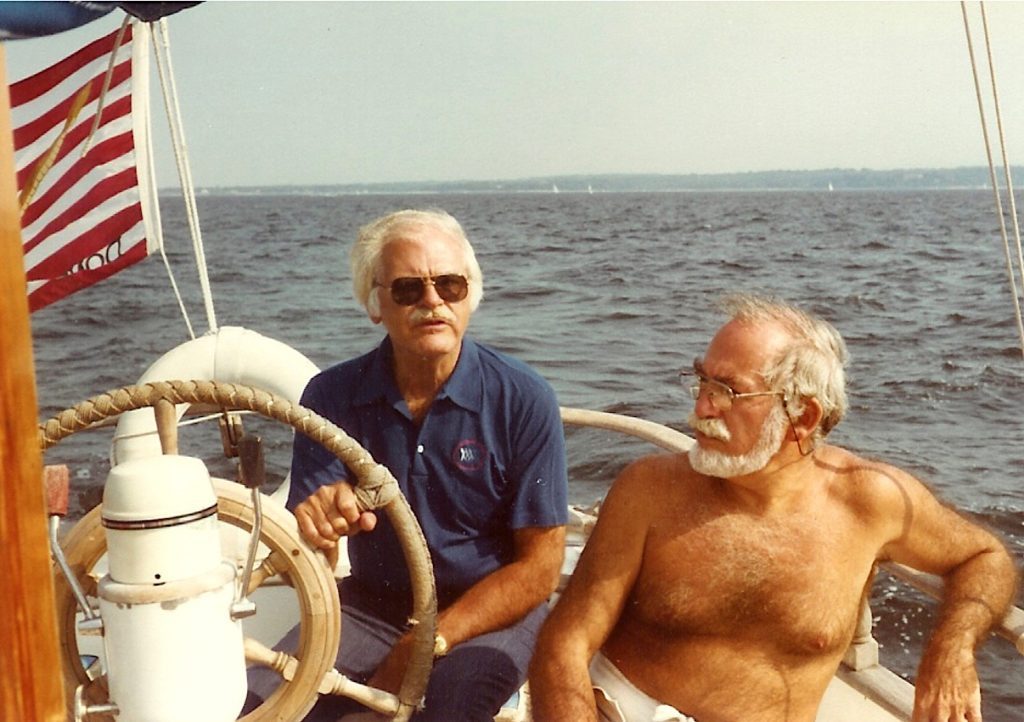
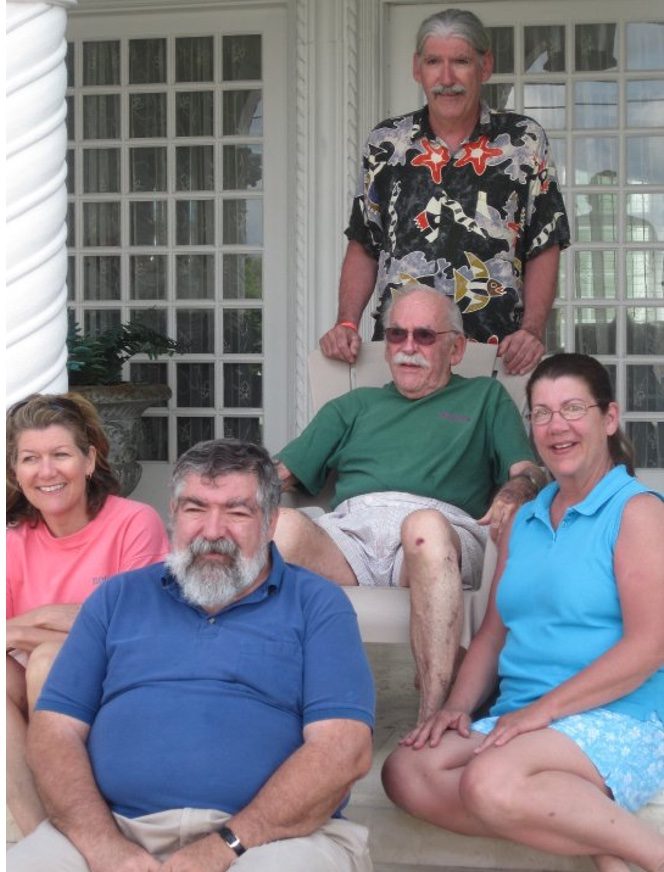
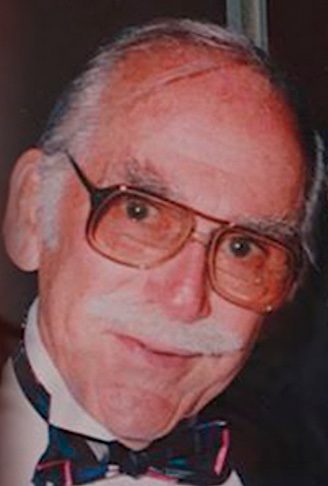
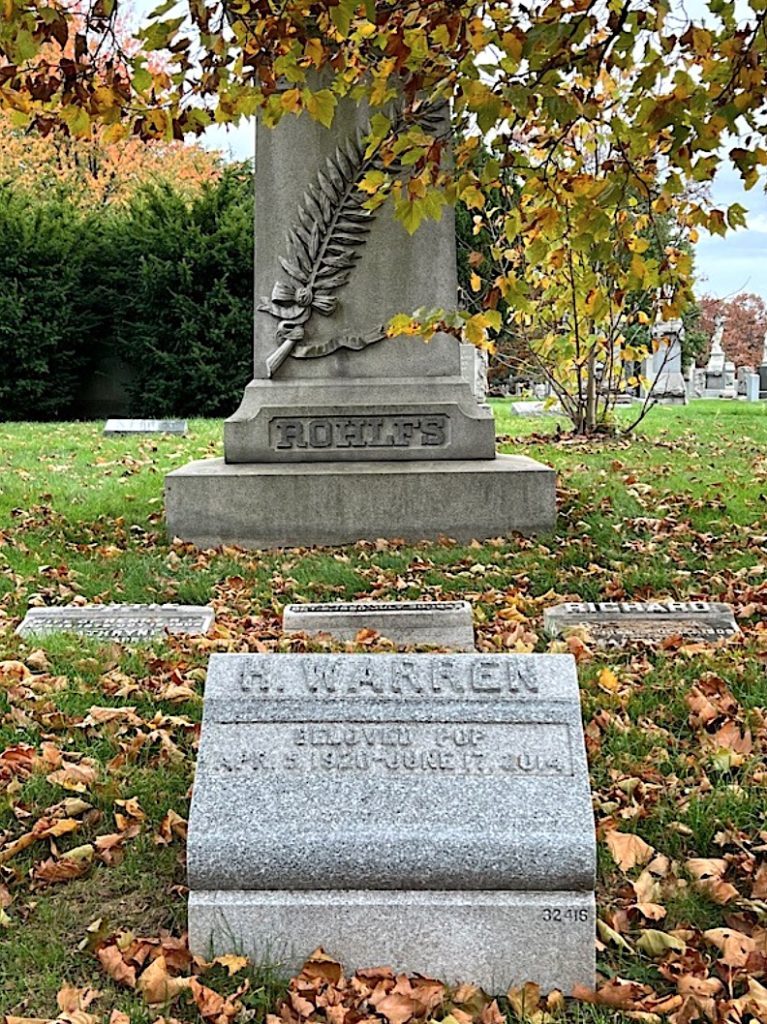
ROMEO, JOSEPH (or GUISEPPE) (1910-1994). Rank unknown, unit unknown, United States Army. According to the New York City Birth Index, Romeo was born on September 9, 1910 in Manhattan. His first name is recorded as Giuseppe. As per the 1930 federal census, Joseph lived with his parents, Joseph and Catherine, and two brothers, Louis and Jack. Both of his parents had been born in Italy. Joseph, our subject, worked as an upholsterer in the furniture business. The Romeo family lived at 1159 40th Street in Brooklyn.
As per the Department of Veterans Affairs BIRLS (Beneficiary Identification and Records Locator Subsystem) Death File, Romeo enlisted in the service on December 21, 1942 and was discharged on December 15, 1945. Although the BIRLS record states that his birth date was August 31, 1910, in contrast to the New York City record, the enlistment and discharge dates are most likely accurate as his Social Security number and date of death on the BIRLS file correspond to other documentation. Unfortunately, there are no records of what branch he served, his unit, or place of service. His son shares that he is a veteran of World War II.
If in fact he sometimes reported a date of birth of August 31, 1910, then he is the Joseph Romeo who registered for the draft on October 16, 1940. At that time, he reported that he was living at 1159 40th Street in Brooklyn. He subsequently updated his Brooklyn address to 1305 38th Street and then 1171 39th Street. He designated his father, also Joseph, as next of kin, and reported that his employer was Harry Danziger on 42nd Street in Manhattan. As per the draft registration card, Romeo was white, 5′ 8″ tall, weighed 145 pounds, had brown hair and eyes, and a dark complexion.
According to the Find a Grave website, Romeo was married to Anne, who passed away in 2002. They are interred together at Green-Wood. His last known residence was in Brooklyn. Section 71, lot 44605, grave 78.
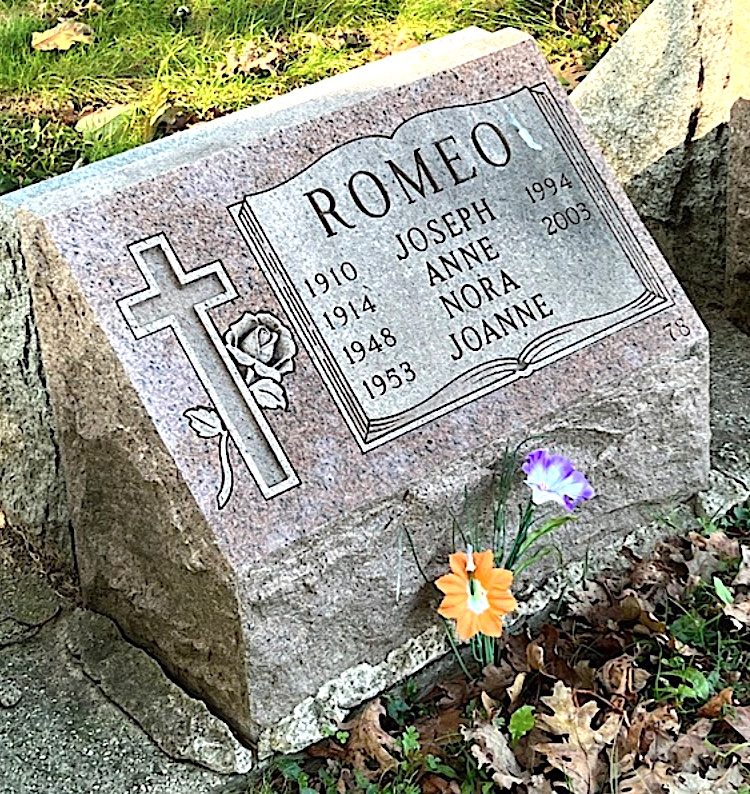
RONZO, RALPH VINCENT (1922-2010). Private first class, Unit 211, United States Army Air Force. Ralph was born in Brooklyn to a large family. His parents were Frank and Dora Ronzo; Frank was born in New Jersey to Italian immigrant parents and Dora was a citizen by way of marriage, having immigrated from Italy at about two or six years of age, depending on the records. Married in around 1913, Frank and Dora were already parents to four children, John, Michael, Frank, and Joe, when Ralph was born. At the time of the 1925 New York State census, the Ronzo family lived at 550 Kingston Avenue in Brooklyn; father Frank Ronzo was thirty-five and worked as a laborer in the junk industry; his wife Dora was twenty-nine; Ralph was three years old and had a younger sibling named Philip.
The 1930 federal census shows that the family continued to live at the same address. They rented their home for thirty dollars a month and had a radio. Frank worked as a boiler in a junkshop and the eldest son John worked as a delivery boy for a hardware company. The whole family was able to read and write and except for the youngest, all the children attended school.
Per the 1940 census, the family now rented a home at 412 Rutland Road. They had two more children: a daughter named Christina and a son named Vincent. Frank Ronzo worked forty-eight hours a week as a watchman at a city hospital; Dora was a homemaker; John and Frank were laborers; Joseph was a porter for a city hospital; Ralph, now eighteen years old, was a new worker. The five eldest children, including Ralph, had completed school through the eighth grade while Christina had completed two years of school. Their second eldest son Michael, no longer appears in the family records and is likely to have passed away.
In 1942, Ralph Ronzo was a stock clerk when he enlisted for service. The enlistment records describe Ronzo as single, white and having completed two years of high school. His 1945 draft records indicate that Ralph was twenty-three years old, 5′ 3″ inches tall, 140 pounds, with blue eyes, brown hair and a dark complexion. His home address was listed as 554 Kingston Avenue, the same as that of his mother Dora, who was listed as his next of kin.
Ronzo served in England, France and Germany; during his service he was shot in the leg and had to spend a considerable amount of time recovering at a hospital. Unable to do much, he learned how to hook rugs, a skill that he would come back to later in his retirement years. For his service, Ronzo was awarded the Purple Heart, American Defense Service Medal, Bronze Star, Good Conduct Medal, and European-African Middle Eastern Campaign Medal. Ronzo was not alone in his commitment to military service; three of his brothers also served in World War II, one in the Navy and two in the Marines.
In 1946, Ronzo married Frances Reveruzzi, also a Brooklyn native. The couple had two children: Dorothy, who was born in 1948, and Rose Ann, born in 1949. The 1950 federal census tells us that the family lived in the lower level apartment at 2231 West 1st Street, in the Gravesend neighborhood of Brooklyn. As per these records, Raply had attended school through the eighth grade at P.S. 91, then Tilden High School, but hadn’t completed it; he was a general exterminator for a private employer, worked forty hours a week and had earned an income of $2,600 the year before.
Public records from 1974 show that Ronzo continued to live in the same neighborhood but moved about fifteen minutes away to 144 Avenue T. About a decade later, at the age of sixty-two or sixty-five, Ronzo retired from his position as exterminator for New York City Housing. He had seen his friends continue to work and never get an opportunity to enjoy their lives and he didn’t want the same to happen to him. In his retirement years, Ronzo started hooking rugs, the same skill he had picked up during his hospital recovery while in service. He also learned to make handmade frames and those frames can still be found on the walls of his family’s homes. In 1996, Ronzo and his wife celebrated their 50th wedding anniversary. When Ronzo passed away just about a month short of his eighty-eighth birthday, he was survived by his wife Frances (who died in 2020 and is interred at Green-Wood with him), his daughters Dorothy and Rose Ann, and his grandchildren Robert, Deborah, Jennifer, Lisa and Alex. Section 104, lot 44606, grave 144.

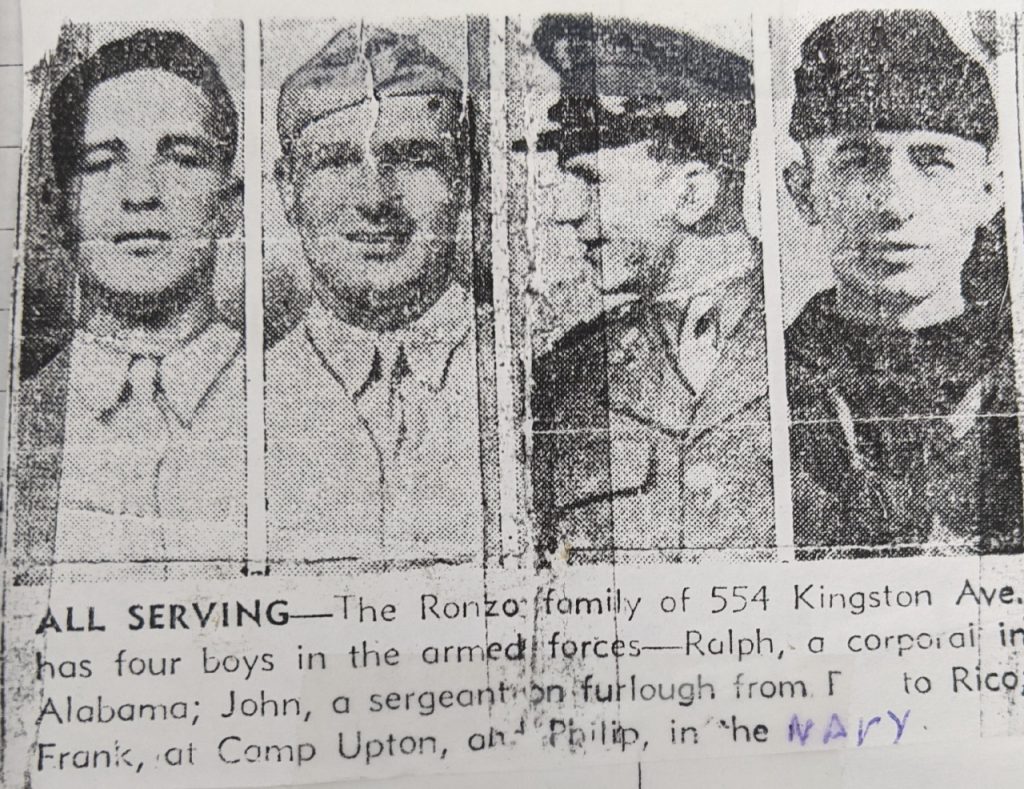
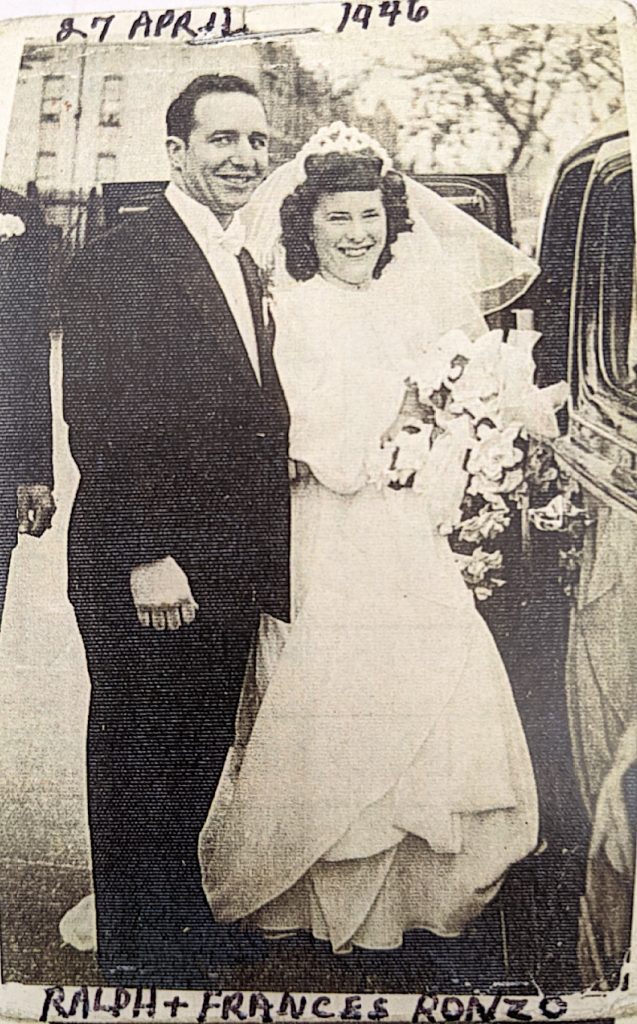
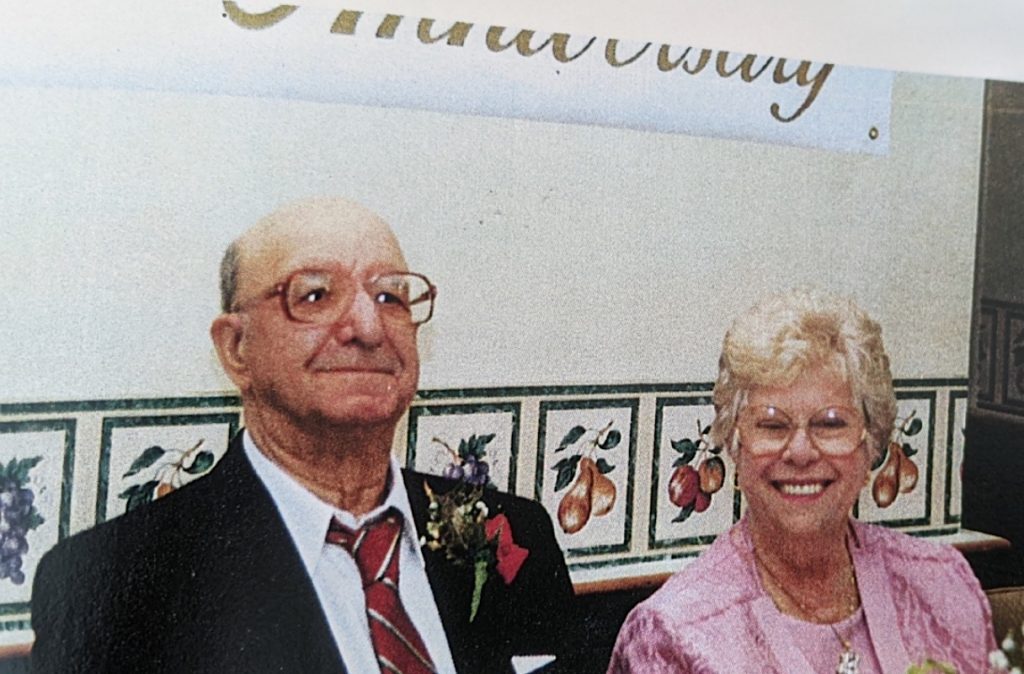
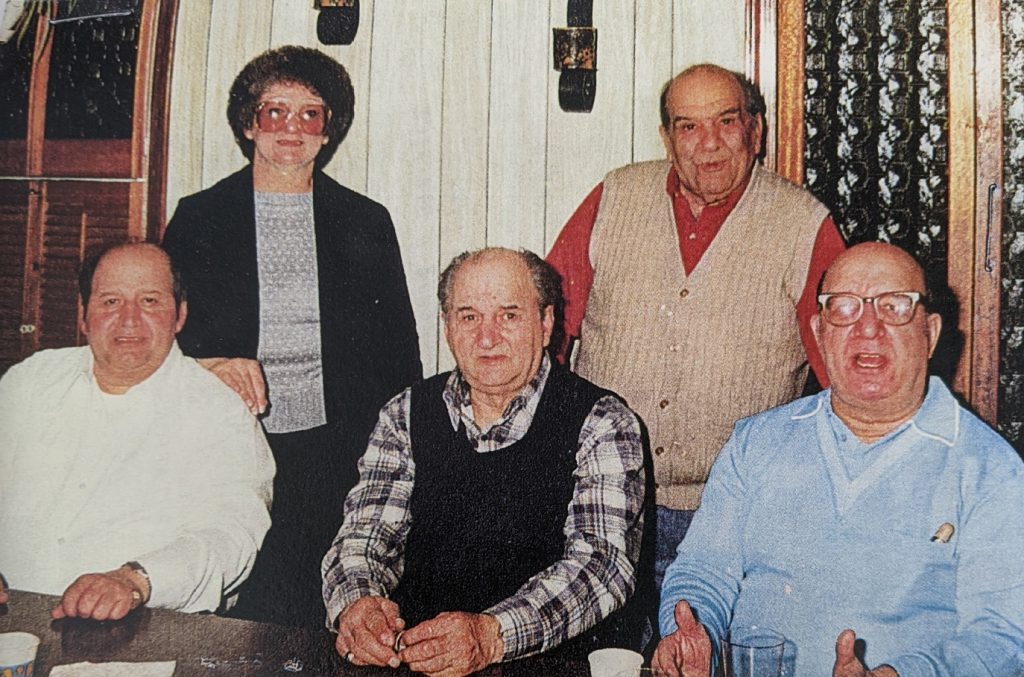
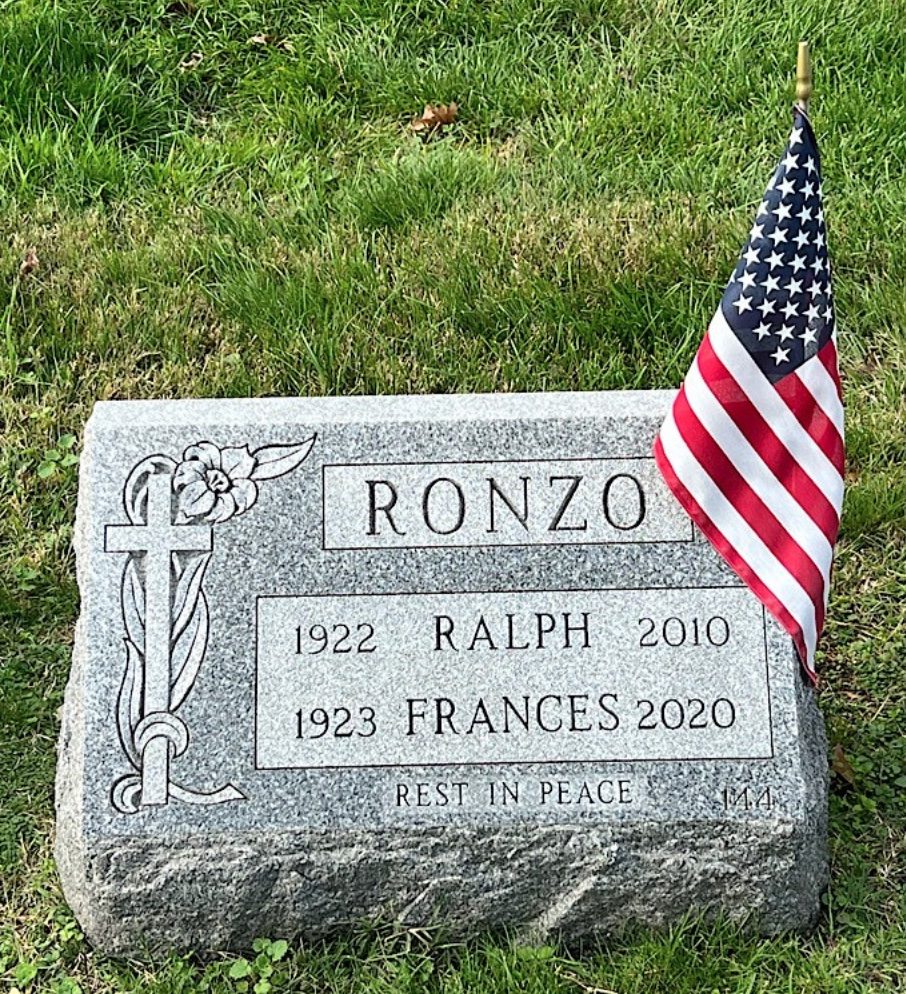
ROZZI, ROBERT LOUIS (1920-2007). Private, Infantry, United States Army. According to his World War II draft registration card, Rozzi was born in Mount Vernon, New York. Although the 1920 federal census pre-dates Robert’s birth, his family history can be gleaned from the document. His parents, Matteo (Matthew) and Josephine, were born in Italy and his father was a foreman in a garage. The couple had three children before Robert was born: Mary, Frank and Thomas. They lived in Mount Vernon and Josephine’s sister, Rose, resided with them. As per the 1930 federal census, the Rozzi family resided at 2022 65th Street in Brooklyn. This census documents that his father immigrated to the United States in 1903 and his mother immigrated in 1907. The family had grown to five children with the births of Robert and Matthew Jr. His father was an automobile washer and two of his siblings were employed – Mary was a confection saleslady and Frank was a newspaper clerk. His Aunt Rose still lived with the family. The 1940 federal census documents that the family resided at 4401 Avenue J in Brooklyn. Although Rose no longer lived with the family, all the siblings, ranging in ages from 19 to 29, lived in the household. Robert was a chauffeur for a fruit store. As per the New York Marriage License Indexes, Robert and Anne Carlina obtained a marriage license on April 26, 1941 in Brooklyn.
According to Rozzi’s World War II draft registration card, he was twenty-one years old. Under “Place of Residence,” he wrote 1719 67th Street, then updated his address to 1964 67th Street, but left his mailing address as 1719. Robert named his wife as next of kin. His employer was A&D Steel Equipment, located at 147 W. 26th Street in Manhattan. Rozzi’s registrar’s report, dated February 15, 1942, describes him as 5′ 11″ tall and 192 pounds with brown eyes, black hair and a sallow complexion.
Rozzi’s World War II enlistment record details that he was married, had attended one year of high school and entered the service as a private. His enlistment date was December 23, 1943. According to a family member, also named Robert Rozzi, he served in the second wave of infantry at Normandy. He was wounded on August 15, 1944, while in France. As per the World War II Hospital Admission Card files, Robert was admitted in August of 1944 and discharged in October of 1944. He was twenty-four years old at the time and had been serving for about seven months. The admission card records that he served in the infantry. The diagnosis was a wound to the eyeball with a bullet listed as the causative agent. The type of injury is documented as a “casualty in battle in the line of service” and the treatment was “enucleation, simple, eye (removal).” According to the Social Security Death Index, Robert was discharged from the military on June 12, 1945. For his sacrifice and service, Robert received a Purple Heart and the United States Army Combat Infantry Badge. Rozzi’s family source indicates that he was awarded two Purple Hearts.
Little is known about Rozzi’s life after the war. He and his wife were married for over sixty years. The couple had three sons: Matthew, Robert and Frank. Section 186, lot 44662, grave 2.
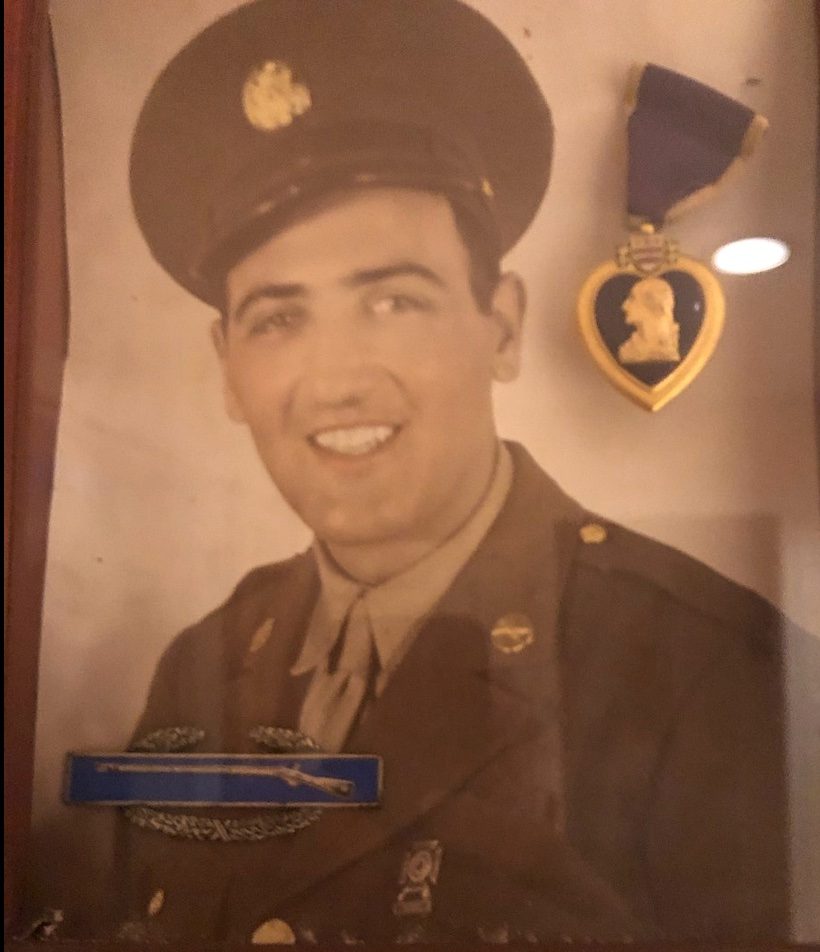
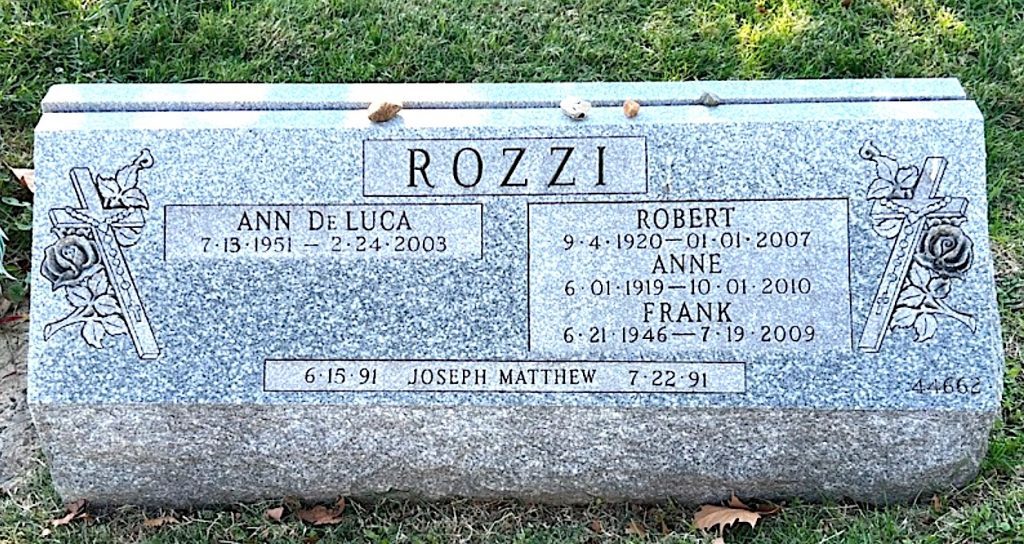
RUSSO, MICHAEL J. (1917-1999). Coast Guard Intelligence Office, Third Naval District, United States Coast Guard. Russo was born in Brooklyn. The 1920 federal census records that he lived on Catherine Street in Manhattan with his parents, Stephen and Tessie, and his five older siblings: Carmelo, Concetta, Antoinette, Nicholas, and Ida. Both parents were born in Italy. His father, a dock laborer, immigrated in 1904 and his mother immigrated in 1907.
The 1925 New York State census documents that the family had moved to Gravesend Avenue in Brooklyn. Carmelo no longer resided with the family and the remaining five children, ranging in age from eight to eighteen, attended school. As per the 1930 federal census, his father was a naturalized citizen and a longshoreman at Pier 23 in Manhattan. Four of the six siblings lived with their parents on Gravesend Avenue. Catherine was a bookmaker in a bindery, Nicholas was a painter, and Ida and Michael attended school. As per the 1940 federal census, the family had moved to 60th Street in Brooklyn. In the household were Russo’s parents, his sister, Catherine, his brother and sister-in-law, Nicholas and Helen, and Michael.
According to Russo’s World War II draft registration card, he was twenty-three years old. Under “Place of Residence,” 2302 60th Street was written and subsequently changed to 1531 McDonald Avenue. His mother was named next of kin and he worked for General Motors Corporation, located at 1723 Broadway. His accompanying registrar’s report, dated October 16, 1940, describes him as 5′ 8″ and 157 pounds with blue eyes, brown hair and light complexion.
Little is known about Russo’s military service. His New York Times obituary states: “He served in World War II in the United States Coast Guard Intelligence Office in the Third Naval District and was awarded the Purple Heart.”
It is possible some of Russo’s responsibilities were similar to those described in the United States Coast Guard website’s document, “Coast Guard Investigative Service (CGIS)”:
During World War II, in an ongoing effort to minimize sabotage and espionage, CGI agents were concerned with internal and domestic intelligence and counterintelligence. CGI’s purpose at that time was to secure, evaluate, and disseminate information pertaining to Coast Guard and maritime matters. This included assisting in identifying known and potential enemy agents and sympathizers. Investigations of military personnel, including those employed or controlled by the Coast Guard, were also conducted. CGI personnel were also involved with counterintelligence support for the war effort in many critical ports throughout the United States.
These efforts by CGI personnel and port security officers paid off – there were no known successes of foreign-inspired sabotage on vessels or waterfront facilities during WWII.
After the war, Russo sailed on a few cruises. A Puerto Rico Arriving Passenger List documents that he sailed on the SS Borinquen from New York on October 31, 1947, and arrived in San Juan on November 4, 1947. A New York Arriving Passenger List records that he sailed on the same ship from San Juan on November 7, 1947 and arrived in New York City on November 11, 1947. A United States Virgin Island Passenger List notes that he sailed from New York on April 9, 1948 to St. Thomas aboard the Alcoa Cavalier.
The 1950 federal census documents that Michael lived with his parents on McDonald Avenue and is described as “unable to work.” As per the New York Departure Passenger Lists, Michael left New York for San Juan on the SS Frances on March 4, 1954 with the intent to remain on the island for several weeks. Citing his New York Times obituary, “He was appointed by President Roosevelt as a court reporter to the United States Court of International Trade and retired as its Chief Court Reporter in 1972. He was also a Veteran of Foreign Wars and was Commander of the Colonel Francis Vigo Post.” According to the United States Social Security Death Index, his last known residence was in Miami, Florida. Crypt, Garden Mausoleum, 134A.
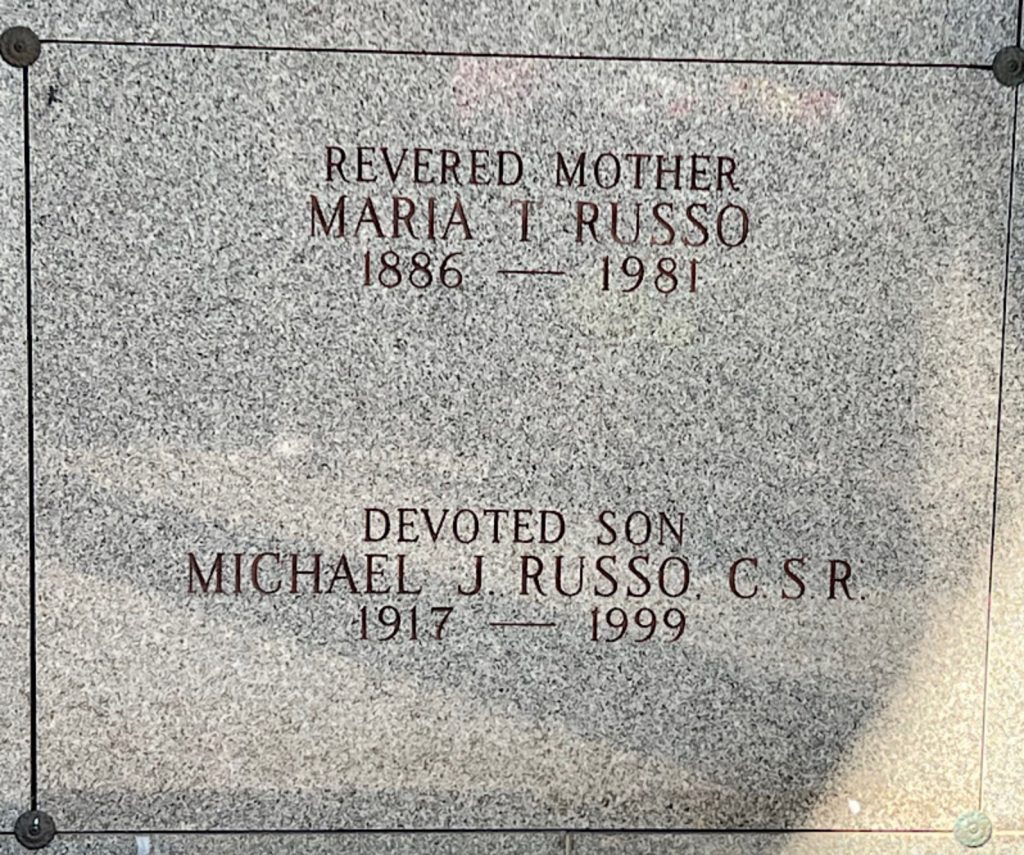
RYGG, ANDREAS (or ANDREW) N. (1868-1951). Treasurer of the Eastern Division of American Relief for Norway during World War II. According to the English translation of “Andreas Nilsen Rygg” in the Norwegian Biographical Encyclopedia, he was born on August 15, 1868, in Stavanger, Rogaland, Norway. Within the vast amount of documentation on Rygg, he was referred to as either Andreas or Andrew.
As per the 1900 federal census, Andreas lived with his wife, their two children, and his brother in Chicago. He had immigrated from Norway in 1889, became a naturalized citizen, and was an advertising assistant. The 1910 federal census records that Andreas, his wife, and their children lived on 54th Street in Brooklyn and he was an editor. According to the 1915 New York State census, Andrew and his family lived on 52nd Street. The September 12, 1918 issue of the Brooklyn Daily Eagle reports that “Olaf N. Hertzwig, Rasmus M. Michelsen and Andreas N. Rygg of Brooklyn appear as directors of the Olaf Hertzwig Trading Company, Incorporated, of Manhattan, capitalized at $100,000.”
As per the 1920 federal census and the 1925 New York State census, the family still resided on 52nd Street. The Norwegian Biographical Encyclopedia’sarticle details more information about Rygg from 1900 through 1929:
Andreas was employed by the Norwegian American Magazine of Scandinavia in Chicago from 1900 to 1912 and Nordisk Tilende in Brooklyn from 1912 to 1929 . . . . He started with charity work (in Brooklyn), and in 1909, he became secretary and from 1911 through 1921, he was chairman of the Norwegian Orphanage. In 1915, he was elected to the board of the Norwegian Hospital in Brooklyn, and in 1922, he became chairman.
In an article in the Brooklyn Daily Eagle, dated November 6, 1929, the newspaper reports that Rygg retired as editor of Nordiske Tidende and was celebrated with a testimonial dinner at the Norwegian Club. About fifty people attended his dinner and “lauded the guest, not alone for his successful administration of Nordiske Tidende since his inception as editor in 1912, but for the countless humanitarian acts which oft-times escaped attention.”
According to his obituary in the September 22, 1951 issue of the Brooklyn Daily Eagle, Rygg was the organizer and treasurer of the Eastern Division of American Relief for Norway in World War II. A database from the Norwegian-American Historical Association has a collection of papers from the organization from 1940 to 1946. The website describes the association as follows:
Papers of an association incorporated ten days after the invasion of Norway during World War II. Founded to “relieve distress” among the people of Norway, it was officially dissolved December 31, 1946. Correspondence, reports, and publicity material fall into five categories: clothing drive files, executive secretary’s files, president’s files, treasurer’s files, and corporate records. Topics treated include clothing drives; collection of funds; purchase and distribution of food, clothing, shoes, drugs; publicity; problems of storage and transportation; relations with governments; merging of relief agencies; affiliation with the National War Fund; women’s activities; tools for Finmark; and the Anfin O. Sather trust fund for the National Association of Norwegian Agricultural Clubs.
The collection consists of 44 archive boxes. Rygg’s correspondence is contained in box 7, folder #34 under the description “Executive Secretary Files: New York (Rodney T. Martinsen, State Chairman. Dr. A. N. Rygg, State Treasurer and Director). These papers range from 1941 to 1944.
As per the aforementioned obituary,
Dr. Rygg was active in Bay Ridge civic and cultural affairs, particularly in the Scandinavian-American community. His activities resulted in his receiving an honorary LL. D degree from St. Olaf College, Minnesota, and Norway’s Order of St. Olaf with a commander’s rank…He wrote two books: Norwegians in New York, 1825-1925 and American Relief for Norway.
Rygg passed away following a brief illness. Section 134, lot 29725, grave 698.
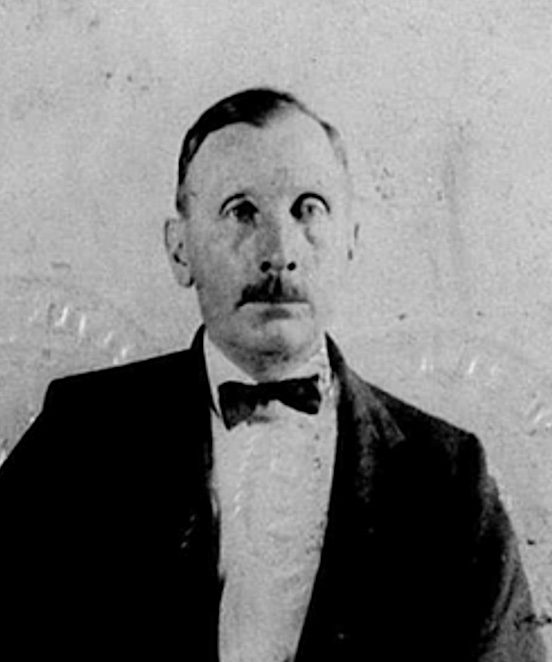

SABATINO (or SABATINE), DOMINICK (1919-2011). Private first class, Infantry, United States Army. According to the 1920 census, Dominick’s father, Alfred, was born in Italy, immigrated to the United States in 1911, and was a private chauffeur. His mother, Mary, was born in Manhattan. The couple’s two children, Mary and Dominick, were born in New York City. The 1930 census records that the family resided on West 7th Street in Brooklyn and his father was taxicab chauffeur. The family had grown to five children with the births of his brother, Frank, and sisters, Anna and Rose. As per the 1940 census, the family’s residence was 187 Avenue U in Brooklyn. The census records that this residence was a two-family home where the eldest daughter and her husband lived in one section and the rest of the Sabatino family, consisting of the parents and younger children, lived in another section. His father was the owner of an undertaker business and the twenty-one-year-old Sabatino worked as a bookbinder.
Sabatino’s New York National Guard Service Card records that he enlisted on April 12, 1937, served in the 244th Coast Artillery, and was honorably discharged on April 11, 1940. His last name is documented, incorrectly, as “Sabatine,” and his date of birth is mistakenly recorded as June 23, 1918; the United States Social Security Death Index lists his birth date as June 28, 1919. According to his enlistment record for World War II, he enlisted on September 16, 1940, was 5′ 6″ and weighed 138 pounds. The record also documents that he completed two years of high school and his civil occupations were in laundering, cleaning, dyeing, and pressing apparel. The branch he was assigned was transcribed as Coast Artillery Corps or Army Mine Planter Service. His date of birth is recorded as 1918 and his last name as “Sabatine.” According to his daughter-in-law, Sabatino met his future wife, Cottie “Evelyn” Hodges, in Virginia Beach while he was stationed at Camp Pendleton in Virginia. As per their certificate of marriage, they married on July 3, 1941. This document also records his last name as “Sabatine.” His draft card indicates that his address was 323 Avenue U, Brooklyn, he was 26 years old, and his mother was his contact person. His birthdate is recorded as June 23, 1919, and his last name is spelled “Sabatine.” The registrar’s report, dated August 18, 1945, documents him as 5′ 7″ tall, 155 pounds, with blue eyes, brown hair, and sallow complexion.
Little is known about his military service other than he served in the infantry and was stationed at Fort Pendleton. According to his obituary in the Daily News, dated August 2, 2011, he served as lieutenant governor of the Kiwanis and as exalted ruler of the Order of Elks. His wife predeceased him, and the couple had one son, Donald. As per his family, he was known as “Danny,” resided at 323 Avenue U in Brooklyn for over seventy years, and owned the Sabatino Funeral Home, located at the same address, for over 45 years. Section 33, lot 45115, grave 2.

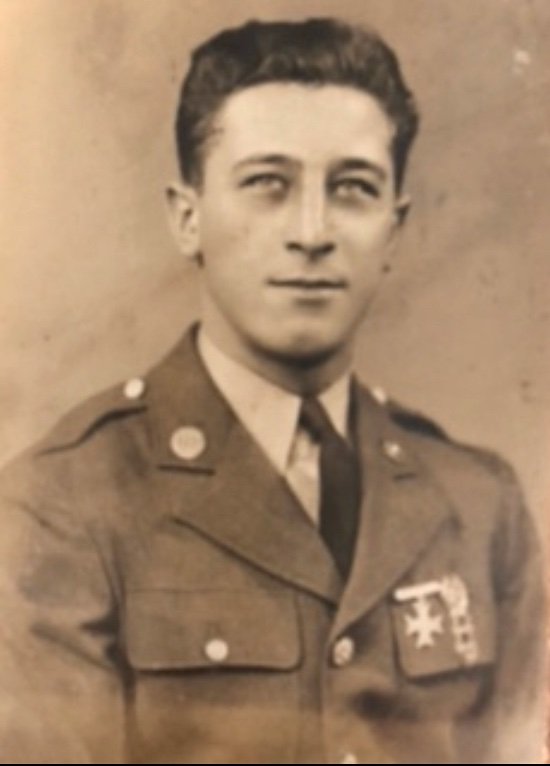
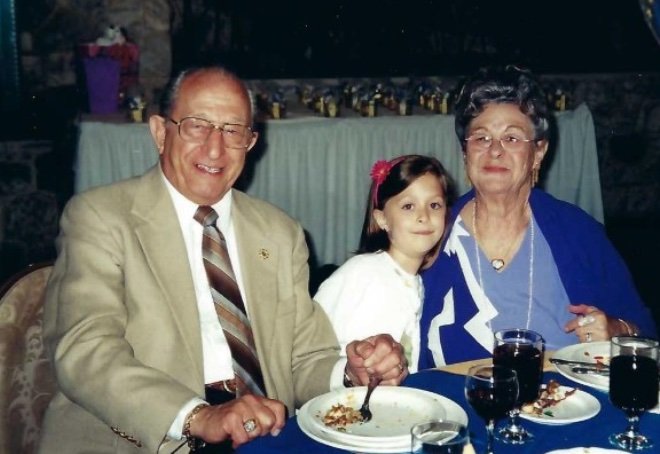
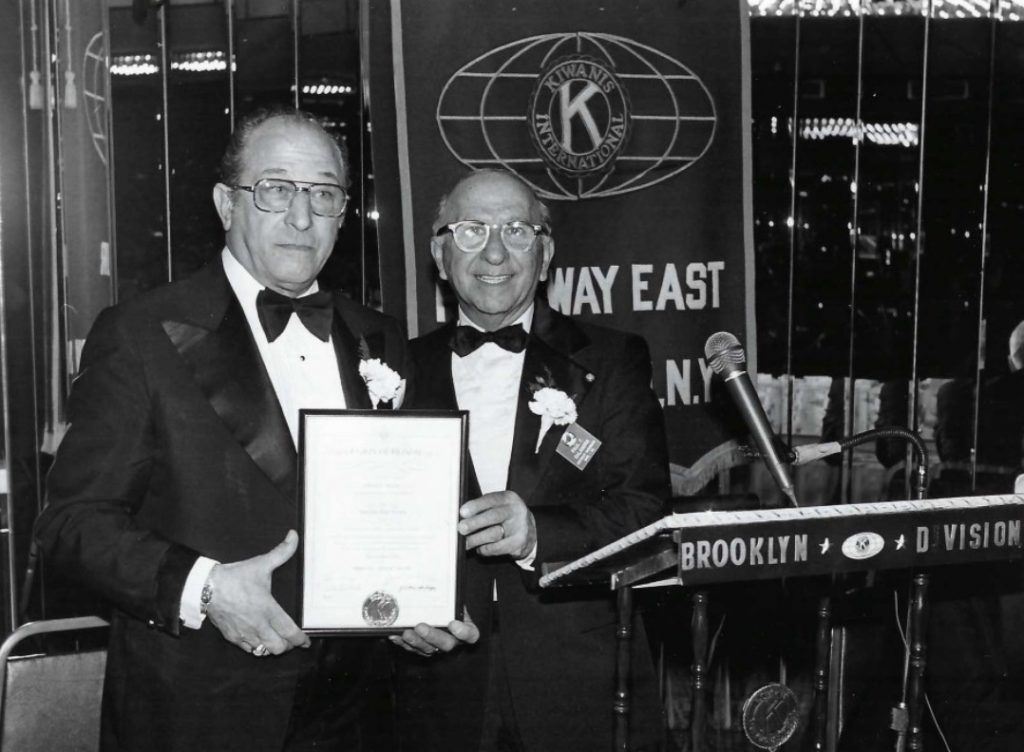
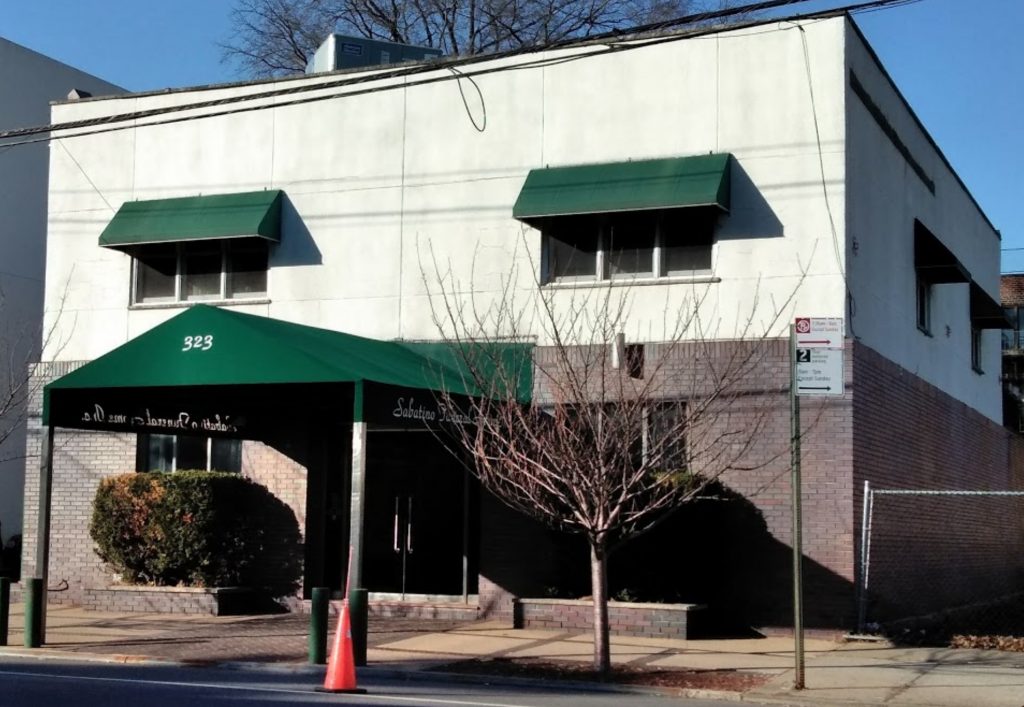
SALAZAR, JOSEPH (or GIUSEPPE) (1920-1994). Corporal, 115th Antiaircraft Artillery, D Battery, United States Army. According to the New York City birth index, Salazar was born in Manhattan and his first name is recorded as “Giuseppe.” The 1930 census documents that his family resided on 86th Street in Brooklyn. His father, Casamero, was born in Italy and was a laborer in the furniture business. His mother, Mary, was also born in Italy. Salazar had one younger brother, Dominick, and two younger sisters, Rose and Madeline, all born in Manhattan. The 1940 census records that the family was residing on Bay 26th Street in Brooklyn. His father’s occupation was watchman with a salary of $1,300. Both Salazar and his brother are listed as electricians, each with a salary of $250. The Brooklyn marriage license record notes that Salazar married Sophie Rosalie Schwartz on April 3, 1941. The couple had two daughters, Marie and Linda.
Salazar’s World War II draft card states that he was 21 years old and that his father was his contact person. He was employed as a bit gauger for R. Hoe Company located at 138th Street and Cypress Avenue in the Bronx. His World War II Army enlistment record, dated March 26, 1943, states that he was married, had completed three years of high school, and was a chauffeur and “driver of bus, taxi, truck and tractor.” This record erroneously reports his height as 22 and weight as 093. As per his daughter, he served with the 115th Antiaircraft Artillery (AAA), D Battery, under the 3rd Army (General George Patton’s command). He enlisted as a private and rose to the rank of corporal during his service. He took part in the D-Day Invasion on June 6, 1944 and fought in France at the Battle of the Bulge from December 16, 1944 through January 1, 1945. Salazar’s daughter, Linda, recalls, “He drove a truck and jeep named Sophie after my mother. He was in the Battle of the Bulge. He was ordered by his commanding officer to advance down a road that had not yet been cleared. He advanced, but he drove backwards, and a mine exploded. He was wounded in his leg. He was so eager to leave the service, he left the hospital immediately after returning to the United States, not even waiting for his wounds to heal. There was no report done for his Purple Heart. He introduced both my uncles – one from the same regiment and a friend from the Navy – to his sisters and they were married.” After the war, Salazar owned and drove a taxi for over forty years. Section 24, lot 4586.

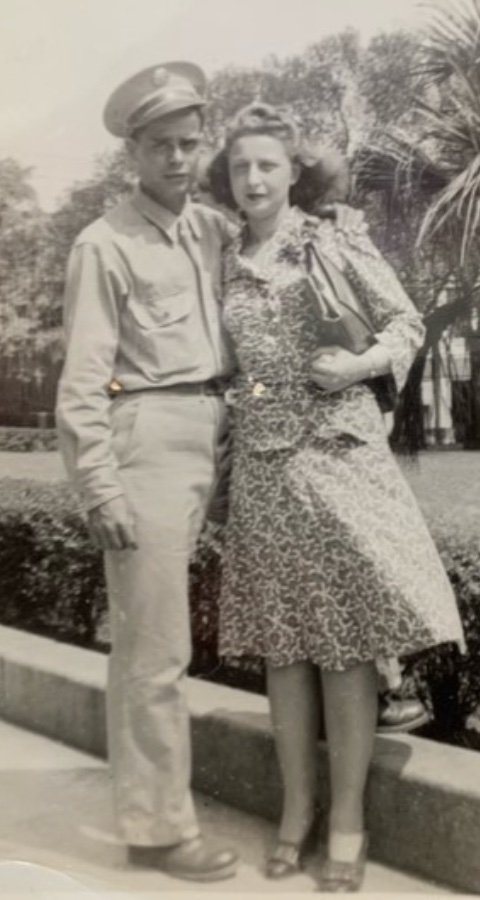
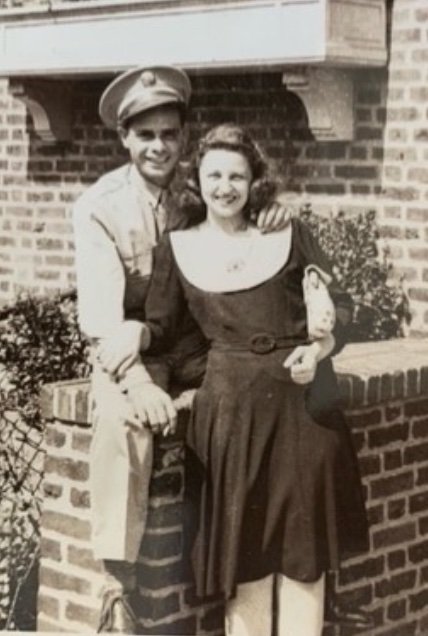
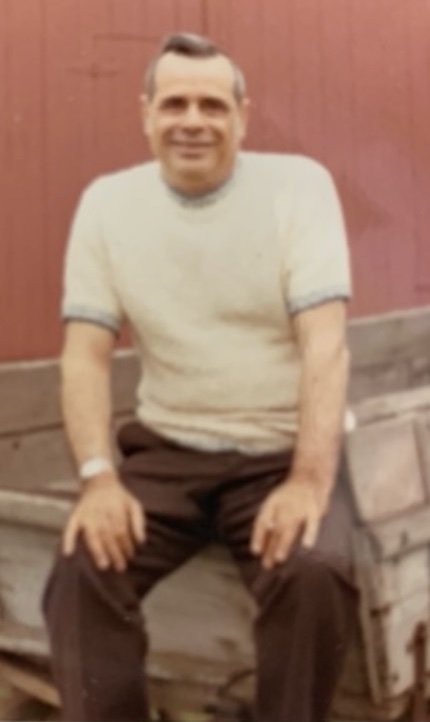
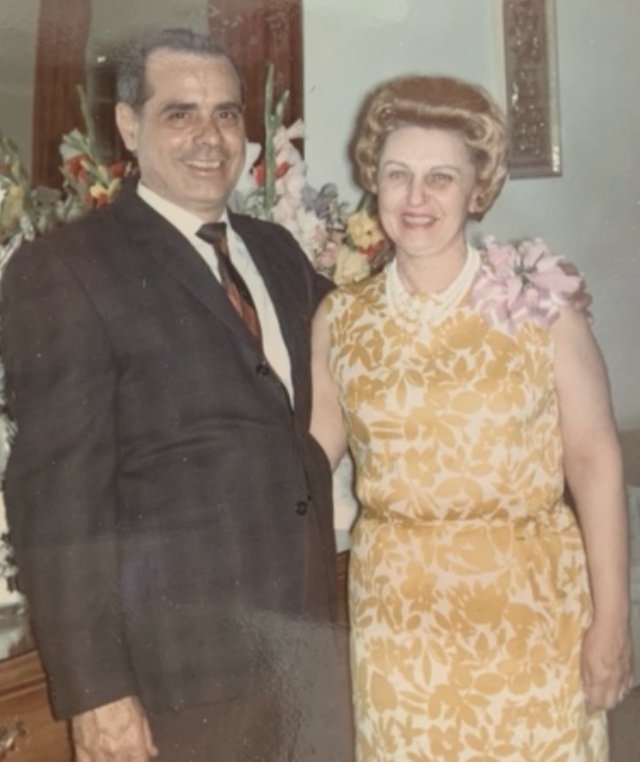
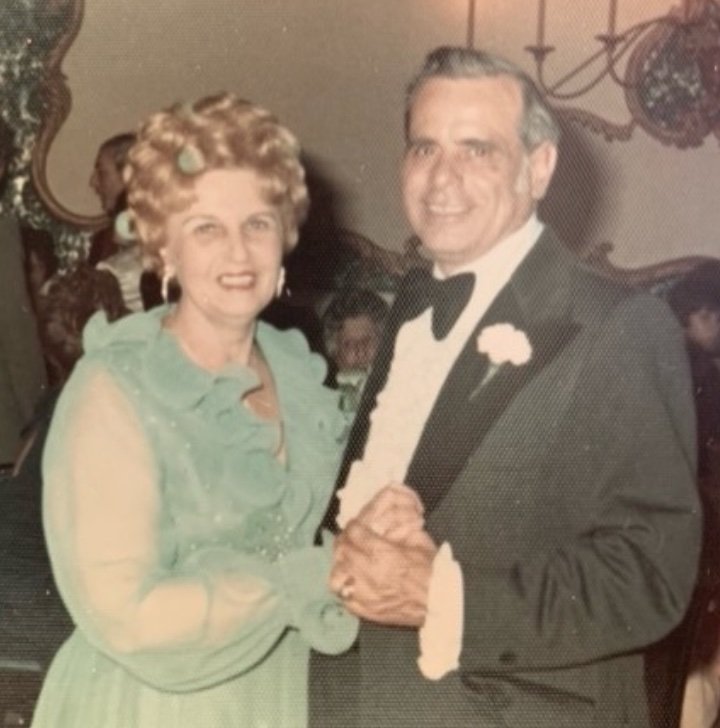
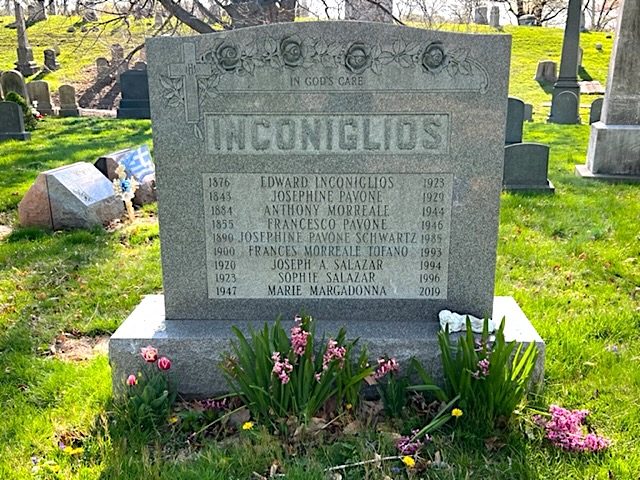
SALDANA, ANTHONY JOHN (1923-1988). Private, American Expeditionary Forces, United States Army. As per the 1940 census, Anthony was a student, and was living with the following Saldanas at 490 Washington Avenue in Brooklyn : Vincent (43), Catherine (29), Salvatore (19), Joseph (12), James (5), Margaret (3) and Rose (less than 1).
Saldana’s draft registration card, filed in 1942, reports that he was living at 270 48th Street in Brooklyn. He listed Mrs. Melania Saldana (relationship unknown) as his contact and noted that he was working for Hiller Brothers at 250 West 39th Street in Manhattan. As per his registrar’s report, he was 5′ 6″ tall, 135 pounds with brown eyes, brown hair and a dark complexion. His World War II Army enlistment record reports that he was single with dependents, had completed four years of high school and was a shipping and receiving clerk in civilian life. He enlisted at New York City on April 6, 1943, with the rank of private. Although it is unclear where he was stationed, Saldana was admitted to the hospital for one month from February through March 1944 suffering from astigmatism and impetigo, a skin disease, on his face. He was admitted to the hospital again in July 1944 suffering from eczema. That admission record notes that he was an enlisted infantryman who had been in service for one year and three months. Anthony’s third hospital admission in September 1944 notes that he suffered a bullet wound to the femur in the line of duty with the causative agent described as “bullet, missile not stated.” He was discharged in October 1944 as per Section II Army Regulations for line of duty casualty.
On May 28, 1946, Anthony obtained a marriage license in Brooklyn to wed Divina G. Elia. As per his obituary in the New York Daily News, he died suddenly and was survived by his wife and children, Theresa and Maria. His brother Steve (perhaps the Salvatore on the 1940 census) was listed as a survivor. Mass of Resurrection was held at the Basilica of Perpetual Help. Section 30, lot 41014.
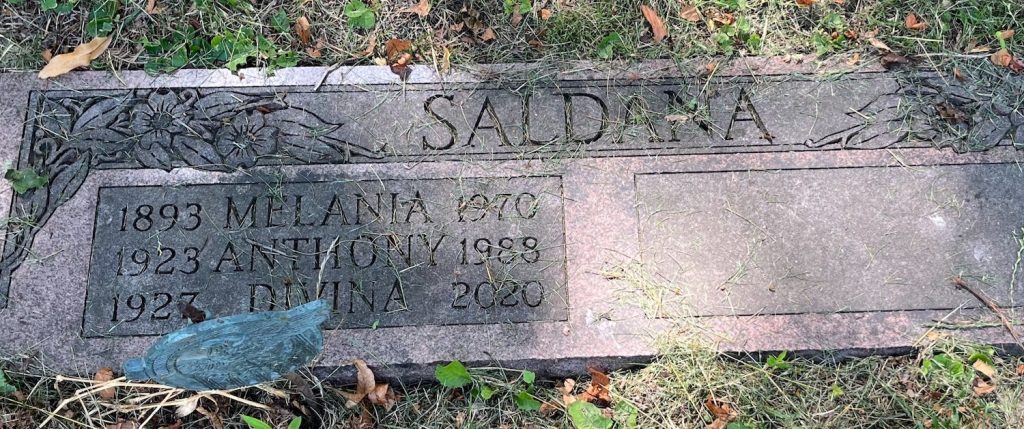
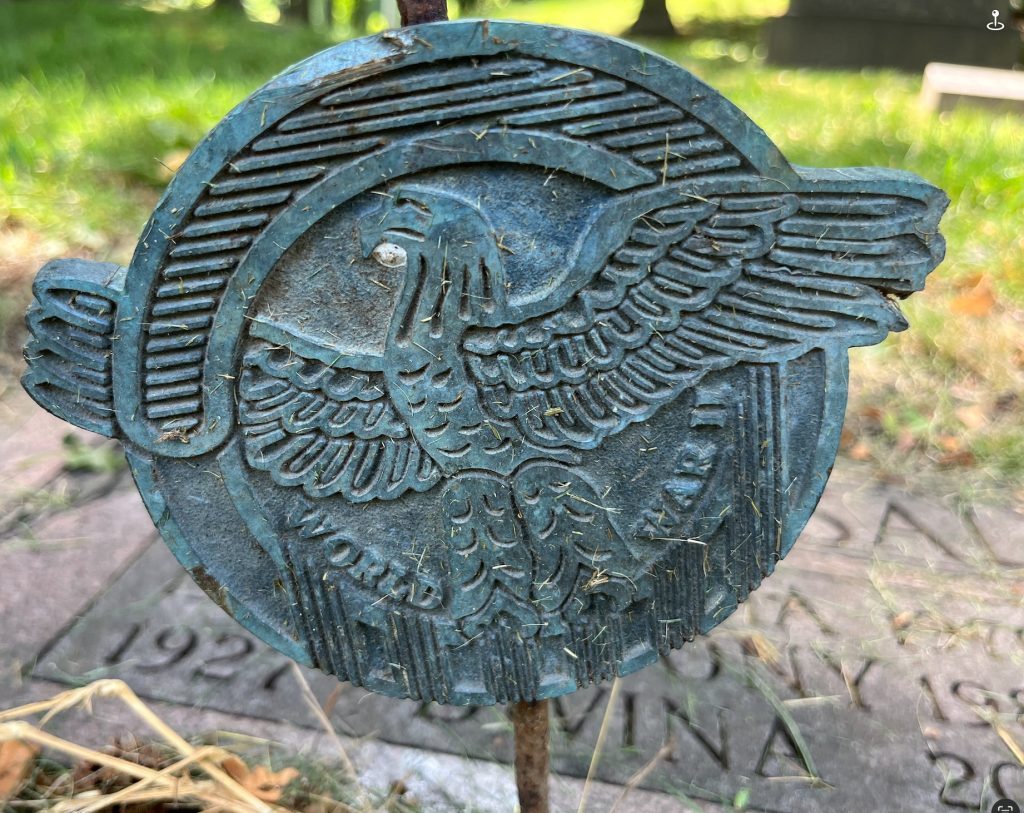
SARUNICH, GEORGE (1921-2015). Motor machinist’s mate first class, Torpedo Boat Squadron 4, United States Navy. Sarunich was born in Brooklyn as recorded in that borough’s birth index. As per the 1930 census, Sarunich lived with his parents, Marijam and Mary, and his older siblings, Nicholas and Helen, at 214 32nd Street in Brooklyn. That census indicates that his father was born in Dalmatia, Austria, and his mother was born in Poland; other documents give different birthplaces for his parents. His father worked as a longshoreman. The New York City death certificate index reports that on July 27, 1933, his brother Nicholas passed away at the age of thirteen due to a head injury. That index states that his mother was born in Austria. The 1940 census notes that the nineteen-year-old Sarunich and his family resided on 3rd Avenue, and that Sarunich had completed four years of high school. His father’s birthplace is listed as Yugoslavia.
Sarunich’s World War II registration card records that he was twenty-one years old, resided at 5013 3rd Avenue and his mother was named as next of kin. He worked at the Bush Terminal Buildings, Numbers 7 and 8, on 34th Street and 3rd Avenue. According to the muster roll of the crew for the USS Motor Torpedo Boat Squadron 26, Sarunich enlisted in the Navy on March 11, 1942. As a motor machinist’s mate second class, some of his responsibilities may have been operating and maintaining ship propulsion machinery, auxiliary equipment and outside machinery. He served with this squadron from March 1943 to April 1945 and also served with another torpedo boat squadron. The National Parks Service describes PT boats as “small, fast, and expendable vessels for short range oceanic scouting, armed with torpedoes and machine guns for cutting enemy supply lines and harassing enemy forces. Forty-three PT squadrons, each with 12 boats were formed during World War II by the U. S. Navy.” Torpedo Boat Squadron 26 was assigned to the Hawaiian Sea Frontier and did not see any action. From May 1945 to November 1945, Sarunich was assigned to Torpedo Boat Squadron 4. According to the Report of Changes, dated May 31, 1945, he had been promoted to motor machinist’s mate 1st class. This squadron trained others in Rhode Island. There is no record of Sarunich’s discharge date. After the war, he married Louise (Luisa) Pastore on March 29, 1945, and the couple had two children. He died in Brooklyn. Section 8, lot 44609, grave 259.

SAWAYA, GEORGE A. (1910-1972). Petty officer 3rd class, United States Navy. George Sawaya was born in the United States to Abdallah (Albert) and Mary, immigrants from Syria. As per Erin Sawaya, George’s granddaughter, Abdallah was from modern day Lebanon and Mary from Aleppo. The census notation of Turkey likely stems from the reach of the Ottoman Empire. According to the 1915 New York State census, the family (including older brother, Nicholas and younger brother, James) was living in Olean, New York, in Cattaraugus County. Albert Sawaya was employed by the Stillman Oil Refinery.
By the 1920 federal census, however, the three brothers were listed as “inmates” at the Home for the Friendless, in the Bronx. The listing notes that their parents’ original language was Albanian; the granddaughter believes that the language was either Lebanese or Arabic. It’s not clear how the brothers came to live at the Home, but in 1923 their mother married again, to George Jebaily, the proprietor of a kimono manufacturing company, who may have come to the United States from Syria. By the time of the 1930 federal census, George and his brothers, having long since left the Home, were living with their mother and stepfather in Brooklyn, along with two young half-sisters. George and his older brother were working for their stepfather as cost clerks. Erin Sawaya relates that Albert moved to Detroit after his divorce.
According to the 1940 census, 29-year-old George Sawaya was living on 79th Street in Brooklyn with his wife, Esther (née Dahir), and working as a pattern-maker in the needlework industry (his stepfather’s business). Although the census reported that his education ended after the eighth grade, his family adds that George had earned his high school diploma around 1930 by attending night classes at Bay Ridge High School.
In October 1940, just a week short of his 30th birthday, Sawaya registered for the draft. (According to the Selective Training and Service Act of September, 1940, all men between the ages of 21 and 35 were required to register.) However, he wasn’t inducted into the Navy until October 1943. According to his family, he was at sea from June 1944 until the end of the war, in August 1945.
Sawaya served on the USS Bataan, an aircraft carrier stationed in the Pacific, during the “island-hopping” campaign that wrested control of Japanese air bases from the enemy and brought United States forces within bombing range of Japan. In the spring of 1945, Bataan, with Sawaya aboard, participated in the Battle of Okinawa, a nearly three-month-long action, perhaps the costliest operation of the entire war in terms of lives lost. The war ended some weeks later, after atomic bombs were dropped on Hiroshima and Nagasaki, leading to the Japanese surrender.
Sawaya mustered out of the Navy on November 1, 1945, and resumed civilian life with his wife and two children, working in garment-making. He died of leukemia at age 61, according to his granddaughter, who added that his wartime exposure to toxic chemicals may have played a role in his death. Section 128, lot 364, grave 1.
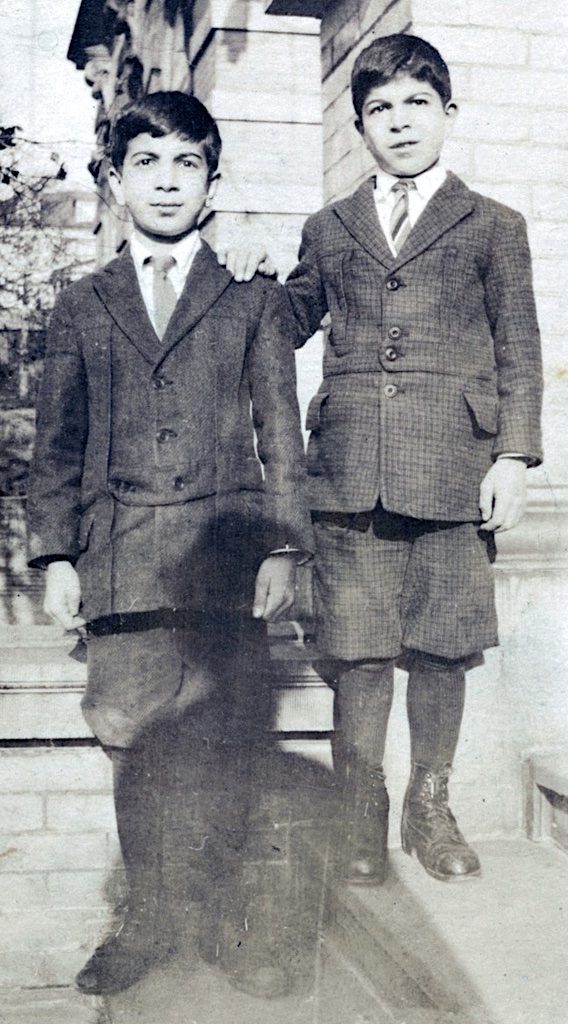
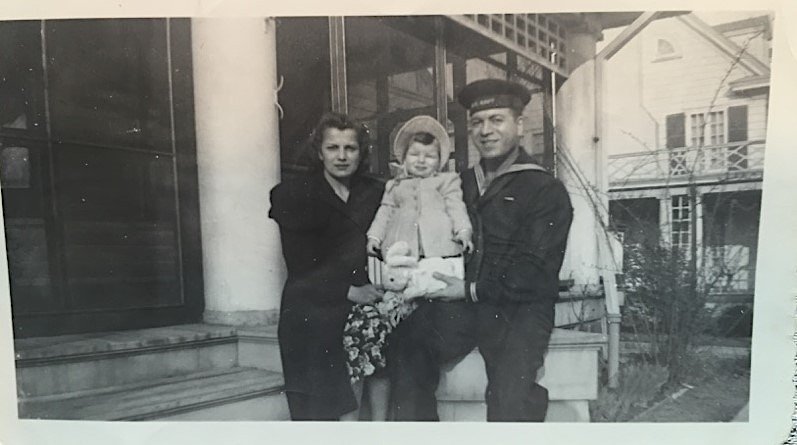
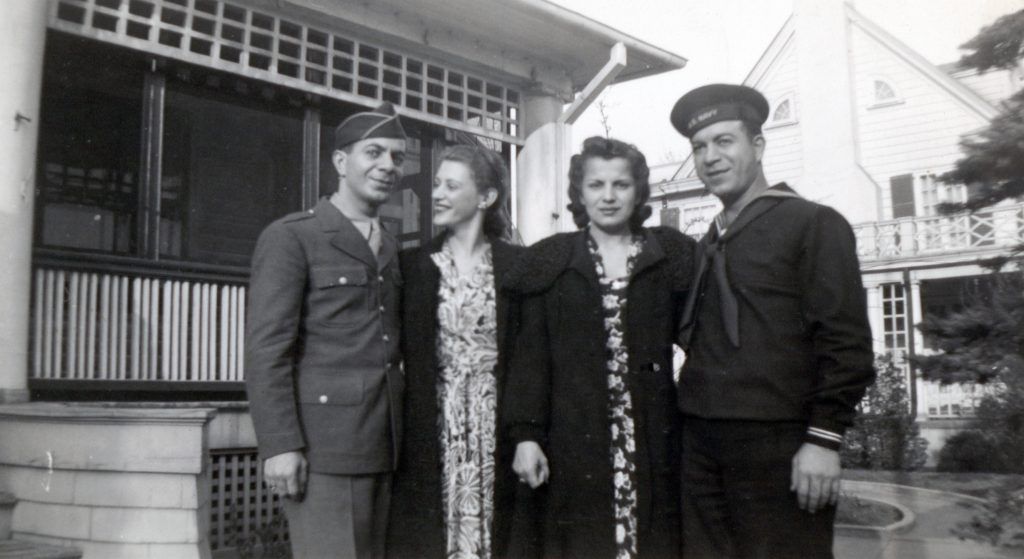
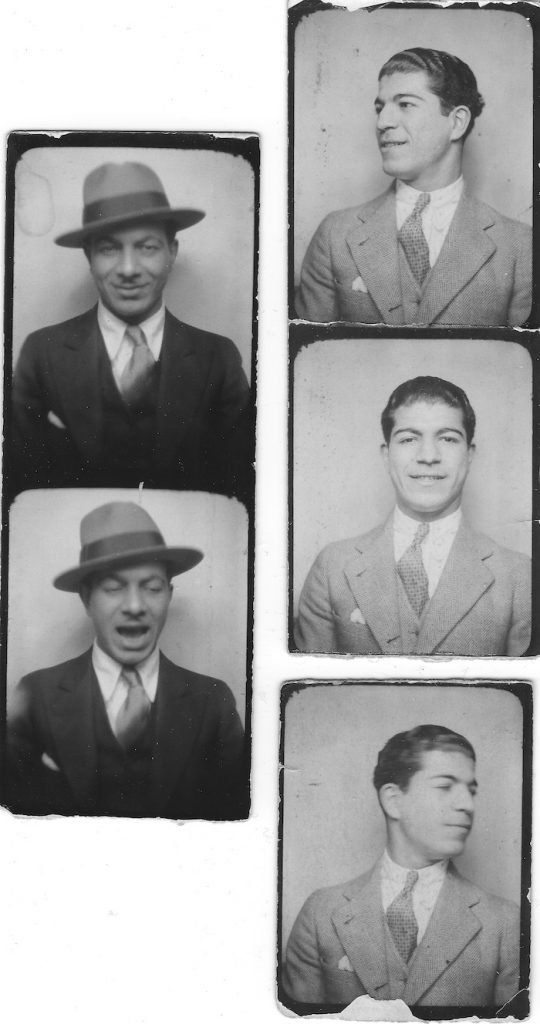
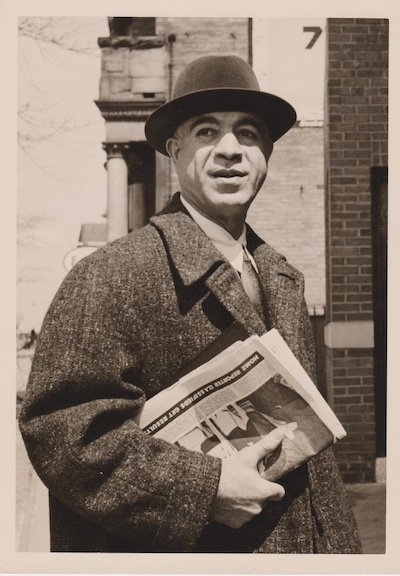

SAYEGH, GEORGE (1918-1982). Sergeant, 592nd Army Air Force Base, Army Air Corps, United States Army. According to the 1925 New York State census, Sayegh lived with his parents, Bashir and Ela, his older brother, Elia, and his younger siblings, Albert and Frances, at 197 Atlantic Avenue in Brooklyn. The census indicates that his parents were born in Syria, his older brother in Argentina, and he and his other siblings in the United States. His father, whose first name was erroneously spelled as “Beashir,” worked as a silk weaver. Also residing at the address was the Shuda family, namely, Habbib and Regina with their two sons and two daughters. The 1940 federal census notes that the twenty-one-year-old Sayegh resided at 200 Prospect Park West with his father, mother, and three younger siblings – Albert, Agnes, and Edward. His brother, Elia, and sister, Frances, are not included in that report. In the transcription, his father’s first name is spelled “Baker,” and his mother is referred to as “Helen.”
By 1939, Sayegh had completed the seventh grade, was a truck driver, and earned $360 for 36 weeks of work. The 1940 census indicates that Sayegh was born in Rhode Island. However, Sayegh’s World War II draft card documents that he lived at 1218 8th Avenue in Brooklyn, his place of birth was Summit, New Jersey, and his next of kin was his mother. He may have been self-employed or owned his own business as he listed himself as his employer with the business located at 2 West 28th Street in Manhattan. His registrar’s report, dated October 16, 1940, describes him as 5′ 2″ tall, 190 pounds, with brown eyes, black hair and a light complexion.
The World War II Army enlistment records indicate that Sayegh enlisted on March 23, 1943, with the rank of private. His civil occupation is recorded as “semi-skilled chauffeur and driver, bus taxi, truck, and tractor.” His height and weight are inaccurately transcribed at 45” tall and 74 pounds. According to the World War II hospital admission card files, he was admitted to an army hospital during January 1944 for “pilonidal cyst or sinus.” There is no specific discharge date other than the recorded year of “1944.”
As per his daughter, Mary Ann, he was promoted to the rank of sergeant, served in the 592nd Army Air Force Base Unit, and was stationed in England and Morocco, North Africa. His daughter shared that he was awarded the Good Conduct Medal, the European-African-Middle Eastern Campaign Ribbon, and the American Theater Ribbon. The United States Department of Veterans Affairs BIRLS (Beneficiary Identification and Records Locator Subsystem) Death File documents his discharge date as November 28, 1945.
The New York City marriage license index records that Sayegh and his future wife, Margaret Adele Sabbagh, applied for a marriage license on January 31, 1948. According to his daughter, they were married on January 31, 1948, and had five children. In his civilian life, Sayegh owned a trucking company for over thirty-five years. Section N, lot 43163, grave 1.
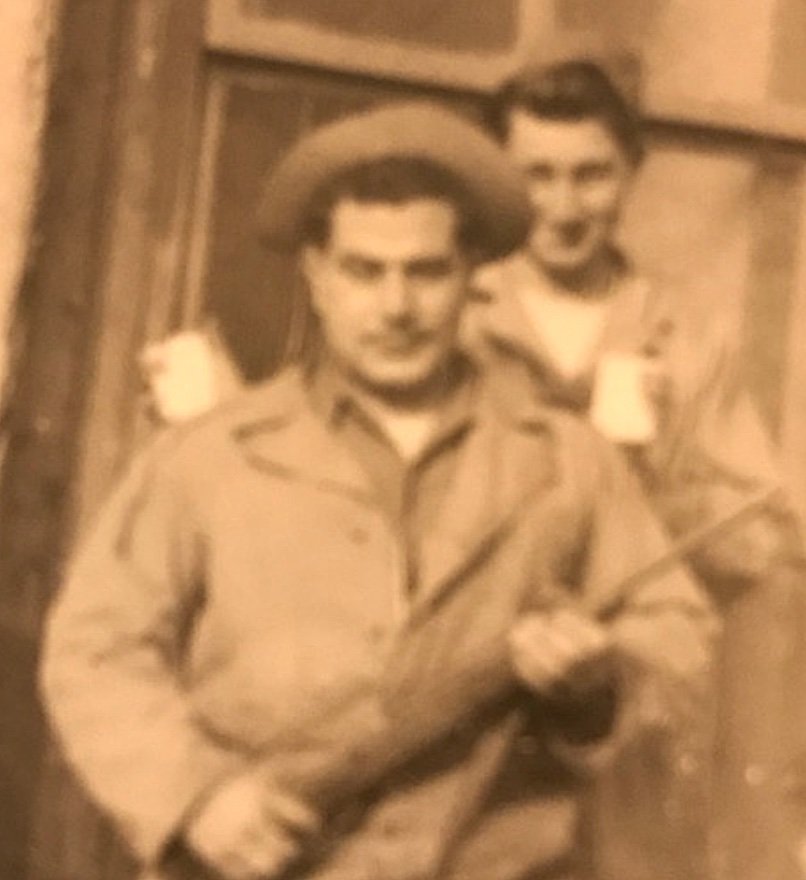

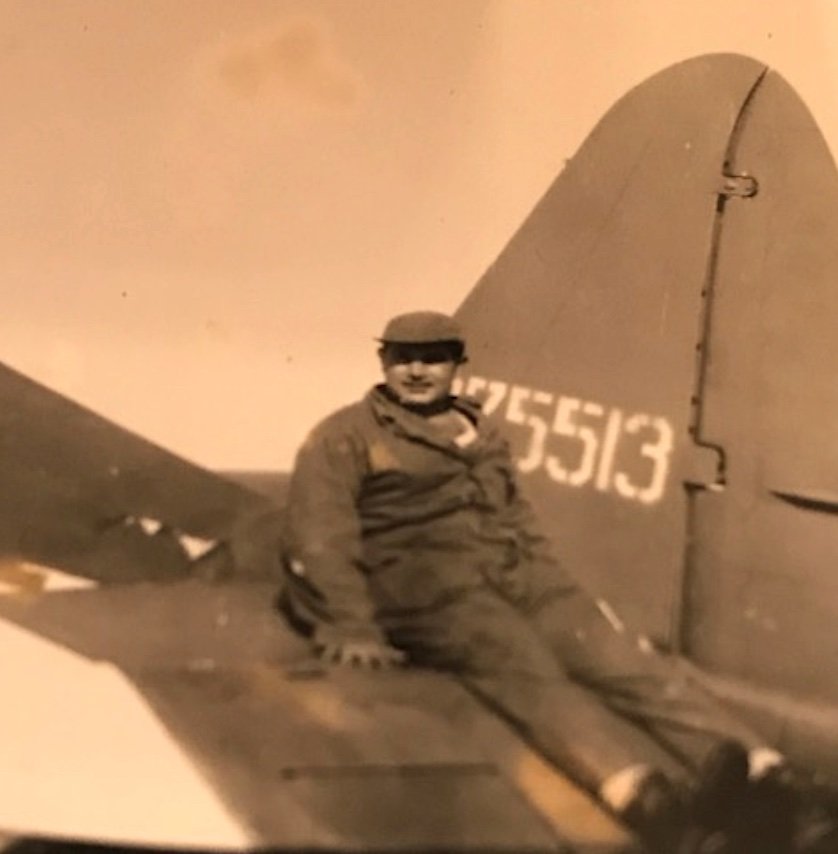
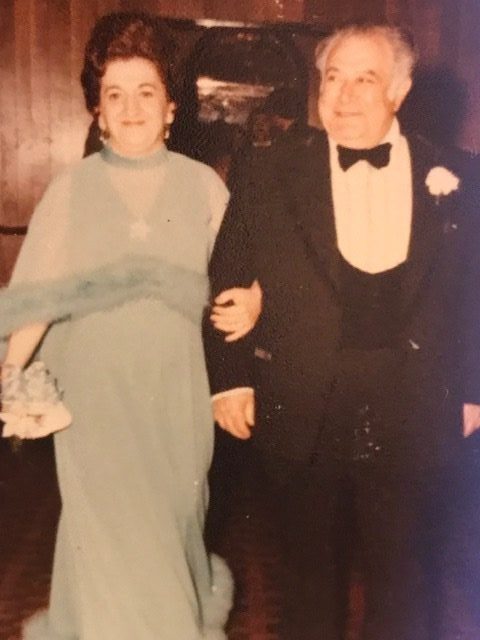
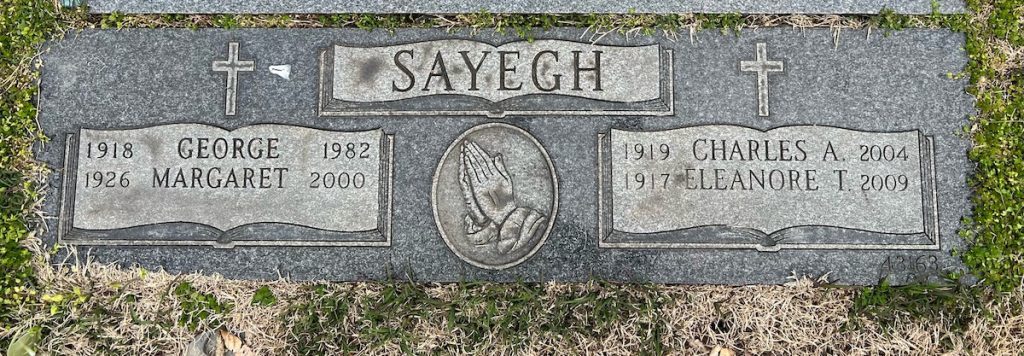
SCHAEFER, JR.,WALTER AUGUSTUS (1916-1990). Lieutenant, United States Navy. Walter A. Schaefer was born in Brooklyn. The 1930 federal census shows that Schaefer was living at 385 Passaic Avenue in Nutley, New Jersey, with his father, Walter A. Schaefer, age 39; his mother, K. Ruth Weber Schaefer, age 39; and two sisters, Martha M. and Florence L., age 3. Mary Watraz, a 23-year-old maid also resided in the household. Schaefer attended school and was able to read, write, and speak English. The elder Mr. Schaefer was an insurance broker.
According to Find a Grave, Schaefer’s father, Walter Augustus Schaefer, Sr., born in Newark, New Jersey, in 1890, started his own insurance company named Walter A. Schaefer & Co., with an office in Newark, and was in business until after World War II. His father George Schaefer was a baker in New York who had been born in Germany in 1847 and immigrated to the United States in 1871. His mother, Margaret Bahr, was born in Tusten, Sullivan County, New York, in 1829. Her father was a farmer, originally from Bavaria, Germany.
Schaefer’s mother, Katherine Ruth Weber, was born in 1889 to Lawrence A. Weber, a coal and wood dealer in Brooklyn, and Helen M. Williams. She attended Erasmus Hall High School in Brooklyn and graduated from Smith College. Schaefer’s parents were married in May 1914.
Schaefer’s draft registration card, filed when he was 25 years old, on October 16, 1940, shows him living at the same address in Nutley, with his mother, Ruth Weber Schaefer, as his next-of-kin. His employer was Robert Winternitz Advertising, on East 17th Street in New York, New York. Schaefer was 5′ 11″ inches tall and weighed 140 pounds, with light skin, blue eyes, and brown hair.
By 1940, Schaefer was living at 1 Memorial Park Drive (later 19 Calico Lane) in Nutley, New Jersey. He served in the United States Navy during World War II. He was part of the crew of the USS Upshur from 1941 to 1945, which escorted United States ships across the Atlantic Ocean from 1941 to 1943, and on other escort missions from the United States Eastern seaboard to the Mediterranean Sea, North Atlantic, and Caribbean Sea from 1944 to 1945. Schaefer is listed as Lieutenant W.A. Schaefer of the United States Naval Reserve on the Roster of Officers sailing from Melville, Rhode Island to sea on October 2, 1944. He was also a commissioned officer on the USS Barney in 1945, which escorted convoys in the Caribbean, and engaged in training exercises with submarines in Long Island and Block Island Sounds.
An engagement announcement from the January 1, 1946 Passaic, New Jersey Herald News proclaims a spring wedding. Schaefer was then a lieutenant in the United States Naval Reserve and had been commanding officer of the destroyer Barney “when discharged from service recently.” The articles states that Schaefer had graduated from Duke University in 1938. Schaefer’s parents were living on Calico Lane in Nutley. His fiancée, Carol Johnson, the daughter of Mrs. Peder Johnson of Smithdale, Rhode Island, was a senior at Wheaton College in Massachusetts.
The 1950 federal census shows Schaefer living at 307 Log Road in Smithfield, near Providence, Rhode Island, with his wife, Ann C J E Schaefer, and son Peder A. Schaefer. He was president of Tideovers, Inc., a manufacturer of plastic rainwear, in Providence. After a divorce, Schaefer married for a second time on December 22, year unknown, in New York City. An engagement announcement appeared in the Abbeville Times, but the date of publication is not given. Ellen Manley, the bride, was a graduate of Louisiana State University and had worked at International Business Machines since then. Her mother was Mrs. Frank W. Kerksieck of Abbeville, Louisiana, and her late father was Frank W. Kerksieck, a bank president. According to the announcement, Schaefer retired from the United States Navy in 1953 and worked in advertising. In 1955, he became associated with Cone Milles, Inc., as director of marketing research. He also operated his own company, Walter A. Schaefer Textile Marketing Consultants. Schaefer and his second wife divorced in the 1950s.
Schaefer lived for 35 years at 44 West 10th Street in New York City’s Greenwich Village. According to the Find a Grave website, he was an accomplished cook and attended St. Joseph’s Roman Catholic Church in Greenwich Village. He participated in neighborhood choral arts groups, including the Greenwich Village Singers, and was a long-time student at the Art Students League, producing many oil paintings. He owned several sailboats over the course of his adult life, including “The Cheetah,” which he sailed along the East Coast.
Schaefer died in Rhode Island Hospital in Providence, Rhode Island, in October 1990. His father died later that same year, on December 1, at 100 years of age. K. Ruth Weber Schaefer, Schaefer’s mother, is interred in Green-Wood in the same plot as her son. Section 196, lot 44287, grave RRC.
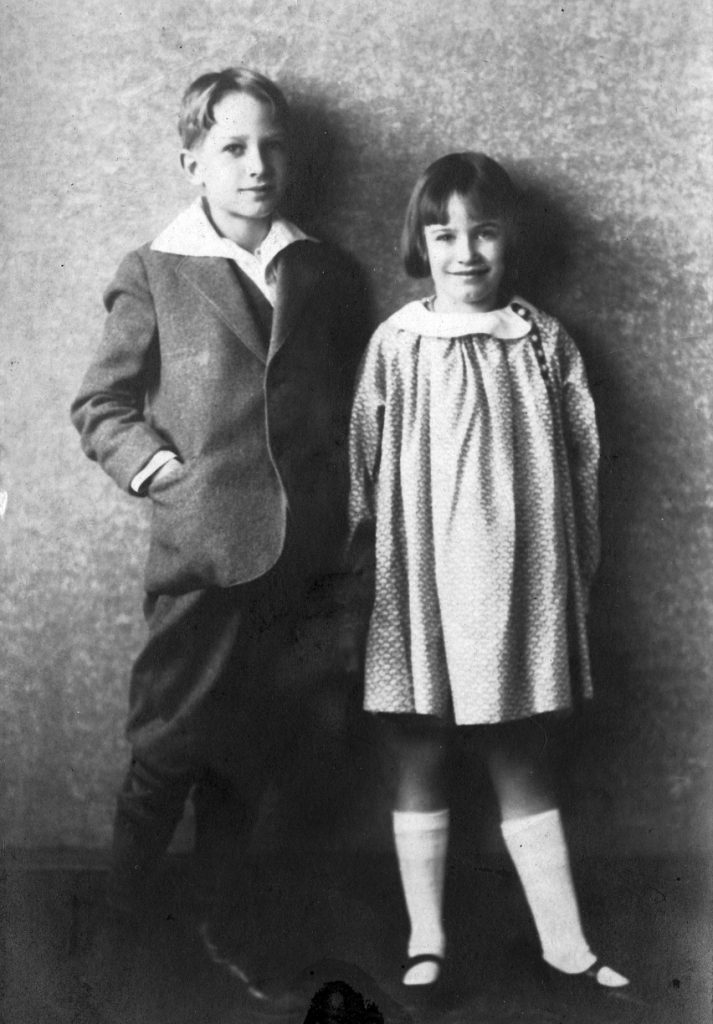
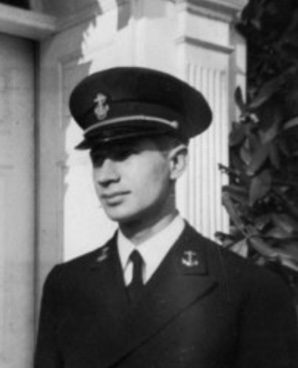
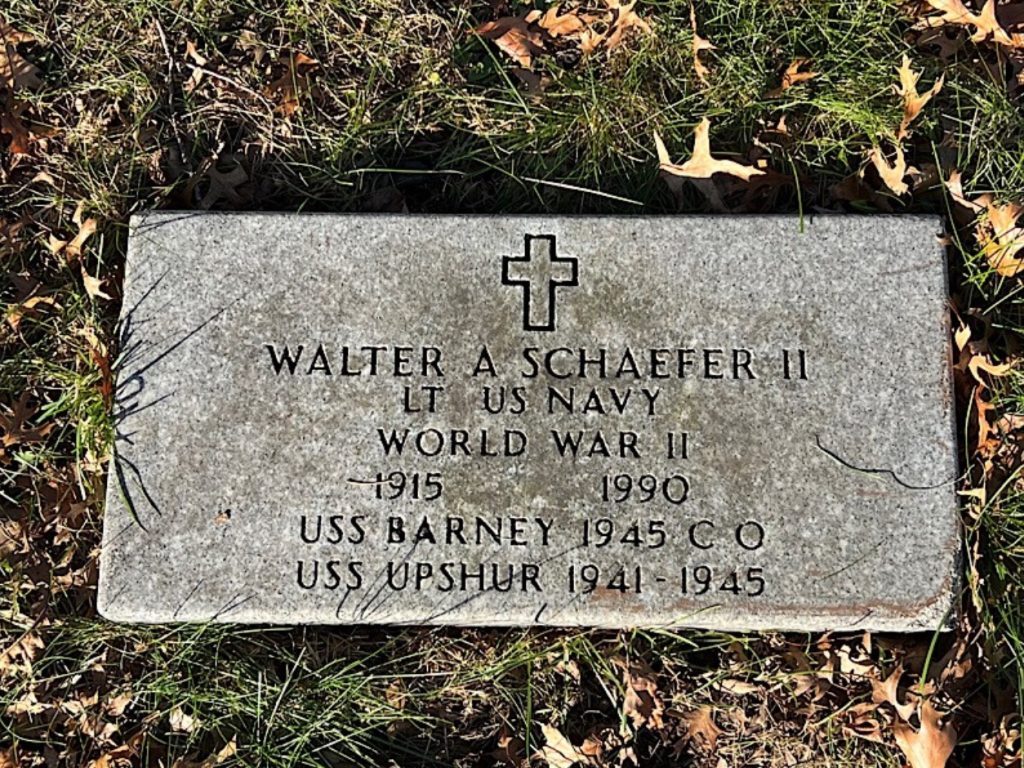
SCHLINGHEYDE, CHARLES H. (1920-2010). Lieutenant, United States Navy. The 1920 federal census, the year of Charles’s February birth, reports that his parents, Arno and Catherine, were born in New York. He had two older siblings, Arnold and Ernest and his family lived on 201st Street in Queens. Schlingheyde’s picture is published in the 1940 Springfield College yearbook, Massasoit; that college is located in Springfield, Massachusetts. The 1941 college yearbook includes a photograph of Charles standing with his junior year classmates. He must have been a proficient student and sports enthusiast as his accomplishments are listed as follows: “Major: Premedical; Minor: Chemistry, Biology, General Science; freshman football, gymnastics, track; junior varsity soccer (1 year), varsity gymnastics (3 years), track (3 years); Maroon Key Society.” On the lighter side, the yearbook states: “If you can’t sneeze his name, call him ‘Charlie’.” Charles was also Springfield’s college representative at the Mount Holyoke Scientific Conference in 1941.
Little is known about Schlingheyde’s service during World War II. He is pictured in the October 27, 1943, issue of the Navy Cruise Boat along with other ensigns.
As per Virginia marriage records, he and Mary Balamaci registered their union on August 13, 1949, in Alexandria, Virginia. The 1950 federal census documents that he was 30 years old, had completed four years of college, and was a group agent for an insurance company. He and his wife lived with his in-laws at 3052 Kingsbridge Avenue in the Bronx. His father-in-law is listed as “head of house.” He last lived in Franklin Square, Nassau County, New York. Section 103, lot 4474.
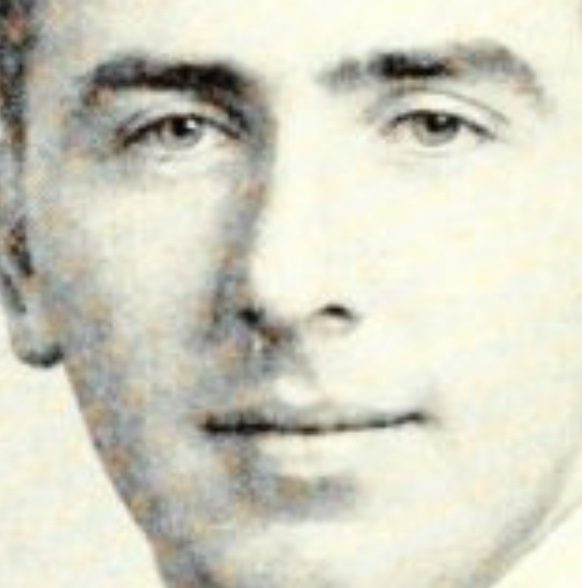

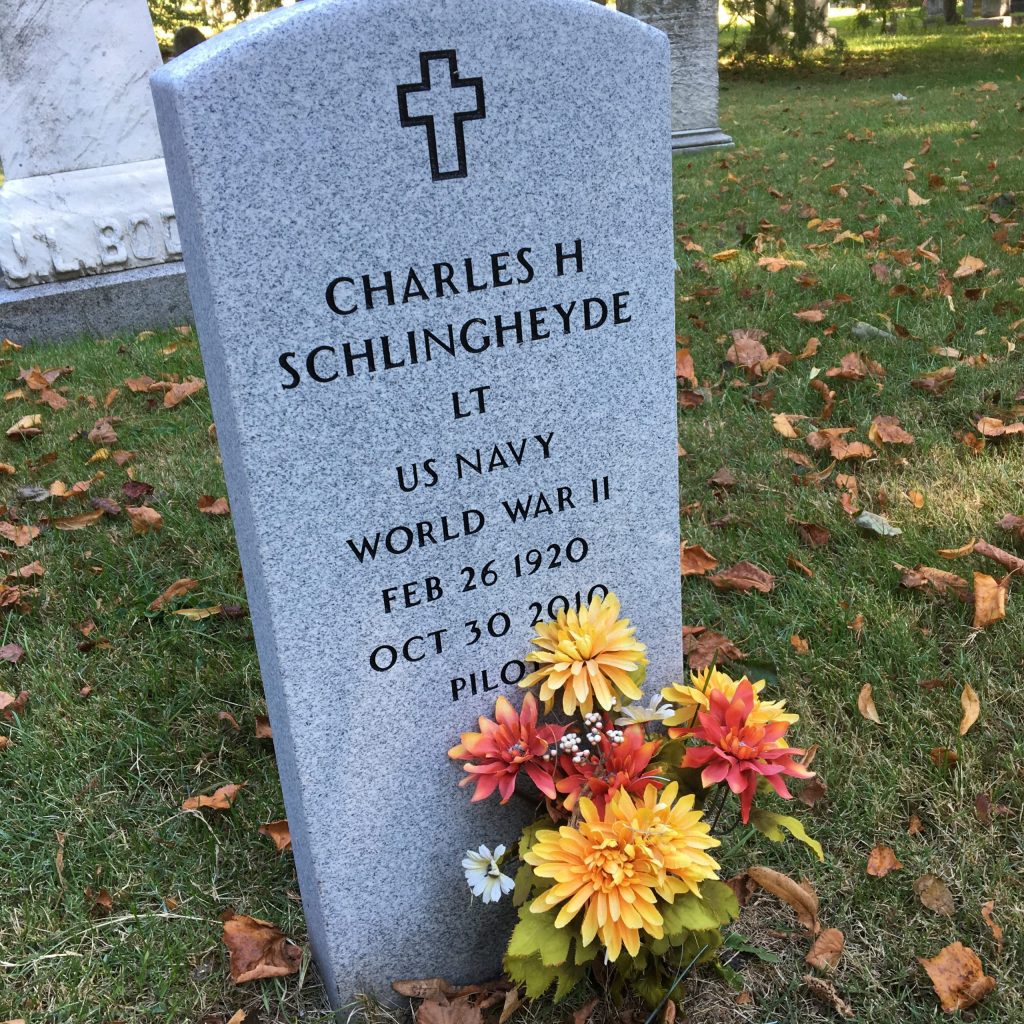
SCHWER, HOWARD JULIUS (1913-1991). Corporal, United States Army. Schwer was born in Brooklyn and is the older brother of Roy (see). The 1920 census reports that he lived with his parents and brother on 10th Street in Brooklyn; his father, a German immigrant, became a naturalized citizen in 1898, five years after his arrival in the United States and worked as a plumbing contractor. The 1930 census reports that the family lived on 82nd Street in Brooklyn. On June 27, 1930, Schwer’s graduation from Manual Training (now John Jay Educational Campus) High School was featured in the Brooklyn Daily Eagle; he was awarded the medal for perfect attendance and punctuality. The 1940 census shows that the family lived at 475 82nd Street in Brooklyn, had a lodger and that Howard was a law clerk.
As per his draft registration card, he lived at 475 82nd Street, listed his mother as next of kin and worked for a law firm on 17th Street in Brooklyn. His registrar’s report indicates that he was 5′ 10½” tall and weighed 165 pounds, with blue eyes, blond hair and a light complexion. His World War II enlistment record shows that he enlisted as a private at New York City on February 12, 1943. He was a salesperson who had completed four years of college, was white and single. Howard Schwer’s military service is confirmed by an article in the Brooklyn Daily Eagle on March 9, 1944. That article notes that Corporal Howard Schwer of 575 82nd Street was at Camp Lee, Virginia, after a furlough and was a recipient of the Good Conduct Medal; the address noted is incorrect in that the family lived at 475 82nd Street. That same article notes that Roy Schwer, a private first class, was stationed in England, also held the Good Conduct Medal and was the recipient of the European Campaign Ribbon.
The Brooklyn Daily Eagle reported on April 19, 1948, that Englebert Schwer, Roy’s father, died and would be interred at Green-Wood; that same paper reported on March 5, 1950, that Julia, Roy’s mother, died suddenly; she is interred with her husband. According his brother’s marriage announcement in the Brooklyn Daily Eagle on May 13, 1951, which incorrectly identified the groom as Roy Howard Schwer, Howard Schwer was the best man. As per his death certificate, he was married to Marci (Marcia), worked as a manager at Tiffany & Company, was a college graduate, and lived at 476 Lane B Comanche in Stratford, Connecticut. He is buried with his parents, wife, brother and sister-in-law. Section 178, lot 37989, grave 1.
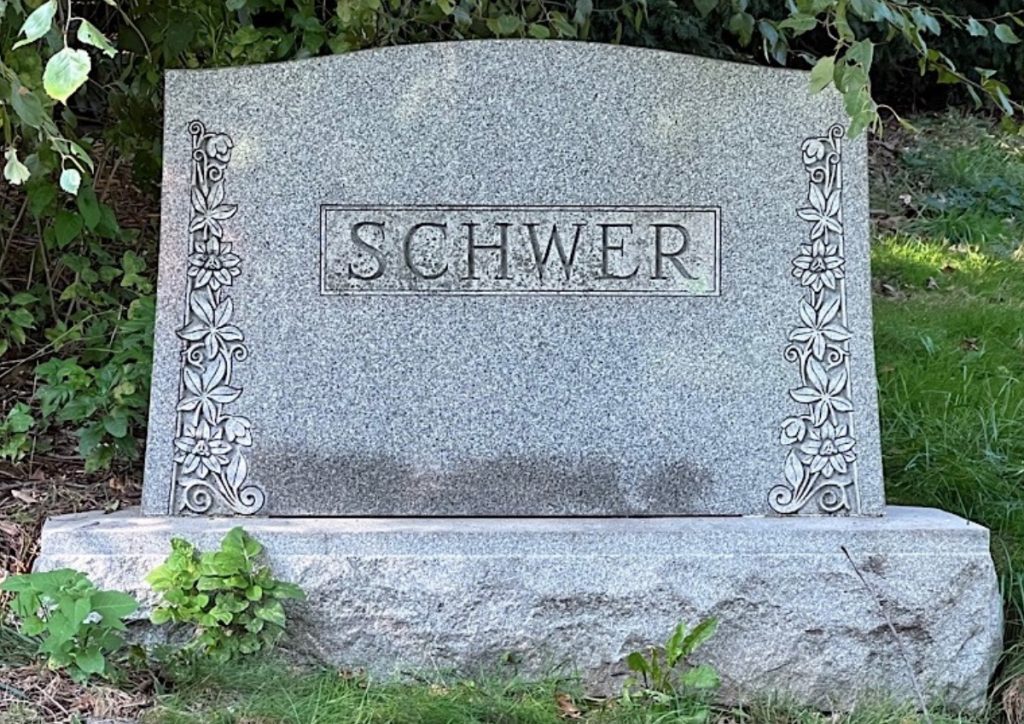
SCHWER, ROY IRVING (1918-2006). Private first class, United States Army. A Brooklynite by birth, Roy Schwer was the younger brother of Howard (see). At the time of the 1920 census, Roy lived with his parents and brother on 10th Street in Brooklyn; his father, a German immigrant, became a naturalized citizen in 1898, five years after his arrival in the United States and worked as a plumbing contractor. The 1930 census reports that the family lived on 82nd Street in Brooklyn and that their neighbors were the Larsens, the family of Roy’s future wife, Florence.
On January 30, 1937, the Brooklyn Daily Eagle featured an article on Roy’s graduation from Manual Training (now John Jay Educational Campus) High School. That article focused on the speech given to the graduates by William Slater, the headmaster of Adelphi Academy, who had just returned from Europe where he had broadcast the Olympic games in Berlin and where he had visited many schools. Slater noted that enrollment in German universities had declined 50 percent and that American students should take a more active interest in politics. Slater told the graduates, “It is not how much you get out of the country that counts, it’s how much you give it.” The family lived at 475 82nd Street when the 1940 census was taken and a lodger lived with the Schwers.
At the time he filed his draft registration card, Roy lived at 475 82nd Street in Brooklyn, had a home telephone, listed his mother, Julia, with whom he lived, as his next of kin and worked for the Brooklyn Trust Company at 7428 Fifth Avenue in Brooklyn. His registrar’s report states that he was white, stood 6′ tall, weighed 165 pounds and had blue eyes, brown hair and a light complexion.
He enlisted as a private at Camp Upton in Yaphank, New York, on February 6, 1942. As per his World War II enlistment record, he was single, a U. S. citizen, had completed four years of high school, worked as a clerk in a financial institution, was 5′ 10″ tall and weighed 155 pounds, and was assigned to the Army. His enlistment was for the duration of the war plus another six months subject to the discretion of the President. An article in the Brooklyn Daily Eagle on March 9, 1944, notes that his brother, Corporal Howard Schwer of 575 82nd Street, was at Camp Lee, Virginia, after a furlough and was a recipient of the Good Conduct Medal; the address noted is incorrect in that the family lived at 475 82nd Street. That same article notes that Roy Schwer, a private first class, was stationed in England, and held the Good Conduct Medal and the European Campaign Ribbon. As per Roy’s engagement and marriage announcements in the Brooklyn Daily Eagle, he served overseas for three years with the United States Army Corps of Engineers. He was discharged on October 20, 1945.
The Brooklyn Daily Eagle reported on April 19, 1948, that Englebert Schwer, Roy’s father, died and would be interred at Green-Wood; that same paper reported on March 5, 1950, that Julia, Roy’s mother, died suddenly; she is interred with her husband. On May 21, 1950, Roy became engaged to Florence Larsen; their engagement was announced in the Brooklyn Daily Eagle. Ms. Larsen, a graduate of Fort Hamilton High School, attended Pratt Institute and was active in Girl Scouts. The engagement announcement confirms Roy Schwer’s World War II service and his three years with the Army Corps of Engineers. Schwer and Ms. Larsen obtained a marriage license in Brooklyn on April 14, 1951; they married on May 12 at the Church of the Good Shepherd in Brooklyn. According to their marriage announcement in the Brooklyn Daily Eagle on May 13, 1951, which incorrectly identified the groom as Roy Howard Schwer, the reception was held at the Larsen home and Howard Schwer was the best man. That article, which confirms Roy’s World War II service in Europe, reports that the bride was a graduate of the Pratt Institute of Home Economics and the groom was a graduate of Cooper Union.
In 1981, he lived at 475 82nd Street, his childhood home. Phone records from 1993-2002 show that he still lived at that address. He last lived in Brooklyn, presumably at that same residence. Section 178, lot 37989, grave 3.
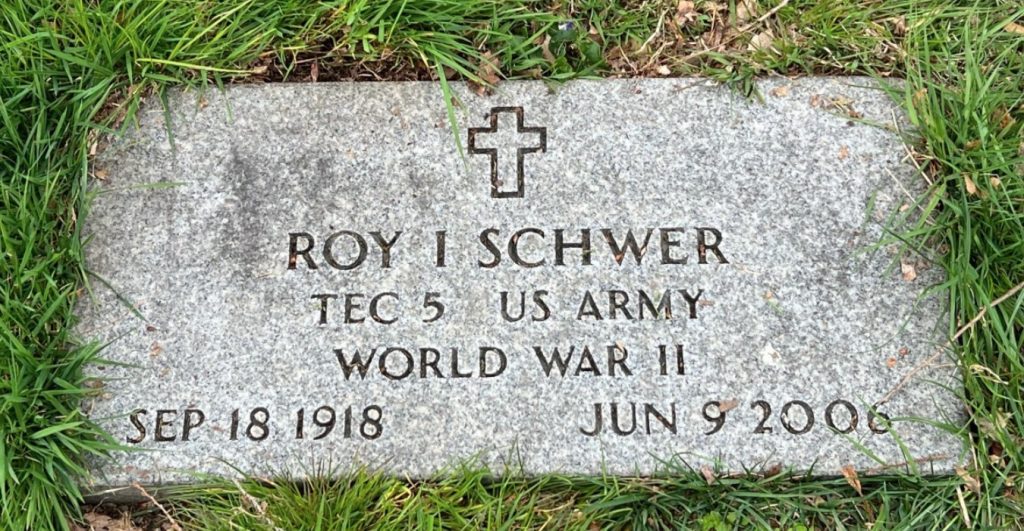
SCONZO, LAWRENCE (or LORENZO) JOSEPH (1912-1996). Major and medical officer, 23rd Engineers, 3rd Armored Division, United States Army. Sconzo was born in Brooklyn; birth records show that he was originally named Lorenzo. At the time of the 1920 census, the Sconzo family was living on Union Street in Brooklyn; Lawrence’s parents, Frank and Elizabeth née DiGiovanna, were Italian-born and Frank, a grocer, was a naturalized citizen. Living in the household were seven children, Lawrence’s older brothers Francis and Joseph, and younger siblings Thomas, Fannie, Charles and Rose. In addition, Frank’s parents and their son were living with them. The 1925 New York State census reports that there were two more children, Dorothy and Angeliza; Lawrence was in school, his grandmother still lived with the family on Union Street and his uncle and his wife lived next door.
The family still lived on Union Street in 1930 and Frank Sconzo was a grocery storekeeper; their home was valued at $5,500. There were three more children, James, Frank Jr. and Mary. An article, “Speaking of Grandpas,” on October 24, 1930, in the Brooklyn Times Union reported that Frank Sconzo, age 42, the father of 12 children and grandfather of two, claimed that he was the head of the largest family in Brooklyn and was the youngest grandfather in Brooklyn when he was 37. That article went on to state that when Frank visited Italy for the fourth time since moving to the United States, he showed Premier Benito Mussolini as picture of his family and was the recipient of a letter from Mussolini congratulating him. His obituary notes that there were ultimately 14 children in the family.
As per his obituary in a Glens Falls newspaper, the Post-Star (Queensbury, New York), Lawrence was the first in his family to graduate high school; he graduated from Erasmus Hall High School in Brooklyn. In 1932, Lawrence was a freshman pre-med student at the University of Alabama, Tuscaloosa. He was in a fraternity and belonged to the Pre-Med Club, the Italo-Americano Club and “Il Europa.” His obituary states that he attended medical school at Flower Fifth Avenue in New York City.
The 1940 census records that the family was still living at 437 Union Street in Brooklyn. Lawrence, identified as a physician, and 10 other children were living at home along with both of his grandmothers; the father was employed as a hardware salesman. On October 10, 1940, Lawrence Sconzo and Irma Nasti obtained a marriage license in Brooklyn. Dr. Sconzo and his wife had six children.
According to his obituary, he was a medical officer for the 23rd Engineers of the 3rd Armored Division during World War II. As per his son, Dr. John M. Sconzo, his father took part in the Normandy invasion, the Battle of the Bulge and the liberation of concentration camps; that information is validated in his obituary. He was discharged as a major. The 3rd Armored Division was commanded by Major General Maurice Rose and is often confused with the Third Army, commanded by General George S. Patton. The 3rd Armored Division had a distinctive triangular shoulder patch in yellow, blue and red signifying the cavalry, field artillery and infantry. A spearhead flash symbol was authorized by Rose after the division’s drives through France, Belgium and Germany in 1944 and 1945.
After the war, Lawrence resumed his general medical practice in Brooklyn, specializing in obstetrics. On September 9, 1955, Dr. and Mrs. Sconzo were on the manifest of the SS Nassau as first-class passengers on a vacation to Puerto Rico. He retired from medicine in 1977. In 1986, the Sconzos moved to Port Charlotte, Florida. He was listed as a resident of 19506 Quesada Avenue in Port Charlotte in 1993; his wife of 51 years died the year before. As per his obituary, he died at a residence in Gansevoort in South Glen Falls, New York; he lived near his son in South Glens Falls (Queensbury) the last year of his life. He was survived by his children, Frank, Lawrence Jr., Elizabeth, Gregory, Paul, Dr. John of Queensbury, eight grandchildren, eight siblings, and numerous cousins, nieces and nephews. Prior to his burial at Green-Wood, a Mass of Christian Burial took place at St. Saviour’s Church on 6th Street in Brooklyn. The family asked that donations be sent to the American Diabetes Association. Section 40439, Niche, Columbarium.
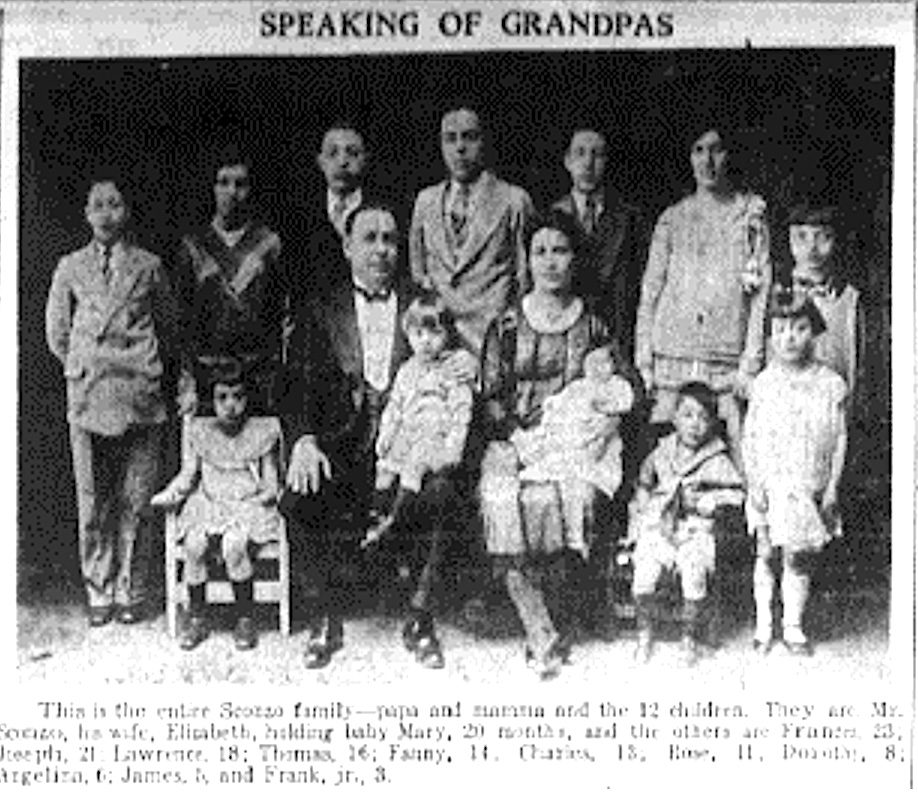
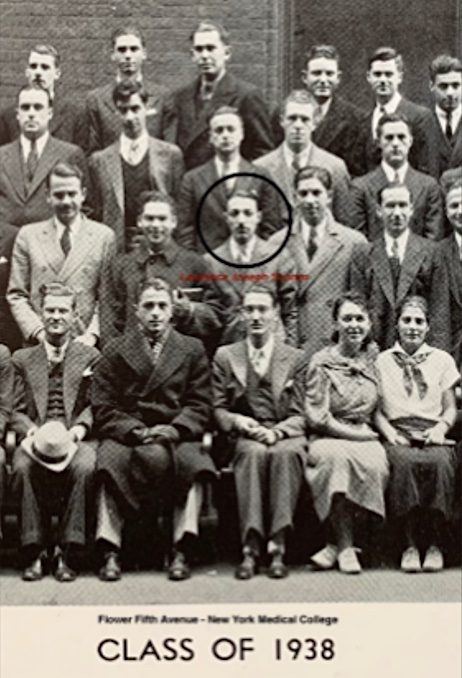
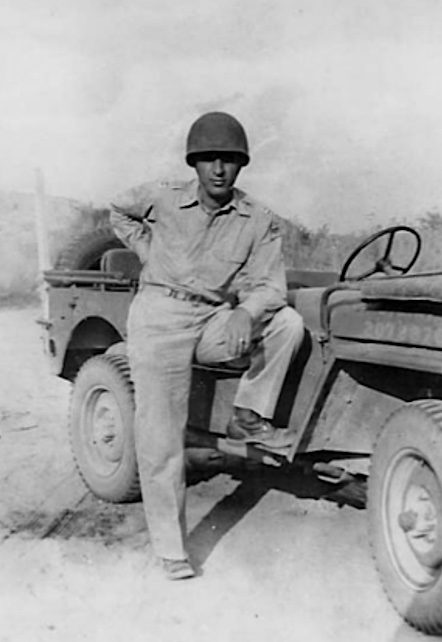
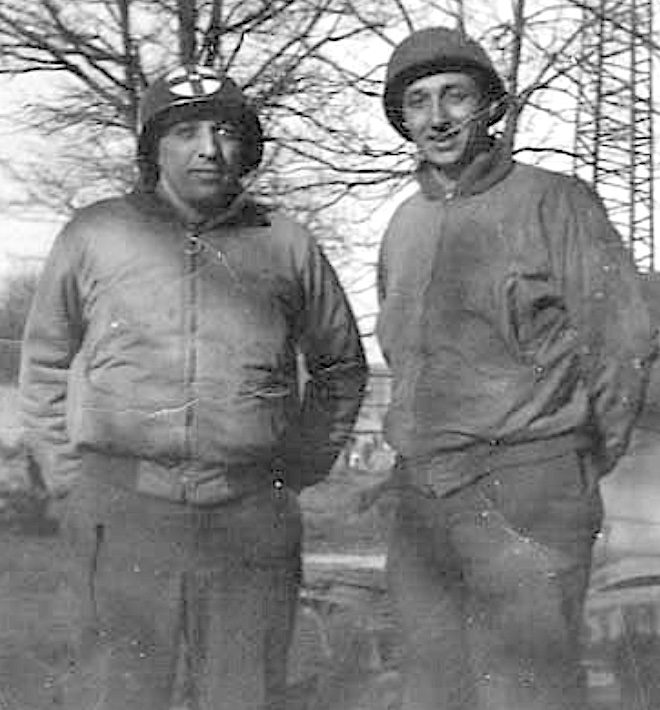
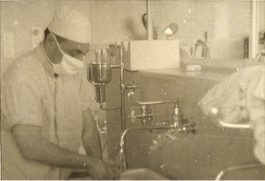


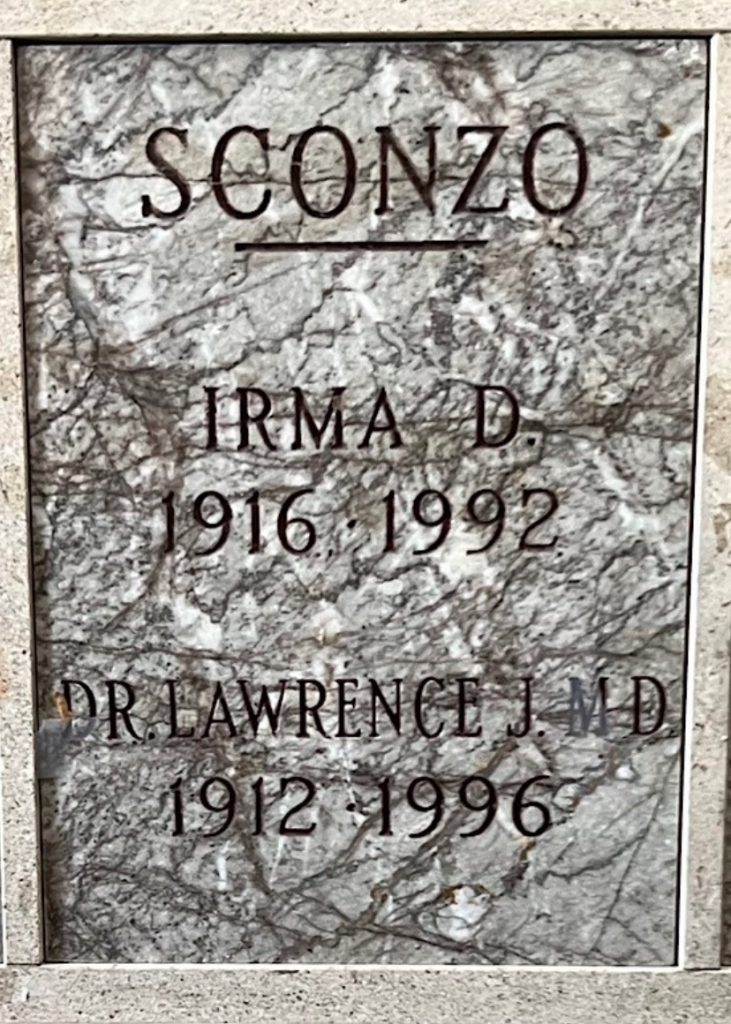
SEGERDELL JR., ARTHUR LESTER (1910-1980). Rank unknown, unit unknown, United States Army. Arthur was born to father Arthur Lester Segerdell Sr., and mother, Ada C. Segerdell, in Brooklyn. According to the 1910 federal census, Arthur was an infant, an only child, and lived on Prospect Place with his parents. His father was 21 years old and worked as a clerk in an office. Ada was 23 years old with no occupation. By 1920, the family was living on 72nd Street. Arthur Jr. was 9 years old, and had two younger brothers, Robert, 6 years old, and Albert, an infant. Arthur’s father, a hardware salesman throughout his life, was a hardware commercial traveler.
By 1930, the family had moved to 1026 81st Street in Brooklyn. They owned their home. Arthur Jr. was 20 years old and worked as a clerk in a department store. Robert was 17 years old and worked as a mail clerk at a bank. Albert was 11 years old and in school.
According to the 1940 federal census, Arthur Jr. was 30 years old, and worked as a salesman at a men’s clothing store. At the time of his World War II draft registration card, signed October 16, 1940, Segerdell worked at Bond Stores, Inc. at 60 East 42nd Street in Manhattan. He was 5′ 7″ tall, 130 pounds, with blue eyes, blond hair, and a light complexion. “Name And Address Of Person Who Will Always Know Your Address” was his father. The family address listed was changed to 910 81st Street, as Arthur Jr. had married Dorothy MacKenzie on his birthday in 1942 in Brooklyn.
Arthur Segerdell Jr. enlisted as a private on December 18, 1942, in the United States Army. According to The Brooklyn Daily Eagle, in 1943 he completed basic training at Camp Roberts in San Miguel, California. He was honorably discharged on October 14, 1944. By 1950 he continued to live at the same address on 81st Street with his wife and worked as a salesman at a retail clothing store. He passed away March 19, 1980 at the age of 70. Dorothy passed away in 1985. They are interred together at Green-Wood Cemetery. Section 188, lot 19025.
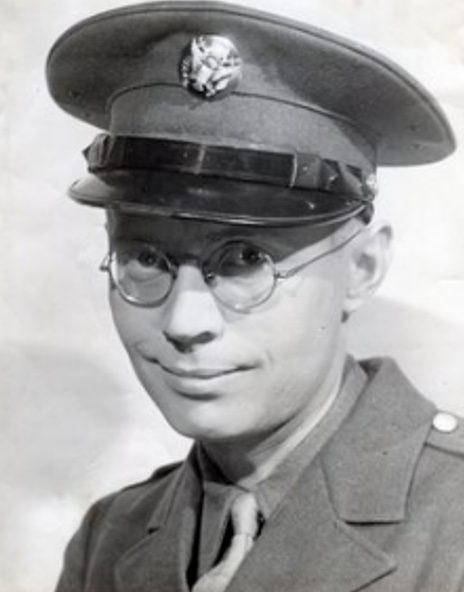
SELLERS, JAMES (1921-1979). Machinist’s mate, first class petty officer, United States Navy. According to the 1925 New York State census, James lived with his parents, Henry and Emma, and three older siblings, Thomas, Donald, and Genevieve, at 4712 New Utrecht Avenue in Brooklyn. His father worked as an auto mechanic. The 1930 census records the family’s address as 861 48th Street, Brooklyn. His father was superintendent of an apartment building. As per his son, Sellers graduated from Brooklyn Technical High School. The 1940 census notes that Sellers lived at 725 53rd Street with his parents and older brother, Donald. James was nineteen years old and attended New York University. According to the New York Marriage License Bureau, he and his future wife, Catherine (Kay) Schmielan, applied for a license on January 14, 1943, and were married on January 17, 1943. His World War II draft card indicates that he was twenty-four years old and lived with his wife at 828 71st Street. His wife is listed as next of kin and no employer is identified. The registrar’s report, dated November 5, 1945, describes him as 5′ 10″ tall, 140 pounds, with brown eyes, blond hair, and a ruddy complexion.
During his wartime service, Sellers was assigned to three ships: beginning with the USS Omaha, then the USS New Jersey, and the USS Naifeh. His United States Navy muster roll states that he began his tour of duty on the USS Omaha on March 20, 1941. According to the Naval History and Heritage Command website, this light cruiser was docked in the Brooklyn Navy Yard for repairs from May 17, 1941, through June 25, 1941. The Omaha departed June 30, 1941, to conduct neutrality patrols between the Brazilian ports of Recife and Ascension Island. The main duty of her crewmembers was to “intercept, board, and inspect vessels to enforce a blockade against German trade in the region.” On November 6, 1941, the Omaha and the destroyer Somers captured the 5,098-ton German blockade runner, Odenwald, off the Brazilian coast. On May 23, 1943, Sellers was transferred to the newly commissioned battleship, USS New Jersey. The crew received its training in the Western Atlantic and Caribbean Seas. On January 7, 1944, the USS New Jersey passed through the Panama Canal on its way to Funafuti, Ellice Islands. Crewmembers took part in battles at the Marshall Islands, Majuro, New Guinea (supporting General Douglas MacArthur’s landings), the Marianas, and the Battle of the Philippine Seas (June 1944). Sellers was reassigned to the USS Naifeh, a destroyer escort, on July 4, 1944. He may have been onboard when the Naifeh escorted convoys to Europe and North Africa. He remained on this ship until his discharge on October 31, 1945.
Sellers received three promotions throughout his wartime enlistment. According to his Report of Changes, Sellers earned three promotions. Starting as a fire controlman, petty officer 3rd class, he was promoted to fire controlman, petty officer 2nd class on May 1, 1942. Fire controlmen operate, repair and trouble-shoot weapon systems on ships. On November 1, 1942, he was promoted to machinist’s mate, petty officer 2nd class, and then earned his final promotion to machinist’s mate, petty officer 1st class on September 1, 1943.
As per the Department of Veterans Affairs Death Files, Sellers re-enlisted in the Navy on October 4, 1947. He sustained an injury on the USS Enterprise in 1952. He wrote the following story of the injury he sustained and his recuperation:
On March 28, 1952, I was a sailor stationed in Bayonne, New Jersey and sent to report to the Naval ship, Enterprise, an aircraft carrier which was one of the best during World War II. The ship had been in “moth balls” for a number of years and rotting in the harbor. Upon my arrival, my superior officer gave me orders to open up the covers that seal the gas tanks. I had insisted that my men not go down to the bottom of the tanks because of the possibility of escaping gases. When all the hatches were open, I told them just to look down to see if they detected any gas. Neither of us could and it appeared as if everything was alright. I, as senior man, stayed back to make sure everything was okay and with my men already up the ladder and away from the hole, I glanced down and noticed two men at the bottom of the tank. It seemed as if they were trying to clean the rust down there. I shouted to them but they could not hear me. I felt something was wrong and immediately sounded the alarm and went down to them. They were unconscious when I reached them but I tried to carry one on my shoulder. His weight shifted knocking me off the ladder and pinning me down with the other two men in the hole. The navy yard workers responded quickly, and the Naval Chief Petty Officer went down to try and revive us. I had only a few seconds of life left. A rope was tied around me and I was hauled up and taken by ambulance to St. Albans Naval Hospital. I regained consciousness the following day, wondering what had happened. I was told at this time, I should have received last rites, as I was that close to death.
During this time, my wife received a telegram stating that I had been injured. However, when she received the telegram, I had no idea she was having her share of misery. She almost died due to a kidney ailment requiring her immediate entry into the hospital as her system was filling with fluid, slowly reaching her heart. It took quite a bit of medical care to make her well. That put the two of us in the same hospital at the same time…
The actual impact of my accident did not take effect until about 9 or 10 days later. One day when I was visiting the chaplain, I became dizzy and nauseous and finally collapsed. When I regained consciousness, I found myself in a ward of a hospital. I thought I had just fainted until someone said I was in Philadelphia Mental Hospital. I remember being taken into a room where there was a group of doctors and hearing one doctor, dressed in civilian clothes, saying that it might be a year of two before I would even speak again. I could hear what he was saying but his words sounded ridiculous.
When my father came to visit me I did not know who he was. The only thing I recognized was a watch I had given him years ago.
I was put into a closed ward in a “quiet” room because I was not able to eat. Everything seemed so hazy and far away. My loss of appetite caused me to dwindle down to 95 pounds. Only after some time of drinking milk and other liquids did I regain my strength and most of my weight. It seemed as if I had been in that room for months when in fact it was only a week or so. My coordination was extremely poor; I never felt so helpless and frustrated. The time spent in that room was a nightmare. It was very dark and dreary and always felt musty and cold. There was no bed, just a mattress which always made you seem so alone. When a nurse and corpsman came to feed me, I was so hungry and thirsty, I would slop it all over myself and the corpsman. I could not talk but my gestures were saying I was sorry for messing his uniform. They would nod and leave. After a while, I would feel the need to relieve myself and would knock at the door for attention but being in a place where there were some severe cases and a shortage of help, was ignored and as a result would end up going on the mattress.
A few days later, I was taken out of this room and placed in a ward with other patients… However, there were nights when some of the other patients were quite sick and it was frightful to see and hear what was going on. I remember one night the patient alongside of me woke up screaming and fighting. Then the nurse and the corpsman would drag and pull him out of bed and take him away. It seemed as if they were tormenting the poor fellow and I wondered if I would be next. I was afraid many times during battles of World War II and Korea but seeing and listening to the sick men in the ward was worse than anything I had ever seen or been in…
After about 6 weeks in the closed ward, my family was allowed to visit me which improved my condition enormously…I discovered though that as a result of my injury, I was not able to function or formulate ideas as well as before…It was only through rigid self-discipline and hard work that I was able to regain my speech and began to feel like a human being again…
During the following month (July 1952) I was permitted to go home for a month of convalescence. When I returned to the hospital, my doctor suggested that it would be a good idea if I were assigned to do some clerical work in the hospital…
Shortly thereafter, I was called in to the Physical Evaluation Board. Here it would be decided if I would be returned to active duty or not… The Board which consisted of ten Naval officers both medical and line, reviewed my entire case. Their findings were that I was unfit to perform my duties due to post-traumatic personality stemming from brain damage due to anoxia or lack of oxygen…
Although I had to leave the service, and years have gone by and I am still married to “KAY” and have four children, I am able to support my family and I know I owe this all to God. So long as there is life, there is always hope for one no matter how dark things seem.
His daughter recapped his life and the importance of having the story above shared. She writes:
He died on May 24, 1979, at the age of 58 after losing his battle to lung cancer. He stayed married to his childhood sweetheart, “KAY” for more than thirty years, raised four children and two grandchildren. He worked for the New York City Department of Sanitation for 19 years. He was a relatively quiet man, who although not making a tremendous effect on the human race was a church-going man, devoted to his family. He loved telling stories of his childhood and what it meant growing up poor and living in a cold water flat. One of the stories he loved to tell was how he met a platinum blonde little girl when he was about 7 years of age in the park and grew up looking for this blonde. Years later he found out this blonde was “KAY,” the love of his life…He wasn’t a big man in stature, but he had a heart of gold…He was no scientist or genius but was just basically a good man who is finally without pain and I know he is looking down from heaven and smiling that his story is finally being published.
Section 24, lot 43800, grave 25.
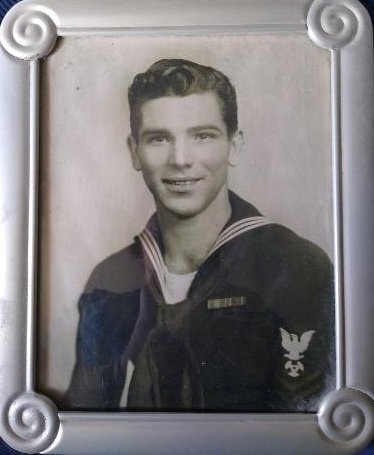
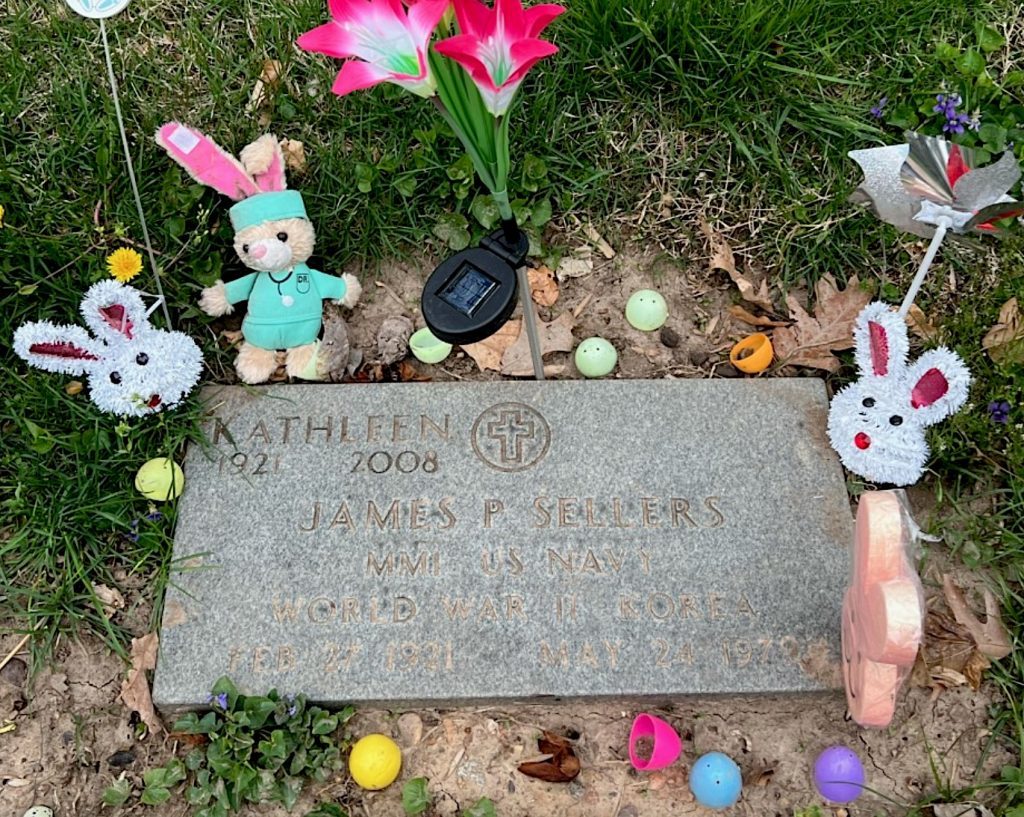
SELLET, FREDERICK WILLIAM (1924-1992). Aviation machinist mate, second class, United State Naval Reserve, United States Navy. Frederick was born to father Angelo Sellet, and mother, Rose Sellet (Califato) in Brooklyn. According to the 1930 federal census, five-year-old Frederick lived at 599 88th Street. His father was 43 years old and worked as a porter for the railroad. His mother was also 43 years old with no occupation. As of 1930, Frederick had three older siblings: Antoinette, 14 years old, Pauline, 12 years old, and Alfonso (Alphonse), 9 years old. All of the family members, except for Frederick, were born in Italy. Frederick attended P.S. 104 and later Brooklyn Tech High School. In 1940, Frederick resided with his family at the same address. He was 15 years old.
At the time of his World War II draft registration, Frederick was 21 years old with no occupation. He was 6′ tall, 177 pounds, with brown eyes, black hair, and a ruddy complexion. “Name And Address Of Person Who Will Always Know Your Address” was listed as Rose Sellet, his mother. He lived at the same address throughout his life.
Sellet enlisted on November 17, 1942, in the United States Naval Reserve. He served in North Africa and Turkey. According to the United States Navy Muster Rolls, from June 22, 1944, he served aboard the U.S.S. LST 561, which according to the Navy History and Heritage Command “participated in the invasion of Southern France in August and September 1944.” On July 11, 1944, he was transferred to Oran, Algeria “For Further Transfer, Headquarters Squadron, Fleet Air Wing.” In January 1945, he served assisting the captain and first mechanic aboard a PBY-5A seaplane, an anti-submarine aircraft, on “Operation Argonaut” ahead of the Yalta Conference between the heads of government of the United States, the United Kingdom, and the Soviet Union. The mission also landed in Malta, the base for the Royal Air Force Coastal Command Squadron 283, where the RAF had been providing reconnaissance coverage for the operation. His plane crashed near Istanbul; Frederick was one of six survivors.
By May 1945, Sellet was aboard the HR 418, and was honorably discharged on February 23, 1946. He married Frances Ciavolella on September 18, 1947. They had two children, Elaine and Charlotte. After his military service, by 1950, he was working as a patrolman for the New York City Transit System, then he worked as head of auto mechanics for the New York Police Department. According to the United States Patent and Trademark Office, he and two partners filed to patent a Rear View Mirror for Drop Type Bicycle Handle Bars in 1981.
Frederick and his wife are both interred at Green-Wood; his wife died in 2020. Section E, lot 40330.
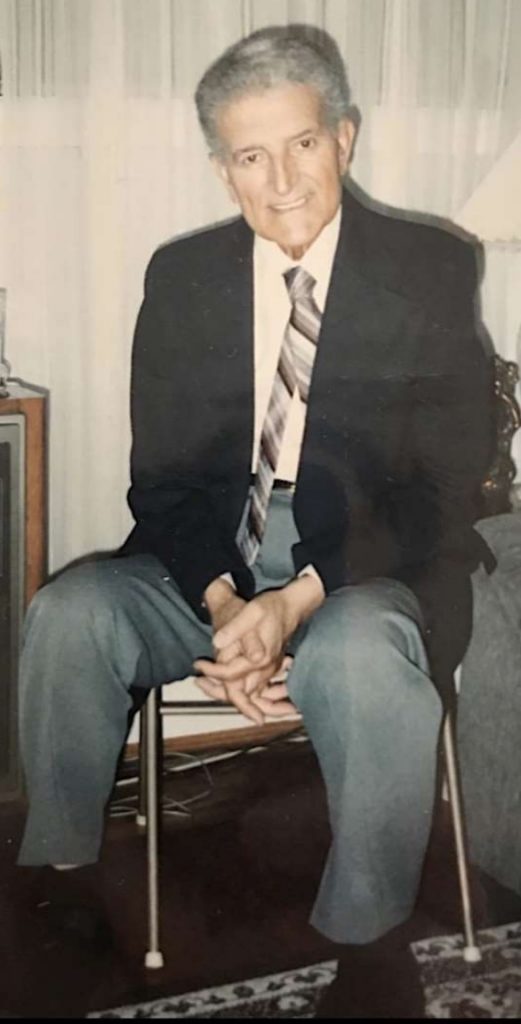
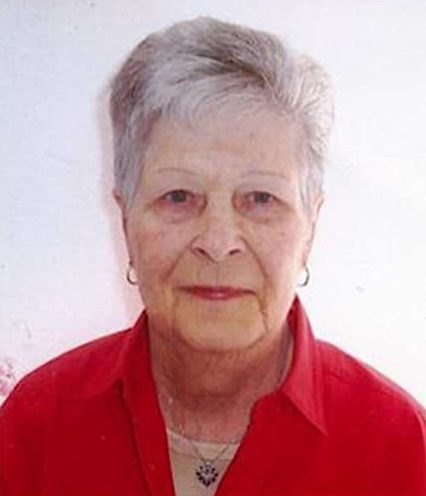

SELVAGGIO, ANTHONY (or ANTONIO) CARMINE (1921-2001). Corporal, Unit unknown, United States Army Air Force. Anthony was born to father Giovanni (John) Nunzio Selvaggio, and mother, Anna Selvaggio, in Newburgh, New York. According to the 1925 New York State census, three-year-old Anthony (Antonio) lived at 5801 13th Avenue in Brooklyn. His father was 27 years old and worked as a cook, an occupation he would continue throughout his life. Anna was 31 years old and was a housewife. Both of Anthony’s parents were born in Italy. Anthony had an older brother, Stephen (Stefano) Gino, who was four years old. By 1930, the family was living at 1266 71st Street. Anthony was nine years old and in school, and had a younger sister, Gloria, who was seven years old.
By 1940, the family lived at 1314 71st Street. Stephen (Steven), was working as an entertainer. Anthony was 18 years old and working at an unknown occupation. Gloria was working as an operator. According to The Brooklyn Daily Eagle, on February 15, 1942, 20-year-old Anthony served as best man at his brother Stephen’s wedding. Gloria was a bridesmaid. The family continued living on 71st Street. On February 16, 1942, Selvaggio registered for the World War II draft. He was 5′ 7″ tall, 145 pounds, with brown eyes, black hair, and a light complexion and worked at Brewster Aeronautical Corporation in Newark, New Jersey. “Address Of Person Who Will Always Know Your Address” was listed as Anna Selvaggio, his mother. He subsequently enlisted and was honorably discharged on an unknown date.
Selvaggio married Theresa Eliano on June 17, 1946, in Manhattan. They had two children, Linda, and another child whose name is unknown. By 1950, Anthony was working as a restaurant manager at a coffee shop, and his family lived adjacent to his first wife’s family. Sadly, Theresa passed away on December 26, 1968, at age 43. She is buried at Long Island National Cemetery in East Farmingdale, New York. Plot 2X, 3031.
Anthony married Gloria Ann Russo in 1970 in Brooklyn. Gloria was born February 19, 1935 and graduated from Walton High School in the Bronx. As per public records, in 1993 he was living at 2520 2nd Street in Brooklyn. Anthony and Gloria are interred together at Green-Wood Cemetery. He passed away October 12, 2001, at the age of 80. Gloria passed away September 8, 2007, at the age of 72. Section 37, lot 42987.
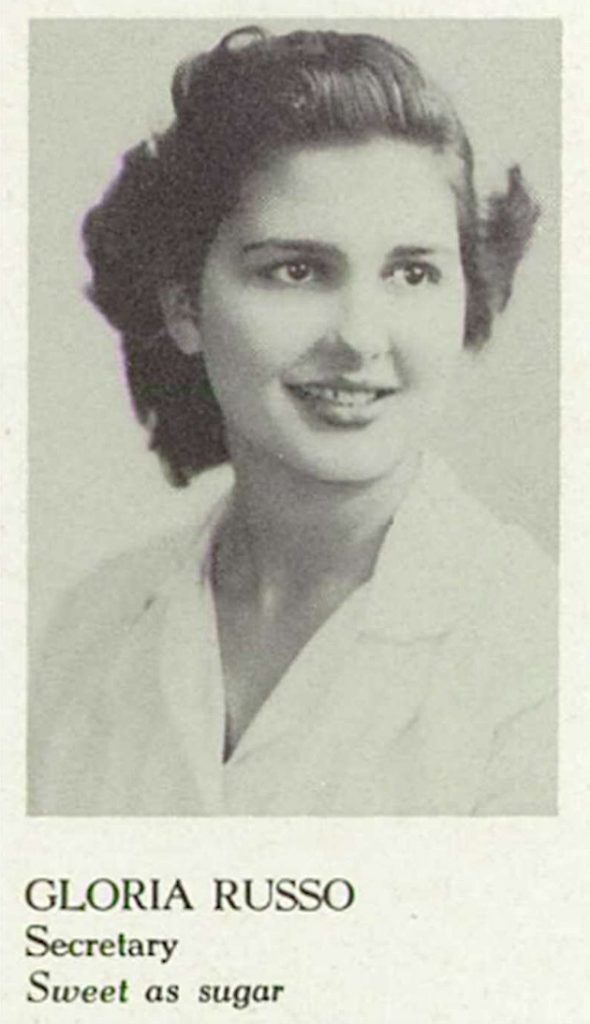

SERIO (or SERIS, SERIO, SENIO), NUNZIO GEORGE (1913-1954). Corporal, 539th Service Squadron, United States Army Air Force. Both family and given names for the Serio family vary from document to document. The 1920 federal census shows a Nuncia Seris, age 7, son of Ernst Seris and Jennie Seris, living on West 127th Street in Manhattan. He was in school and was able to speak English, as well as read and write. He was born in New York, but both his parents were born in Italy. There were two other children in the household: Amelia, 9, listed as a son; and Anna, 3, a daughter. The 1925 New York State census lists a George Seris, 12, living with his parents, Ernest and Jennie, in Manhattan. There were three other siblings: son Amiel, 14; daughter Anna, 9; and son Gerald, 2. The 1930 federal census lists the family’s address as 2078 8th Avenue, New York City. (Nunzio) George Serio was 16 and attended school. Amiel and Anna are listed as the other children, along with Gene, at 6 years old.
Nunzio Serio married Florence Gray in Manhattan on October 18, 1934, according to marriage records. The 1940 federal census shows the couple living on Convent Avenue in Manhattan. George Senio, as Nunzio George Serio was listed, was a roofer, earning his wages in private work. It appears that he had completed some college and he and Florence were living with brother-in-law Manuel Plexez and Florence’s sister, Marian Plexez. Florence was 23 years old.
The 1940 federal census lists Nunzio George Serio as “George Senio.” He was married, living with his wife, brother-in-law, and sister-in-law, on Convent Avenue, and working as a roofer.
Nunzio George Serio’s draft registration card, signed on October 16, 1940, when he was 27 years old, shows him living at 556 West 132nd Street in New York City with Florence. The address was changed, on March 18, 1946, to 520 East 150th Street, in New York City. Serio was recorded as 5′ 9″ tall, weighing 170 pounds, with blue eyes, brown hair, and a dark complexion. He noted a chipped front tooth as a physical characteristic that would aid in identification. He worked for Morris Baumgarten Inc., 556 West 132nd Street, in New York City.
Florence Serio signed an application for a headstone for Nunzio G. Serio on November 19, 1954. This application for a United States military veteran’s marker lists Serio’s enlistment date as February 13, 1943, and his discharge date as February 25, 1946, with his rank as corporal, with the 539th Service Squadron (Air Corps). Florence Serio’s address was 520 East 150th Street in the Bronx and she listed her husband’s religion as Christian.
We do not know much of Serio’s service during WW II. According to his headstone, he was a corporal with the 539th Service Squadron of the United States Army Airforce. Per Wikipedia, the 539th Fighter Squadron was activated in October 1943 at Westover Field, Massachusetts, as one of the original squadrons of the 402nd Fighter Group. Shortly after activation, the squadron moved to Seymour Johnson Field, North Carolina, where it operated as a Replacement Training Unit (RTU) for pilots of the Republic P-47 Thunderbolts. RTUs were oversized units whose mission was to train individual pilots or aircrews. In December 1943, the squadron again moved, and was assigned to the 326th Fighter Group at Bluethenthal Army Air Base in North Carolina. It was disbanded in April 1944 but reactivated in 1954.
The New York City death index lists April 15, 1954 as the day George Serio (he also was listed in the 1940 census as George Serio) passed away. Green-Wood’s database records him as George Serio. Section 63, lot 7278, grave RRC.
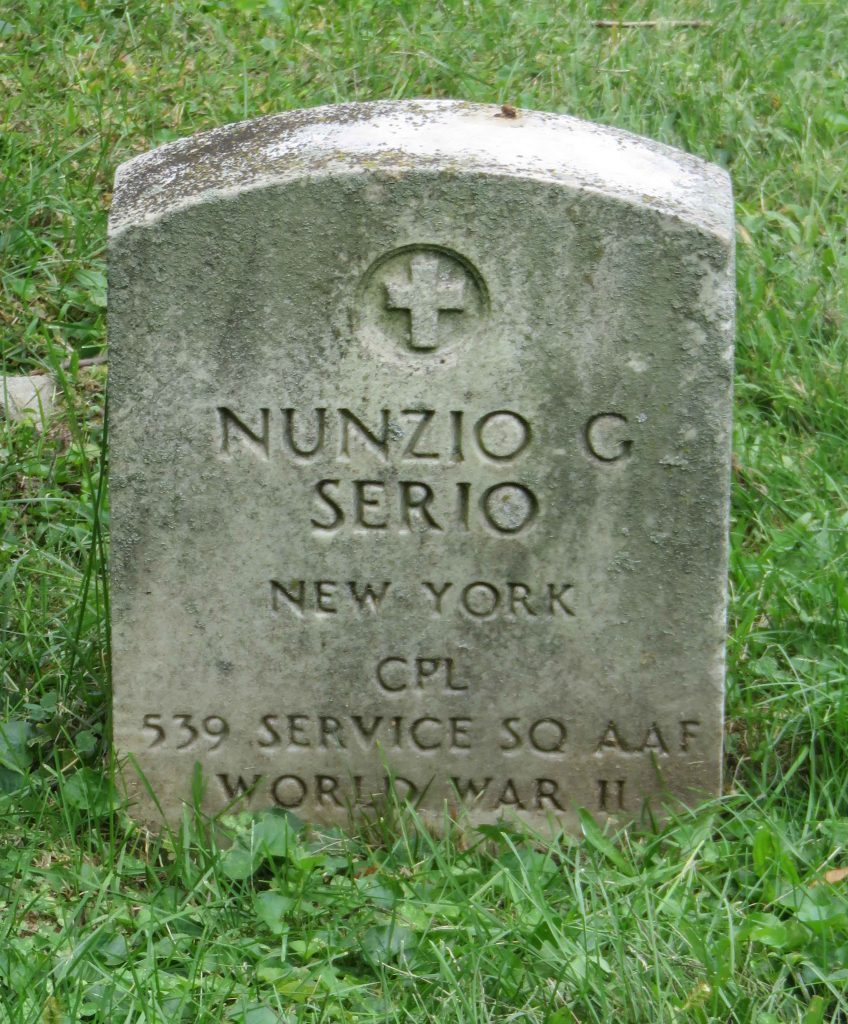
SICILIANO, FRANK (1919-1942). Private, Field Artillery, United States Army. Frank was born in Brooklyn to Domenico Siciliano and Josephine (Giuseppina) née Russo. Both parents were born in Italy; Domenico on January 8, 1888 in Montalbano Elicona and Josephine on August 18, 1897 in Maresca Vetere. Domenico immigrated to New York in 1903 from Naples, Italy. The couple married on August 24, 1913, in Brooklyn. On June 5, 1917, Domenico Siciciano of 1206 60th Street in Brooklyn filed a World War I registration card. He described himself as a married alien with two children under the age of twelve who worked as a laborer. At that time, Domenico was 5′ 5″ tall, of medium build with brown eyes, dark brown hair and no distinguishing features. He asked to be excused from service because he was responsible for his dependents.
As per the 1920 census, he was living in Brooklyn with his parents and older siblings. That census reports that Frank’s sister Frances was five years old, and Vito, his brother, was three. All three children were born in the United States and their parents were registered aliens. Domenico rented his home and was employed as a laborer, while Josephine was a homemaker. At that time, no one in the family was listed as able to speak English or read or write.
By the 1925 New York State census, the family was living at 1215 61st Street in Brooklyn, and there were two younger sisters: Josephine, age four, and Theresa, six months. Domenico was now a naturalized citizen, continuing to work as a laborer. The three older children were attending school. According to the 1930 federal census, the family was living in their own home at 1216 58th Street in Brooklyn, valued at $6,000. Frank was 11 years old and attending school with his four siblings. Both parents could read and write, and Domenico continued to work as a laborer.
By the 1940 federal census, Frank had completed the third year of high school and, at 20 years of age, was employed full-time for a plating company. Frances, the oldest child, had married and moved out of the home. Both Vito, age 23, and Josephine, age 19, had completed high school and were working, while Theresa, age 15, was attending high school. Both parents were naturalized citizens and continued to live in the same home at 1216 58th Street, but it had decreased in value to $2,800. Domenico was employed by the WPA (Works Progress Administration) program as a tinker (tinsmith).
Frank Siciliano’s World War II draft registration card, completed on October 16, 1940, shows Frank living at 1216 58th Street, Brooklyn, with his mother, Josephine Siciliano, as his contact. He was employed by Mueller Art Planing Company at 241 Centre Street in Manhattan. He was 5′ 5″ tall, weighed 135 pounds, with brown eyes and hair, and a dark complexion. His brother, Vito, filed a draft registration card on the same day.
Frank enlisted as a private in the United States Army on January 16, 1942, at Camp Upton in Yaphank, New York. According to his enlistment record, he worked as a shipping and receiving clerk and had had one year of high school. Frank was working for a plumbing company at that time.
Siciliano trained at Fort Bragg, North Carolina, in field artillery and then was sent to England, after which he served in North Africa. Sadly, Frank was killed in action in North Africa on April 30, 1942, just short of his 24th birthday and five days after his father registered for the draft. His father Domenico, unemployed with no home phone, registered for the draft in Brooklyn on April 25, 1942, and listed his wife as next of kin. He was 5′ 7″ tall, weighed 153 pounds, with brown eyes, grey hair, and a light complexion. At the time of Frank’s death, his brother, Vito, 27, was a private first class in Harlingen, Texas, and his brother-in-law, Joseph Grillo, 25, was a private in Hawaii.
Frank Siciliano was interred at Green-Wood in 1948. His mother, Josephine, died in 1957. Domenico Siciliano went on to marry a second time, on September 26, 1961, in Brooklyn, to Rose Castagna. Domenico died in July 1975 and was interred in Green-Wood with Rose and Frank. His brother Vito is buried at Long Island National Cemetery and his brother-in-law Joseph is interred at Green-Wood and is possibly the man listed on this website as a World War II veteran. Section 134, lot 37830, grave 316.
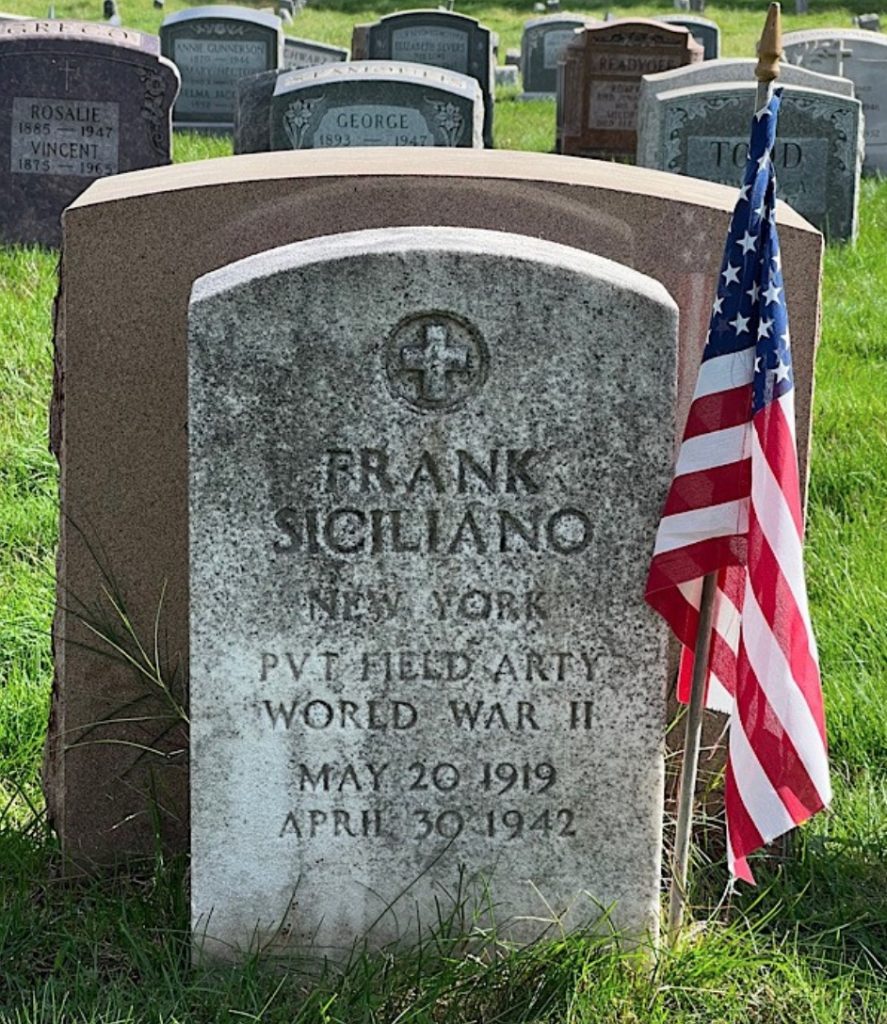
SIDERI, ARONNE (or EDWARD) (1916-2000). Technician fourth grade, 558th Bomb Squad, United States Army. Aronne Sideri was born in Brooklyn, to Gildo (James) Sideri and Mary née Nesi. Gildo was born on April 24, 1886, in Lanciano Italy, and immigrated to the United States in 1909. Mary was born on March 28, 1892, also in Italy, and immigrated to the United States in 1911. They were married on August 29, 1915, in Manhattan.
Aronne, who was also known as Edward or Eddie, was the eldest of six children: Cono, born in 1918; Carmella, 1921; Joseph, 1924; Arthur, 1927; and Albert, 1929. According to the 1920 federal census, Gildo, at age 33, was employed as a shoe laster, while Mary was a homemaker. They lived in a rented apartment at 82 Tillary Street in Brooklyn, and both parents were aliens who could read, write, and speak English. By the June 1, 1925 New York State census, the family had relocated to 50 Evergreen Avenue in Patchogue, Suffolk County, Long Island, and Gildo was employed as a lace blocker. In 1930, according to the federal census of that year, Gildo had become an American citizen and was employed as a dyer in a lace mill, while Mary was still listed as an alien. They owned their own home, valued at $3,500. The four eldest children were in school.
By the 1940 census, Aronne had completed high school and was a floor manager for a five-and-dime store. His father still worked as a dyer. Cono, the next eldest, was employed as an assistant theater manager and Carmella was a typist. The three youngest children were in school. The house was valued at $2,000 in 1940.
Aronne Sideri’s draft registration card of October 16, 1940 shows that he was living with his parents in Patchogue and employed by W. T. Grant 25 Cent Store, a variety store, with his mother, Mary, listed as his contact. Aronne was described as white, with a sallow complexion, 5′ 10″ tall, weighing 145 pounds, with brown eyes and black hair. His February 10, 1942 army enlistment record shows that he was single with no dependents. He was a graduate of Patchogue High School.
During World War II, Sideri worked as a teletype operator and was stationed in northern and central Europe, including France (Normandy and the Ardennes) and the Rhineland. He received the European-African-Middle Eastern Campaign Medal, as well as the Good Conduct Medal.
Aronne’s brother Cono enlisted in the army on October 13, 1942 and was discharged as a sergeant on February 8, 1946. Their younger brother Arthur enlisted in the Navy and was discharged on August 1, 1946.
An October 18, 1945 Newsday Suffolk edition article announced the return of veterans, including Aronne, to Suffolk County. He arrived in New York on the SS Smith Victory. Patchogue Council, Knights of Columbus honored Aronne and 14 other returned veterans with a “Welcome Home” turkey dinner on November 19, 1945.
Sideri married Louise C. Lazazzero on July 5, 1947; a marriage license was issued to them on May 20, 1947 in Brooklyn. Louise was born in Italy on June 29, 1925.
Aronne’s youngest brother, Albert, enlisted in the Navy on March 30, 1949, and was discharged on January 8, 1953. Aronne’s father, Gildo, died on July 24, 1972, and his mother, Mary, on October 4, 1980. They are both interred in Holy Sepulchre Cemetery in Coram, New York, while his younger brother Arthur was buried in Calverton National Cemetery, Wading River, New York, all in Suffolk County, Long Island.
Sideri’s primary employment was as a floor manager. He and Louise had three children: Edward, born in 1948; Ann Sideri Ciacci, 1952; and Phyliss Sideri Lazarus, 1953. Aronne’s address in 1993 was listed as 1967 72nd Street, Brooklyn, per the United States Public Records Index, 1950-1993.
Sideri’s funeral was held on July 31, 2000, at St. Dominic Roman Catholic Church in Brooklyn. His obituary, in the New York Daily News, lists as survivors his wife, three children, four grandchildren, his sister, and two brothers. Louise, his wife, died on July 28, 2010. She and Aronne are interred together at Green-Wood. Section 11, lot 40500, grave 1.
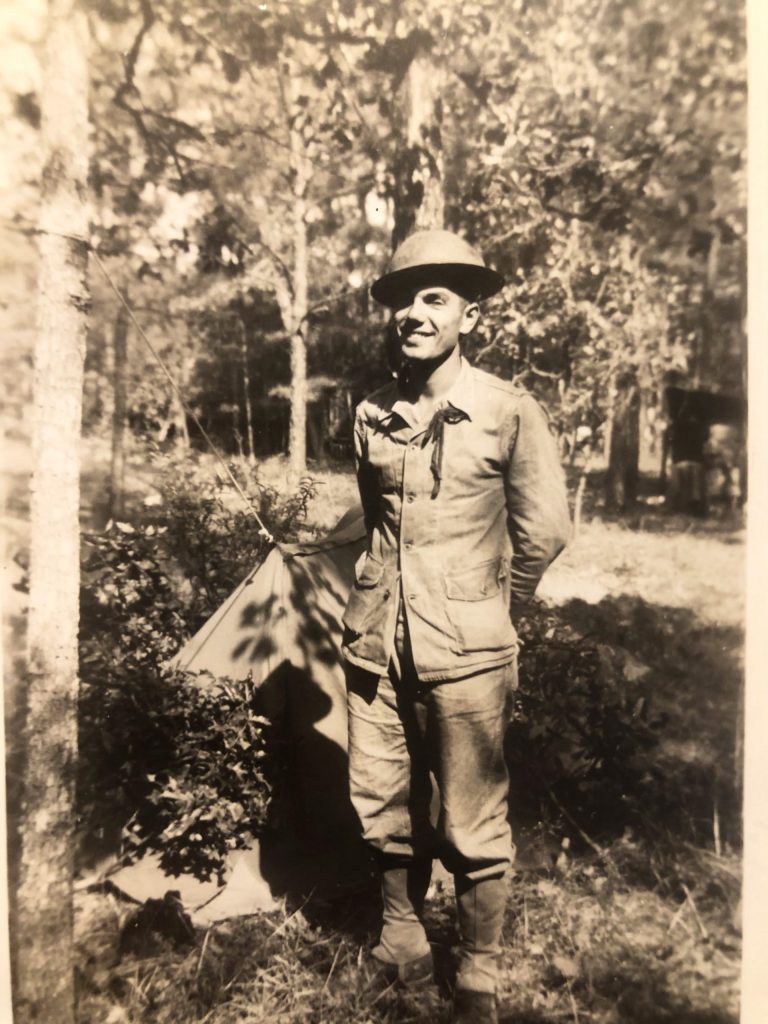
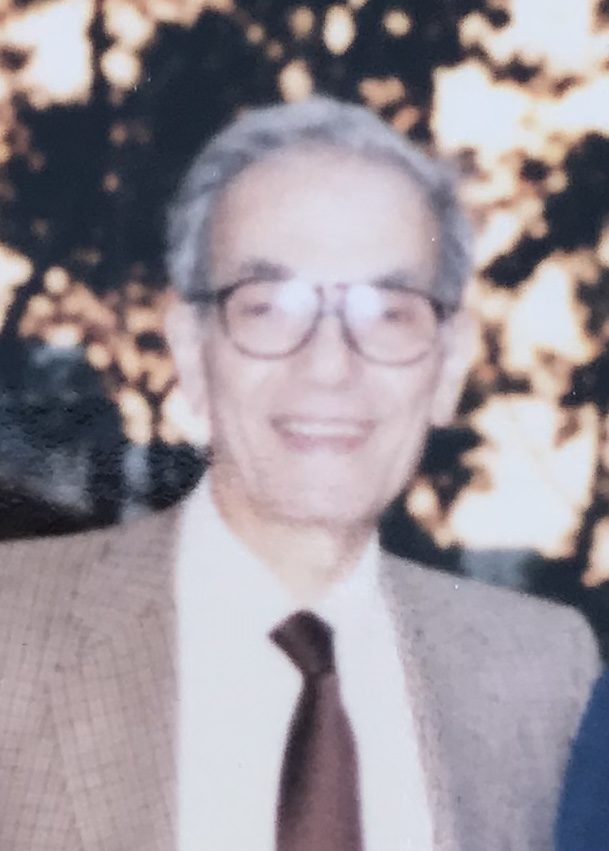
SIEBOLD, ROBERT G. (1920-1982). Lieutenant colonel, unit unknown, United States Army. Robert was born in Brooklyn to father, George H. Siebold, and mother, Irma D. Siebold (Shufelt). According to the 1930 federal census, 10-year-old Robert lived on Van Brunt Street. His father was 36 years old and worked as an undertaker. Irma was also 36 years old and was a homemaker. There was a 67-year-old boarder in the home, also listed an undertaker. By 1940, the family was living on 4th Avenue. Robert was 20 years old in high school and worked as a mortician with his father in the family business.
At the time of his World War II draft registration card, signed in 1941, Robert was 21 years old and worked as an “Apprentice to undertaker & embalmer” at the George Siebold (funeral home) at 384 Van Brunt Street. He was 5′ 8″ tall, 190 pounds, with gray eyes, brown hair, and a light brown complexion. “Name And Address Of Person Who Will Always Know Your Address” was listed as Irma Siebold, and the family address was 7901 4th Avenue in Brooklyn.
Robert Siebold enlisted as a warrant officer on his 22nd birthday, February 6, 1942, in the United States Army at Camp Upton in Yaphank, New York, and was honorably discharged on June 16, 1946. He served in Italy, North Africa, and Germany.
According to Robert G. Siebold’s marriage license, he married Naomi Wagner Onnen on December 18, 1947, and they lived at 7523 Third Avenue in Brooklyn. By 1950, Robert was 30 years old and working at a funeral home as an embalmer and undertaker. The family had an infant daughter, Diane, and lived on 307 76th Street in Brooklyn. Robert was a business owner and was active in several community organizations. According to the Brooklyn Daily Eagle, as of September 22, 1951, Siebold was noted as Master of the Sanctorum Lodge, an association of Masonic Lodges and Charities. By 1956 he was a part of the Bay Ridge Lions Club in Brooklyn, and Membership Committee Chairman of the Men’s Club of Bay Ridge in 1960.
Robert and Naomi had three children, Diane, Robert, and Sherry, and three grandchildren. Sadly, Naomi passed away in July 1973. She is interred at Green-Wood Cemetery. Robert married Doris Tappe in 1978 in Brooklyn. At the time of his passing in 1982, donations were made to the Shriners Hospitals for Children. Section 205, lot 28032.
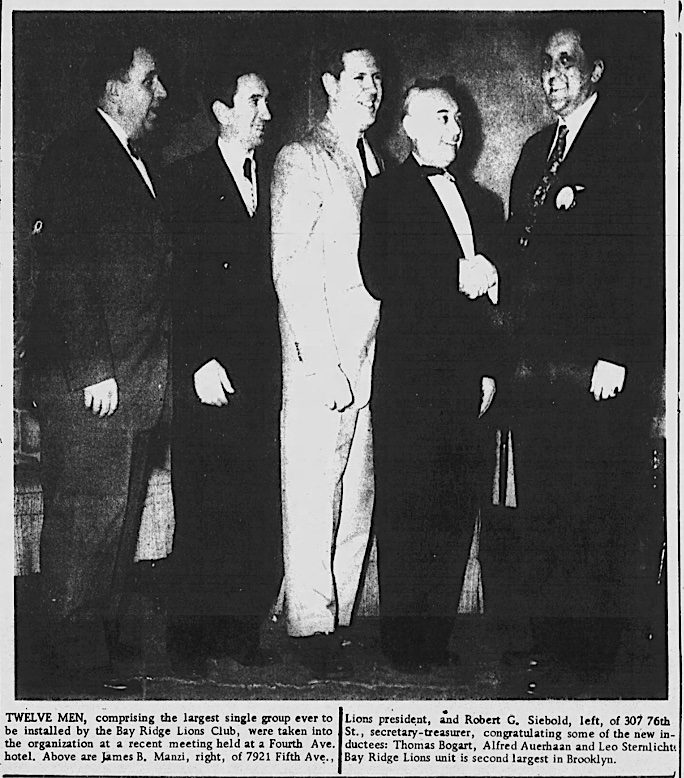
SISTO, JOHN L. (1919-2002). Unknown service history. John L. Sisto was born in Brooklyn. The 1920 federal census shows baby John living on Lefferts Avenue in Brooklyn with his parents, Michael Sisto and Francis (Frances) Sisto, both 28 years old and born in New York. They are the only household members listed.
By the 1930 federal census, the family resided at 311 Lefferts Avenue in Brooklyn. John attended school and could read, write, and speak English. A younger child was listed, Frank Sisto, who, at eight years old, was two years younger than John. John was 19 years when the 1940 federal census was recorded and the highest grade of school he had completed was the fourth year of college. The family of four lived on Bedford Avenue and included sons John and Frank, but there were three other residents: Sarah Wenste, 44; Helen Wenste, 21; and Charlotte Wenste, 16.
According to John’s World War II draft registration card, he registered on October 16, 1940, with his age as 21 and his date of birth as September 12, 1919. His address was listed as 2031 Bedford Avenue, where he lived with his mother, Mrs. Frances Sisto, who was his contact. At the time, he was a student at Brooklyn College. He had blue eyes and brown hair, with a sallow complexion. He was 5′ 8″ tall and weighed about 145 pounds.
Per John’s October 25, 2002 obituary in The Sentinel, he served in Panama with the Department of Defense during World War II. However, the Department of Defense was not created until 1949, so we do not know in which branch of the military he served, nor what his rank was. John L. Sisto is listed on the Arriving Passenger and Crew List for the USS General William Weigel, which landed in New York on May 1, 1946, from Balboa, Canal Zone. It was a troopship that served with the United States Navy in World War II, and departed San Francisco on April 16, 1946, for New York, sailing through the Canal Zone, according to Wikipedia.
John’s obituary in The Sentinel reports that he was a graduate of Brooklyn College, where he received a Bachelor of Science degree in engineering, and a graduate of Long Island University with a Bachelor of Science degree in pharmacy. He was a minor league baseball pitcher for the St. Louis Cardinals and the owner of a pharmacy in Brooklyn for 30 years.
John and Helen McKenna took out a marriage license in Brooklyn in 1955, according to New York City marriage records. Helen M. Sisto predeceased her husband according to his October 25, 2002 obituary in The Sentinel. Per Find A Grave website, “Helen M.” is listed on one of the Sisto family gravestones, born 1922 and died 1990.
The Public Records Index, 1950-1993, lists John’s address first at 1775 Madison Place, Brooklyn, then, in 1985, at 57 Scott Drive in Middletown, New York, and, in 1996, at 23 Fieldcrest Drive in Mechanicsburg, Pennsylvania.
The Sentinel obituary reports that John died at his home in Mechanicsburg on October 23, 2002. His son, John L. Sisto II, of Mechanicsburg, and two grandchildren, survived him, as did his younger brother, Frank, of Manalapan, New Jersey.
Many members of the Sisto family are interred in Green-Wood., including John’s parents, Michael Thomas Sisto and Frances Stefano Sisto, and his paternal grandparents, Giovanni Sisto (1852-1927) and Rosa Sisto (1850-1942), both born in Italy. John’s younger brother, Frank, who died in 2005, was interred in Green-Wood along with his wife, Carmela Ciliato Sisto (1922-2005). Section 128, lot 36834.
SMITH, III, CLARENCE WILLIAM (1922-1942). Private, 31st Infantry Regiment, Anti-tank Company, United States Army. Dutch Reformed Church records show that Clarence William Smith was born in Brooklyn on August 19, 1922, and baptized on September 10, 1922, at Ocean Hill Church. His father was Clarence W. Smith Jr., and his mother was Frances Mildred Beachman. The Birth Index for New York City lists him as Clarence W. Smith Jr., but that is incorrect; his father was Clarence W. Smith Jr., so he was Clarence W. Smith III. The 1925 New York State census indicates that he was two years old and resided on Gunther Place in Brooklyn with his parents, as well as Clarence W. Smith Sr., his grandfather, and Mildred Smith, his aunt, who was 17 years old. His father worked as a plumber and his grandfather was a letter carrier.
By the 1930 federal census, there was a younger brother, Daniel Francis (although he is listed in the census as “Francis”), approximately six months old. Both children were residing at 31 Gunther Place in Brooklyn with their parents, Clarence, 27, and Frances, 28. All family members were born in New York, Clarence W. Smith III was a student, and his father was working as an electrician. Sadly, younger brother Daniel Francis died on October 14, 1934, and was interred at Green-Wood Cemetery, Section 195, lot 28567.
Clarence W. Smith III was 17 and living at 1134 Bergen Street in Brooklyn per the 1940 federal census, with his 37-year-old father, who had divorced his wife Frances several years earlier, and had married Florence (Colletti) Peluso in 1935. Florence was 34 and residing in the home with her son, Anthony, age 13, from her previous marriage. The census indicates that Clarence W. Smith III had completed his education through 7th grade, although according to information provided by his cousin, Catherine D. Elias, he went on to complete some high school. At the time of the census, he was unemployed and seeking work. His father was working as a plumber. Cousin Catherine D. Elias noted that he worked with his father as a plumber.
Clarence W. Smith III’s World War II enlistment records show that he enlisted in the Army on May 17, 1941. He was 18, weighed 140 pounds and was 5′ 7 ¾” in height with brown hair and blue eyes. The record shows that he had attended grammar school and his civilian occupation was a plumber. Catherine D. Elias stated that, at the time of the attack on Pearl Harbor by Japanese forces, on December 7, 1941, Clarence W. Smith was stationed with the 31st Infantry Regiment in Manila, Philippines, on the Island of Luzon.
Catherine D. Elias provided this description of Clarence’s military service:
He served with the Anti-tank Company of the 31st Infantry Regiment in the Philippines at the time of American entry into World War II. The 31st Infantry Regiment was part of the regular U.S. Army’s presence in the Commonwealth of the Philippines prior to World War II. Along with the Philippine Scouts’ 45th and 57th Infantry Regiments, the 26th Cavalry Regiment, 23rd and 24th Field Artillery Regiments, detachments of the 12th Medical Regiment, and Company C, 14th Engineers, it served as part of the Philippine Division.
When Japanese aircraft attacked Pearl Harbor on December 8, (Manila time) 1941, the 31st Infantry Regiment was stationed in Manila on Luzon. Japanese forces began a full-scale invasion of Luzon on December 22, 1941. In response, General Douglas MacArthur, commander of the United States Army Forces in the Far East (USAFFE), ordered a withdrawal to the Bataan peninsula to hold out until reinforcements arrived. Elements of the 31st Infantry Regiment were already taking up positions on the peninsula, arriving in mid-December. By January 4, 1942, the 31st Infantry Regiment was positioned on Bataan as part of the holding action. Unfortunately, in the wake of the Pearl Harbor attack and other Japanese advances throughout the Pacific, no reinforcements were forthcoming.
The 31st Infantry Regiment was at the forefront of combat on Bataan in January, helping to form the right flank of USAFFE’s main line of resistance. Suffering considerable losses, the 31st Infantry Regiment withdrew southward on Bataan in early February, after which it reorganized and trained during a pause in the Japanese advance. Because of shortages of food and medical supplies, disease continued to sap USAFFE’s strength even in the absence of fighting. The sick, starving troops then struggled to hold out against a renewed Japanese assault in the first week of April 1942.
Finally, on April 9, 1942, USAFFE troops on Bataan surrendered to the Japanese, and the majority of them, including Private Smith, were subjected to the 65-mile “Bataan Death March” into captivity. Corregidor and the other islands in Manila Bay held out nearly another month but finally surrendered on May 6, 1942. By the summer of 1942, most of the prisoners from Bataan joined those from Corregidor at POW Camp Cabanatuan, Nueva Ecija Province. Due to poor living conditions and a lack of food and supplies, disease was rampant in POW Camp Cabanatuan, and there was little medical treatment. POW Camp records indicate that Private Smith was admitted to the POW Cabanatuan camp hospital while suffering from diphtheria and dysentery and that he succumbed to his illnesses at approximately 5:00 a.m. on July 12, 1942, one month short of his 20th birthday. Burial procedures there would have been to place all individuals who died between noon on July 11th and noon on July 12th in a common grave. However, the guards prohibited prisoners from labeling graves, and only after November 1942 did prisoners attempt to reconstruct burial records from the earliest months in the camp. It later became clear that the grouping of remains did not always follow the camp’s burial practices.
POW Camp records associate Clarence W. Smith III’s burial with Common Grave (CG) 1105. After the war, United States forces recovered the remains of American prisoners from Cabanatuan, but complications in the burial and recovery processes prevented the identification of many individuals, including Private Smith.
According to Catherine D. Elias, Clarence W. Smith III earned the following medals/commendations for his service: Bronze Star Medal, Purple Heart, Combat Infantryman Badge, Prisoner of War Medal, Army Good Conduct Medal, American Defense Service Medal with Foreign Clasp, Asiatic Pacific Campaign Medal with one Bronze Service Star, World War II Victory Medal, Presidential Unit Citation with Two Bronze Oak Leaf Clusters, Honorable Service Lapel Button-World War II, Philippine Defense Ribbon with one Bronze Service Star, and the Philippine Republic Presidential Unit Citation. Today he is memorialized on the Walls of the Missing at the Manila American Cemetery and Memorial in the Philippines.
Clarence W. Smith III is remembered at Green-Wood by a memorial marker. His remains are still in Manila, Philippines, and co-mingled in the Manila American Cemetery with the remains of others who died close in time to him. The Army DPAA-Defense POW/MIA Accounting Agency is working to identify and repatriate the remains of these heroic young men. Section 63, lot 7278, grave RRC.
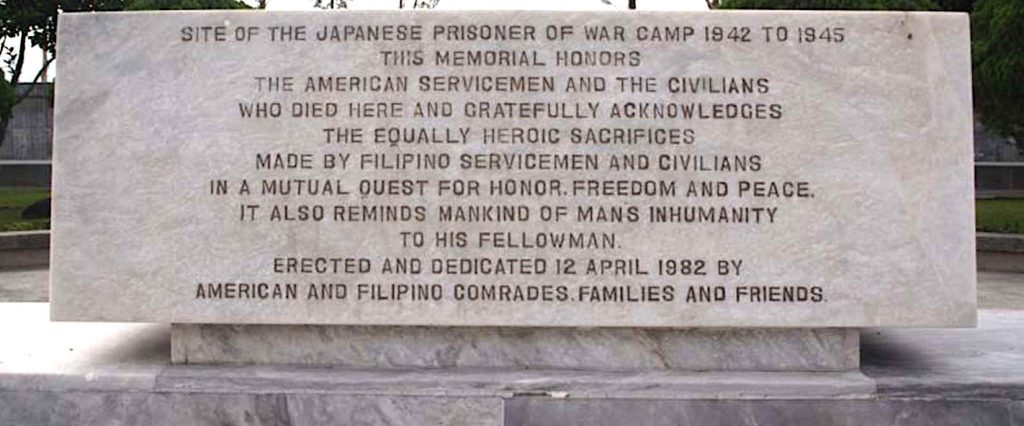
SOFIO, ROBERT GANSEVOORT (1921-1944). Second lieutenant, 825th Bomb Squadron, 484th Bomb Group, 49th Bomb Wing, United States 15th Army Air Force. Sofio was born in Chicago. As per the 1930 federal census, his parents, Edward and Alma, were born in New York and his father owned a novelty manufacturing company. Robert was the eldest of three children. Robert, his brother Gilbert, and his sister Fredericke were all born in Illinois. At the time of the census, the family lived in Chicago. The 1940 federal census documents that the family lived in Cincinnati, Ohio. His father was a production manager at a roofing company and the eighteen-year-old Robert was a shipping clerk. A picture of Robert is published in the 1940 Withrow High School Yearbook; Withrow High School is located in Cincinnati.
Sofio’s World War II draft registration card notes that he was 20 years old, unemployed, and lived at 4626 North Clarendon Avenue in Chicago. His mother was named next of kin. His registrar’s report, dated February 16, 1942, describes him as 5′ 8″tall and 148 pounds with hazel eyes, brown hair, and light brown complexion. As per his WW II Army enlistment records, dated April 28, 1942, he entered the service as a private and was single. His civilian occupation was bartender.
Robert’s unit, the 825th Bomb Squadron, 484th Bomb Group, 49th Bomb Wing, is cited in his Find a Grave website description. The 49th Bomb Wing consisted of three bomb groups, including the 484th Bomb Group. The 484th Bombardment Group was made up of four squadrons, including the 825th. It is likely that Robert was involved in some of the missions as described on the Army Air Corps Library and Museum website:
Constituted as 484th Bombardment Group (Heavy) on 14 Sep 1943 and activated on 20 Sep. Trained for combat with B-24’s. Moved to Italy, Mar-Apr 1944. Assigned to Fifteenth AF. Redesignated 484th Bombardment Group (Pathfinder) in May 1944 but did not perform pathfinder functions. Redesignated 484th Bombardment Group (Heavy) in Nov 1944. Operated primarily as a strategic bombardment organization, Apr 1944-Apr 1945. Attacked such targets as oil refineries, oil storage plants, aircraft factories, heavy industry, and communications in Italy, France, Germany, Austria, Czechoslovakia, Hungary, Rumania, and Yugoslavia. On 13 Jun 1944 a heavy smoke screen prevented the group from bombing marshalling yards at Munich; however, in spite of severe damage from flak and interceptors, and despite heavy gunfire encountered at the alternate target, the group bombed marshalling yards at Innsbruck and received a DUC for its persistent action. Received second DUC for performance on 21 Aug 1944 when, unescorted, the organization fought its way through intense opposition to attack underground oil storage installations in Vienna. In addition to strategic missions the 484th participated in the drive toward Rome by bombing bridges, supply dumps, viaducts, and marshalling yards, Apr-Jul 1944; ferried gasoline and oil to Allied forces in southern France, Sep 1944…
Sadly, Robert Sofio was one of eleven crewmembers on the B-24J #38 “Red 38” to perish on December 17, 1944. A detailed account of the incident is described on Robert’s Find a Grave entry:
Bomber #38 was lost to fighter attack with the crew of 1Lt Roger A. Martin on a mission to Odertal, Germany (present day Zdzieszowice, Poland), on December 17, 1944. Attacked by an ME-109 piloted by Lt. Kraft from III/JG 300 at about 1205 hrs., bomber #38 crashed near the crossroads leading to Liebau (present day Libinia) and Wenzeldorf (present day Vaclavov), Czechoslovakia. None of the 11 crew members were able to bail out and all perished with the bomber. Lt. Kraft bailed out after his fighter was hit by one of the waist gunners. The ME-109 crashed in a garden in Libinia and Lt. Kraft landed uninjured.
The crew was buried in a local cemetery. After the war, the bodies were exhumed and sent to the States or the US cemetery in Saint-Avold, France, depending on the wishes of the families.
Also included on that website is S/Sgt James W. Taylor’s (826th Bomb Group, Gunner with #55) eyewitness account:
I was flying in ship (#55) and ship #38 was about 1500 yards from the formation with another straggler (#25 “Little Joe”). At about 1155, three enemy aircraft attacked from out of the sun, hit a B-24 (#28, 11:56) which went down in a spin, then hit (#38 (12:05) which caught on fire coming from the waist windows and the plane went down in a flat spin burning as it disappeared into the overcast. I did not see any chutes at the time.
According to an article in the July 24, 1947 issue of the Rogersville, Tennessee Review, Robert’s parents hosted the parents of Griffeth H. Fort, a member of Robert’s team on the ill-fated #38. The article states that “Mrs. Sofio has just returned from Europe, where she visited the United States Military Cemetery at St. Avold, about 20 miles from Metz, where her son and “Griff” are buried. She had pictures of the cemetery as a whole and individual snapshots of the graves of her son and Griff.”
Another account of the event is described by Griffeth H. Fort’s mother on an information card sent by the Alumni Association, Maryville College. The Alumni Association requested data regarding students of the college who either were serving or had served in some branch of the military service. Mrs. Fort’s account is as follows:
Missing in action as of Dec 17, 1944. While on a mission to Germany while flying south of Neisse, Germany his bomber (B24 Liberator) was attacked by enemy fighters. The right wing was disabled. The plane disappeared into a dense cloud formation, flames spurting from the wing. If parachutes were used it could not be seen. No trace of any of the crew of eleven men has been found.
The United States Headstone Application for Military Veterans, submitted by Helen B. Blaine Sofio on December 17, 1947, three years to the day after his death, verifies Robert’s rank, unit and branch of service. Only twenty-three years old at the time of his death, he was interred at Green-Wood on December 17, 1948, exactly four years after his plane was shot down and he died. Section 105, lot 21.
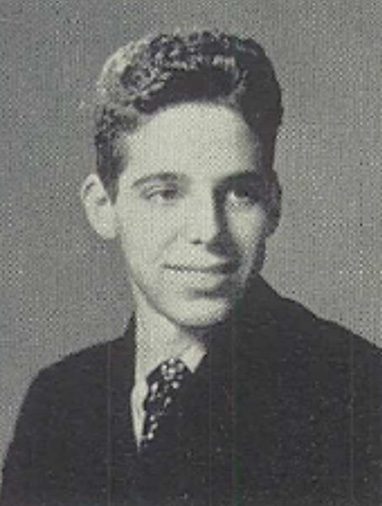

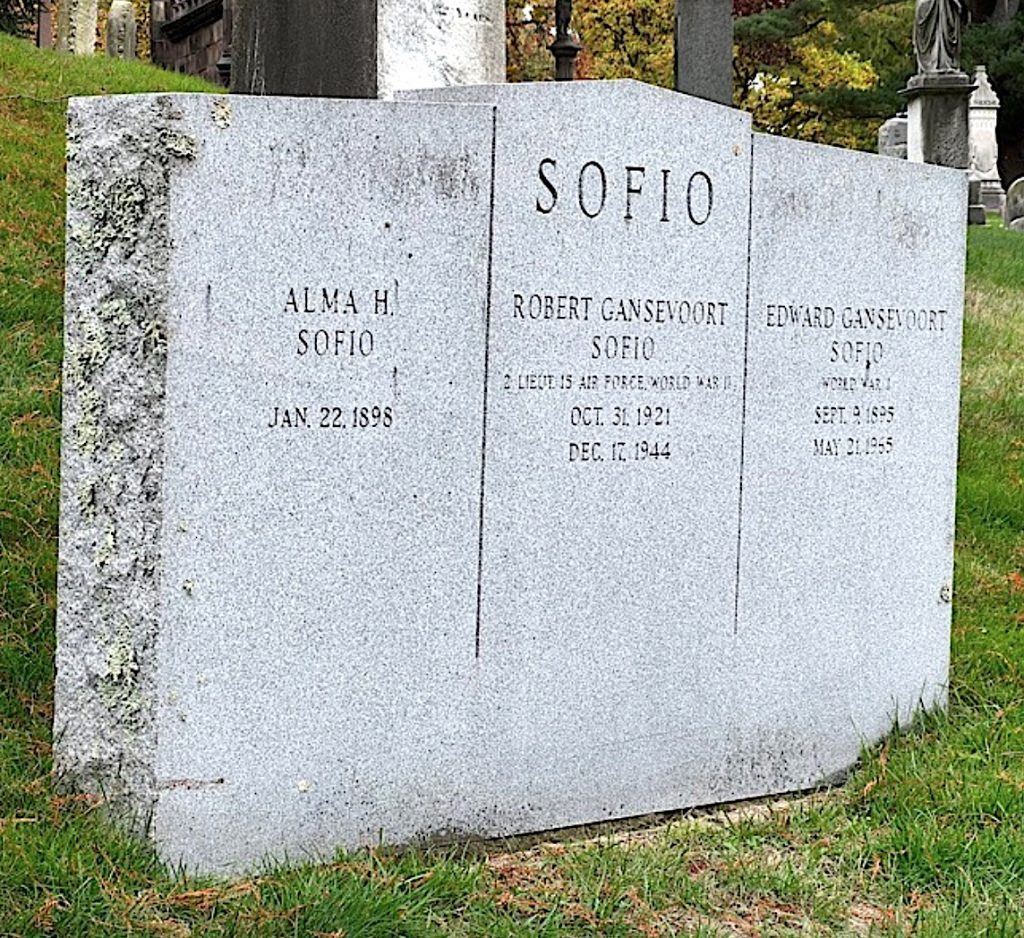
SORGENTI, JOSEPH J. (1910-1985). Tech 5, Task Force U and 804th Military Police, United States Army. Sorgenti was born in Manhattan, as per his World War II draft registration card. According to the 1915 New York State Census, he lived with his parents, Nicholas and Carmella, and three older siblings, Anna, Jennie and Gus, on Elizabeth Street in Manhattan. His father was a tinsmith. Most of his family information remained the same in the 1920 federal census. The only exception was he had a third sibling, Albert, aged three. The 1930 federal census records that the family had moved to 66th Street in Brooklyn. His father was born in Italy, immigrated to the United States in 1898, and was an operator in a tire can company. His mother was also born in Italy. All siblings, born in Manhattan and ranging in age from 14 to 26, lived with their parents. Nineteen-year-old Joseph was an office clerk.
Between the years 1933 and 1937, Joseph took three cruises, as detailed on the Passenger Lists of United States Citizens. On July 13, 1933, he sailed from an unspecified port and arrived in New York eleven days later. On June 20, 1935, he sailed on the SS Haiti from New York and returned on July 8, 1937. He then made another round-trip excursion aboard the SS Haiti from New York, departing October 14, 1937 and returning on November 1.
Sorgenti’s World War II draft registration card notes that he was 30 years old and lived at 6212 12th Avenue in Brooklyn. His mother, residing at 1274 64th Street, was named next of kin. His employer was the Royal Netherlands Steamship Company, located at 25 Broadway, Manhattan. His registrar’s report, dated October 16, 1940, describes him as 5′ 10″ tall and 160 pounds with brown eyes, brown hair, and light complexion.
As per his WW II Army enlistment records, he enlisted in the Army on March 4, 1942 as a private. His civilian occupation was railroad clerk. His daughter, Josephine Sorgenti, shares that he served in the Task Force U unit and the 804th Military Police. He earned the rank of Tech 5 during his service. She also conveys that he served in Italy, France, North Africa and the Pacific, and fought at Normandy. The article, “Military Police and Engineer Special Brigades: The Normandy Invasion,” describes the role of the military police as follows: “Planning for the invasion, military strategists strived to ensure success on all levels. Military police missions such as circulation control, force protection and enemy prisoner of war (EPW) management would require numerous military police units.”
According to “Battle of Normandy Facts” by Mack Dean,
The Battle of Normandy refers to the Invasion of Normandy by Allied Forces in Normandy France during World War II from June 6, 1944 until the Allied breakout in July, 1944. The invasion was part of Operation Overlord during World War II and the largest amphibious operation in the history of modern warfare.
There were numerous task forces involved in Normandy. Since Sorgenti was serving in Task Force U, he may have been part of the following events as described in Chapter 9 of “Operation Neptune” found on the Naval History and Heritage Command website:
The task of the Assault Force U was to land elements of the VII Corps, U.S. Army, in the Madeline sector of the coast of Normandy, to support the landing and subsequent army operations. This was achieved by Naval gunfire, by establishing and operating a Ferry Service to unload ships and craft of follow-up convoys and by coordinating the siting and construction of a craft shelter of the beach. To accomplish this task, Commander Assault Force U, Rear Admiral D.F. Moon, U.S.N., had under his command approximately 865 ships and craft…In his report, General Eisenhower has commented on Force U’s Assault as follows: “The American 4th Division (VII Corps) assault on the Utah beaches just west of the Vire Estuary, met with the least opposition of any of our landings. Moreover, an error in navigation turned out to be an asset, since the obstacles were fewer where the troops actually went ashore than on the sector where they had been intended to beach. The enemy had apparently relied upon the flooding of the rear areas here to check any force which might attempt a landing, and the beaches themselves were only lightly held. Complete surprise was achieved and a foothold was obtained with minimum casualties although it was here that we had expected our greatest losses. The airborne troops having seized the causeways through the inundated hinterland and prevented the enemy from bringing up reinforcements, the 4th Division struck northwest toward Montebourg, on the road to Cherbourg.
His daughter relates that Sorgenti was awarded a Bronze Service Arrowhead for his service. According to the Department of Veterans Affairs BIRLS (Beneficiary Identification and Records Locator Subsystem) Death File, he was discharged on October 23, 1945.
After his service and according to the 1950 federal census, Joseph, a traffic agent for a steamship company, and his brother Albert, a policeman, lived with their sister Anna, her husband, and their son, on 13th Avenue. He married Dolores on October 1, 1960, as per their only child, Josephine. He was employed by Cross Ocean Ltd. for 30 years. Section K, lot 4600, grave 87.
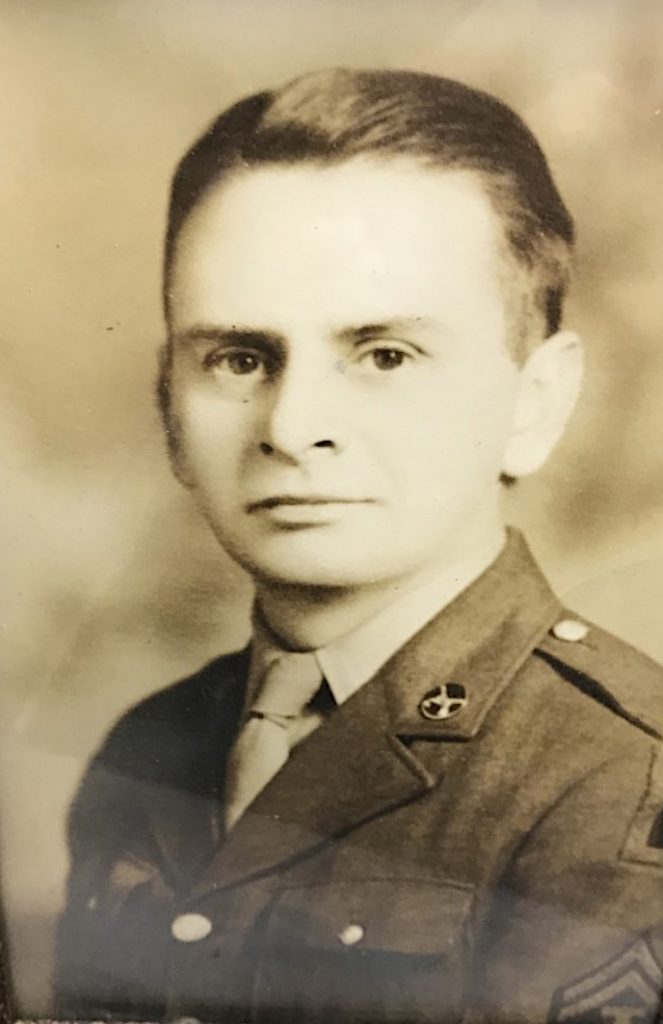
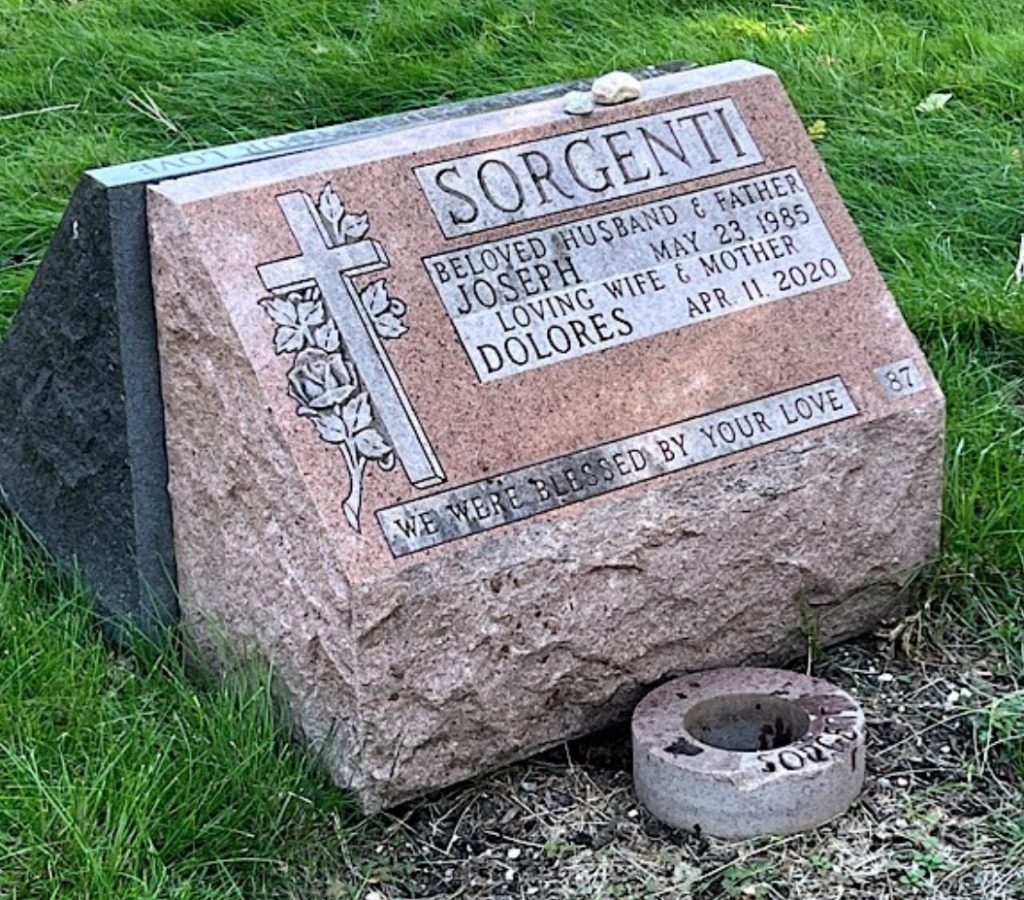
SPAVENTA, JOHN (or GIOVANNI) LOUIS (1916-1966). Private, United States Army. John was born in 1916 in Brooklyn to Louis and Olympia Spaventa. Both of his parents were born in Italy. His first name was listed in the 1920 federal census as Giovanni. At the time the 1940 federal census, five Spaventa children still lived at home; twenty-three-year-old John was the second youngest. The census noted that John had completed two years of high school and was employed as a clerk.
Spaventa’s draft registration card, dated October, 1940, records 24-year-old John as employed at A&P grocery on 5th Avenue in Brooklyn. He listed his mother as the person who would always know his whereabouts. John was living at home at the time of registration, but his draft card added two changes of his address, 112 Bay 8th Street and 1359 81st Street, both in Brooklyn. He was described as 5′ 6 1/2″ in height, weighing 160 pounds, with gray eyes, black hair, a light complexion, and a scar on his left wrist.
As per his son, Lou, he served as a private in the Army during World War II. His son relates that he reported for duty on October 30, 1942, and was discharged in poor health and authorized to return home on June 24, 1943 by the African Department. Spaventa’s formal discharge was on July 14, 1943. He was the recipient of a disability award from the Army and earned a European-African-Middle Eastern Theater Campaign Ribbon.
In June, 1944, according to New York City records, John and Adeline Somma obtained a marriage license. John and Adeline were living in Brooklyn at the time of the 1950 federal census. He was working as an electric appliance salesman. He and Adeline had two sons; John O., age 5, and Louis J., age 3.
John died in October 1966, at the age of 50. Adeline Spaventa died in 2015 and is interred with her husband. Section 134, lot 39100.

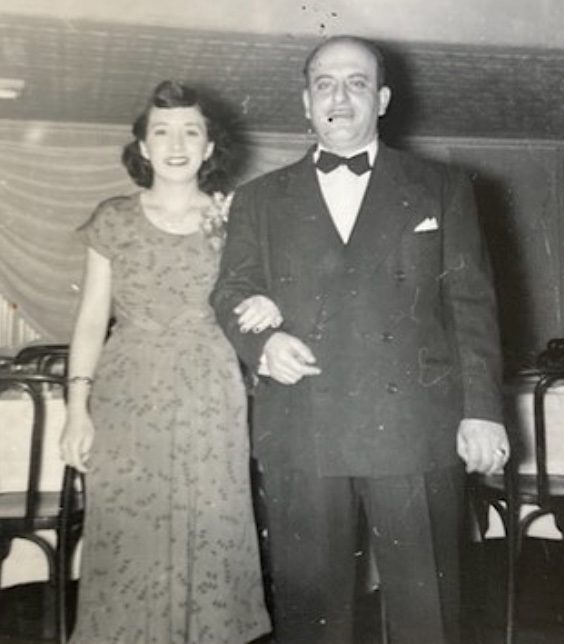
SPENCER, FREDERICK BOGART (1916-2009). Technical sergeant, General’s Staff, United States Army Air Force. Spencer was born in Brooklyn. The April 28, 1907, issue of the Brooklyn Daily Eagle reports that Frederick’s parents, Ernst Edgell Spencer and Mary Elizabeth Keller, were married that month at the home of the bride’s brother. As per the 1920 federal census, three-year-old Frederick lived with his parents and his older brother, Ernest Jr., in the Park Slope area of Brooklyn. His father was born in New York and was a broker at the Stock Exchange. His mother, a housewife, was born in Pennsylvania. Elizabeth Hammer, a maid, resided with the family. The 1930 federal census records that the Spencers lived in a family-owned residence at 618B Third Street in Brooklyn. A servant, Ida Johnson, was employed and lived with the family. Frederick is listed among 79 graduates from Poly Prep Country Day School in the Brooklyn Daily Eagle’s June 5, 1936 issue. As per the 1940 federal census, Frederick’s father continued his employment as a stockbroker and his brother was a salesman. The census records that Frederick completed four years of high school and was an inquiry clerk. The family employed Bridget Hynn, a maid.
Spencer’s World War II draft registration card notes that he was twenty-three years old and was employed by Harlem Savings Bank, located at 4242 Broadway in Manhattan. His mother was named next of kin. The registrar’s report, dated October 16, 1940, describes him as 5′ 11″ tall and 180 pounds with blue eyes, brown hair, and a light complexion.
The August 20, 1941 issue of the Brooklyn Daily Eagle reports that the parents of Kathleen Keiser announced their daughter’s engagement to Frederick. The article confirms that Frederick attended Poly Prep Country Day School and worked for the Harlem Savings Bank. The February 17, 1942 issue of the same paper details the wedding of Frederick and Kathleen at the Church of the Holy Trinity. Frederick’s brother was the best man at the ceremony.
As per Spencer’s WW II Army enlistment records, he enlisted on May 16, 1942 as a private. He is described as married, had attended four years of high school and was employed by a financial institution. Perhaps because her husband was serving in the military, Kathleen Spencer (see) served in the USO during World War II, according to her obituary posted by the Applebee Funeral Home. His daughter, Gail Chase, shares that he served in the Army Air Force in the General’s Staff. He achieved the rank of technical sergeant and served in England. His biography on legacy.com notes that he was the flight engineer for the commanding general’s plane.
Frederick’s great-great-great-grandfather also served in the military, fighting for independence during the Revolutionary War. Spencer’s United Colonies’ lineage dates back to the early 1700s, as denoted on the February 23, 1960 application submitted by his brother, Ernest, to the Board of Managers of the Empire State of the National Society Sons of the American Revolution. This lineage is traced through their mother’s bloodline: Mary Keller, their mother, born in Pennsylvania in 1884; her father, Parvin Masters Keller, born in Pennsylvania in 1849; her grandfather, George Dennis Keller, born in 1817; her great-grandfather, Jacob Keller, born in 1718; her great-great-grandfather, Joseph Keller II, born in 1751; and, her great-great-great-grandfather, Joseph Keller, born in 1719. In the application, Earnest states that he has lineal descent from Joseph Keller II, born in Plainfield, Pennsylvania, on January 15, 1751. As per Ernest, “The said Joseph Keller II enlisted from Plainfield, Northampton County, Pennsylvania as a ‘Seven-Months-Man’. He was some 20 years of age.” This is corroborated on a Find a Grave listing for Joseph Keller Jr. Citing the Keller Family History Book, the post states, “At the time of the Revolutionary War, being some twenty years of age, our Joseph Keller enlisted as a so-called “Seven-Month-Man” but how long he was in the service of the colonies is not known.”
After Frederick’s military service, and according to the 1950 federal census, he was then a stockbroker; his wife, and their two children, Gail Ann and Frederick Jr., resided at 325 Clinton Avenue, apartment 14E. He first worked with his father at Coggleshall and Hicks Brokers, then had a specialist seat on the American Stock Exchange, a position he held for 40 years. His daughter verifies that he worked as a specialist for the Stock Exchange and also shares that he completed four years at SUNY Stony Brook.
The Spencers spent much of their married life in Nassau County. They lived in Glen Head and Old Brookville, and in the 1950s, joined the Nassau County Country Club where he took up golf, playing until he was 91. He was a board member of that country club. When he retired in 1979, the Spencers moved to North Carolina and then spent their last years in Coburg Village in Roxford, New York. In North Carolina, the Spencers enjoyed golf, bridge, dance club and other social events. The Spencers also participated in water sports, an activity that began when Frederick spent time as a child in Saltaire, Fire Island.
Frederick’s obituary, posted on July 21, 2009 in the Detroit Free Press, states:
Served in World War II with the Army Air Corp. Moved to Long Island, New York after war to raise family. Was a Specialist Stock Broker with a seat on the American Stock Exchange. Retired to North Carolina in 1979 to enjoy his golf and the good life. He spent his final years in upstate New York.
As per legacy.com, Spencer was survived by his wife of 67 years, two children, Gail Chase, Frederick Jr., four grandchildren, one great-grandchild and one cousin. A memorial for Spencer was held at the Edison Club in Roxford. The family requested that donations be made to the Community Hospice in Schenectady, New York. Section 175, lot 38025.

SPENCER, KATHLEEN KEISER (1917-2011). United Service Organizations (USO) worker. Born Kathleen Keiser, she was residing at 608A Third Street, in the Park Slope neighborhood of Brooklyn, New York in 1930, according to the federal census for that year. She was living with her mother, Louise S. Keiser, age 40, and her father, Edwin H. Keiser, age 43. She was 12 years old and English-speaking. Edwin Keiser was a neckware manufacturer. Elizabeth Kelly, a maid born in Scotland, also lived in the household.
By the 1940 federal census, Kathleen was 22 years old, living with her parents in the same building in Brooklyn as in 1930. Having completed four years of high school, she was a savings bank secretary, while her father was a manager for men’s ware imports. His draft registration card lists his full name as Edwin Martin Keiser, date of birth of September 2, 1886, and his employer as F. A. MacCluer, Inc., 9 East 38th Street, New York, NY.
Kathleen served in the USO (United Service Organization) during World War II. The USO oversaw and provided recreation and aid services for those who served in the United States Armed Forces. USO clubs were established and became a “home away from home” for military personnel and workers in wartime industry. We do not know what type of work Spencer performed for the USO, but women her age were usually junior hostesses, a volunteer position.
She married Frederick (Fred) Bogart Spencer (see), who served in the Army Air Corps during World War II, on February 17, 1942, at the Holy Trinity Church in Brooklyn. The Brooklyn Daily Eagle printed the engagement announcement on August 20, 1941, noting that the bride was a graduate of the Berkeley Institute (now the Berkley Carroll School) in Brooklyn, while the groom had attended Poly Prep Country Day School and was associated with the Harlem Savings Bank. The bride and groom had been neighbors, living on the same street in Brooklyn. Both The New York Times and the Brooklyn Citizen printed announcements of the wedding. The couple honeymooned in the Poconos.
The Spencers settled in Brooklyn after marrying, but moved to Glen Head, Long Island, to raise their family, later relocating to nearby Old Brookville. Upon Fred Spencer’s retirement, they moved to Whispering Pines, North Carolina, while the couple’s last years were spent at Coburg Village in Rexford, New York. A Passenger and Crew Manifest indicates that Kay Spencer flew via British Overseas Air Corporation (BOAC; today, British Airways) to New York City from Hamilton, Bermuda, on March 19, 1961. She was then living at 93 Plymouth Drive North, Glen Head. The United States Public Records Index shows her living at 48 Pine Lake Drive in Whispering Pines, North Carolina in 1993 and 1994, and later in 1994 at 117 Pine Lake Drive, also in Whispering Pines.
Spencer was an active volunteer at the Glen Cove Community Hospital and the Sandhills Farm Life Elementary School in North Carolina. According to her obituary in the Albany Times Union of August 9, 2011, she “enjoyed the beach, gardening, dance club, traveling, bridge, and water aerobics.” She “excelled in the crafts of needlepoint, knitting, and flower arranging.” Fred Spencer passed away at age 92 on May 4, 2009, at home in Rexford, having been married to Kay for 67 years. Kay died on August 5, 2011. The Spencers were survived by two children, Gail Spencer Chase and Frederick Bogart Spencer Jr., four grandchildren, and one great-grandchild. Kay and Fred Spencer are interred together. Section 175, lot 38025, grave 4.

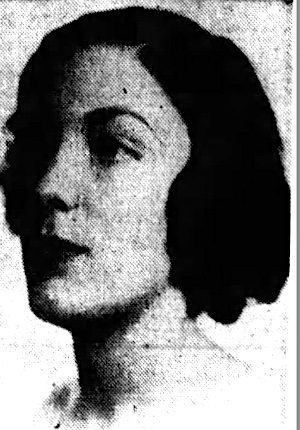

SPINELLI, BIAGGIO (1917-1994). Rank unknown, First Construction Battalion (Nagasaki, Japan) and First Unit Invasion of Normandy, United States Navy Seabees. Spinelli was born in Brooklyn. Biaggio was probably named after his maternal grandfather, Biagio Torres who, according to the 1900 federal census, was born in Italy. As per the 1920 federal census, Spinelli’s parents, Leo and Rose, were born in New York, the family lived on 36th Street in Brooklyn, and his father was a laborer. Also listed in the census is Biaggio’s older brother, Anthony. The census taker recorded Biaggio as James on the document. Referencing the 1925 New York State census, the family lived on 35th Street in Brooklyn and a third son, Frank, had been born to Leo and Rose. Biaggio’s name is misspelled as Bigio. The 1930 federal census records that the family resided at 168 35th Street and Biaggio’s name is spelled as Biagio. A boarder, Salvatore Scala, was a resident of the home.
Biaggio’s daughter, Santa Spinelli, shares that her father graduated from the New York School of Printing (since renamed High School of Graphic Communication Arts), a vocational school, in 1934. She also shares that he attended Stuyvesant High School. As per the 1940 federal census, the family still resided at the 35th Street address, his father was a fireman, and all the sons lived with their parents. Biaggio, twenty-two years old, had completed four years of high school and was a die-cutter in a leather goods factory.
Spinelli’s World War II draft registration card notes that he was twenty-three years old and was employed by Ace Die Cutting Company, located at 107 West 25th Street in Manhattan. For his address, Biaggio gave four addresses. Three addresses, apparently locations where he lived short-term, 168 35th Street, 844 41st Street, and 91 Minna Street, are written, then crossed out. On the side, and left intact, is 1438 36th Street. His mother was named next of kin. The registrar’s report, dated October 16, 1940, describes him as 5′ 9½” tall and 160 pounds with brown eyes, black hair, and a dark complexion.
Before his enlistment, Biaggio married Nancy Dia Giacomo on June 29, 1941, according to their daughter. As per the Department of Veterans Affairs BIRLS (Beneficiary Identification and Records Locator Subsystem) Death File, Biaggio’s enlistment date was October 5, 1943. According to the United States Navy Muster Rolls, dated November 30, 1943, Spinelli was stationed at the Naval Construction Training Center at Camp Peary in Williamsburg, Virginia. He is listed as an Inductee Special Assignment (ISA) and a Construction Recruit (CR) for Base Maintenance Unit 567. His daughter shares that he was a member of the Seabees, fought in France and the Pacific, and served in the First Construction Battalion (Nagasaki, Japan), as well as the First Unit Invasion of Normandy. According to the Seabee Historical Foundation,
Seabees are construction workers fully trained in defending themselves against enemy attack while building the infrastructure to keep the war effort moving . . . . The extraordinary contributions of the Seabees led to them becoming a permanent part of the Navy’s fighting forces, building and fighting in every military conflict since their inception.
In the article, “Seabee History: Formation of the Seabees and World War II,” The Naval History and Heritage Command explains,
After completing three weeks of boot training at Camp Allen, and later as its successor, Camp Peary, both in Virginia, the Seabees were formed into construction battalions or other types of construction units. Some of the very first battalions were sent overseas immediately upon completion of bott training because of the urgent need for naval construction.
Since Biaggio was serving and participated in the invasion of Normandy, he may have been part of the following events as described in a blog by Jonathan Arnholz, posted on the National Center for Construction Education and Research website:
The Seabees were a crucial part of the Allies’ invasion of Normandy on D-Day, being one of the first units to go ashore.
Their first task, along with the U.S Army Engineers, was to demolish barriers that the Germans had set up to slow the attackers. After destroying the barriers, the Seabees continued to pave the way by building causeways for pontons and larger ferries to bring troops and supplies ashore. All this work happened under enemy fire, resulting in heavy casualties, but the heroism of the Seabees opened necessary holes for the invading forces.
As the Allies began to establish control of the beaches, the Seabees constructed a makeshift port area using a variety of different materials This unique harbor became known as Mulberry A, which would go on to help bring ashore a million Allied soldiers during the month following D-Day.
As per the Department of Veterans Affairs BIRLS Death File, Spinelli was discharged on December 12, 1945. After his service, Biaggio joined the Frank A. Longhito Post, Veterans of Foreign Wars. An article in the Daily News, published on April 10, 1947, announced the Longhito Post’s first annual military ball. This announcement was issued by Biaggio, commander of the post. Subsequently, the post would add Biaggio’s name and become the Longhito-Spinelli VFW Post 5493.
According to the 1950 federal census, Biaggio and his wife lived at 91 Minna Street. The couple had two sons, Leo and Emil, at the time. A third child, Santa, would follow. Biaggio is listed as a foreman at a dye cutting factory. As documented in this census, Biaggio’s parents lived in the same building and his father was still a fireman. A publication in the May 31, 1964, issue of the Daily News, Brooklyn Section, lists Biaggio’s son, Leo as a graduate of the West Point Military Academy. Santa relates, “Biaggio worked for the Ace Die Cutting Inc. for 50 years. He was proud of his service during the war.” Santa also shares that Biaggio passed away on March 6, 1994, a year after his wife died. Section Dawn, lot 44608, grave 142.
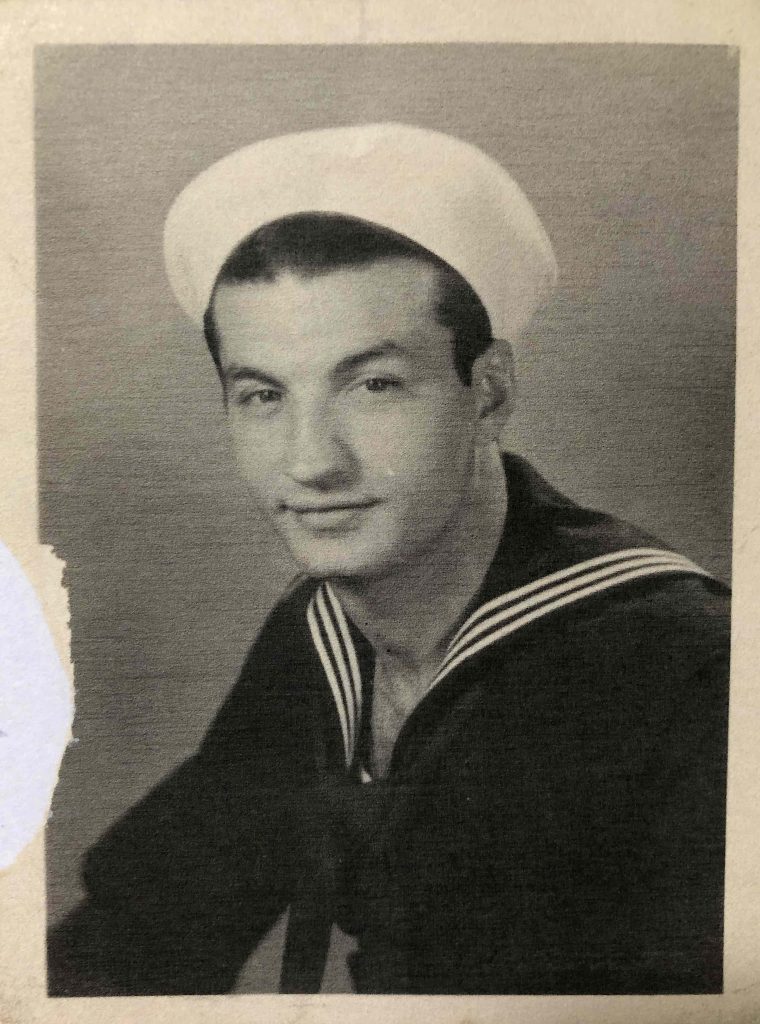
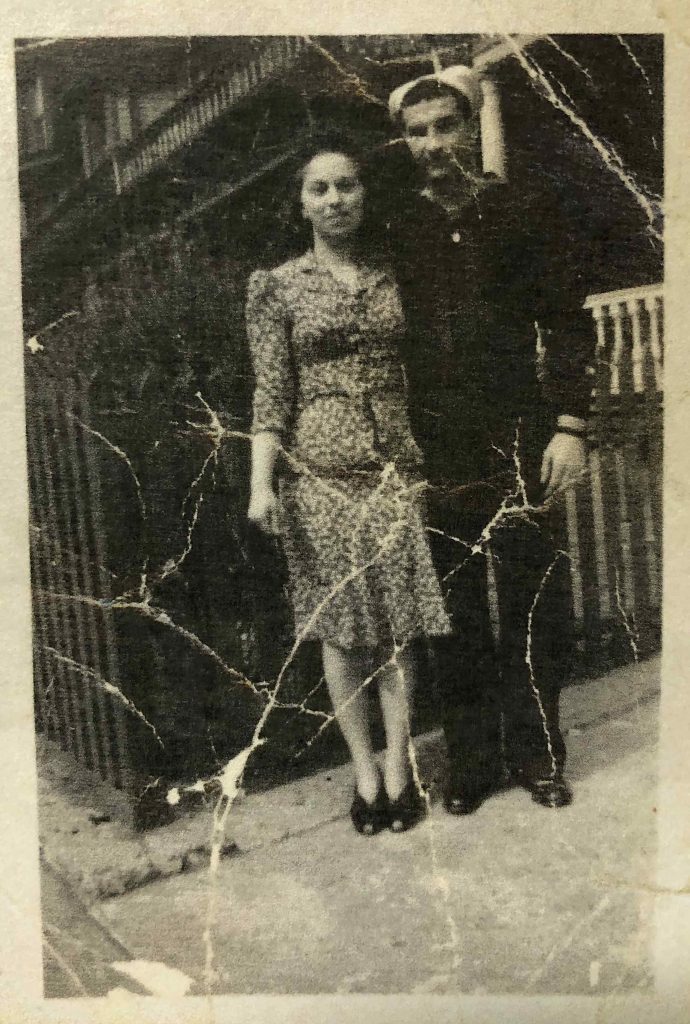
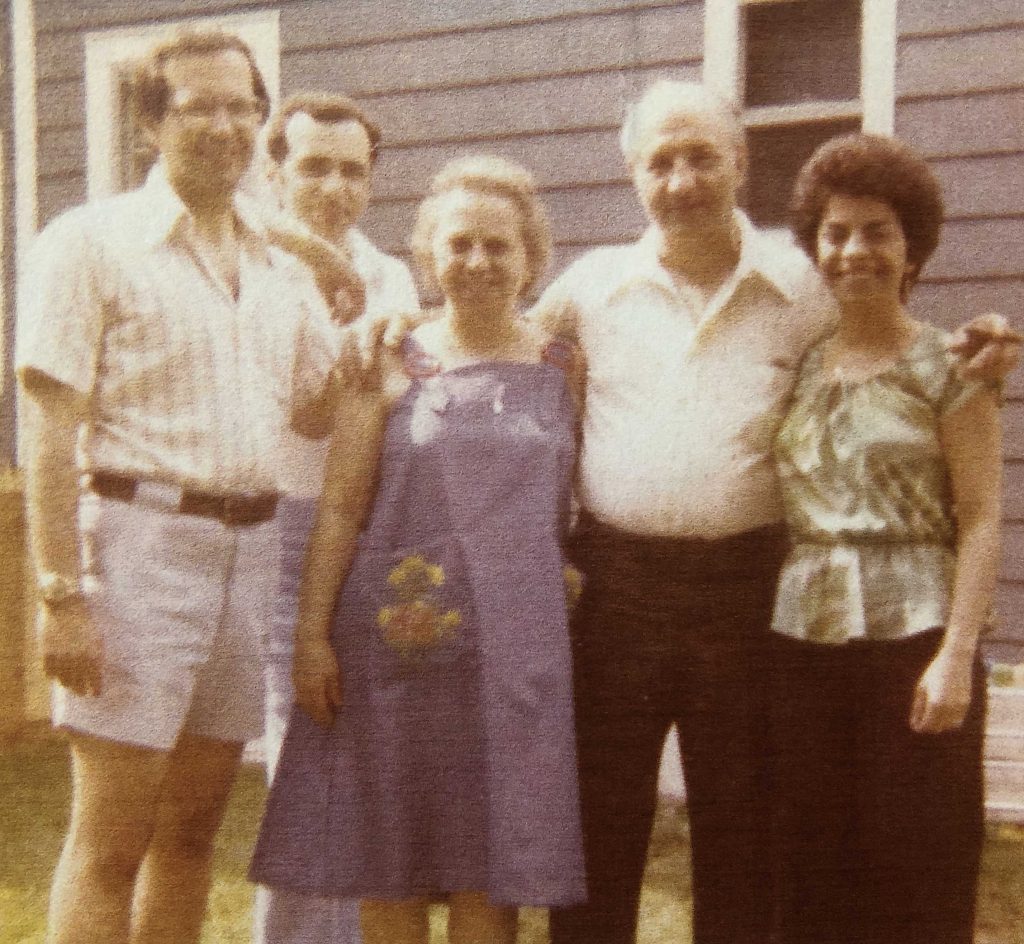

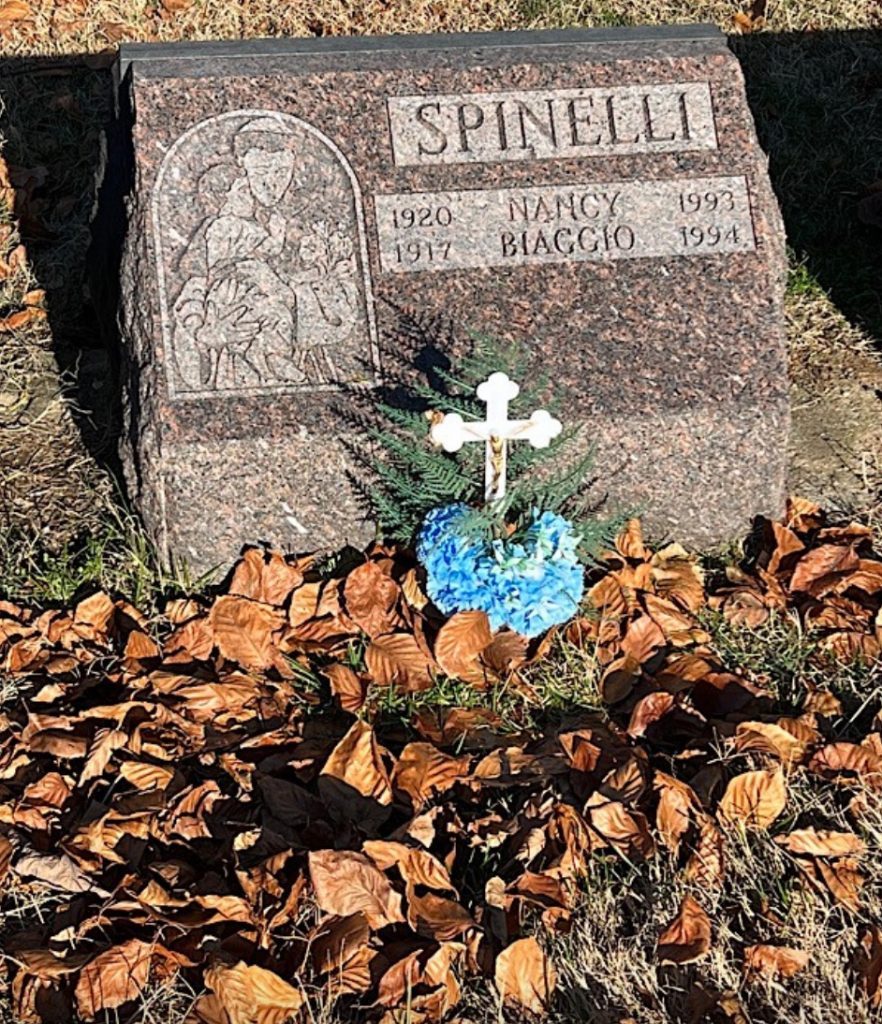
SPINELLI, FRANK (1925-1993). Rank unknown, United States Marines. The index record for Frank Spinelli in the Veterans Affairs Death File shows that he enlisted on August 23, 1943, served in the Marine Corps during World War II and was discharged on May 4, 1946. As per his obituary in the New York Daily News, he was survived by his wife, Terry née Scotto, a brother and sister and many nieces and nephews. A Mass of Christian Burial was held in his memory at St. Mary Star of the Sea Roman Catholic Church on Court Street in Brooklyn. Section 79, lot 44607, grave 165.

SQUICCIARINI, NICHOLAS (or NICOLA) JOHN (1924-2006). Private, United States Army. Nicholas, often known as Nick, was born in New York. The family name has been spelled both Squicciarini, Squicarini,and Squicarine. Per Ignazio Squicciarini’s petition to become a United States citizen, filed in 1928, the family was living at 448 Lincoln Road, Brooklyn. Ignazio’s son, Nicola (Nicholas) was born on December 7, 1924 in Brooklyn, and his daughter, Rose, on November 18, 1921, in Brooklyn. Both Ignacio and his wife, Anna, were born in Bitetto, Italy. Ignazio immigrated from Naples, Italy on the SS Cretic and arrived in Boston on May 14, 1913. According to the 1930 federal census, the Squicciarini family lived on Lincoln Road in Brooklyn. Ignazio Squicciarini, the head of the family, was then 36 years old and a naturalized citizen who worked as an ice deliverer. His wife, Anna, was 32, and there was an infant son, Michael, who was less than a year old.
The family had moved to Dean Street in Brooklyn, per the 1940 federal census, and Ignazio was unemployed but looking for work. Nick was 15 and in his second year of high school. Also residing in the household were Anna, and siblings Rose, who at 18 was also looking for work, Michael, age 10, and Thomas, age 8.
Nick’s World War II draft registration card, completed on December 29, 1942, shows his name as “Nick John Squicarine.” He resided at 1513 Dean Street, Brooklyn, with his mother, Anna, who was his contact. His employer was Mr. Levelfield and he worked at 595 Water Street in New York City. Nick was 5′ 8″ tall, 161 pounds, with a ruddy complexion, black hair, and brown eyes. He enlisted on July 28, 1943, and, per his enlistment record, he had two years of high school and was single, with no dependents. Nick’s draft registration card bears a stamp noting his honorable discharge from the United States Army on January 16, 1946.
The 1950 federal census shows Nick living with his sister, Rose, and her husband, Victor Puglisi, a World War II veteran, on East 45th Street in Brooklyn. Nicholas and Victor are interred side-by-side at Green-Wood. Nick’s parents also lived there; his father was 55 and worked at a bank, while his mother worked as a machine operator at a glove factory. His sister Rose worked as a finisher in a perfume factory, and their brother Thomas was employed as a furniture refinisher. Nick was 25 and a department store stock clerk.
Nicholas Squicciarini’s last residence was on Staten Island. He seemed to have lived on Staten Island since at least the 1990s. Records indicate that he lived at several addresses over the years: in Brooklyn at 852 East 46th Street, and at 21A Katan Loop and 8 Perkiomen Avenue, both on Staten Island. He died at the age of 81. He is interred with his father, who died on October 28, 1974, and his mother, who died on June 24, 1993. Section 129, lot 39044, grave 1.
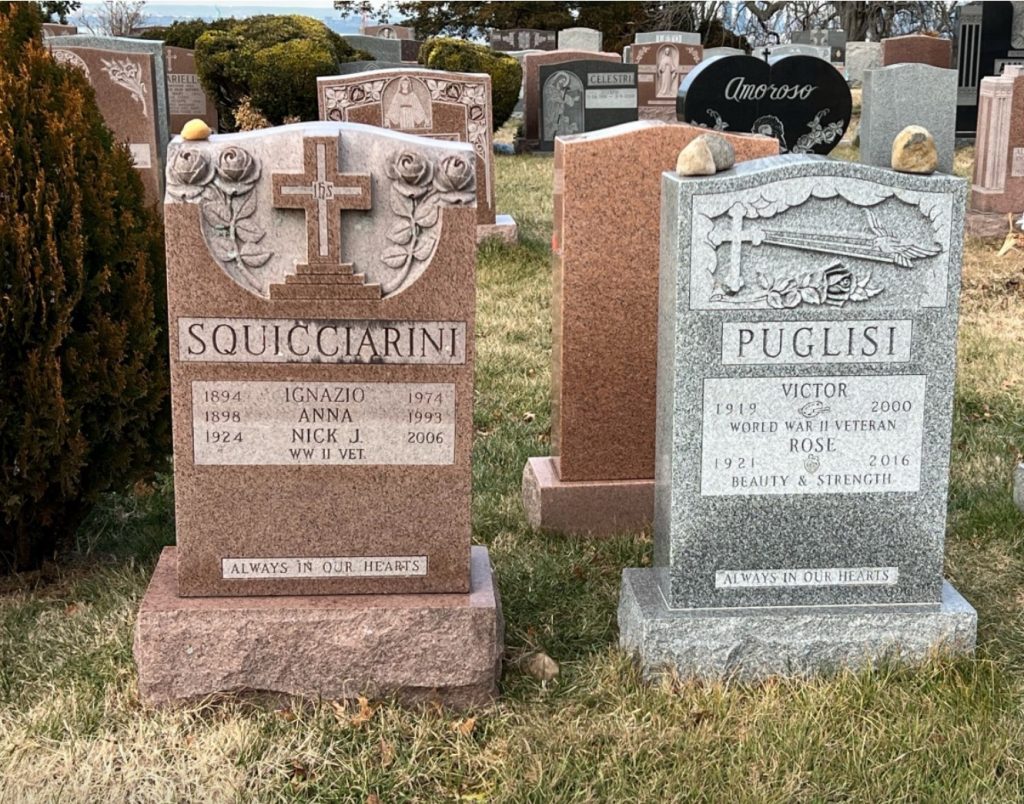
STAINTON, ALFRED H. (1922-1945). Ensign, United States Navy. Born in Brooklyn, the 1925 New York State census shows his family living with his mother Lavinia’s parents in their home on Dahill Road in Brooklyn. His father was 32 and worked as a bank clerk, while his mother was 23. In addition to two-year-old Alfred, there was a younger brother, Robert C. (see), who was one year old.
By the 1930 federal census, the Staintons were living on East 4th Street in Brooklyn. Harry (Harold) Stainton was still employed as a bank clerk. Then years later, in the 1940 census, the Staintons were again living with Alfred’s grandparents on Dahill Road. Alfred’s grandfather Alfred Payne was 65 and owned the house. He had been born in New York and worked as an operator for a book binder. His wife, Alfred’s grandmother Charlotte Payne, was 56. Alfred’s father was still working as a bank clerk.
Stainton’s draft registration card, filed on June 30, 1942, lists him as living at 587 Dahill Road in Brooklyn, with his mother as his contact. He was 19 years old, 5′ 11″ tall, and weighed 150 pounds, with a light complexion, and brown eyes and hair. At the time, he was attending Brooklyn College.
Alfred went on to graduate from Brooklyn College as a biology major and, in 1944, when his father died on April 7th, he was a midshipman in the Navy. His younger brother, Robert (see), was an aviation machinist’s mate, third class. The University of Notre Dame yearbook for 1944 reports that Alfred was an ensign and attended United States Naval Reserve Midshipmen’s School.
Sadly, according to the Navy’s New York State Summary of War Casualties for 1946, on February 8, 1945, Ensign Alfred H. Stainton was either killed in action or died later of his wounds. He was interred in 1948 with his father at Green-Wood; his brother Robert would join him there in 1985. His mother, Lavinia A. Payne, lived until 1991, and is buried with them. Section 166, lot 30162, grave FLC.
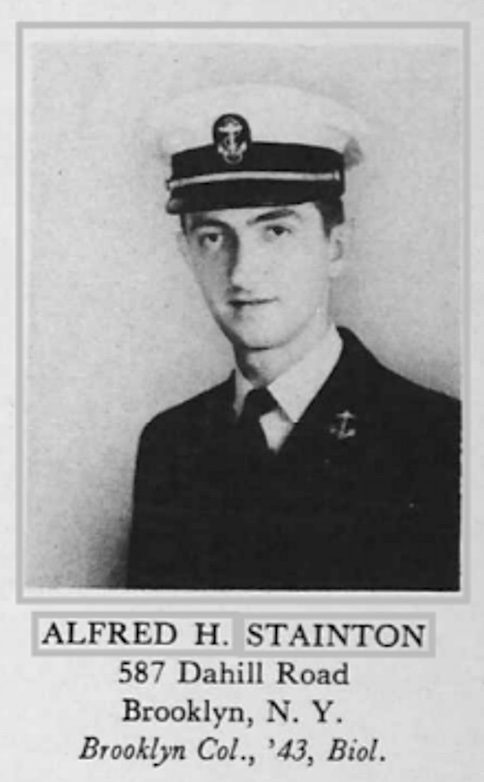
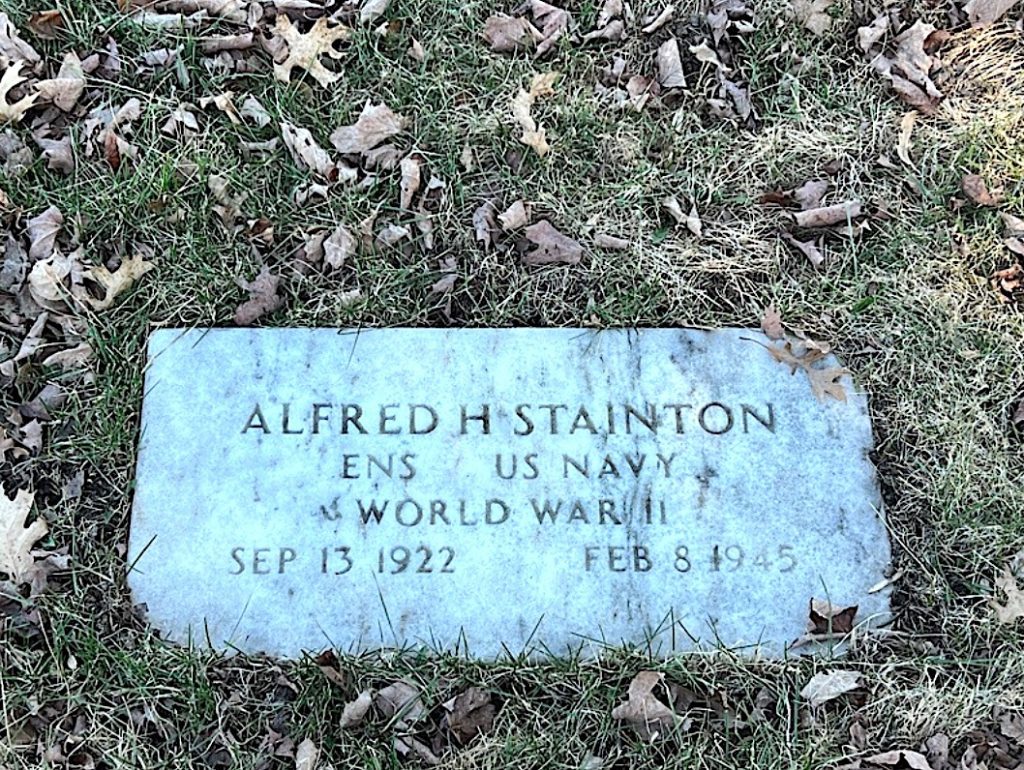
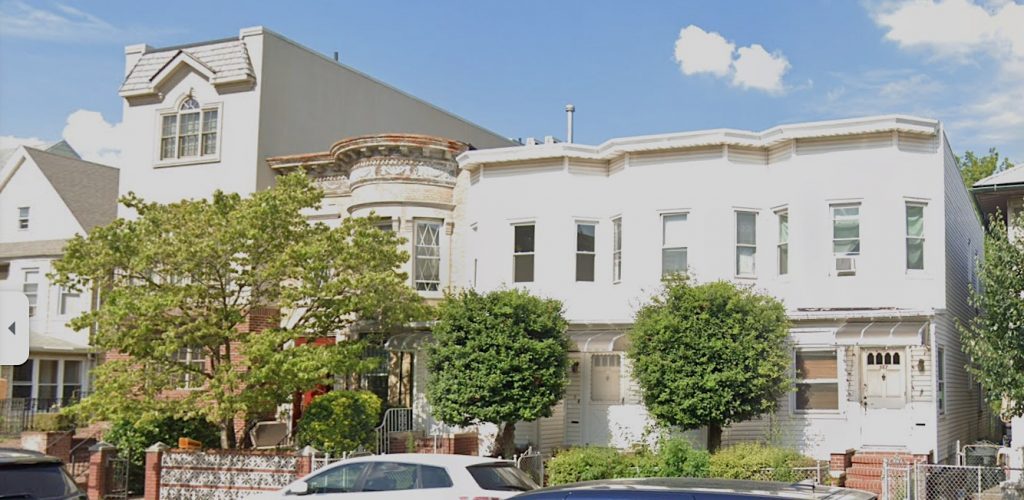
STAINTON, ROBERT CHARLES (1923 -1985). Seaman first class, United States Navy. Robert was born in Brooklyn to father Harold G. Stainton and mother Lavinia Stainton (née Payne). According to the 1930 census, Robert lived with his family in Brooklyn at 250 East 4th Street. He was 6 years old, and had an older brother, Alfred (see), who was 7 years old. By 1940, the family had moved to Dahill Road and lived with Robert’s grandparents. Robert was 16 years old and had completed high school.
On June 30, 1932, Robert registered for the World War II draft. He lived at the same address on Dahill Road, was 18 years old and listed his father, as the “Name And Address Of Person Who Will Always Know Your Address.” His employer was “Clark and Gibby” (Clark Gibby, Inc.), dealers in office equipment, on 358 Broadway in Manhattan. He was 6′ 1″ tall, 170 pounds, with brown eyes, black hair, and a light complexion. Robert enlisted into the United States Navy on November 16, 1942.
According to the “Muster Rolls of U.S. Navy Ships, Stations, and Other Naval Activities, 01/01/1939-01/01/1949” Stainton was aboard the USS Sable as a seaman first class on August 31, 1943. The ship was originally a luxury steamer called the Greater Buffalo, and “Majestic of the Great Lakes,” then became a floating hotel during the Great Depression. During the war, the ship was used as a training vessel with a steel flight deck installed for testing ground and flight landings. Robert was also on the muster roll of the USS Core as of September 30, 1943 serving in North Africa. That ship was to train and provide operations for aircrafts and pilots, carrying cargo, and providing cover for convoy movements and antisubmarine warfare off of the East Coast of the United States, in the North and Central Atlantic and eventually winning the Battle of the Atlantic campaign. The ship had sailed from San Diego, California, to Norfolk, Virginia, then to Liverpool and Glasgow in the United Kingdom, and on to Bermuda. Back in the Unites States, the ship carried cargo to Pearl Harbor, Hawaii, and Samar Island in the Philippines, then brought servicemen back from Japan. Stainton was discharged on November 16, 1945. By that time, his family had relocated to Keansburg, New Jersey.
On October 6, 1947, Robert married Kaiya T. Vaisto (Visto) in Manhattan. She was from Finland. They lived in Keansburg, and had two children, Robert H. Stainton, and Betty L. (Stainton) Waltz. Robert worked as a business owner in office furniture sales and refinishing and then, for 25 years, as a salesman for Robert Williams, Inc., an advertising and production service in Plainfield, New Jersey. He died in Holmdel, New Jersey. He was survived by his wife, children, three grandchildren and his mother, Lavinia. Section 166, lot 30162.
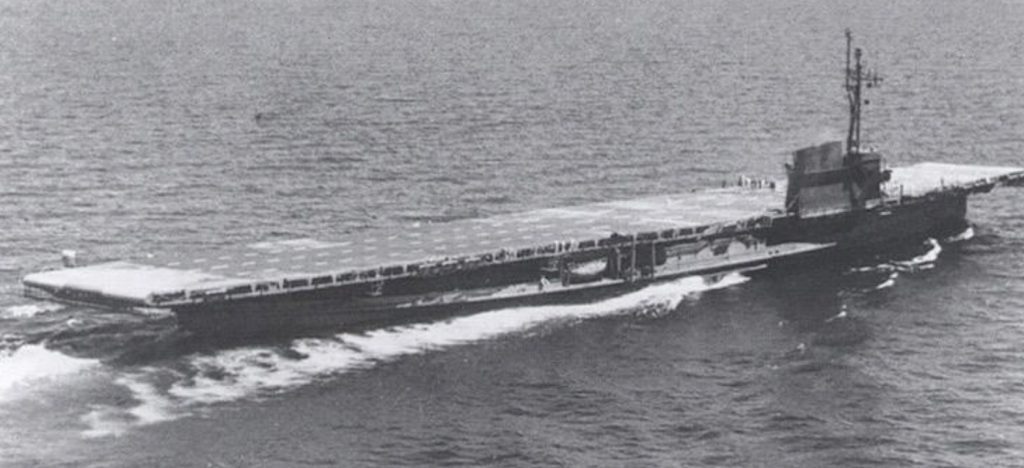
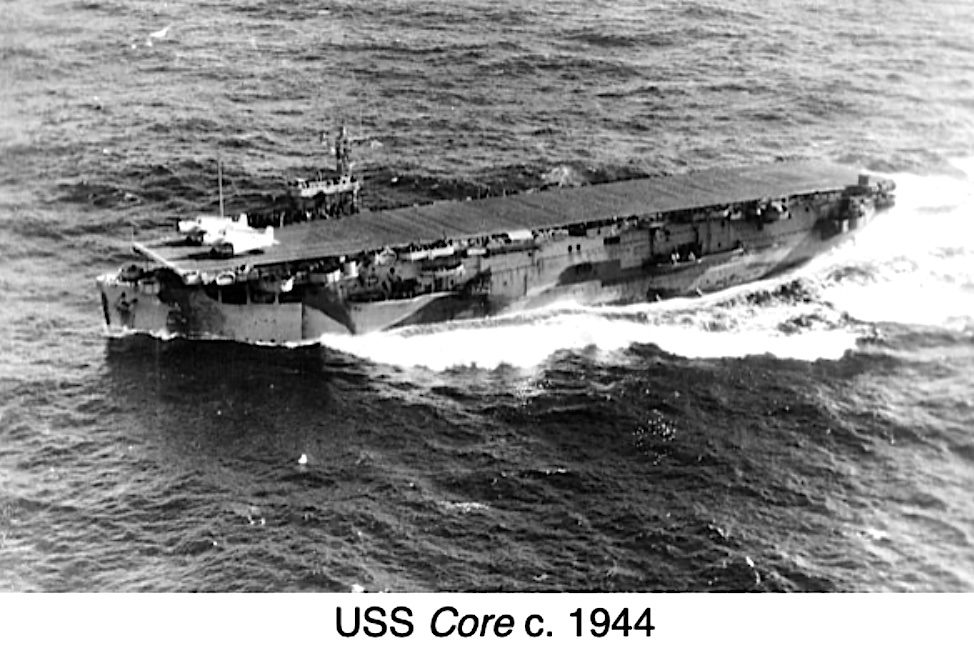
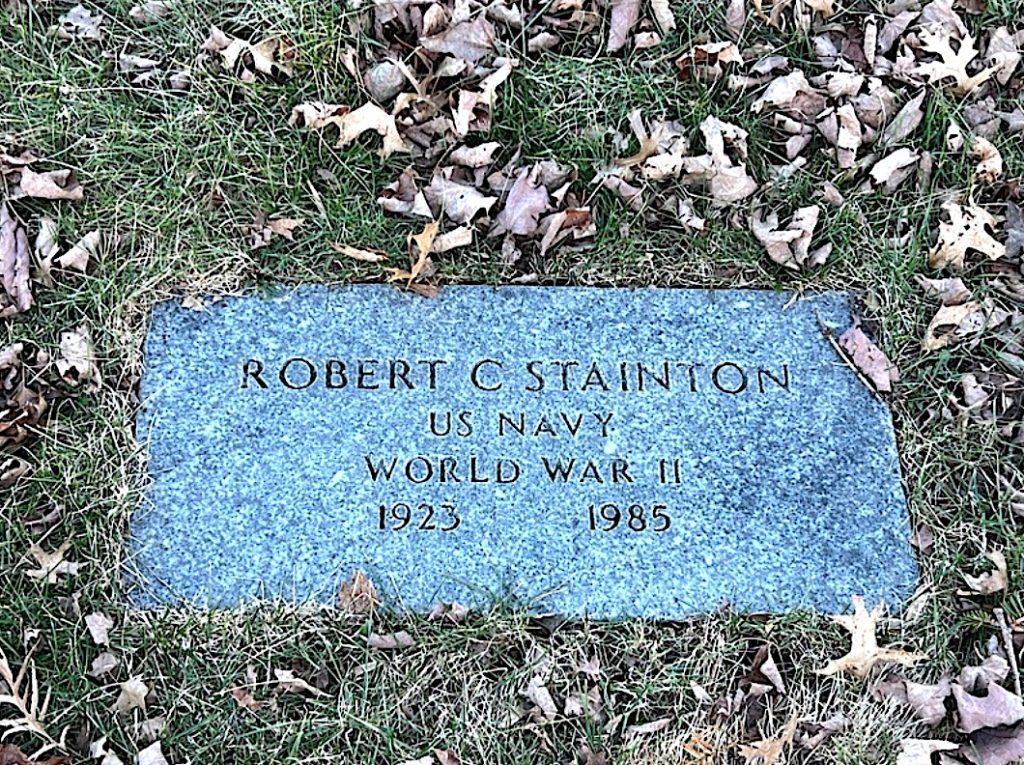
STEPHENS, JR., THOMAS CONCKLIN (1919-1943). Leading aircraftman, Royal Canadian Air Force. Thomas Concklin Stephens Jr. was born in Manhattan. The 1920 United States census shows his family living on Cooper Road in Scarsdale, New York. Thomas Stephens Sr., a native New Yorker, was 41 years old and a real estate broker. His wife, Edith, was 36 years of age and had been born in Ohio. Thomas Stephens Jr. was less than a year old and had an older sister, Edith, who was 2 ½. The family had three servants living in the house, one of whom was born in Norway.
By time the New York State census of 1925 was recorded, Thomas was six years old and had three siblings: Edith 7, Walter 5, and Marvin 3. The family had a cook and gardener living with them. The 1930 census showed the family continuing to live on Cooper Road in Scarsdale. Thomas’s father was working as a director at an engineering company. They had four others living with them: a nurse, a governess, and two other servants.
Thomas’s draft registration card, signed on October 16, 1940, when he was 21, shows that he was not employed. He listed his mother, Mrs. Thomas Hanford Stephens, living at 9 Cooper Road in Scarsdale, as his contact. He was 5′ 7½” tall, weighed 145 pounds, and was white with a dark complexion, gray eyes, and brown hair. Thomas graduated from Bronxville High School in June 1941.
By 1943, Thomas was a leading aircraftman in the Royal Canadian Air Force, stationed in Trenton, Ontario, Canada. The Trenton Center was the largest training center of the British Commonwealth Air Training Plan.
Tragically, Thomas Stephens died on January 12, 1943, falling from his 11th floor hotel room after checking in to the Ford Hotel in Buffalo, New York, according to a newspaper article. His death was ruled a suicide. An Official Royal Canadian Air Force Casualty Notification reported that he fell from the 11th floor of the Hotel Statler in Buffalo, New York. He is remembered in the Second World War Book of Remembrance, a Canadian website commemorating World War II aircraftmen.
Sadly, Thomas’s mother died eight days afterwards, on January 21, 1943, after a long illness, per an article in the Daily Argus of January 21, 1943. The article listed her husband’s occupation as retired mechanical engineer. Their daughter, Edith, had married Lieutenant Charles MacKenzie Chayes, Dental Corps, United States Army, in 1942, and was living in Bronxville, New York. The senior Thomas Stephens died in 1945, after his second son, First Lieutenant Walter Concklin Stephens, United States Army Air Force, was killed in action in Belgium in 1944. A Scarsdale Inquirer article, from August 10, 1945, reveals that Walter Stephens was posthumously awarded the Distinguished Flying Cross for “fearless determination and brilliant leadership in a dive bombing and strafing attack on an enemy air base” in the European theater of operations. He is interred at the Long Island National Cemetery in Farmingdale, New York.
Thomas Concklin Stephens Jr. is interred with his parents, his sister, and his paternal grandmother’s family, the Concklins. Section 18, lot 14677.
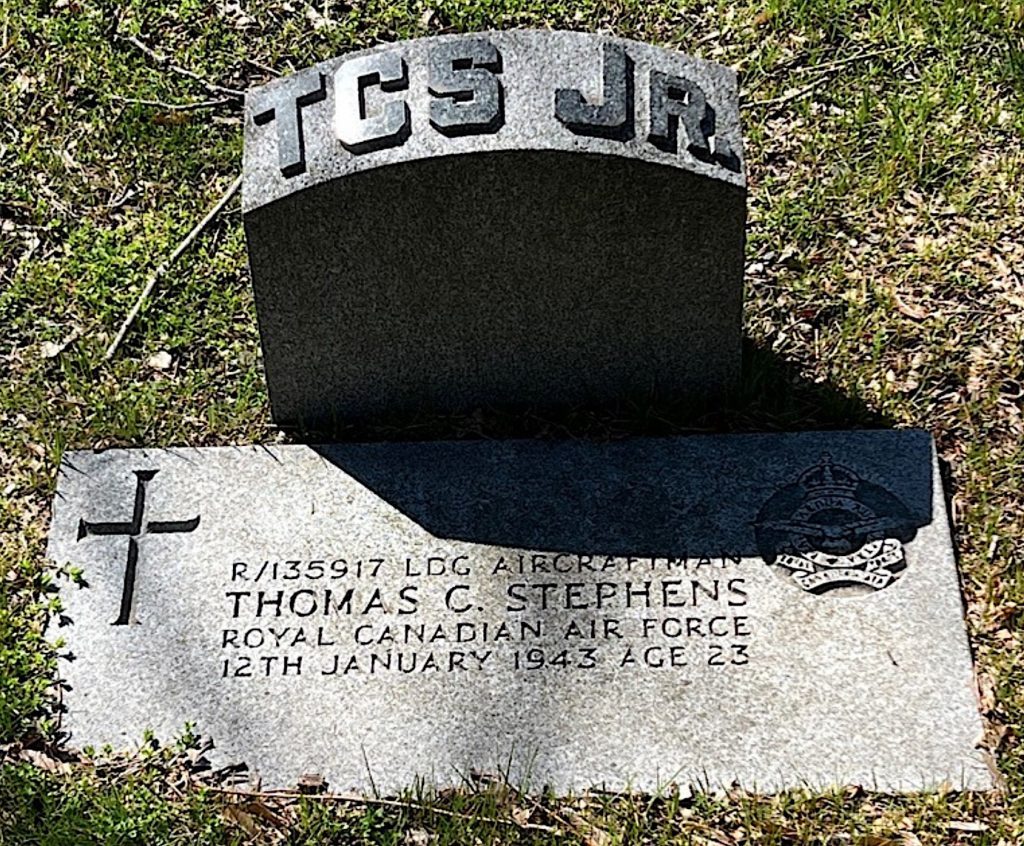
STEVENSON, WILLIAM CHARLES (1917-2005). Staff sergeant, United States Army. Born in Freeport, Long Island, on August 18, 1917, to Walter Stevenson and Ina Zella Raynor, young William was living with his parents and older siblings in 1920, according to the federal census of that year. The family was headed by Walter Stevenson, age 42 and born in New York, who worked as a bookkeeper for a silk manufacturer. His wife, Ina, was 30. They had a 19-year-old son Walter T. Stevenson, who worked as a clerk, and a 17-year-old daughter, Mildred, who was in school. William was only two years old at that time.
Per the 1930 census, the family was still living in Freeport, with Walter continuing to work for the silk manufacturing company. Sister Mildred, at 26 years of age, worked as a stenographer, and there was a younger brother Edward, who was 3 years old.
William attended Freeport High School and his 1935 yearbook shows he was active in sports, including track and football, as well as the school’s General Organization (G.O.) and ushering.
By 1940, the census shows that Walter, at age 59, had no occupation listed. William was 22 and worked as a clerk at a tobacco company. The only other sibling living at home was Edward, 13 years old.
Stevenson’s World War II draft registration card, signed when he was 23, shows him living at 48 Graffing Place in Freeport and working for the American Tobacco Company, at 111 Fifth Avenue, in New York City. His mother, Ina, is listed as his contact. He was 5′ 8″tall and weighed 145 pounds, with blue eyes, brown hair, and a light complexion. Stevenson’s enlistment record, dated July 12, 1941, indicates that he had one year of college. Enlisting in the Army as a private, he rose to the rank of staff sergeant and served as an army paratrooper in France during World War II. The news article below notes that he was attached to headquarters of the United States Army’s armored force at Fort Knox before his deployment to Europe. Later, he was an Army major in Korea during the Korean conflict.
William married Luzena J. Firth, born on September 6, 1917, in 1942 at Fort Knox, Kentucky. The 1950 federal census shows William as head of household, working as an accountant at a tobacco manufacturer and living with his wife and 5-year-old son, John W. Stevenson.
According to his obituary in the Massapequa Post, Stevenson continued to work as a financial executive at American Tobacco Company, eventually renamed Fortune Brands, for a total of 49 years. He was a resident of Massapequa, Long Island, for 50 years, financial secretary of St. David’s Lutheran Church in Massapequa for 15 years, as well as a loyal parishioner for over 50 years. In his spare time, he played golf and dabbled in woodworking. Stevenson died at the age of 87 on April 29, 2005, in his home in Manhattan. He was predeceased by his wife, Luzena, to whom he had been married for 44 years; she died in 1988 and is also interred in Green-Wood, as are William’s parents (Walter E. died in 1964 and Ina in 1947) and his brothers (Walter T. died in 1990 and Edward C. in 2013.) William’s son, John, was living in Manhattan when his father passed away. Section 52, lot 4949, grave RLC.


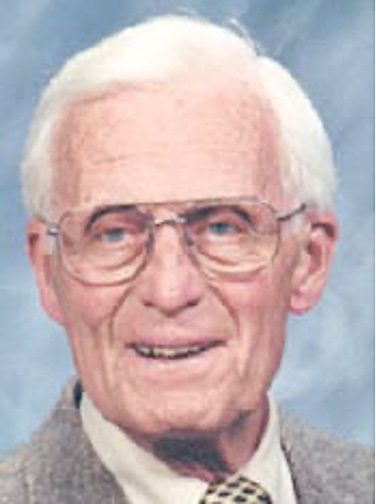
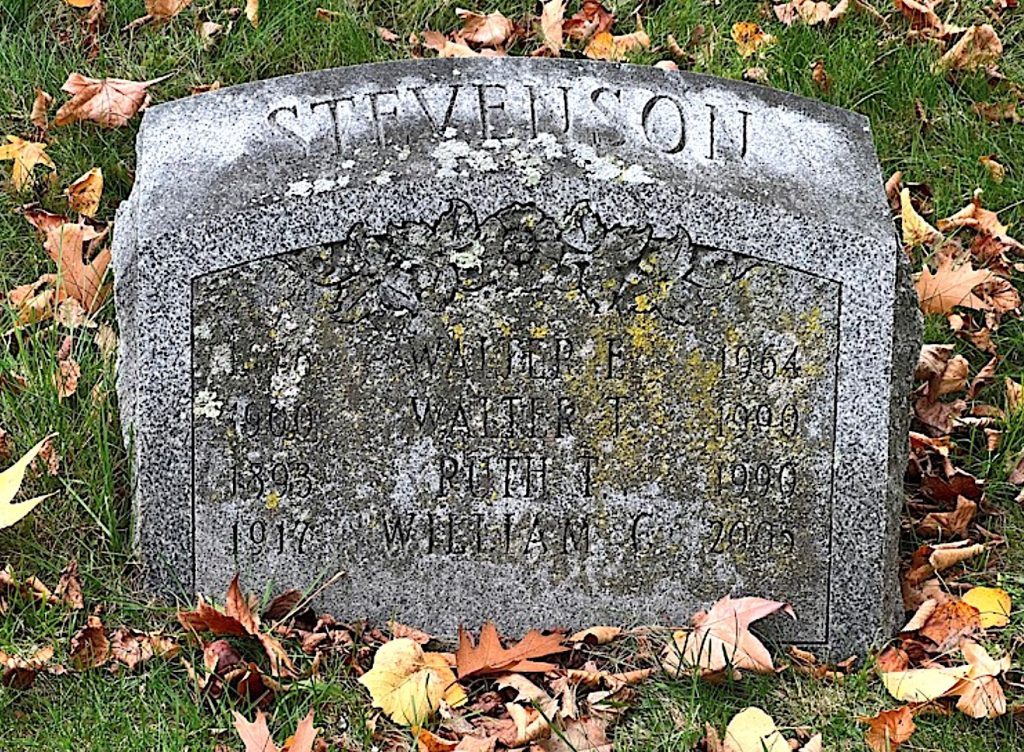
STICH, MALCOLM McNEILL (or MacNEILL) (1921-1944). Second lieutenant, 862nd Bomb Squad, 493rd Bomb Group, United States Army Air Force. According to his World War II draft registration card, Stich was born in Brooklyn. The 1925 New York Stae census records that he lived with his parents, Malcolm and Florence, on Jamaica Avenue in Brooklyn. Both parents were born in the United States. His father was a manager of a children’s manufacturing company. As per the 1930 federal census, the family lived on Lafayette Street in Williston Park, Long Island, and the eight-year-old Malcolm attended school. The census also records that Stich had a three-and-a-half-year-old younger brother, Clifford. Stich attended Roslyn High School on Long Island. His picture appears in its 1939 yearbook with the following description: “That’s a permanent wave, folks, a permanent smile, and a permanent cheery personality that is a real help to us. Yes, sir, Mac is an amiable fellow if there ever was one.” As listed in the yearbook, he participated in dramatic club, tennis, and ping pong.
Stich’s World War II draft registration card notes that he was twenty years old and lived at 496 3rd Street. His mother was named next of kin. He was employed by Baldwin and Cornelius Company, an engineering and surveying firm, located at 117 W. Sunrise Highway, Freeport, Long Island. The registrar’s report describes him as 5′ 10″ tall and 150 pounds with blue eyes, blond hair, and a ruddy complexion. As per his World War II enlistment record, he was single, had completed four years of high school, and entered the Air Corps as an aviation cadet. His enlistment date was January 7, 1943 and his place of enlistment was the San Antonio Aviation Cadet Center in Texas. The Brooklyn Daily Eagle, dated May 7, 1943, reports that “Aviation Cadet Malcolm Stich of 496 3rd Street has arrived at Corsicana, Texas.”
Unfortunately, Malcolm was killed in action on June 29, 1944. Following is an archive on the American Air Museum in Britain website detailing the 42-94812 operation and the list of crew members, including Malcolm, on that fateful mission:
The B-24H, 42-94812, named, LITTLE WARRIOR, was assigned to the 850th Bomb Squadron, the 490th Bomb Group, and the 8th Air Force USAAF. It was transferred to the 862nd Bomb Squadron, the 493rd Bomb Group, in the 8th Air Force USAAF in Britain. It failed to Return (FTR) on a mission to bomb an aircraft manufacturing plant near Fallersleben in Wolfsberg, Germany. A flak hit holed the airplane’s fuel tanks and fuel lines causing an explosion of flames from just behind the cockpit to rear of bomb bay. All of the crew were KIA, killed in action. June 29, 1944.
Missing Air Crew Report:
“Aircraft No. 812 flying in the Number 3 position in A group received a direct Flak hit near #3 Engine at 09:39 hours in the target area just after bombs away. It was enveloped in flames from the nose to the rear of the bomb bays. It fell out of formation and disintegrated at about 10,000 feet.”
Eight of the crew were found dead on the ground by German authorities that morning, a ninth body was found later. The tenth crew member’s body was discovered in a field, badly burned on 11 July 1944, and buried with the rest of the crew of LITTLE WARRIOR.”
The co-pilot, Second Lieutenant Sidney A. Benson, of Marblehead, Massachusetts, safely ejected from the burning plane and landed unharmed. He surrendered to a flak gun crew and was handed over to Hitler Youth Leader Helmut Lippman. Lippman shot Benson three times in the back, then handed him over to air raid wardens, who beat Benson to death. Lippman was tried after the war, convicted of murder, and sentenced to be hung. However, his sentence was commuted to life in prison.
As per Stich’s obituary in the October 22nd, 1944 issue of the Brooklyn Daily Eagle:
Lt. Malcolm McNeill Stich, bombardier on a Liberator, was killed in action over Fallersleben, Germany, June 29, according to information from the War Department received by his mother, Mrs. Florence Stich of 496 3rd Street. He was 22.
Born in Brooklyn, Lieutenant McNeill (sic) spent most of his boyhood in Williston Park. He was a graduate of Roslyn High School, where he earned his school letter as an outstanding tennis player. Before entering the army as an air cadet in January, 1943, he worked as a surveyor in Freeport. He received his wings at McCook Field, Nebraska, last April and went overseas in May.
Stich’s obituary also reports that he was survived by his parents and brother. He was also survived by his widow, Jane G. Proctor, whom, according to the Nebraska, United States Index to Marriages, he married in 1944. Stich had apparently met her when he trained in Nebraska.
Malcolm’s rank of second lieutenant is authenticated by the National Jewish Welfare Board, Bureau of War Record, Master Card System. He was interred at Green-Wood on September 20, 1950 after his body was returned to the United States from Europe. Among the honors he received are: his name cited on the Brooklyn War Memorial which lists more than 7,000 fallen Americans, as reported by the Brooklyn Daily Eagle (December 28, 1950); his name on a Group Honor Roll in St. Mary the Virgin Church, Clopton, England, as per Mark Essler; and, awarded the Purple Heart posthumously. On his Find a Grave memorial, dated February 20, 2022, Mark Esller posted, “Thank you for your heroism! You are not forgotten.” Section 132, lot 33044.

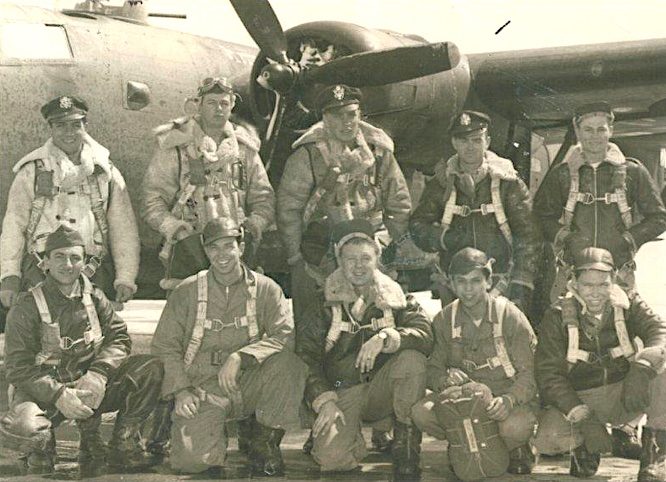
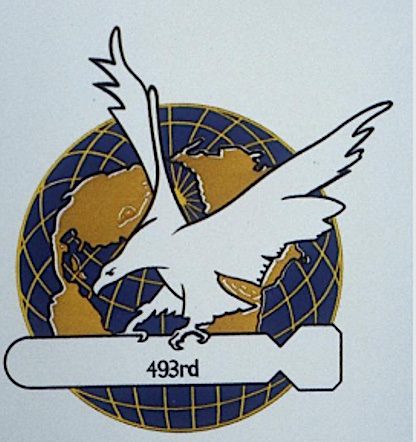
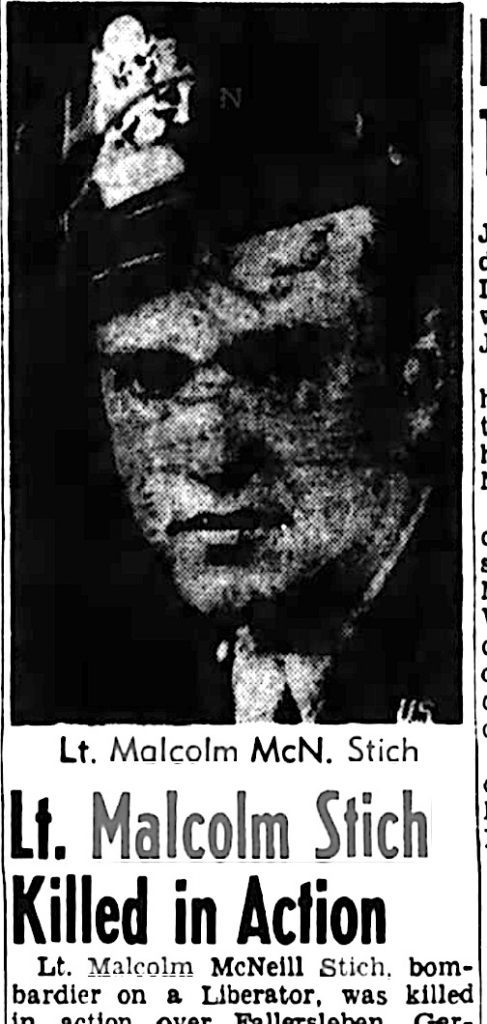
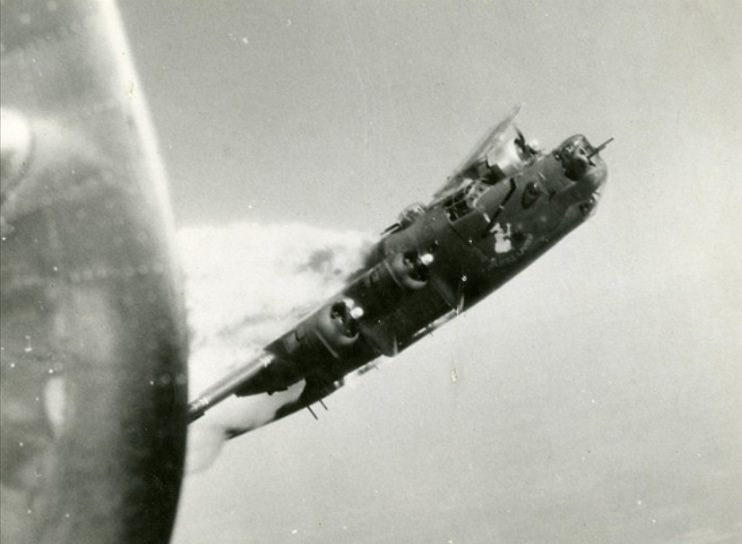
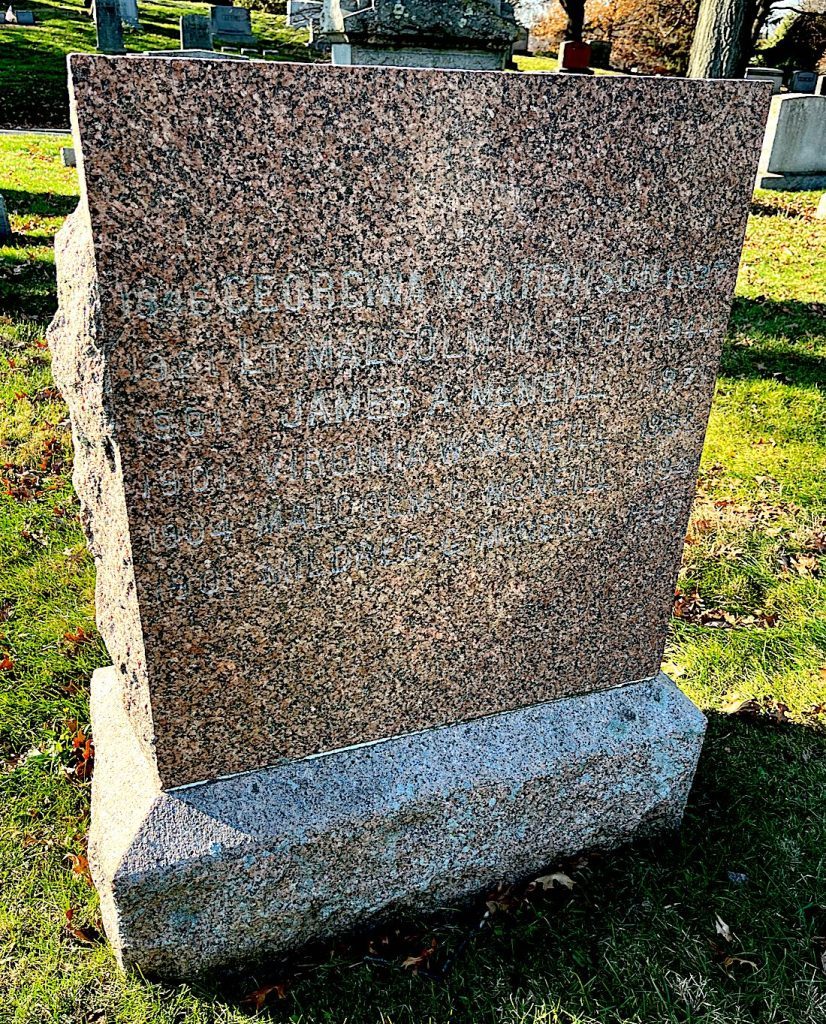
STREETER, DANIEL DENISON (1885-1982). Colonel, United States Army. Daniel Streeter was born in Brooklyn to Milford and Maria Wyckoff Streeter. According to the 1900 federal census, the Streeter family, which included a younger sister and brother, as well as two servants, lived on Hooper Street. Milford was a brewer. Daniel grew up at the Hooper Street residence, attending Polytechnic Preparatory School, Polytechnic Institute, and obtaining his Bachelor of Science degree in zoology from Columbia University in 1909. He did postgraduate work at George Washington University 1910-1911. In the 1910 federal census, when he was 25 years old, his occupation was listed as naturalist.
Daniel began his adventures as a naturalist in his teenage years, joining an American Museum of Natural History fossil hunting expedition in Wyoming in the summer of 1903, a Bureau of Ethnology expedition in New Mexico in 1907, and two with the United States Biological Survey in the Northwest Territories and Alaska, in 1909-10 and in 1911. In 1912, he led a Smithsonian expedition to Algeria, Sumatra, and Borneo.
In June 1914, according to The New York Times, Daniel married Gladys Rudolph. By the following year, according to census data, Daniel was working as a brewer with Streeter & Denison Brewery, the family concern, and the couple lived on Bergen Street. A daughter, Catherine, was born to them in 1917.
Streeter enlisted in the New York National Guard in January 1916 and served on the Mexican border with Troop C of the First New York Cavalry under General Pershing. He was then mustered in on April 3, 1917 as a corporal in Company G, and departed the National Guard in June to accept a commission in the regular army. He underwent officer training in Plattsburgh, New York. By March 1918, his name was listed on an outgoing Army Transport passenger list, a lieutenant in the United States Cavalry, Troop “D.” In Langres, France, he completed an officer training program at the Army General Staff College located there.
In 1919, Daniel applied for an emergency diplomatic passport. He was then in Paris, attached to the United States Government Courier Service, about to travel through France, Belgium, Switzerland, Holland, Italy, Denmark, Norway, Sweden, Greece, and Serbia on behalf of the American Commission to Negotiate Peace. His identifying documents included statements from Colonel Andrew Baird of the Williamsburg Savings Bank and Dr. Nicholas Murray Butler of Columbia University. The application described 34-year-old Daniel’s appearance in detail: 5′ 9″ in height, with a straight nose, high forehead, blue eyes, regular mouth, square chin, light hair, dark complexion, and oval face.
Officer cards of those war years listed Streeter’s ranks and promotions, as well as his service in the 6th Cavalry until November 1919, followed by the 13th Cavalry, until his resignation from the Army in March 1920, with the rank of first lieutenant. In four years, in addition to the time he spent in Europe, he had been stationed in seven domestic military bases in upstate New York, Vermont, Texas, and New Jersey.
After leaving the Army, Daniel attended Columbia University School of Architecture 1921-1924. By the time of the 1930 federal census, Daniel and his family owned a home on Fenimore Street in Brooklyn. He was 45 years old and working as an independent architect. In addition to their 13-year-old daughter, he and Gladys had two sons; Daniel Jr. and Samuel. By the 1940 census, another daughter, Sarah, had joined them.
During World War II, Streeter rejoined the service and became a lieutenant colonel in the office of the Inspector General in North Africa and Italy. He then served with Patton’s 7th Army and was discharged as a full colonel in 1945, at the age of 60.
After the war, Streeter returned to his architecture practice and his expeditionary adventures. From 1949 to 1963, he led expeditions to Central and South America; Lake Athabasca and Great Slave Lake in Saskatchewan and Northwest Territories, Canada; and Antarctica, among others. He was a member of the Explorers Club for almost 70 years.
Throughout the postwar years, Streeter maintained a deep involvement in corporate, civic, and cultural organizations and associations as an officer, director, and member. At the time of his death, at age 97, he was living in Seattle, Washington. He is interred next to his wife, Gladys, who died in 1975. His gravestone inscription is on the back of the gravestone of George Thorpe (see). They both were interred on December 31, 1982. Section 141, lot 21363.

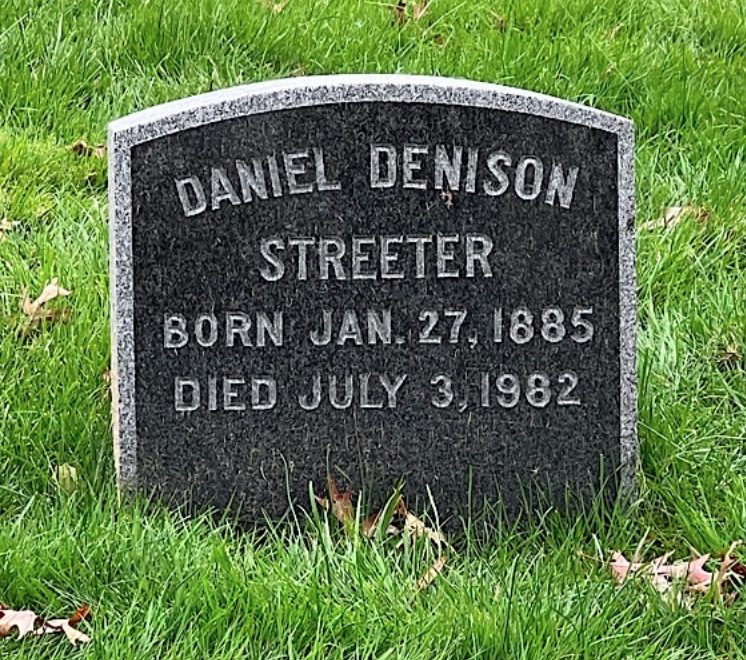
STRIANO, SALVATORE ANTHONY (1921-2008). Private first class, 602nd Tank Destroyer Battalion, Company C, United States Army. Salvatore was born in Brooklyn to Guiseppe, a metal worker, and Gaetana Striano. Both of his parents were born in Italy. The 1930 federal census recorded the Striano family—Salvatore, his parents, and his seven siblings—living at 128 11th Street in Brooklyn. Salvatore graduated from P.S. 124 and attended Manual Training High School (now John Jay Educational Campus). By the time of the 1940 federal census, the family had grown by one more son, and two of Salvatore’s older brothers had joined his father working as solderers at a tin can factory.
On January 17, 1942, Salvatore and his fiancée, Lillian Rochon, registered for a marriage license. A month later, at age 20, he registered with his draft board. His draft registration card described him as 5′ 7″ in height, weighing 140 pounds, with brown eyes, black hair, and a light complexion. It also noted that his nose had been broken. Striano listed his wife, living at 175 12th Street, as the person who would always know his whereabouts. His employer, Feins Tin Can Company, was, presumably, the same as that of his father and older brothers. He also worked as a welder in Todd Shipyard in Brooklyn, according to his family.
Striano, having attended college for two years, entered the Army in November 1942, according to government enlistment records. His family reported that his wife, Lillian, joined him at Camp McCoy in Sparta, Wisconsin, and Camp Forrest in Tullahoma, Tennessee, while he was in basic training. Salvatore also trained at Camp Kilmer, New Jersey.
As a member of the 602nd Tank Destroyer Battalion, Company C, he deployed to England for training and reached continental Europe in June 1944, as the driver of an M-10 tank destroyer. He then was assigned to drive and maintain the company commander’s jeep. His company fought its way through France, engaging in the pivotal battle at St. Lo. While crossing the Moselle River, Salvatore was wounded in the leg and evacuated to a field hospital in Verdun, then to Paris. He rejoined his unit in the Metz/Nancy area and participated in the relief of Bastogne. Company C advanced through Luxembourg, Belgium, and Germany, to the Danube River. Striano was then part of occupation forces in the Nuremburg area. According to government records, he was discharged from the Army on December 27, 1945. He received the Good Conduct, World War II Victory, and American Campaign Medals.
After leaving the Army, Salvatore and Lillian had a son, Thomas, and Salvatore started an auto repair and Texaco service station on 3rd Avenue and 11th Street in Brooklyn with his brothers. He worked there until he retired and lived at 235 11th Street until his death. Section 129, lot 39025.

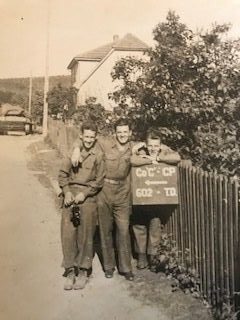
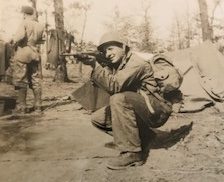
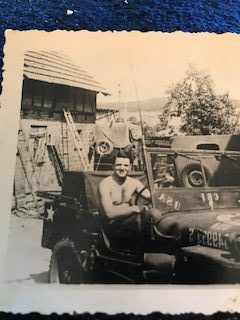
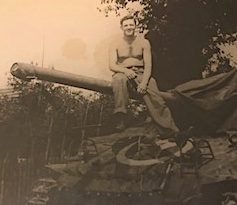
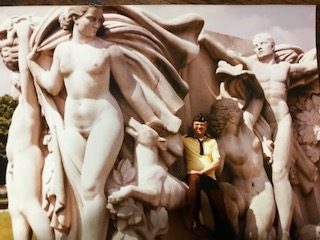
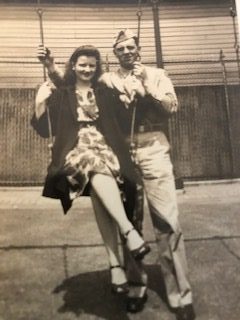
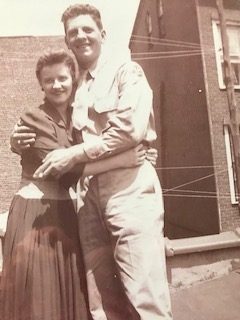
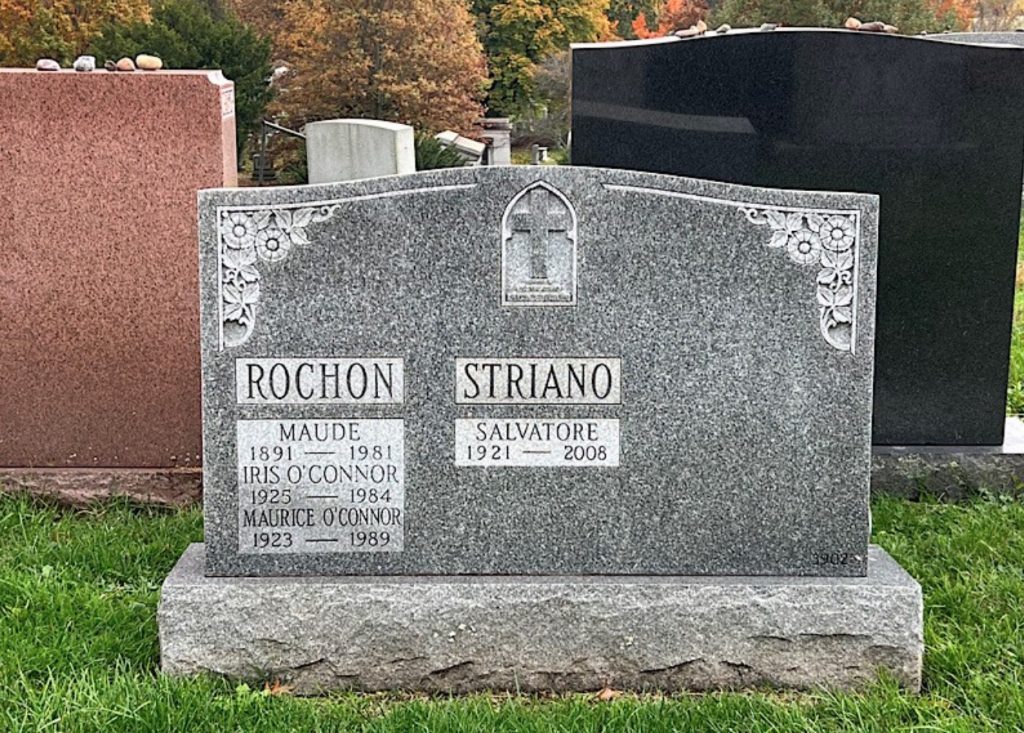
STUCHINER, MILTON M. (1910-2009). Private first class, United States Army. According to his World War II draft registration card, Stuchiner was born on December 23, 1910 in Warsaw, Poland. However, his daughter, Nancy Anderson, shares that he was born on December 1, 1910. She also relates that Milton’s father , Gedalie, and mother, Fanny, were divorced in 1915. His father married Katie S. Nashelsky in 1917. Milton lived with his father, stepmother, and his two stepsiblings, Abraham and Dorothy. The 1920 federal census records that the Stuchiner family lived at 137 Barrett Street in Brooklyn. That census reports that his father and stepmother spoke Yiddish and both adults, as well as Milton, were born in Russia. His father, Gedalie, played a prominent role in the foundation of Israel. According to The Encyclopedia of the Founders and Builders of Israel, published by David Tidhar, Gedalie:
. . . participated in the organization work at the foundation of ‘Ahuza Alef New York’, in order to prepare members of a plantation in the Land of Israel where they would earn their livelihood when they settled in Israel. In 1921, he participated in the purchase of 8000 dunams for the foundation of the colony of Raanana and then planting orchards for the members.
Gedalie would eventually become an Israeli citizen and live in Israel. As per the 1925 New York State census, the family lived on East 138th Street in the Bronx. This census records that Milton and his father and stepmother were born in Poland while his stepsiblings were born in the United States. His father, Gedalie, is listed as a real estate agent. The 1930 federal census records that the Stuchiner family relocated to Brooklyn and owned a house on Eastern Parkway. Milton was twenty years old and worked as an advertising salesman. This census incorrectly records that Milton was born in New York but indicates his father and stepmother were born in Poland.
Stuchiner received his bachelor of science degree from Washington Square College, an undergraduate school established in 1914 by New York University. According to the Times Union, published on July 24, 1933, Milton was among twelve Brooklyn and Long Island students given awards by New York University Law School. On August 8, 1935, the same newspaper announced that out of 1,417 law students who took the bar exam, 720 passed. Milton is listed as one of the 408 students from the Brooklyn/Long Island area to receive the New York State Board of Examiners’ certificate.
According to the New York Marriage License Indexes, Milton and his future wife, Marjorie Simon, applied for a license on February 21, 1939. According to their daughter, Nancy, the couple married on February 22, 1940. As per the 1940 federal census, Milton and Marjorie lived at 1927 64th Street in Brooklyn. His place of birth is incorrectly recorded as New York. Milton is documented as an attorney and his wife as an office clerk.
Milton Stuchiner’s World War II draft registration card notes that he was twenty-nine years old, a lawyer and self-employed with an office at 16 Court Street. His wife was named next of kin. The registrar’s report, dated October 16, 1940, describes him as 5′ 11″ tall and 180 pounds with gray eyes, brown hair, and light complexion. As per his New York National Guard service card, his enlistment date was May 15, 1942 and his separation date was May 10, 1943. According to his World War II Army enlistment record, he enlisted in the Army on July 27, 1943 with the rank of private. The record reports that he was married, born in Poland, had completed four years of college, and was a lawyer. As per his daughter, Nancy, he served in an Army anti-aircraft unit in Europe. He was first stationed in England from 1944 to 1945 and then possibly sent to northern France and/or Germany.
After his service, Milton resumed his legal career. In 1950, he and Marjorie lived on Ocean Avenue in Brooklyn and had one daughter. According to his New York Times death notice, he and Marjorie were married seventy years. Section 3071B, Urn Garden.

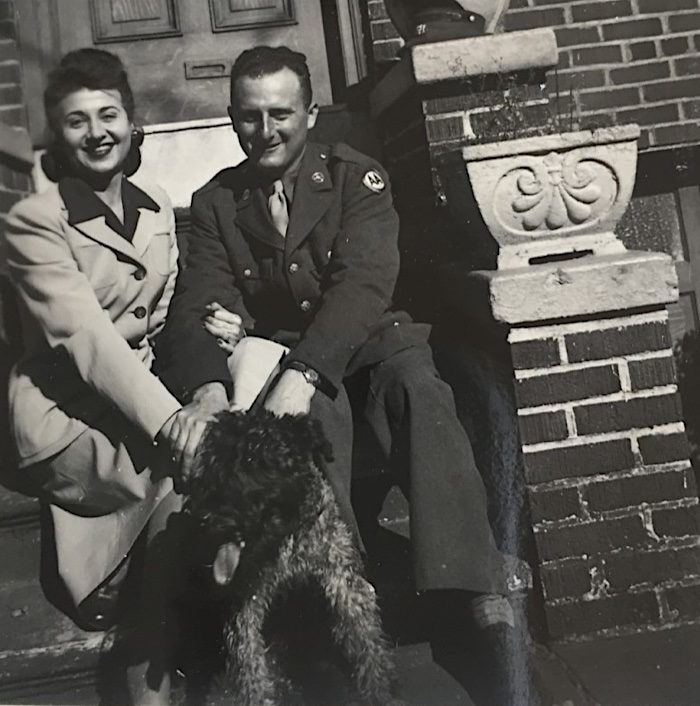
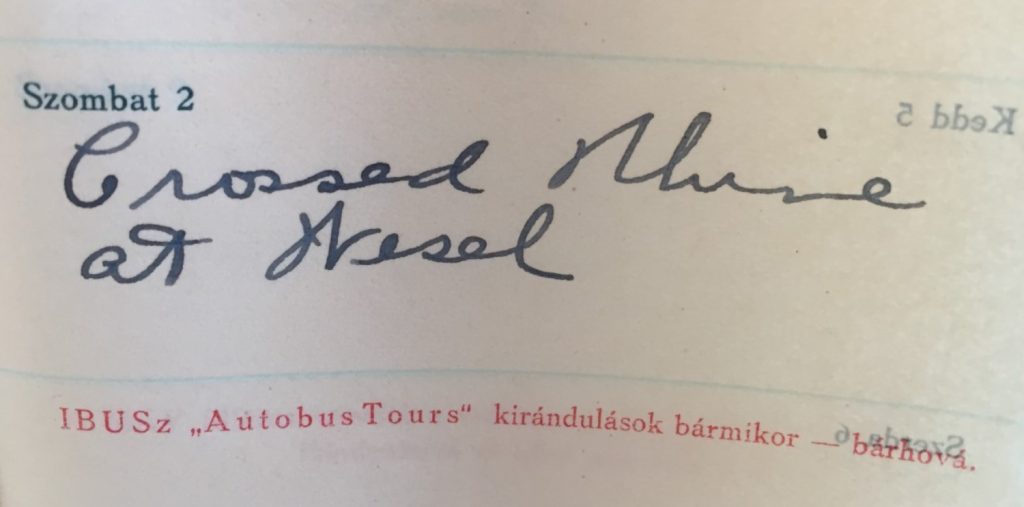
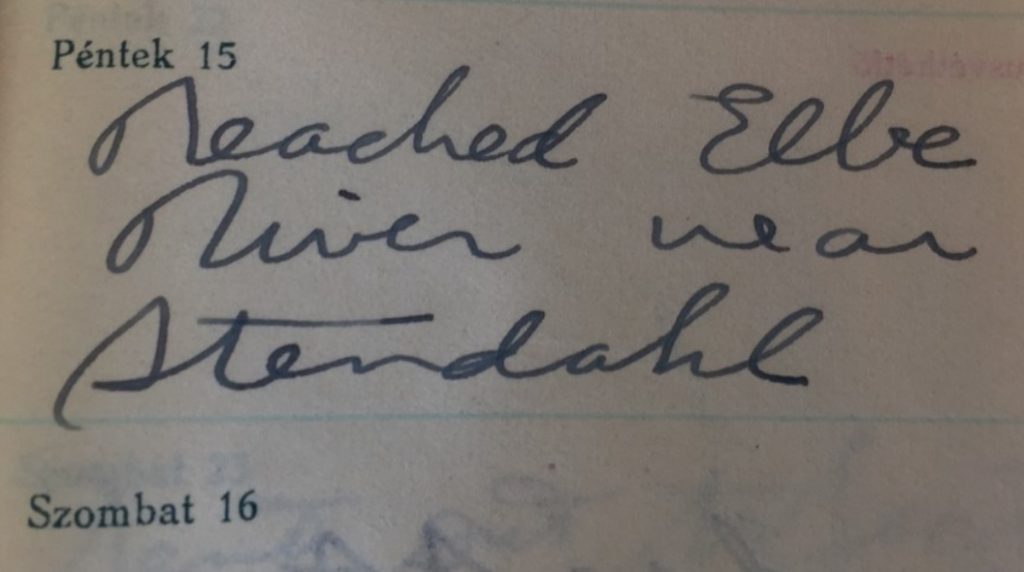
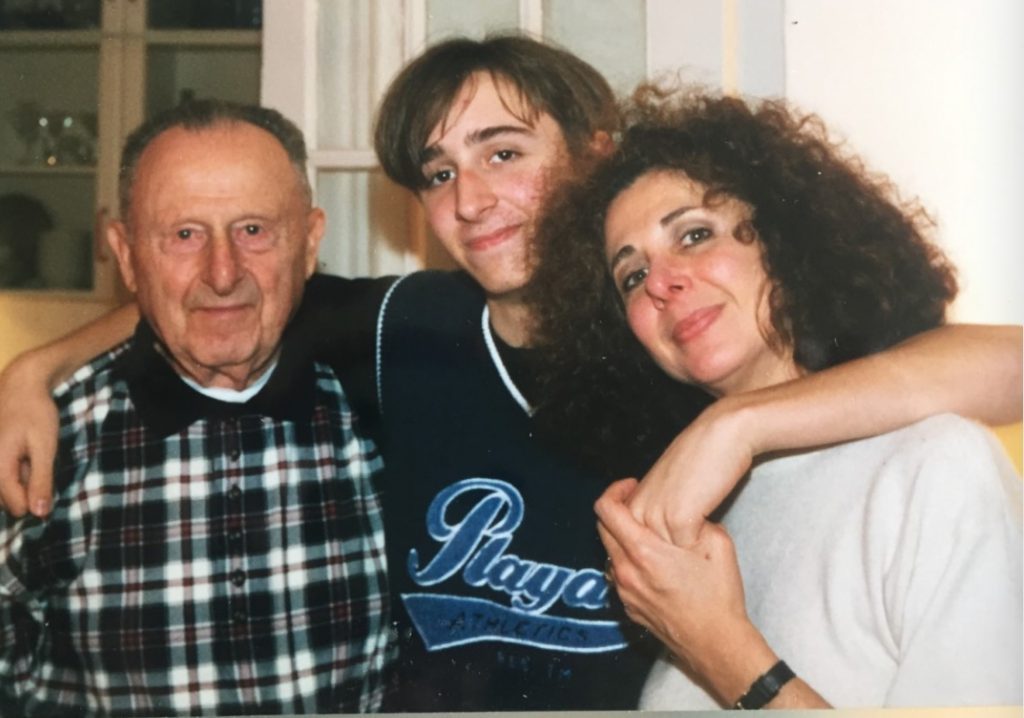
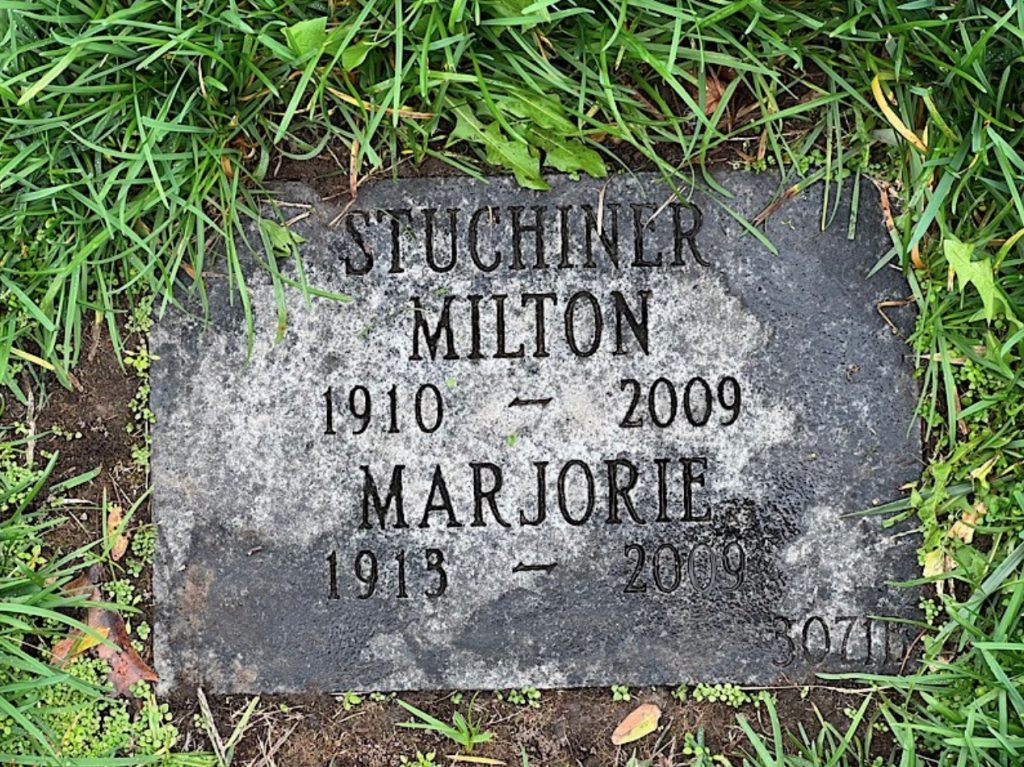
SUZUKI, FRANK MITZUL (1929-1948). Private first class, 41st Air Force Base Unit, United States Army Air Force. Suzuki was born in New York. As per Denmark Church Records, his mother, Ottillie Christensen, was born in Helberskov Als Sogn, Denmark, in 1892; she was confirmed in Alborg, Denmark, in 1907. Prior to her marriage to Suzuki’s father, she and Soren Nielsen applied for a marriage license in Brooklyn on October 22, 1914, as recorded in the New York Marriage License Indexes. The 1925 New York State census documents that Ottillie and her husband lived in Brooklyn with their two children, Walter and Lillian. Although there is no formal documentation, it appears that between 1925 and 1930, Ottillie divorced Nielsen, married Suzuki’s father and gave birth to Frank. Those events seem to be confirmed by the 1930 federal census. That census records that the newborn Frank was living on East 233rd Street in the Bronx with his parents, Frank and Ottillie Suzuki, and his two stepsiblings from Ottillie’s marriage to Nielsen. Frank’s father was born in Japan and worked as a cook in the restaurant industry. As per the 1940 federal census, the Suzuki family was residing on Dean Street in Brooklyn. The census records that Frank’s stepsiblings were not living in the household, but there was a younger sister, Ellie. An article from the Brooklyn Daily Eagle, published on July 17, 1941, reports that the eleven-year-old Frank exhibited small ship models in the American Hobby Show.
According to the New York National Guard service card, Frank was assigned to Company K, 17th Infantry. His date of enlistment was October 14, 1946 and his separation date was January 7, 1947. He then re-enlisted on March 5, 1947, but no separation date is recorded. After his service with the National Guard, Frank enlisted in the United States Air Force. As per the Application for Headstone or Marker, submitted by his mother, his enlistment date is August 21, 1947 and he was assigned to the 41st Air Force Base Unit at Maxwell Field, Alabama.
According to articles published in the Birmingham News and the Decatur Daily News, Frank passed away from injuries sustained in a car accident. The Birmingham News of July 17, 1948, reports, “Pfc. Frank Suzuki, 19, of Maxwell Field, was killed in an auto wreck near Montgomery (Alabama) last night. His home is at 535 Dean Street, Brooklyn, New York. Marell J. Smith, 21, and Mildred Hardwick, 20, both of Montgomery, companions of Suzuki’s, suffered minor injuries in the accident. Highway patrolmen said Smith was driving.” The Decatur Daily News reports more details regarding the accident: “Highway Patrolmen H B. Moody and L. E. Curtis reported that Smith, who was driving, apparently lost control of the car on a curve on Alabama 45 about five miles north of Montgomery near the Elmore County line.” The Decatur erroneously reports Frank’s age as twenty-four.
Although Frank enlisted in the Air Force after World War II already had ended, his gravestone at Green-Wood Cemetery has the following inscription:
Frank Suzuki
New York
PFC
41 AF Base Unit
World War II
July 25 1929
July 15 1948
Section 134, lot 37830, grave 327.

TACOPINO, ARTHUR J. (1926-1997). Private, 376th Infantry Regiment, Company L; 94th Infantry Division, United States Army. Records from the 1930 census report that he resided at 207 18th Street with his parents, Anthony and Anna, and his two older brothers, Cosimo (see) and John. His father immigrated from Italy in 1905 and worked as a plasterer. His mother was born in New York. According to the 1940 census, his family resided at 591 Fourth Avenue and his father was an independent plasterer. According to his son, Tacopino attended Brooklyn public schools through the twelfth grade.
Tacopino’s World War II draft registration card states that he was eighteen years old, resided at 591 Fourth Avenue, and lists his mother as next of kin. He worked at Nessa Corporation as a longshoreman at Pier 2, Erie Basin, Brooklyn. A discharge date, June 3, 1946, is handwritten on the draft card. His registrar’s report indicates that he was 5′ 11″ tall, weighed 176 pounds, had brown eyes and hair, and a ruddy complexion. The date of the report, April 17, 1944, was Tacopino’s 18th birthday. His army enlistment record states that he was single and worked as a shipping and receiving clerk. His enlistment date is recorded as August 9, 1944, and his rank was private.
As per his son, he served in the 94th Infantry Division. According to the Sons of Liberty Museum, the 94th Infantry Division entered combat on September 17, 1944, at Normandy. The division engaged in combat for 209 days and experienced 6,533 casualties. Since Tacopino served from August 9, 1944, to June 3, 1946, he may have engaged in the following campaigns as cited by www.armydivs.com/94th-infantry-divsion: Northern France (July 1944 to September 1944), the Rhineland (September 1944 to March 1945), Ardennes-Alsace (December 1944 to January 1945), and Central Europe (March 1945 to May 1945). Two major accomplishments of the division are highlighted in the Sons of Liberty Museum’s website: on January 1, 1945, assisting the Third Army, the division destroyed the Siegfried Switch Line (a series of strong buffer defenses on the Moselle and east of the Saar River) helping to capture the key city of Trier in Germany; and, on March 16, 1945, the division was a key player in the taking of the industrial city of Ludwigshafen and capturing more than 17,000 prisoners.
As per Tacopino’s son, he was a guard during the Nuremberg Trials. Tacopino stood watch during the trial of Hans Michael Frank (see photograph below). Hans Michael Frank was Hitler’s personal legal advisor and was assigned to Poland, where he deported millions of its citizens to Germany as slave laborers. He was found guilty of war crimes and crimes against humanity and was executed. Tacopino’s son relates that his father also escorted Hermann Goring from his cell to court during Goring’s trial. Goring was convicted of conspiracy, crimes against peace, war crimes, and crimes against humanity at his trial at Nuremberg. Sentenced to be hung, Goring committed suicide with poison.
After the war, as per his son, Tacopino worked as an international longshoreman. According to the New York City marriage license indexes, he and Dorothy Ann Slattery applied for a marriage license on August 21, 1948. The couple married and had four children. In 1990, Tacopino’s address was 79 28th Avenue in Brooklyn. His last known address was 20 Brandis Avenue, Staten Island. Section 135, lot 40273.
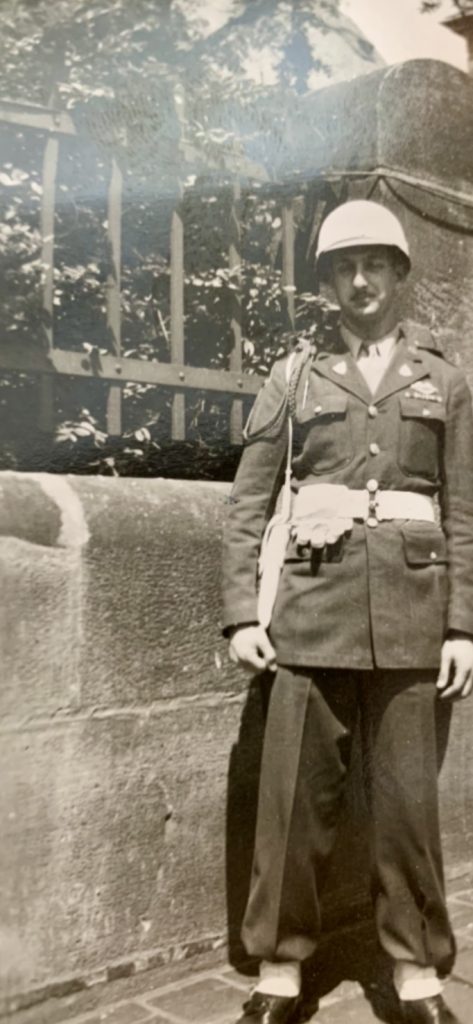
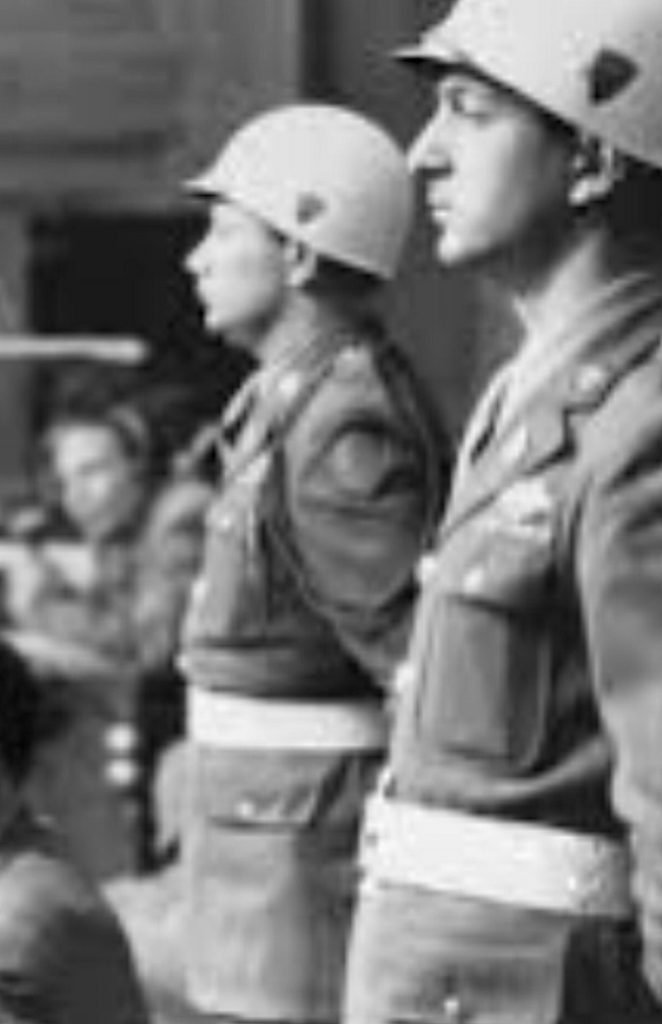
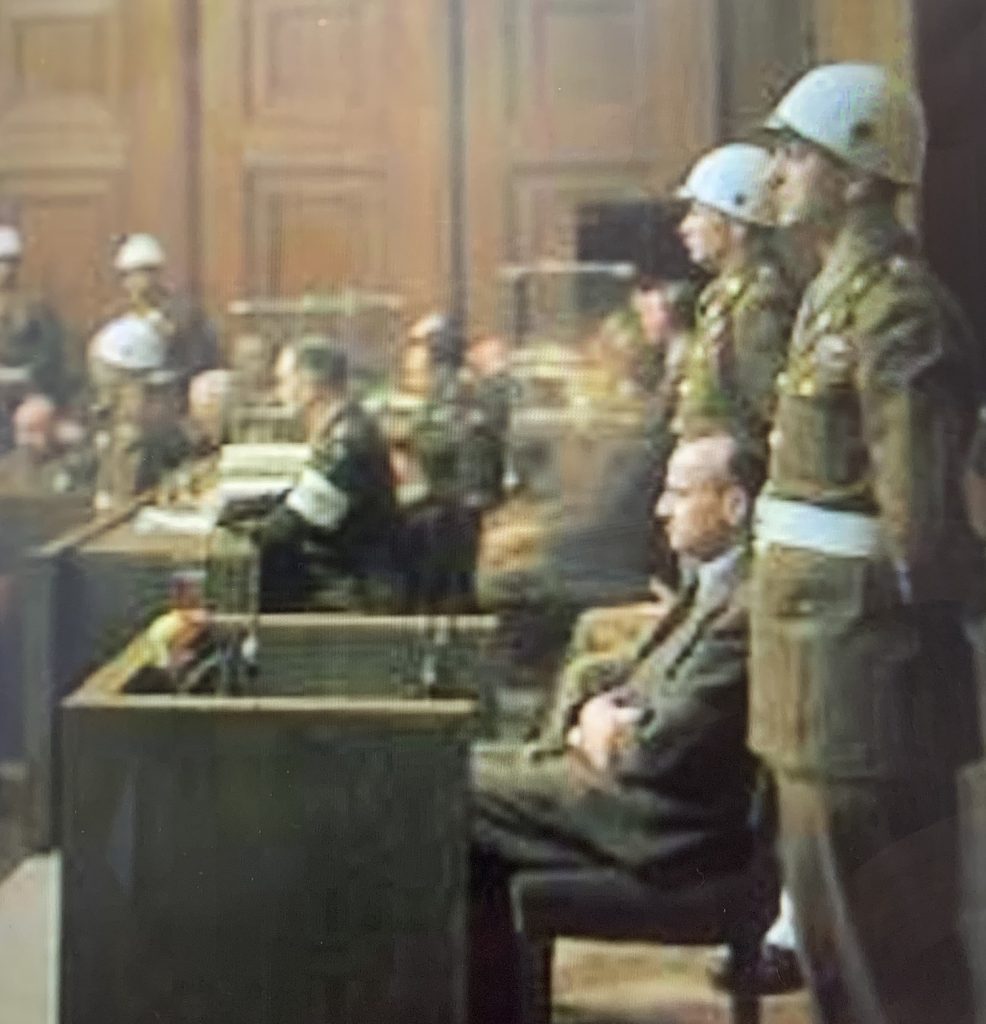
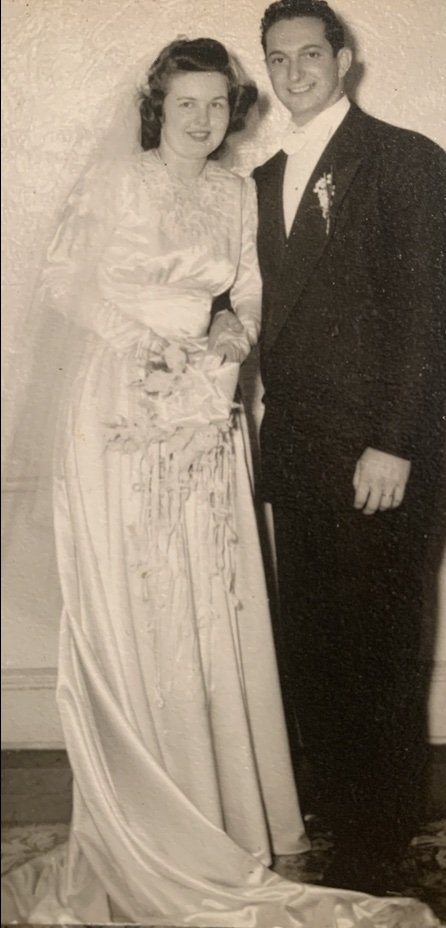
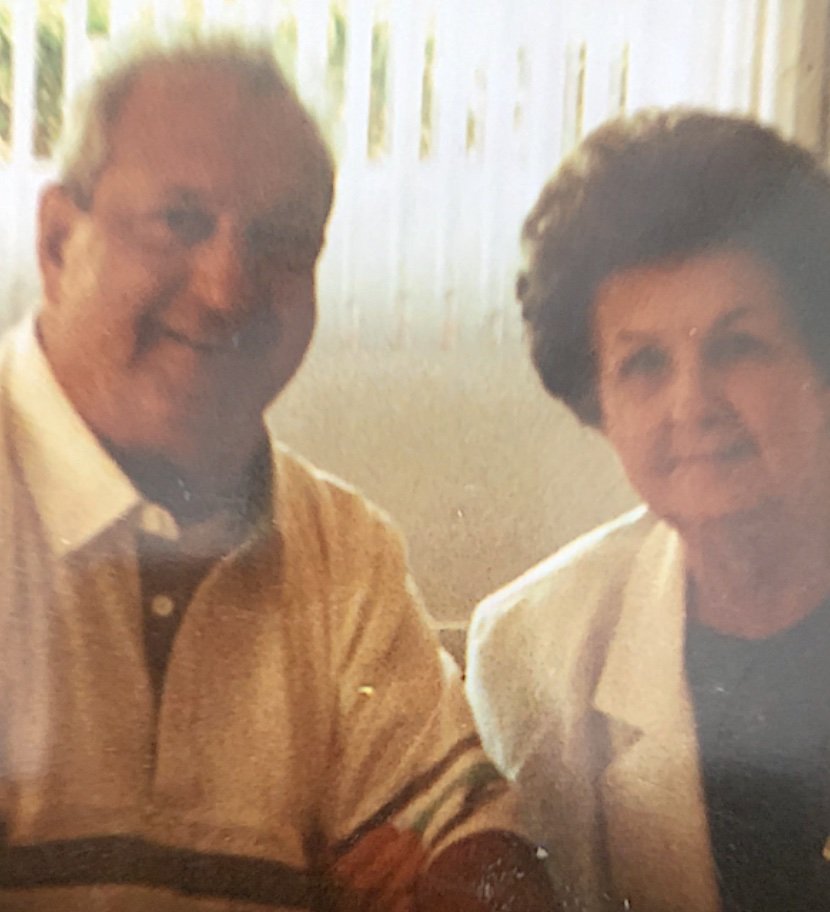

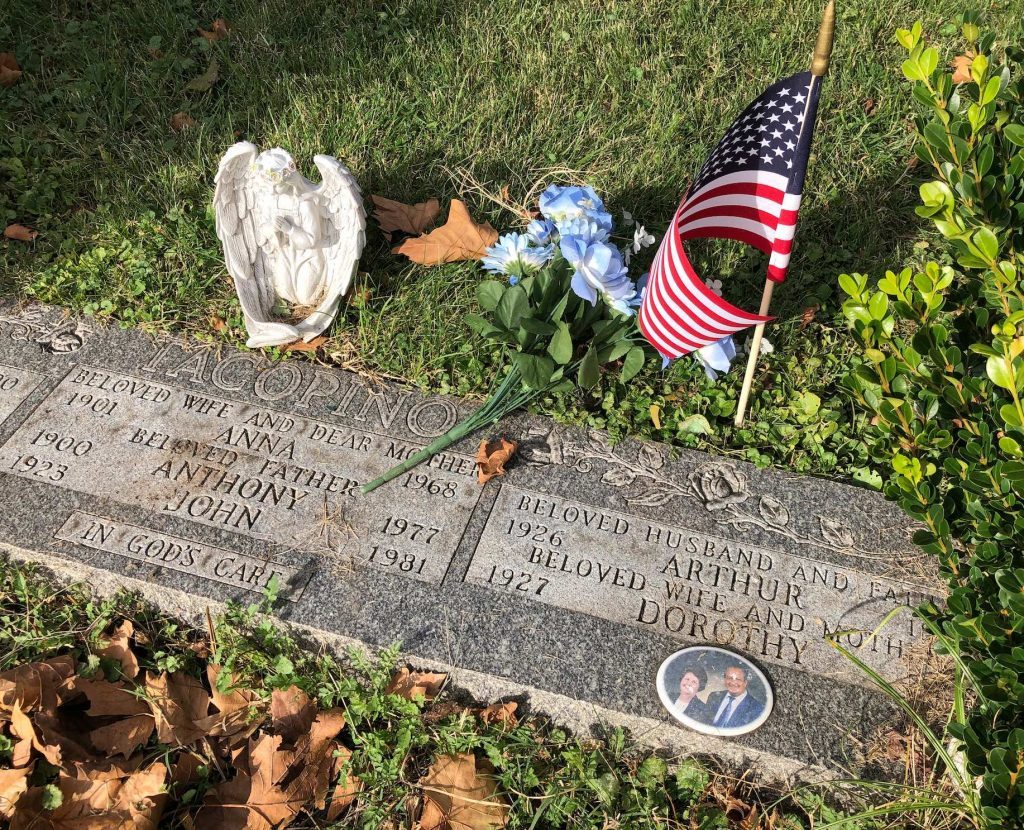
TACOPINO, JR., GUS (or COSMO, COSIMO, COSIME) (1922-1990). Corporal, 22nd Marine Regiment, 6th Marine Division, United States Marines. According to his World War II draft registration card, Tacopino was born in Brooklyn. Tacopino’s first name varies from document to document. In November 1939, the United States Social Security Applications and Claims Index lists his first name as Gus, while the September 1953 document records it as Cosimo. As per the 1930 federal census, he resided with his father and mother, Anthony and Anna, and two younger brothers, John and Arthur, at 207 18th Street in Brooklyn. His father was born in Italy and his mother was born in New York. The 1940 federal census records that Tacopino was seventeen years old, single, and had completed three years of high school. His first name is documented as Cosmo and he lived with his parents and brothers at 591 Fourth Avenue.
Tacopino’s World War II draft registration card (on which he identifies himself as Gus Anthony Tacopino) notes that he was nineteen years old, lived at 591 Fourth Avenue, and was employed by Bethlehem Steel Company, located on 27th Street in Brooklyn. His mother was named next of kin. The registrar’s report, dated June 30, 1942, describes him as 6′ tall and 168 pounds with brown eyes, black hair, and light complexion. As per the United States Department of Veterans Affairs BIRLS (Beneficiary Identification and Records Locator Subsystem) Death File, he enlisted on September 14, 1942. The United States Marine Corps Muster Rolls, dated January 1945, document his first name as Cosime, his rank as corporal, and his station as Headquarters and Service Company, 22nd Marine Regiment, 6th Marine Division. The United States Department of Veterans Affairs BIRLS Death File lists his discharge date as January 14, 1946. His dates of service correspond to the history of the 6th Marine Division, as described on marines.togetherweserved.com website:
World War II infantry division formed in September 1944. During the invasion of Okinawa, it saw combat at Yae-Take and Sugar Loaf Hill and was awarded a Presidential Unit Citation. The 6th Division had also prepared for the invasion of Japan before the war ended. After the war, it served in Tsingtao, China where the division was disbanded on April 1, 1946, being the only Marine division to be formed and disbanded overseas and never set foot in the United States.
After his service, Cosimo A. Tacopino and Teresa Colasuonno applied for a marriage license in Brooklyn on October 29, 1947, as per the New York Marriage License Indexes. According to the 1950 federal census, the twenty-seven-year-old Tacopino was married and worked as a longshoreman. He and Teresa had two children, one-year-old Anthony and newly-born Cosimo Jr. An obituary in the December 6, 1990 issue of the New York Daily News reports that Gus was survived by his wife and their five children: Anthony, Cosmo Jr., John, Charles, and Theresa Shaw. Section 135, lot 40273, grave 1.

TACOPINO, JOHN (1924-1981). Boatswain’s mate 2nd class, USS SC-650, United States Naval Reserves. According to his World War II draft registration card, Tacopino was born on May 18, 1924. His date of birth is confirmed by the Department of Veterans Affairs BIRLS (Beneficiary Identification and Records Locator Subsystem) Death Index. However, the Social Security Death Index documents his birth date as May 18, 1923, while the Find A Grave website lists that date as May 19, 1923. As per the 1930 federal census, he resided with his father and mother, Anthony and Anna, and two brothers, Cosmo (Gus) (see) and Arthur (see), at 207 18th Street in Brooklyn. His father was born in Italy and was a plasterer in the contracting business. John, his mother, and both siblings were born in New York. The 1940 federal census records that John was fifteen years, had completed one year of high school, and was living with his family on 4th Avenue in Brooklyn.
Tacopino’s World War II draft registration card notes that he was eighteen years old and was employed by Bethlehem Steel Company, located on 27th Street in Brooklyn. His mother was named as next of kin. The registrar’s report, dated June 30, 1942, describes him as 5′ 11″ tall and 160 pounds with brown eyes, brown hair, and light complexion. As per the United States Department of Veterans Affairs BIRLS Death File, John served in the United States Naval Reserve. His enlistment date was March 24, 1943 and his discharge date was February 10, 1946.
There are numerous records detailing John’s naval career: the June 1943 World War II Navy muster rolls state he was stationed on the USS Mount Vernon and held the rank of seaman 2nd class; the July 1943 Navy muster rolls record that he was assigned to be transferred to the Southwest Pacific area; on August 20, 1943, he was transferred and received on the submarine chaser USS SC-650.
Military-history.fandom website describes the work of a submarine chaser:
Submarine chasers were used mostly by the United States Coast Guard in World War II for destroying German U-boats that were stationed off the coast of the United States that were trying to sink merchant convoys as they departed American ports. By the end of World War II, submarine chasers had sunk around 67 German U-boats. In the Pacific Theatre, submarine chasers were used for amphibious landings, courier and escort duty.
Following is an excerpt from the Naval History and Heritage Command website detailing the assignment of the SS Victoria II. The article mentions the activity of chaser SC-650 which John was stationed on in January 1944:
Transferring the remainder of her cargo of fuel oil to Trinity on the last day of 1943, Victoria headed for Milne Bay on New Year’s Day 1944. After loading fuel oil for SS Corinth, the oiler then proceeded to an anchorage near Milne Bay and commenced fueling Allied warships. On the 25th, Victoria rendezvoused at sea with Australian heavy cruiser, HMAS Shropshire, and fueled her. Two days later, she headed for Buna (Papua, New Guinea) in company with the motor minesweeper YMS-73 and the subchasers SC-7jtl and SC-650 to discharge a cargo of fuel oil to Trinity. That mission completed, Victoria proceeded independently to Milne Bay, reaching there on 30 January.
The December 1943 muster rolls document that Tacopino was still assigned to the USS SC-650, but his father, Anthony, was now designated as next of kin. The February 29, 1944 Navy muster rolls record that John was promoted to seaman 1st class on February 1, 1944. According to the July 1944 Navy muster rolls, he was promoted to coxswain on July 1, 1944. The January 1945 Navy muster rolls record that John was promoted to boatswain’s mate 2nd class and he had special qualifications in electronics. The April 1945 Navy muster rolls detail that he was transferred to the receiving station in San Francisco, California as of April 12, 1945. As per the December 1945 muster rolls, he was transferred on November 24, 1945 to the USS William M. Wood (DD-715) in New York. The February 1946 Navy muster rolls indicate that John was transferred from the USS Wood to the “nearest receiving station in the United States for further transfer to a Separation Center for discharge.”
After his service, John Tacopino and Dorothy M. Parker applied for a marriage license in Brooklyn on May 24, 1947, according to the New York Marriage License Indexes. As per the 1950 federal census, John, Dorothy, and their first child, Patricia, resided in Brooklyn. John is documented as a longshoreman in this census. The transcript misspelled his last name as Tacopeno. His obituary in the New York Daily News in 1981 reports that he and his wife had two daughters: Patricia Marseila and Diane Korpas. He and his two brothers, Gus and Arthur, are interred in the same Green-Wood Lot. Section 135, lot 40273, grave 2.

TALISSE, EDWARD (1923-2015). Corporal, 387th Field Battalion Battery A, United States Army. According to the New York City birth index, Talisse was born in Brooklyn. The 1925 New York State census indicates that he lived with his parents, Abdullah and Effie, at 189 Amity Street in Brooklyn. His parents were born in Syria, were naturalized citizens by 1925, and his father crocheted scarves. Talisse was the third of four children. As per the 1930 census, the family still lived on Amity Street and his father was a negligee manufacturer. His older brother was a shipping clerk, his older sister worked as an assistant supervisor in a garment company, and the fifteen-year-old Talisse and his younger brother attended school. Also listed in the census was his seventy-five-year-old grandmother, Avdokia Talisse.
According to his daughter, Talisse attended St. Paul’s Elementary School and George Westinghouse Technical High School. His World War II draft card notes that he was 18 years old, resided at 189 Amity Street, and his father was named as next of kin. Edward’s employer was Communication Measurements Laboratory at 131 Liberty Street, New York City. His registrar’s report, dated June 30, 1942, describes him as 5′ 6″ tall, 135 pounds, with brown hair, black eyes, and sallow complexion. The report also indicates that he had a birthmark on the left side of his face.
As per his daughter, Talisse was assigned to the 387th Field Artillery Battalion and was promoted to corporal. Talisse was stationed in Europe from December 14, 1943 to July 3, 1945, and took part in battles in Normandy, Northern France, the Rhineland, and Central Europe. His military specialty was radio operator. As per the United States Army Center of Military History, the 387th Field Battalion was a component of the 104th Infantry Division. The division trained in Camp Adair, Oregon, from 1942 to 1943. Its insignia, representing the northwest, is a gray timber wolf’s head on a balsam green disc, and the division’s motto was “Nothing in hell can stop the Timberwolves.” The 104th Infantry Division was the first division to train specifically to fight in nighttime conditions. His daughter shared that Talisse’s service tenure began on March 1, 1943, and ended on October 29, 1945 with an honorable discharge. The men of the 104th landed in France on September 7, 1944. The 104th then fought its way across northwestern Europe, fighting in mud, rain, and cold for 200 days through France, Holland, Belgium, and western Germany. It encountered mines, booby traps, and roadblocks, and withstood two counteroffensives by German troops. By May 7, 1945 (VE Day), the 104th was halted opposite Soviet troops advancing from the east. Talisse was awarded the American Service Medal, the European-African-Middle Eastern Service Medal, and the Good Conduct Medal.
After the war, he married Edna Fahy on January 18, 1958, and the couple had two children, Peggy and Edward. By 1957, he had risen to be the production manager of Communication Measurements Laboratory. He also worked for R & J Components for over thirty-five years. He was survived by his daughter, son, and daughter-in-law. His brother, Joseph (or Emil) (see) was also a World War II veteran. Section 18, lot 41281, grave 3.
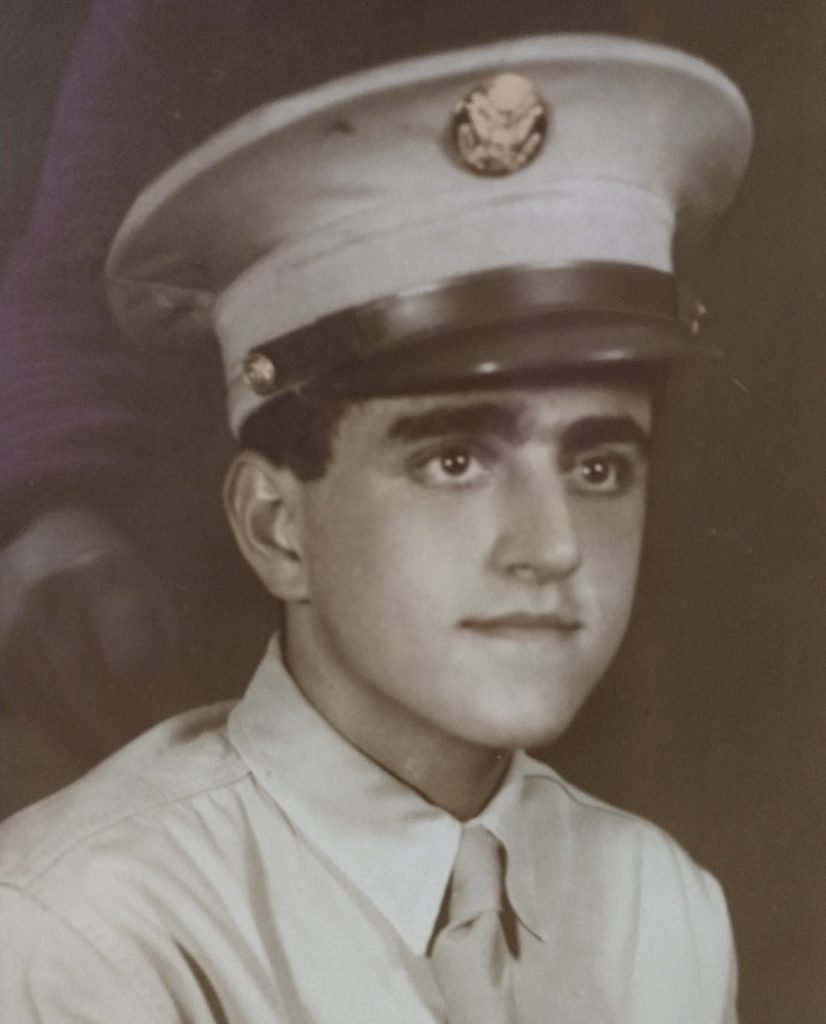
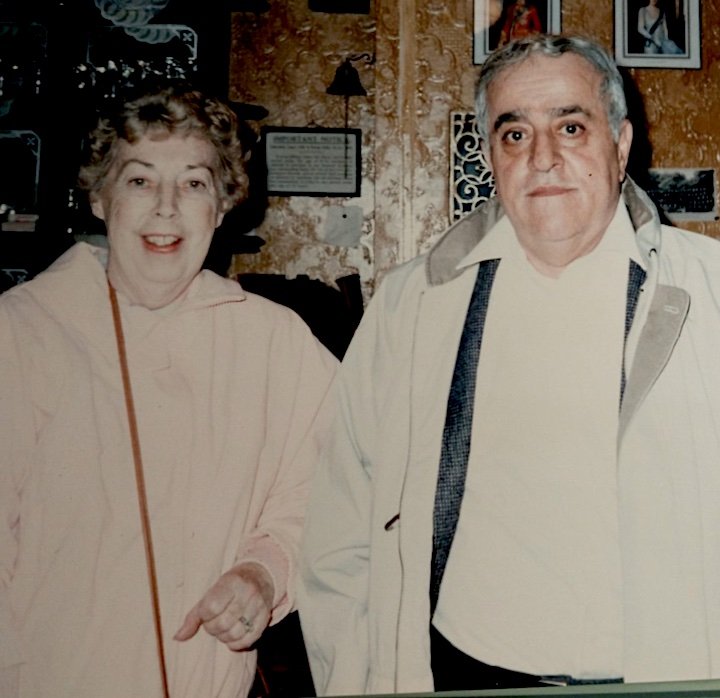

TALISSE, JOSEPH (or EMIL, AMILL) (1925-2010). Private first class, 3rd Battalion, 25th Marines, 4th Marine Division, Fleet Marine Force, United States Marine Corps. Joseph Talisse in Brooklyn. His name at birth was Emil Talisse, according to his 1925 birth record. Two-month-old Joseph Talisse, listed in the 1925 New York State census as Amill Talissi, resided at 189 Amity Street, Brooklyn, with his parents, Abdallah (or Abdullah) and Effie (they were later known, respectively, as Albert and Elizabeth), and older siblings, William (age 9), Evelyn (age 5), and Edward, who was also called Andrew (age 1). According to the census, Talisse’s parents were both born in Syria and his father worked as a scarf crocheter. Joseph and his siblings were born in the United States.
The family was still at the Amity Street address in 1930, according to the United States census of that year, and all children were attending school. Talisse’s father was employed as a salesman in the linen industry. By the 1940 federal census, the family was still living at 189 Amity Street. Also in the household was Talisse’s paternal grandmother Avdokia Talisse, who was born in Syria. Joseph’s father owned a negligee manufacturing business. Talisse was a student and had completed the 8th grade.
Talisse’s draft registration card, dated October 8, 1945, shows that Joseph Emile Talisse enlisted in the United States Marine Corps on March 4, 1943, and received an honorable discharge on October 5, 1945. He lived at 189 Amity Street, Brooklyn, and his father, Albert Talisse, of the same address, was listed as his contact. The card indicates that he was white with a dark complexion, 5′ 7″ tall, weighed 145 pounds, and had brown eyes and black hair. He had a tattoo on each arm.
According to information from Talisse’s son, Al Talisse, as well as federal government records, Joseph Talisse held the rank of private first class in the United States Marine Corps. Information from the United States Marine Corps muster rolls indicates that he was stationed with the 3rd Battalion, 25th Marines, 4th Marine Division, Fleet Marine Force. According to Marine Corps muster rolls, dated October 1943, he was convicted by summary court martial as being absent without leave from September 13, 1943 to September 16, 1943, when he was delivered to Marine Corps authorities in St. Louis, Missouri. He was sentenced to perform extra punitive duties for one month and to lose pay of $150.
He fought in the battle of Roi-Namur, at Kwajalein Atoll, Marshall Islands, as well as in the Battle of Saipan, where he was wounded, and the Battle of Tinian, both in the Mariana Islands, all in 1944. The August 24, 1944 Brooklyn Daily Eagle listed Talisse as one of eight local men who were casualties; he was among the five reported wounded in that news article. He also was wounded in combat on Iwo Jima on February 19, 1945 and was awarded a Purple Heart.
Joseph Talisse and Mary M. Maher received a marriage license in Brooklyn on February 11, 1949. At the time Talisse was living at 656 10th Street and Mary resided at 132 Amity Street. According to the 1950 federal census, the couple lived at 189 Amity Street, and Talisse was not employed. Mary Talisse passed away on February 8, 2007, and was interred on February 10, 2007. Joseph Talisse died on April 10, 2010, and was interred beside his wife on April 13, 2010. His brother, Edward (see), also served in World War II, and survived him. Mary and Joseph were survived by their son, Al Talisse. Section 18, lot 41281.
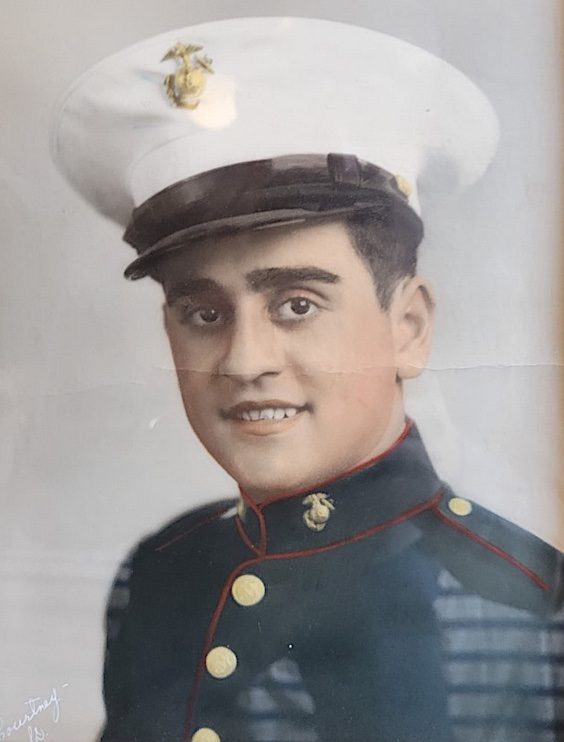
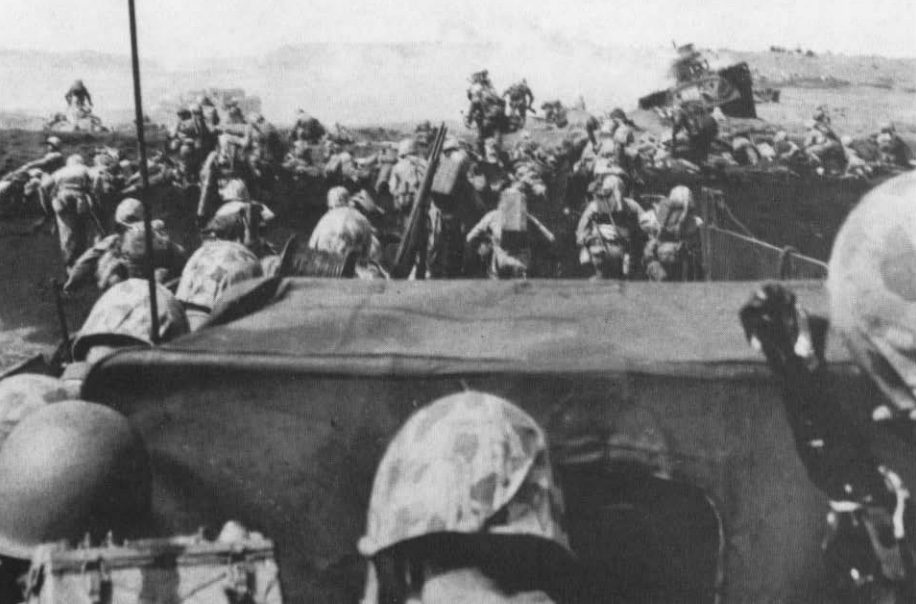
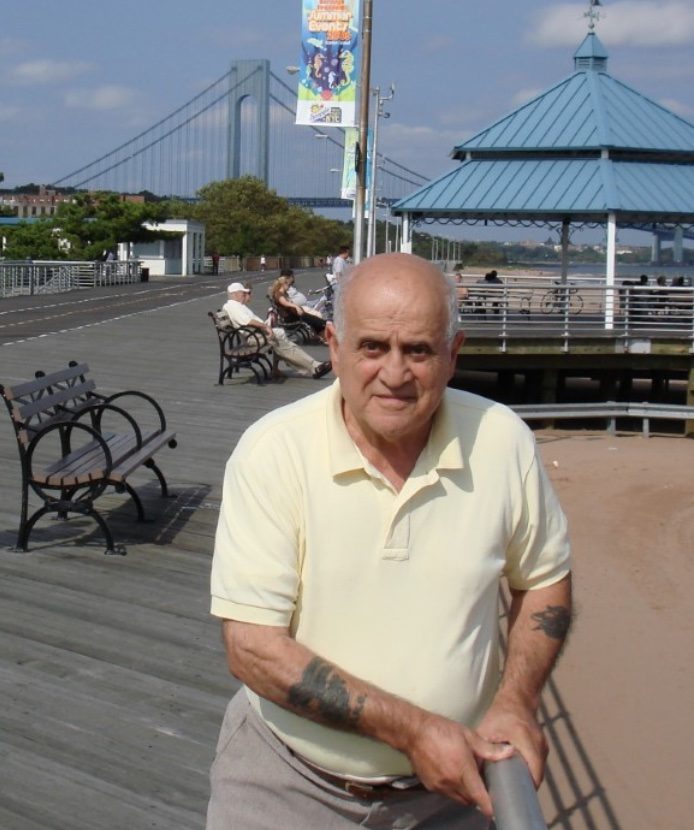

TATE, ROBERT SAUTER (1923-1994). Rank unknown, unit unknown, United States Army. According to his World War II registration card, Tate was born in East Orange, New Jersey. The 1930 census notes that he lived with his parents, Robert A. and Beatrice, and his younger sister, in Essex County, New Jersey. His parents were born in New York and his father was an advertising salesman. As per the 1940 census, the family lived in North Caldwell, New Jersey. Three siblings are recorded – Robert S., seventeen years old, Lois, thirteen years old, and Thomas, eight years old. Internet searches indicate that he attended Grover Cleveland High School in Caldwell. He was a member of its basketball team and a photograph of him and his teammates is in the 1939 edition of the Grover Cleveland High School Yearbook. He completed his high school education at Boonton High School. According to an article in The News (Patterson, New Jersey), dated June 18, 1941, he received a general course diploma during a ceremony celebrating the largest graduating class in the history of Boonton High School.
Tate’s daughter shared that he enlisted on January 29, 1943. His World War II registration card notes that he was nineteen years old, resided on Mountain Heights Avenue, Lincoln Park, Morris County, New Jersey, and his mother was named as next of kin. He was employed at Wright Aeronautical Corporation on Market Street in East Paterson, New Jersey. According to the Paterson, New Jersey, government website, Wright Aeronautical can trace its corporate roots back to the company formed by Orville and Wilbur Wright. In 1926, the company manufactured the Whirlwind J-5 engine for both military and domestic planes. By 1932, it employed over 2,400 workers. During World War II, Wright engines powered all of the B-17 Flying Fortresses, the B-52 bombers that took part on raids on Tokyo, and the B-29 Superfortress that dropped the atomic bomb on Hiroshima. An article in a Boonton newspaper, the Morning Call, reports that Tate was called to active service on February 4, 1943. Although little is known about his deployment, his daughter relates that he served in Exeter, England, and France. As per the Department of Veterans Affairs BIRLS (Beneficiary Identification and Records Locator Subsystem) Death File, he was discharged on December 1, 1945.
After the war, Tate married Salma (Sally) Baram on May 15, 1954, and the couple had three daughters, Elaine, Carol, and Laura. He was a machinist for Curtiss-Wright in Woodbridge, New Jersey, for twenty-four years. Subsequently, he was an electrician with the International Brotherhood of Electrical Workers Local 102 in Peterson, New Jersey, for fifteen years before retiring in 1978. According to his daughter, “He was proud of his war service and belonged to several veterans’ associations, including the American Legion Post 174 in Wayne, New Jersey, the Disabled American Veterans Chapter 18, and the Albion Place Memorial Post 7165 of the Veterans of Foreign Wars. Tate is buried in the same lot at Green-Wood as his father who passed away in 1949. He was survived by his daughters Elaine Bednarek, Carol Thomas Fabrizio and Laura Gardiner and grandchildren Jesse Barlow Thomas, Nicolas Baram Bednarek, Robert Tate Bednarek, Devon Salma Gardiner and Piper Jean Gardiner. Section 143, lot 22384, grave 1.
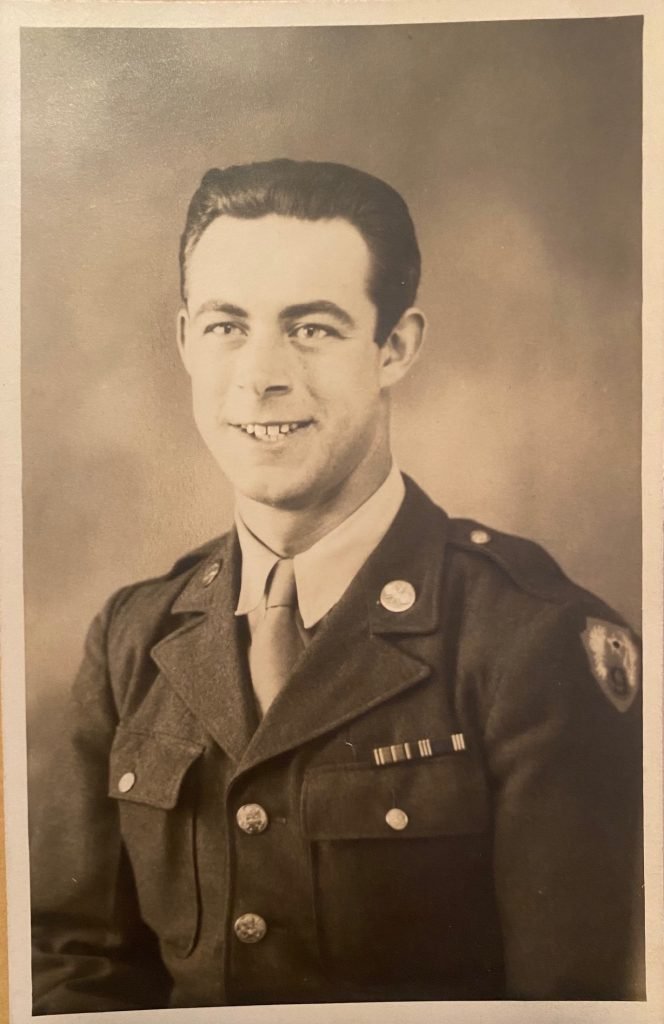
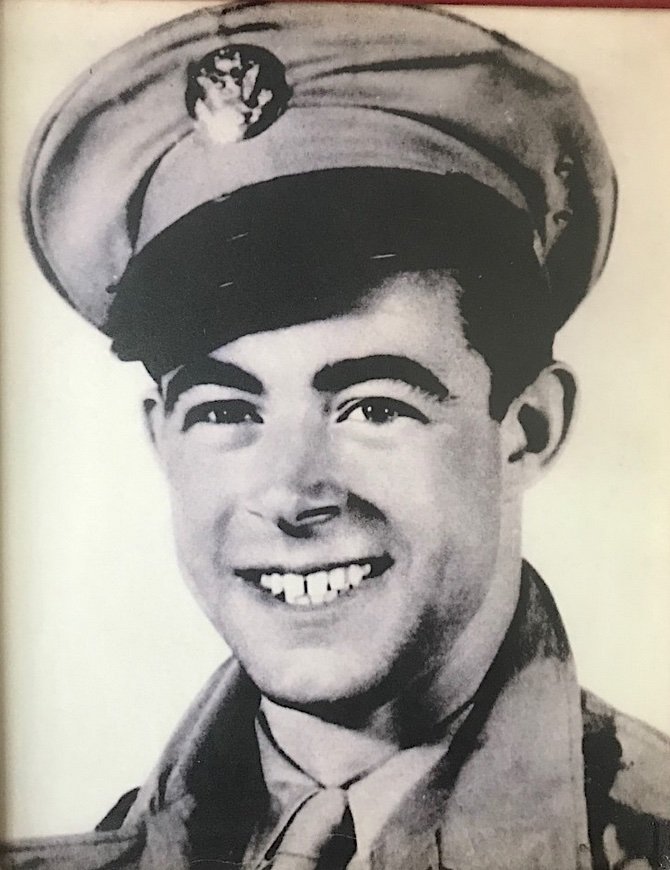
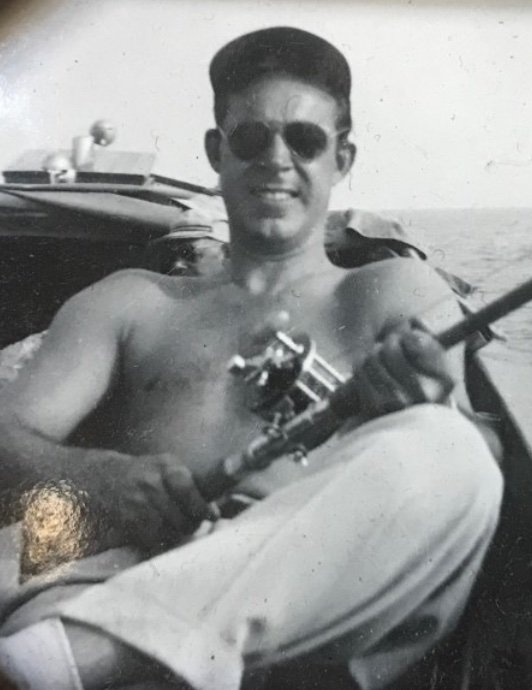
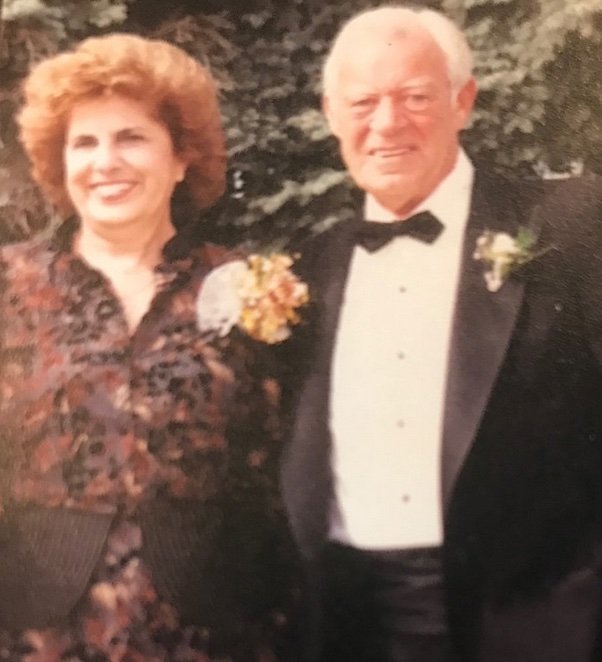
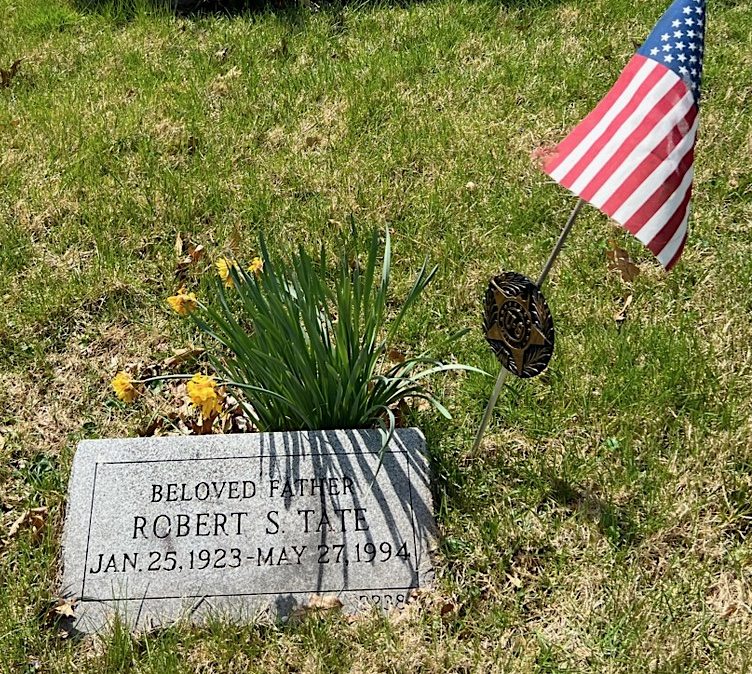
TEPEDINO, JOSEPH (1926-2018). Sergeant, unit unknown, United States Army. According to the Richmond (Staten Island) birth records, Tepedino was born there. His son states that he was a native of Rosebank, a small neighborhood in that borough where Joseph’s parents married in 1924. The 1930 census notes that he lived with his parents, Anthony and Mary (née Marino), and his younger brother, Salvatore. The family resided then at 755 50th Street in Brooklyn in a home owned by his parents. His father was born in Italy and his mother was born in New York.
According to the 1940 federal census, the family lived at 820 50th Street, another family-owned property. At the time of the census, Tepedino had a six-year-old brother, Michael. His father’s brother, Michael, was also residing at the house; both his uncle and father were carpenters. That census records that Joseph’s father had completed grade eight and his mother had completed one year of high school. Tepedino’s father has a World War II registration card which states that his place of birth was Padula, Italy, and that he was self-employed.
As per Tepedino’s son, Tepedino was part of the first graduating class of the new Fort Hamilton High School, located in Bay Ridge, Brooklyn. The June 25, 1943 issue of the Brooklyn Eagle reports that “Army, navy and marine uniforms lent a war note to the annual graduation exercises held in Brooklyn last night.” The newspaper was referring to participants in the Fort Hamilton High School ceremony, along with five other high school graduation ceremonies.
Tepedino’s World War II registration card indicates that he registered on July 26, 1944, was eighteen years old, born in Brooklyn, and his aunt, Madeline De Vivo, was named as the contact person. His place of employment is listed as the Brooklyn Army Terminal at 58th Street and First Avenue in Brooklyn. Little is known regarding his military service. His son shares that he “enlisted at the age of seventeen in 1943 and served in both the European and Pacific Theaters where he was wounded in combat. He served his final months in the military as a member of the occupational forces in Japan.”
After the war, Tepedino was a carpenter and worked until he was eighty years old. He was married for sixty-seven years to Mary (née Kravitz) and the couple had two children. The family first lived in Borough Park, Brooklyn, before moving to Eltingville, Staten Island, and then to Pennsylvania. He passed away at the age of ninety-one in Limerick, Pennsylvania. He was survived by his wife, children, three grandchildren and four great-grandchildren. Section 191, lot 39723.
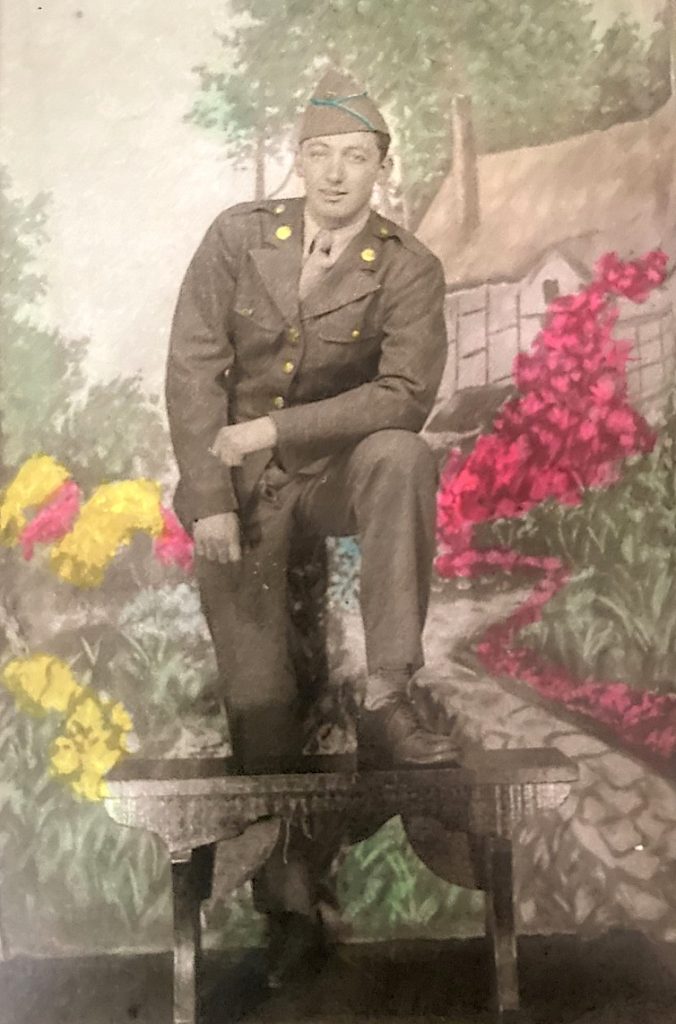
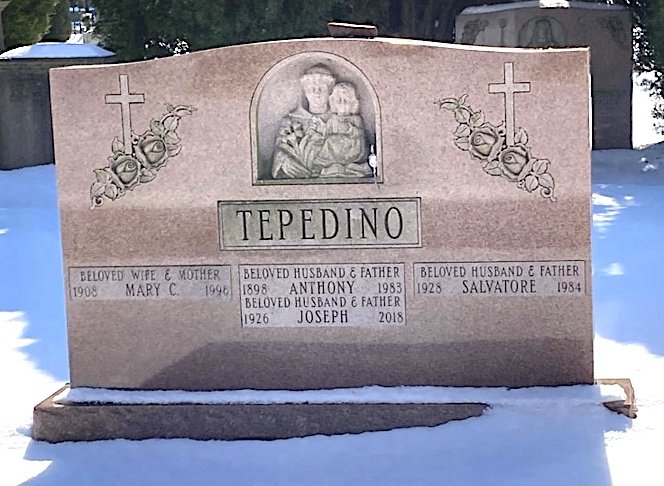
THOMPSON, HENRY STANLEY (1923-1990). Private, United States Army. Henry was born in Brooklyn to parents Louis and Gunda Skeie Thompson, both of whom were natives of Norway who married in New York circa 1918. As per the 1925 New York State census, the Thompsons were living at 5907 Fourth Avenue in Brooklyn. Louis and Gunda, who had been living in the United States for fourteen years, were registered aliens. At that time, Henry had two older brothers, Thore (see), age six, and Leonard (listed as George L.), age 4. A niece, Elisa Jacobsen, 15, also lived in the household. Louis was a carpenter and Gunda tended to the home. All of the children were born in the United States.
According to the 1930 census, the family had moved to an apartment at 664 Bay Ridge Parkway in Brooklyn; the rent was $52 per month. The parents both immigrated in 1911 and were now naturalized citizens. Louis, who was still employed as a carpenter, is identified as a veteran of the World War. The three boys were attending school and Gunda was awaiting the birth of their daughter, Lillian, who would be born in July.
The 1940 census names Gunda, a domestic servant, as head of the household. On this census, she is listed as a registered alien. The family was living in an apartment at 506 52nd Street in Brooklyn that rented for $31. Thore, 21, had completed two years of high school and was working as a WPA (Works Progress Administration) laborer. Leonard, 19, had completed two years of high school and worked as a CCC (Civilian Conservation Corps) laborer. Henry, the subject of this biography, had finished eight years of school and Lillian had completed four years of school. Given that Gunda’s husband is listed by himself on the 1940 census, it is possible that the couple had separated; Louis was living alone in a rental for $20 per month at 258 43rd Street in Brooklyn and was a carpenter/contractor. On October 24, 1941, Louis Thompson collapsed on the stairway of his apartment house and died; he is interred at Evergreens Cemetery in Brooklyn.
Henry’s draft registration card, filed when he was 18 on June 30, 1942, states that he was living at 5320 Sixth Avenue in Brooklyn; the original address of 423 49th Street is crossed out. His mother is named as his emergency contact, no home phone is listed and no employment is noted. The accompanying registrar’s report describes Thompson as 5′ 9″ tall, 142 pounds, with gray eyes, brown hair and a light complexion. As per Army enlistment records, he enlisted as a private at New York City on April 9, 1943; that record indicates that he had completed one year of high school. His older brother Thore enlisted in the Navy on May 5, 1944. Henry was discharged on March 14, 1946, one week after Thore’s discharge.
The 1950 census documents that Thompson was living with his sister Lillian and her husband Walter Asmann (see) at 5320 Sixth Avenue; Henry, the head of the household, is single but no employment is noted. Henry’s mother married Emil Holmes in 1955 in Brooklyn and died September 8, 1980; she is buried at Green-Wood. Thore died three days after his mother. Thores’s brother-in-law, Frederick Leroy Jones (see) and Frederick’s brother, Franklin Chester (Jones) (see), were also veterans of World War II. Henry, who never married, died in Brooklyn. Section 39, lot 38325.
THOMPSON, THORE KLEPPE (1919-1980). Machinist’s mate second class (T), United States Navy. Thore was born in Brooklyn to Louis and Gunda Skeie Thompson; his birth certificate records the surname as Thompsen. Louis and Gunda immigrated from Norway to the United States in 1911 and married in New York circa 1918. The 1925 New York State census records the Thompsons living in Brooklyn as registered aliens. Louis was a carpenter and Gunda was a homemaker. There were three children at home: Thore, age 6, Leonard, age 4 (listed as George), and Henry (see), age 1. A niece, Elizabeth Jacobsen, age 15, lived in the household. As per the 1930 census, the family had moved to a rental apartment for $52 per month at 664 Bay Ridge Avenue in Brooklyn. Louis still worked as a carpenter and was listed as a veteran of the World War. All three sons attended school and Gunda was awaiting the birth of their daughter, Lillian. Both Louis and Gunda were listed as naturalized citizens.
By the time of the 1940 census, Gunda and Louis were living apart and likely separated. Gunda Thompson and her four children were living in an apartment that rented for $31 per month at 506 52nd Street in Brooklyn. She was listed as a domestic servant and a registered alien. Thore, 21, had completed two years of high school and was working as a WPA (Works Progress Administration) laborer. Leonard, 19, had completed two years of high school and worked as a CCC (Civilian Conservation Corps) laborer. Henry had finished eight years of school and Lillian had completed four years of school. Louis lived alone at 258 43rd Street in Brooklyn at a rental for which he paid a monthly charge of $20. He was employed as a carpenter/contractor. On October 24, 1841, Louis Thompson died after collapsing in the stairwell of his Brooklyn apartment house. Louis is buried in Brooklyn’s Evergreens Cemetery
On April 12, 1941, Thore obtained a marriage license in Brooklyn to wed Marion Grace Jones. The Brooklyn Daily Eagle announced their marriage four days later. Marion’s brothers, Franklin (see) and Frederic Jones (see), were World War II veterans. Thore and Marion had three children, Phyliss Thompson Barton Hoodak (born March 13, 1942), and sons Allen and Howard.
When Thore registered for the draft on October 16, 1940, he lived at 548 52nd Street in Brooklyn, listed his mother at the same address as his emergency contact, had no home phone and was employed at the Bethlehem Steel Shipyard in Brooklyn. His accompanying registrar’s report documents that he was 6′ 1″ tall, 175 pounds with blond hair, blue eyes and a light complexion.
Thore enlisted in the United States Navy on May 5, 1944, thirteen months after his younger brother Henry enlisted in the Army. Thore is listed as being onboard the USS Boulder Victory in San Francisco, California, on October 12, 1944, with the rank of F2c (fireman second class). Firemen in the Navy performed engineering watches and did maintenance repairs. Thompson was still aboard that ship on February 8, 1945, in Kessel Passage, Palau Islands, with the rank of F1c. (fireman first class). On January 1, 1946, he appeared on the rolls of the Boulder Victory with the rank of MM2c (T) (machinist’s mate second class). He was discharged on March 7, 1946, a week before his brother Henry.
On November 4, 1947, he and his wife welcomed their son Allen Thore Thompson. As per the 1950 census, the Thompsons lived at 623 56th Street in Brooklyn with their children, aged eight and two; Thore was employed as a marine repair machinist. On March 27, 1957, a son, Howard Kleppe, was born.
Guna Thompson was married to her second husband, Emil Holmes, in Brooklyn in 1955. Thore died on September 11, 1980, three days after his mother, Gunda Thompson Holmes, who is buried in Green-Wood (section 39, lot 38325). As per Thore’s obituary in the New York Daily News, he was survived by his wife of 39 years, his children, three grandchildren, his two brothers and sister. Religious services were held at the Walter B. Cooke Funeral Home at 6900 Fourth Avenue in Brooklyn. Marion died in Baltimore, Maryland, on January 12, 1990, and is interred with her husband at Green-Wood. Section 158, lot 14267.
THORPE, GEORGE MARTIN (1911-1982). Colonel, Judge Advocate General’s Corps, United States Army. George Martin Thorpe was born to father George W. E. Thorpe and mother Lilla Kirk Martin (later Mrs. Charles O. Adams), in Bluffton, South Carolina. According to the 1930 federal census, the Thorpe family lived in Aiken, South Carolina, where George’s father was a photographer and owned his own business. George was 19 years old and had four younger siblings: Lillian, 17 years old, Thomas, 15 years old, Garth (William), 13 years old, and Martin was 9 years old. They lived in Aiken and George graduated from the Aiken Institute, then from Wofford College in Spartanburg, South Carolina, in 1932, where he was historian of the senior class, attended ROTC for all four years of college, and finished as cadet captain with the title of “Battalion Disciplinarian.” He was also the circulation manager of “The Journal,” the college’s literary magazine, first censor of the Carlisle Literary Society, and member of the Chi Beta Phi national honorary science fraternity. By 1933, George was a law student at the University of Virginia.
In 1940, Thorpe was living by himself on Clark Street in Brooklyn, New York. He was 29 years old, had received his law degree from the University of Virginia, class of 1935, with honors (according to his Military Register listing), and worked as a lawyer at the Zurich General Accident and Liability Insurance Company, Ltd. He also was a member of the New York County Lawyers Association. According to The Brooklyn Daily Eagle, published March 11, 1941, George was the grandson of the late Colonel and Mrs. Thomas DeCourcey Martin from Bluffton, Beaufort County, South Carolina.
On October 17, 1941, Thorpe enlisted in the United States Army. He had also served under Colonel Benjamin A. Brackenbury, CWS (Chemical Warfare Service), Port Chemical Officer, and Lieutenant Colonel George W.B. Witten, CWS, Assistant to the Port Chemical Officer at Fort Hamilton in Brooklyn. By January 2, 1942, an engagement announcement in the Brooklyn Citizen stated that Thorpe was serving with the Overseas Discharge and Replacement Depot. In early 1942, George married Katherine Wyckoff Streeter at the historic St. John’s Episcopal Church, the “Church of the Generals,” where he was stationed as a first lieutenant. She was the daughter of a lieutenant colonel and lived at 214 Fenimore Street in Prospect Lefferts Gardens, Brooklyn. George lived at 148 Columbia Heights in Brooklyn Heights.
During World War II, Thorpe served in the United States Army, Judge Advocate Generals Corps, and served in Germany, and in Formosa (Taiwan) in the United States Taiwan Defense Command and Military Assistance Advisory Group and received the Legion of Merit award.
On May 10, 1946, he was initiated into the King David Lodge of the Masons in Taunton, Massachusetts. In 1966, he was still active in the United States Army. After he retired as a colonel, Thorpe continued to work for the Zurich Insurance Company, then worked for the New York State Attorney General’s Office in Albany and as associate counsel for the Department of Social Services in Rensselaer County in New York.
Thorpe died at the age of 71 in Bennington, Vermont. His last known address was in Berlin, New York. George and Katherine had five children: David Denison, William B., George Martin Jr., Elizabeth Ann, and Susan. His gravestone inscription is on the back of the gravestone of Daniel Denison Streeter (see). They both were interred on December 31, 1982.Section 141, lot 21363.
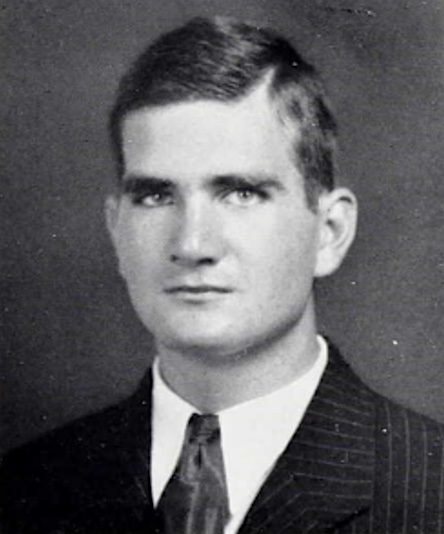
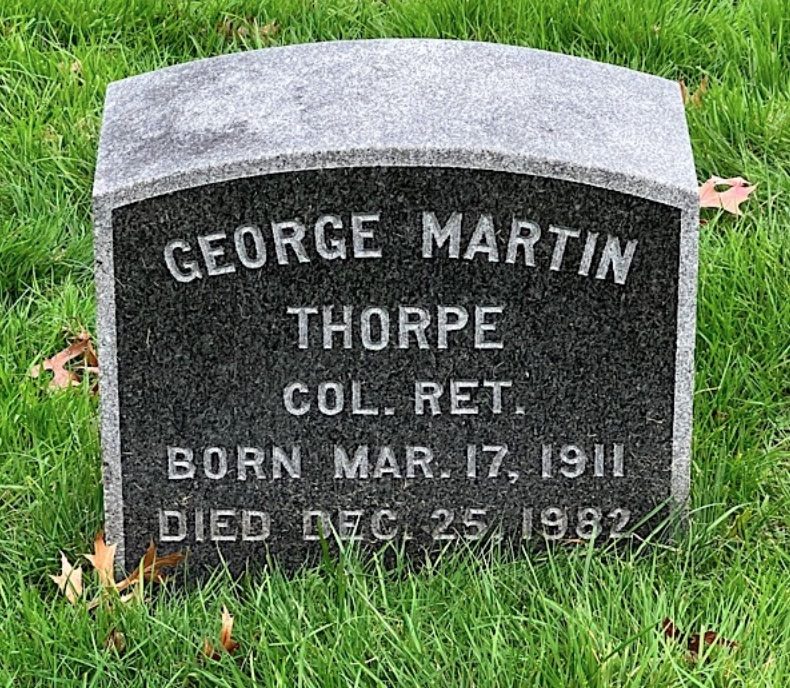
THUONG, DOROTHY LEE (1920-2018) Civilian volunteer. As per the New York State census of 1925, Dorothy was five years old and had an older brother, Lawrence Jr., who was seven; the children were born in New York. Her parents, Lawrence (Larry) and Bessie immigrated from China in 1902 and 1906, respectively; Lawrence was a cigar manufacturer. At the time of that census, the family was living on Seventh Avenue in Brooklyn. The 1930 census reports that the Lees were living on Fourth Avenue and the father was still in the cigar business. As per the 1940 census, Lawrence Sr. was a citizen and owned a restaurant, Lawrence Jr. was a waiter and Dorothy was in school; the family was living on 4th Street in Brooklyn.
As per her nephew, Larry Lee, Dorothy Lee worked as a civilian volunteer in support of the war. Although we have no specifics about her volunteer efforts, Dorothy was active in the Campfire Girls in North Adams, Massachusetts, where she summered. In one news article in the North Adams Transcript, dated June 20, 1942, Dorothy played a piano recital and the group donated toys, including dolls and toy animals made by the girls, which were sent to British children; this might be part of her civilian war efforts.
On July 26, 1950, Lee and Fay Thuong (see) obtained a marriage license. They had two sons, Steven T. and Peter.
As per the Greenfield Recorder of Greenfield, Massachusetts, on April 30, 1980, Thuong was the executor of the estate of Larry Lee; Mr. Lee, who is buried in the same family lot as Dorothy and her husband at Green-Wood, was a World War I veteran. On November 12, 1995, the Indian River Press of Vero Beach, Florida, reported that Dorothy Thuong of Long Beach, New York, sold property in Vero Beach.
Steven Thoung, a son of Dorothy and Fay Thuong, who was born in 1952, died in 2010. As per his obituary in the Greenfield Recorder, on October 10, 2010, Steven was an inspector for the Nassau County Health Department and summered in Rowe, Massachusetts, where he loved the outdoors, at the home built by his grandfather Lawrence (Larry) Lee. He was predeceased by his father in 1985 and survived by his mother, brother Peter, and his sister-in-law and niece. Steven’s funeral was handled by the Christopher T. Jordan Funeral Home of Island Park, New York. Both Steven and his mother had homes in Long Beach, Long Island.
Dorothy Thoung was active in community affairs. A news article in the Long Island Herald on December 9, 2004, noted that Thuong was a Lions Club member and raised money for the Diabetes Education Center in 2010 as per the organization newsletter. She died at the age of 98. Section C, lot 35591, grave 3.
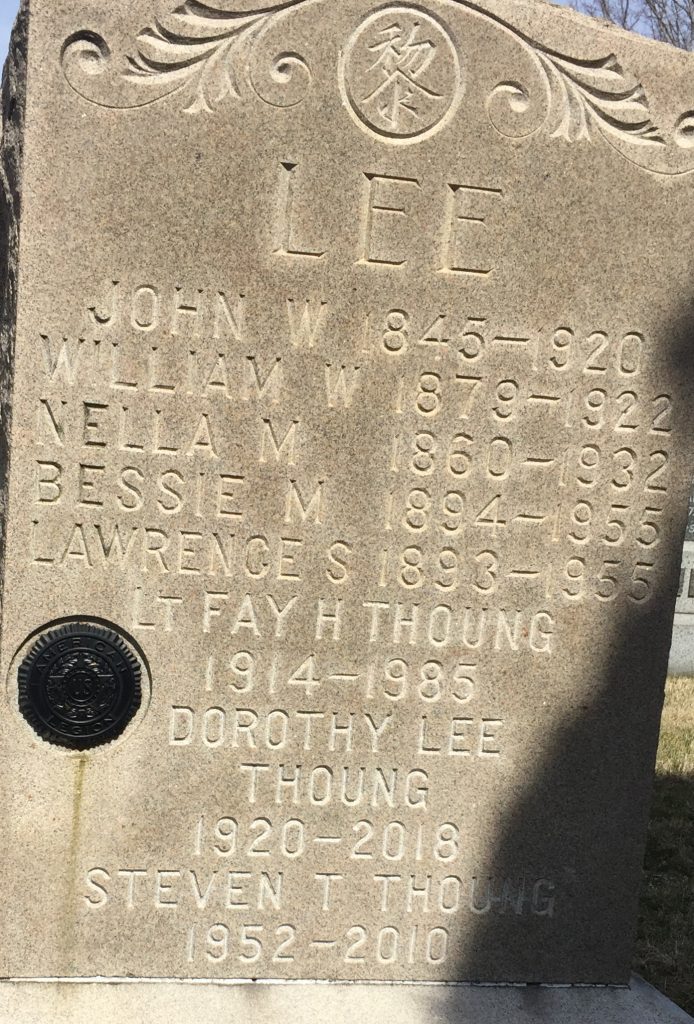
THOUNG, FAY HONG (1914-1985) First lieutenant, Unit 513, United States Army Air Force. Fay H. Thoung was born to father Harold P. Thoung in Canton (Guangzhou), China. Information about Fay’s biological mother is unknown. Both Fay and his father immigrated to the United States and were living on Midland Avenue in Kearny, New Jersey, with Fay’s stepmother, Ruth, and his three younger half-siblings, Harold, 9 years old, Olive, 2 years old, and newborn Ethel, according to the 1930 census. His father was working at a laundry and was a World War I veteran of the 87th Division in the United States Army.
Fay’s World War II draft registration card, signed on October 16, 1940, listed Fay as 26 years old and working as a waiter at the Chow Mein Inn Enterprise, a restaurant at 54 West 52nd Street in Manhattan. The telephone number he used was the contact number for the restaurant, Eldorado 5-8746. “Name Of Person Who Will Always Know Your Address” was listed as friend, Mrs. Sam One, who lived on Doyer Street in Manhattan. Fay was 5′ 4″ tall, 140 pounds, with brown eyes, black hair, and a light brown complexion. His family was now living on Belleview Turnpike in Kearny, New Jersey, his father and stepmother owned and worked at a laundry business. Both he and his father had become citizens and Fay had completed four years of high school. When Thuong enlisted on April 17, 1941, he was living in Manhattan and had left the RCA Institute, an electronics and radio school in New York, to join the United States Army Air Force and become a radio engineer.
Thoung served in the 513th Fighter Interceptor Squadron. He received training throughout the United States. His squadron was activated as the 629th Bombardment Squadron in Key Field, Mississippi, on March 1, 1943, then moved to training at the Congaree Army Air Field in South Carolina. They trained on the Republic P-47 Thunderbolt fighters as a ground attack unit. The squadron then moved to the European Theater of Operations in March 1944, leading up to and following the D-Day Normandy landings in France, landing at the Royal Air Force Ashford in Kent, England. Before “Operation Overlord” (the Battle of Normandy), they flew their first combat mission, and took part in several missions throughout France, the Battle of the Bulge in the Ardennes in Belgium, and then into Western Germany by 1945. Following Victory in Europe (V-E Day) on May 8, 1945, the squadron moved to the Nordholz Naval Airbase in Germany to become part of the Army of Occupation. The squadron was deactivated on August 20, 1946, and transferred to the 526th Fighter Squadron. Thuong had also served in Peiping, China (known today as Beijing), and Shanghai. He was awarded the Asiatic Pacific Campaign Medal, the American Campaign Medal, and the WWII Victory Medal, and was discharged as a first lieutenant on September 6, 1946. He then lived on West 51st Street in Manhattan.
Fay married Dorothy Lee (see) in July 1950 in Manhattan. She was the daughter of Lawrence Lee Sr., a cigar manufacturer, restaurant owner and a World War I veteran. Her mother was Bessie Lee. Both of her parents immigrated to New York from China in 1902, and her family lived on 4th Street in Brooklyn and owned a family home near North Adams, Massachusetts, where Dorothy was a civilian volunteer for the war effort. After they married, Fay and Dorothy vacationed in Canada and Massachusetts. She, Fay and their family owned property in Long Beach, New York, Rowe, Massachusetts, and in Vero Beach, Florida. They had two sons, Peter and Steven Thuong. Fay passed away on September 22, 1985, at age 71. Dorothy passed away in 2018 at age 98. They are interred together with other family members. Section C, lot 35591, grave 3.
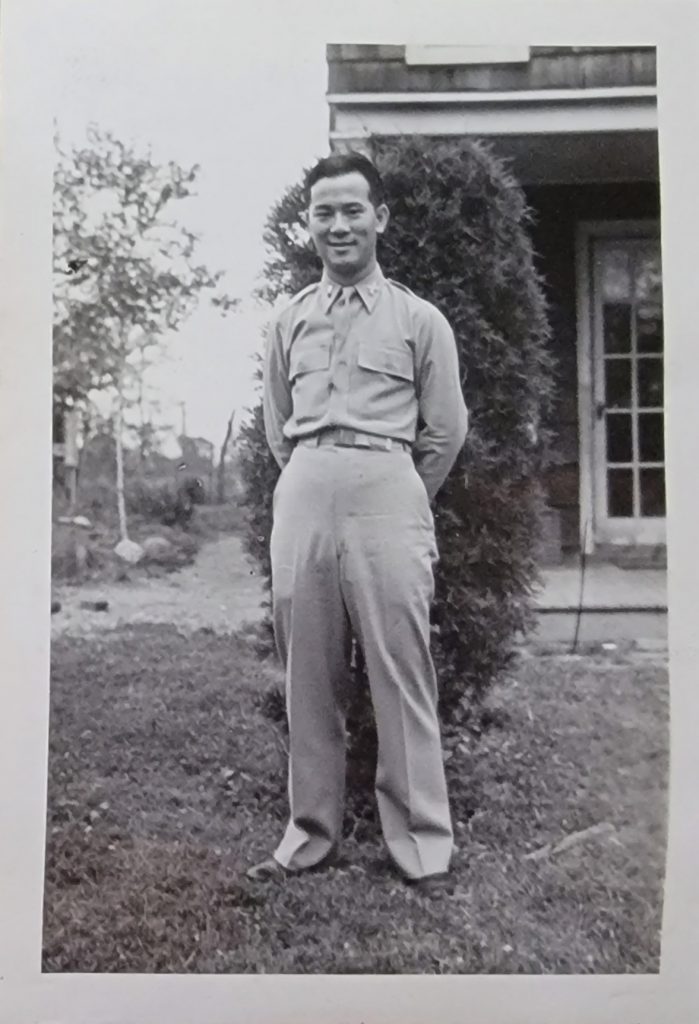
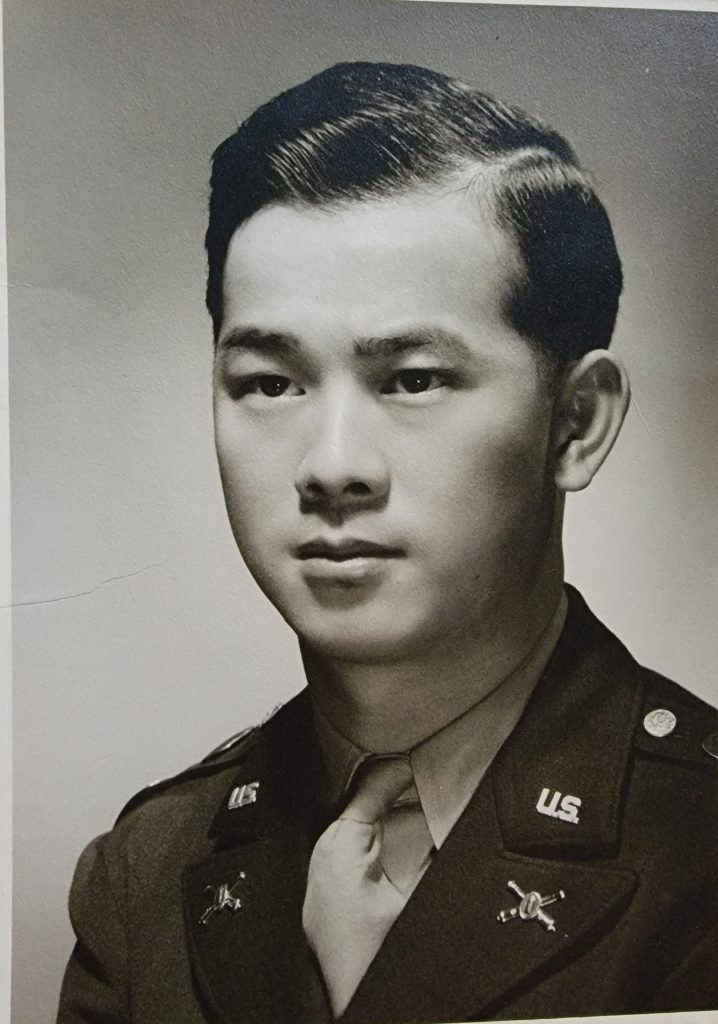
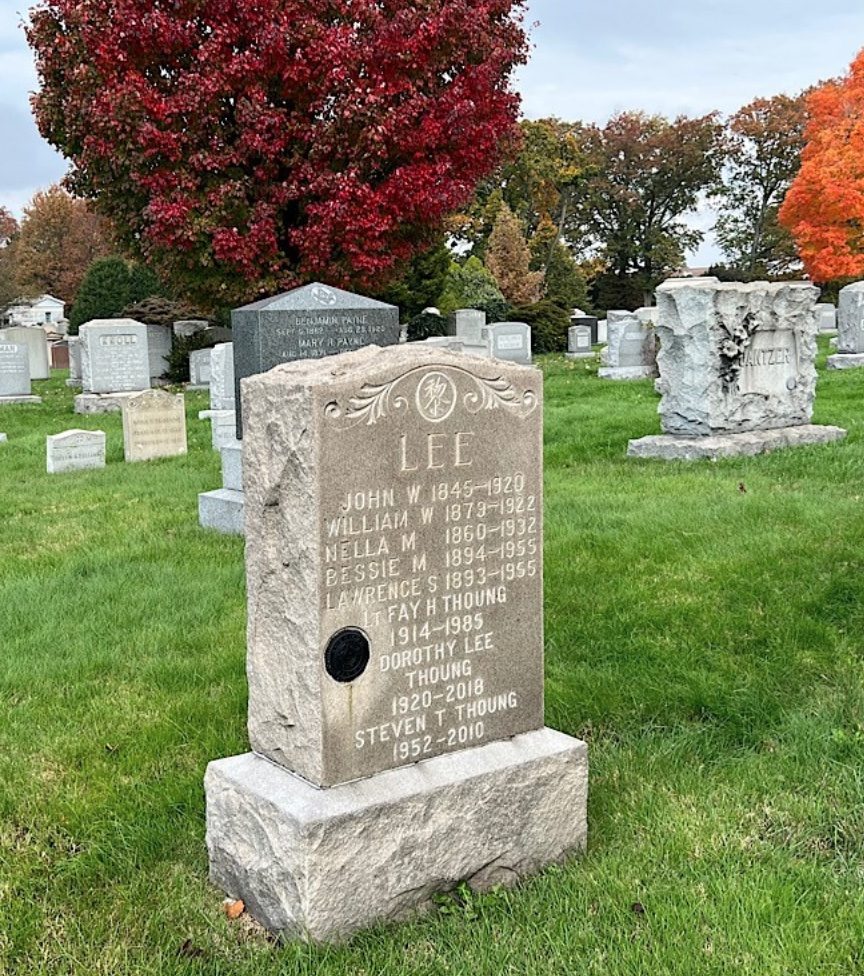
TIERNAN, GERARD EDMUND (1925-2007). Seaman first class, United States Navy. According to the New York birth index, Tiernan was born in Brooklyn. The 1925 New York State census indicates that the two-month-old Tiernan lived with his mother, father, and older brother on 61st Street in Brooklyn. His mother, Jennie, was born in Scotland and his father, Joseph, was born in the United States. As per the1930 census, the family resided at 441 39th Street, Brooklyn, and his father was a railroad switchman. The census records that his parents had four children. At the time of the 1940 census, Tiernan lived on 44th Street with his parents and three younger sisters. His mother was an interior decorator and, although his father was listed as head of house, no occupation was recorded. The census taker had written his father’s last name as “Giernan” and his mother’s first name as “Janet.”
Tiernan’s World War II draft card, dated April 8, 1943, notes that he was eighteen years old, resided at 343 44th Street, and listed his father as next of kin. He was employed by Willows Manufacturing Corporation located on 39th Street between 3rd and 4th Avenues in Brooklyn. His registrar’s report describes him as 6′ 1″ and 140 pounds with blue eyes, brown hair, and light complexion. The World War II Navy Muster Rolls records that his enlistment date was April 5, 1943 and that he boarded the USS Braine on August 9, 1943 as a seaman second class. As per the Braine’s Report of Changes, dated March 1, 1944, Tiernan was promoted to seaman first class. His niece relates that the Braine “sustained Kamikaze attacks while my uncle ‘Jerry’ was aboard.” According to the National Archives blog, “The Kamikaze Attack on the USS Braine, May 27, 1945,” the Braine was a Fletcher class destroyer. As per the blog, “Following her participation in General Douglas MacArthur’s campaign to retake the Philippines, the ship was ordered to serve as a radar picket and support ship as part of task Force 51 for the invasion of Okinawa.” Tiernan most likely was aboard the Braine when the attack took place. The blog states:
The picket ships were under constant attack by the Japanese. On May 27, 1945, the Braine and the USS Anthony sailed into their assigned position at picket station number five, relieving the USS Bennion. At 7:44 AM general quarters sounded throughout the ship and the crew raced to their assigned stations, four Japanese “Val” dive bombers dove out of the overcast sky, ‘making a coordinated suicide attack from low hanging clouds on the starboard beam’ according to the Braine’s after-action report. As the planes began their dive to target the American ships, the destroyers let loose a blanket of anti-aircraft fire into the sky. Two of the Japanese planes were immediately shot down. The first plane was hit by the combined fire of the two ships and the second plane was struck by fire from the Anthony and crashed close to her starboard. The third plane was also struck by anti-aircraft from the Anthony but as the plane began to burn, it pulled up, narrowly missing the Anthony, and dove into the Braine…The Braine’s Captain, William W. Fitts, ordered right full rudder and flank speed in an attempt to avoid the aircraft but it was too late. The kamikaze smashed into the Braine directly above the bow of the ship, just above the main deck. The ship was rocked from side to side by the impact and explosion of the plane…As the crew scrambled to put out fires and save the injured crew mates, a second kamikaze dove in from the low cloud cover and hit the Braine midship. The effects of the second hit were devastating: the number 2 stack exploded into the sea, fire raged, communications and control were lost, and men were blown into the water by the blast.
As a result of this attack, eight officers and fifty-nine enlisted men were killed and one hundred-two wounded. The blog relates that “For her service in World War II, the Braine earned nine battle stars and her crew was awarded a Navy Cross, five Silver Stars, a Navy and Marine Corps Medal, ten Bronze Stars, fourteen commendation ribbons and one hundred-eighty-seven Purple Hearts.”
A Report of Change from the USS Braine shows that Tiernan was transferred to RS Boston FFT PSC, Lido Beach, for discharge on March 1, 1946. A Brooklyn marriage license was issued to Tiernan and Helen Counihan on December 18, 1951, and the couple had five children. He passed away in Staten Island. The epitaph on his tombstone reads: “May Our Souls in Comfort Be.” Section 76, lot 40793.

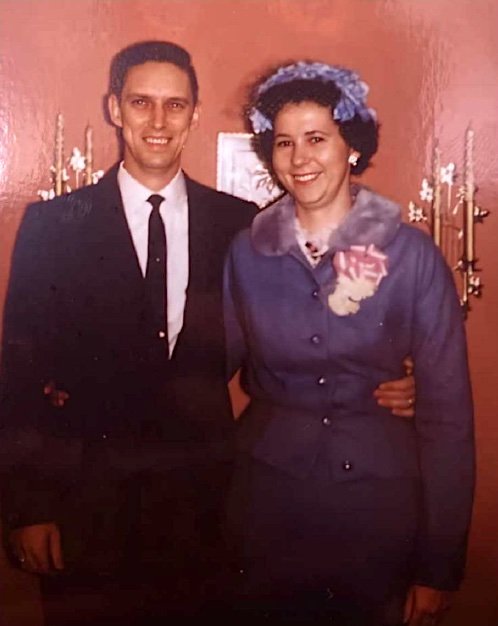

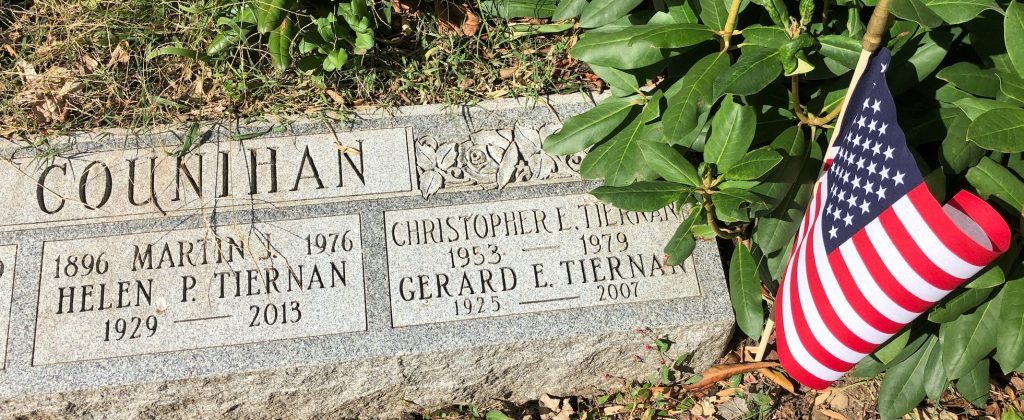
TINACCI, LOUIS LEONE (1918-2012). Assistant crew chief, flying personnel-pilot, Air Transport Command, United States Army Air Force. Louis was born to father, Gaetano Tinacci, and mother, Anna Tinacci. He had an older brother, Anthony (Tony) Tinacci, and a younger brother, Modesto (Morris) Tinacci. According to the 1940 census, the family lived on 1031 Bay Ridge Avenue in Brooklyn. Louis was 21 years old, had completed high school and worked 48 hours a week as an operator.
Tinacci registered for the World War II draft on October 16, 1940. He was 5′ ½” tall, 155 pounds, with gray eyes, brown hair, and a ruddy complexion. When he registered, he reported that he was living at 1031 69th Street in Brooklyn. By 1942, he was living on 86th Street. “Name Of Person Who Will Always Know Your Address” was listed as his father, Gaetano, who lived at the 69th Street address. Louis’s employer was Jenny Marino, and he worked at 655 5th Avenue in Brooklyn. He had worked as a sewing machine operator for four years. A graduate of Brooklyn Tech High School in 1941, he had received training in chemistry, machine shop, textile and garment design. He enlisted on March 10, 1941 as a private under the warrant office branch in Jamaica, Queens. He married Sadie Testa on July 17, 1943. He was discharged in December 1944 from the United States Army Air Force as a flying personnel-pilot, Air Transport Command.
Tinacci was injured in battle during the war. In November 1944, he was admitted to a hospital for treatment of injuries he had received to his spine and trunk. He was also suffering from limitations of motion. And, apparently he had suffered burns; he received skin grafts. He was discharged from the hospital in December 1944. In all, Louis served for three years. According to his Separation Qualification Record, his date of separation was December 17, 1945 at Valley Forge General Hospital in Phoenixville, Pennsylvania. He served as a private in Basic Training Infantry, Rifleman, Squad Leader, Duty NCO (noncommissioned officer), and as an airplane mechanic and engineer assisting the crew chief. He performed duties as a general mechanic, including maintenance work on army planes, inspecting aircraft and engines, and assisting during flights. By the time he was discharged from the 315th Air Transport Squadron, he had served in Normandy, Northern France and the Rhineland Campaign in Western Germany. He received a Good Conduct Medal, American Campaign Medal, World War II Victory Medal, and the EAME (European-African-Middle Eastern) Campaign Medal with three Bronze Battle Stars.
As per the 1950 census, Louis and Sadie were living in Brooklyn with their two young sons, Thomas (3) and John (1). Louis was working 48-hour-weeks as an operator in a women’s coat factory. Louis and Sadie Tinacci lived on 45 Bay 23rd Street, Apartment #1 in Brooklyn from 1993 to 2002. Sadly, Sadie passed away in 2003. Louis died at the age of 94. They are interred together. Section 129, lot 41724.
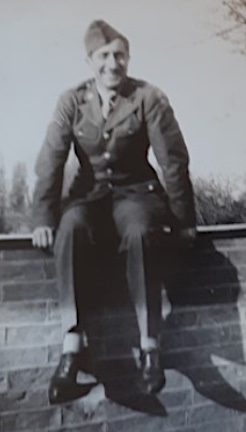
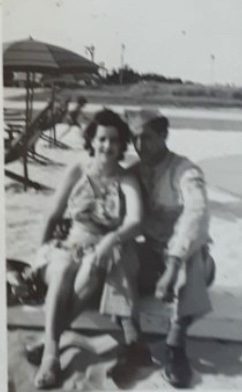
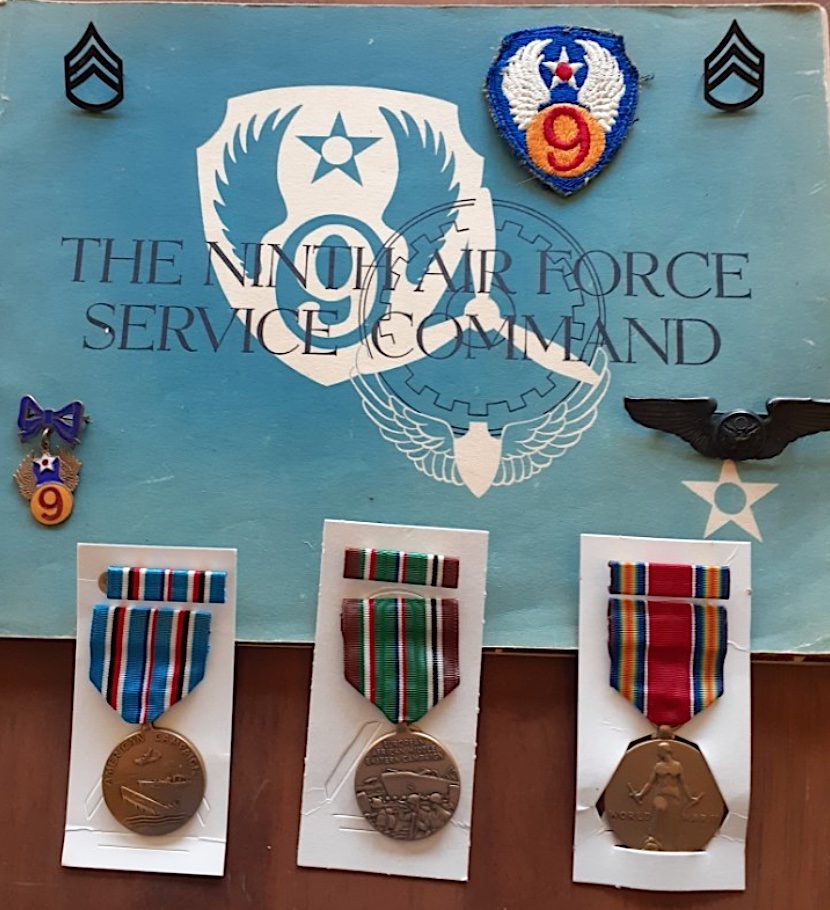
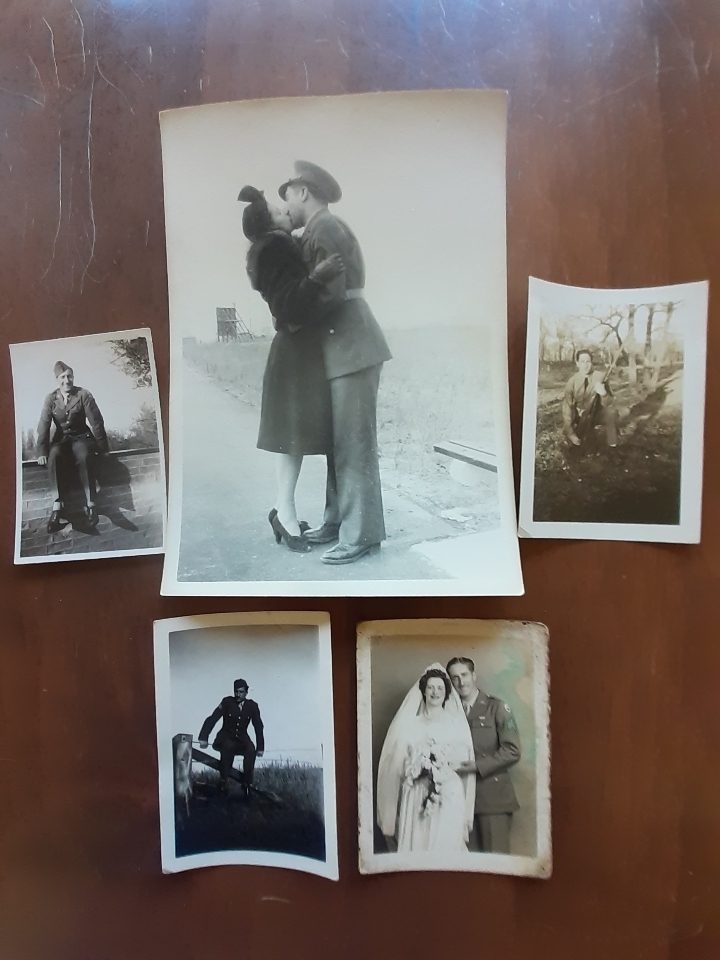
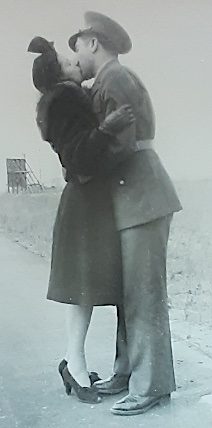
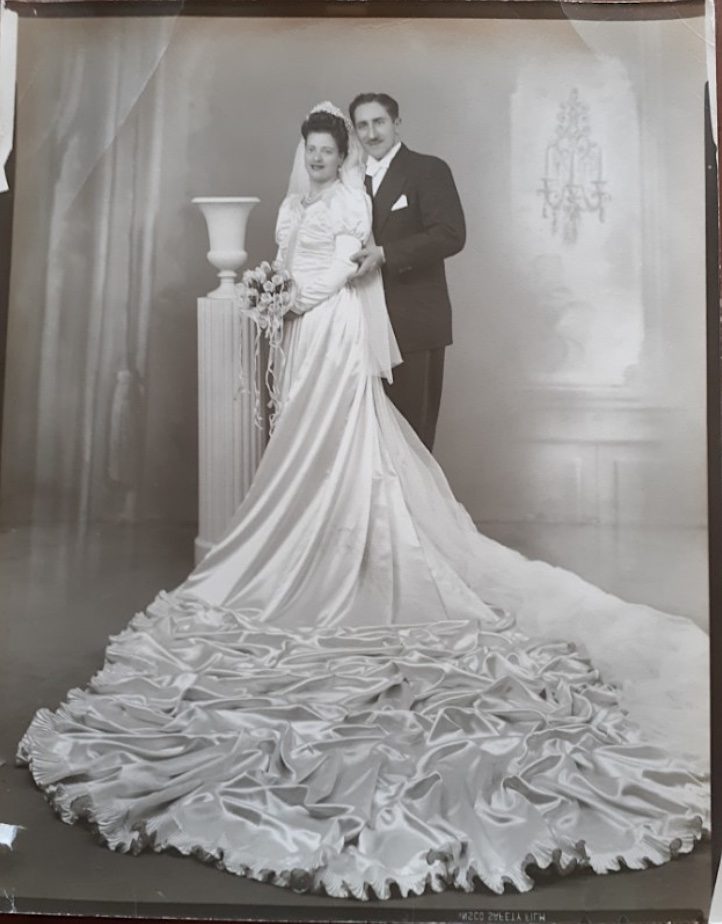
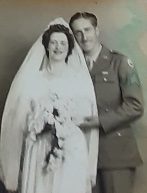
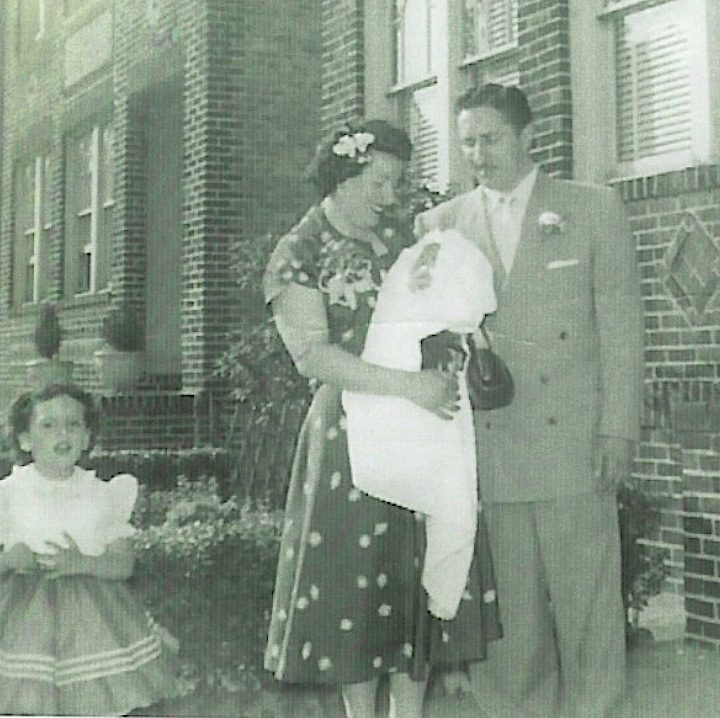
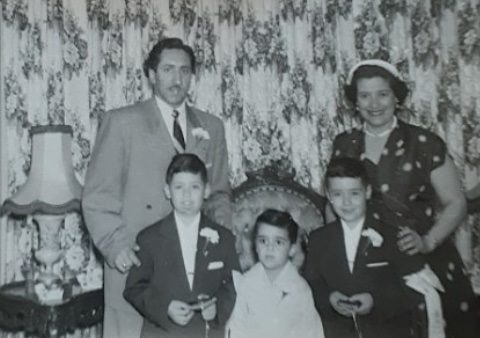
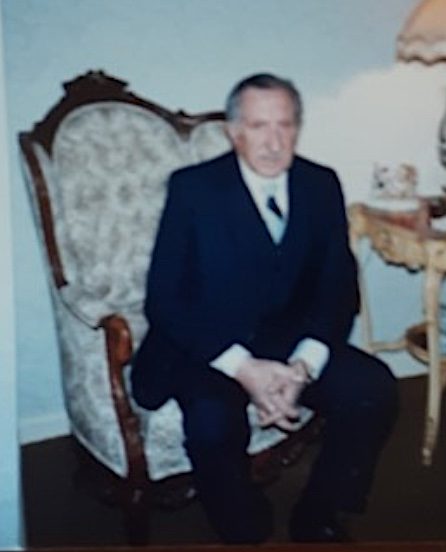
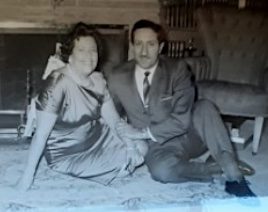
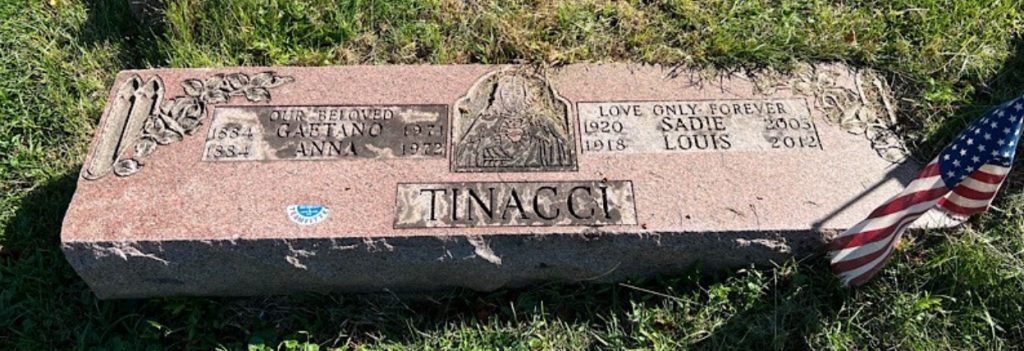
TOMASI, VINCENT (or VINCENZO) JAMES (1927-2003). Branch unknown, unit unknown, service unknown. Vincent was born to father, Carmelo Tomasi, and mother, Maria Grazia Tomasi (Romano), in Brooklyn. Both of Vincent’s parents were born in Italy. According to the 1925 New York State census, Vincent’s mother was Romana Tomasi. She was 24 years old. Vincent had two older siblings: Philipina, 2 years old, and Vincenza, 1 year old. By 1930, the family was living at 8424 17th Avenue. Vincent’s family lived at this address throughout his life. By the time he was 12 years old, Vincent has completed 7th grade and had two younger sisters: Isabel, 9 years old, and Josephine, 6 years old
According to his Work War II draft registration card, dated May 12, 1945, Vincent was 18 years old. He was 5′ 4″ tall, 124 pounds, with hazel eyes, brown hair, and a light complexion. His was listed as a student at the New York School of Printing at 461 8th Avenue in Manhattan. “Name And Address Of Person Who Will Always Know Your Address” was listed as Mrs. Elizabeth Romano, Vincent’s grandmother, who lived at 169 Sullivan Street. His daughter Marie reports that Vincent served as a private in the United States Army during World War II.
Tomasi married Kathleen McElroy in 1962. They had four children, Vincent C., David, Marie, and William, and four grandchildren. In his last address listed, he lived on 205 East 4th Street in Brooklyn. Section 206, lot 27211, grave 125.
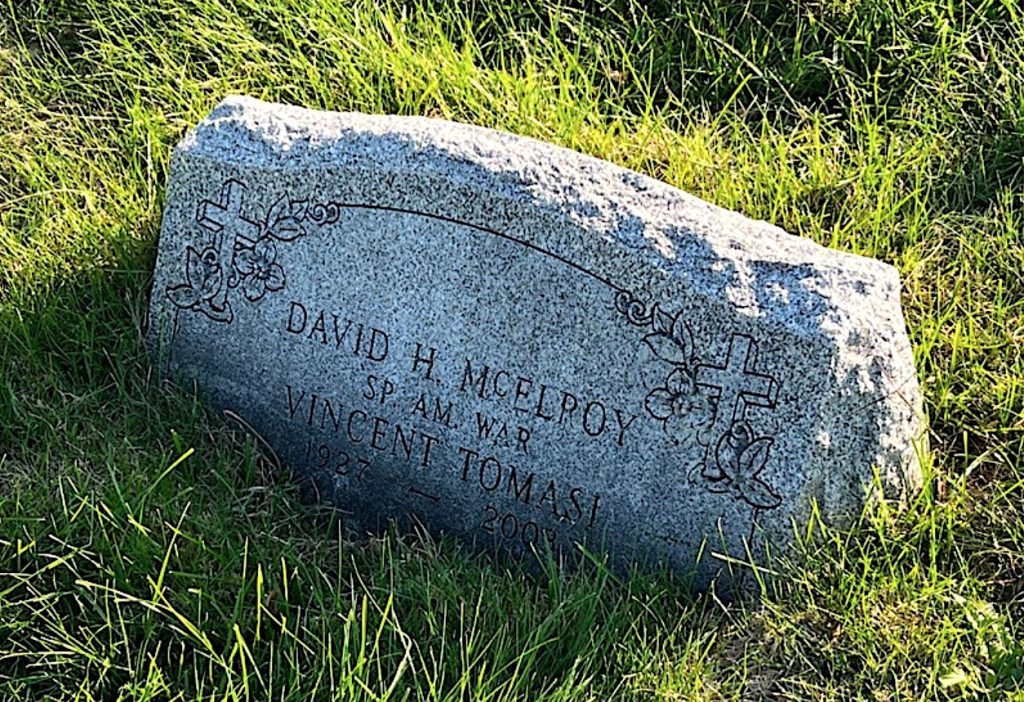
TOMBASCO, RAFAELLE A. (1922-2012). Sergeant, United States Army. Rafaelle was born in Vallo della Lucania, Salerno, Italy, to father Angelo Tombasco, and mother Maria Tombasco. His grandfather, Agostino Tombasco, remained in the “Old Country.” According to the “New York, U.S. Arriving Passenger and Crew Lists (Including Castle Garden and Ellis Island) 1820-1957” Rafaelle travelled from Naples, Italy, and arrived to New York City on the Conte Grande ship on May 18, 1931—with a final destination of Brooklyn. His father, as per that document, was already in the United States.
According to his World War II draft registration card, signed June 30, 1942, Rafaelle lived at 382 18th Street in Brooklyn. He was 19 years old, 5′ 5″ tall, 140 pounds, with blue eyes, brown hair, and a light complexion and worked as a railway brake inspector for the Brooklyn Navy Yard. “Name And Address Of Person Who Will Always Know Your Address” was listed as his mother, Maria Tombasco, at the same address. By the time he enlisted into the United States Army on December 14, 1942, in Manhattan, he had completed four years of high school.
Tombasco married Maria Longo in 1958 and as of 1978, lived at 279 19th Street, apartment A, in South Slope, Brooklyn. He passed away on December 30, 2012. His wife died the next year. He is memorialized at Green-Wood with a gravestone that identifies him as having served in the United States Army during World War II as a sergeant. Maria (listed as Mary A.) is memorialized on the same gravestone. Lot 39000, Arbor Yard, grave 275.
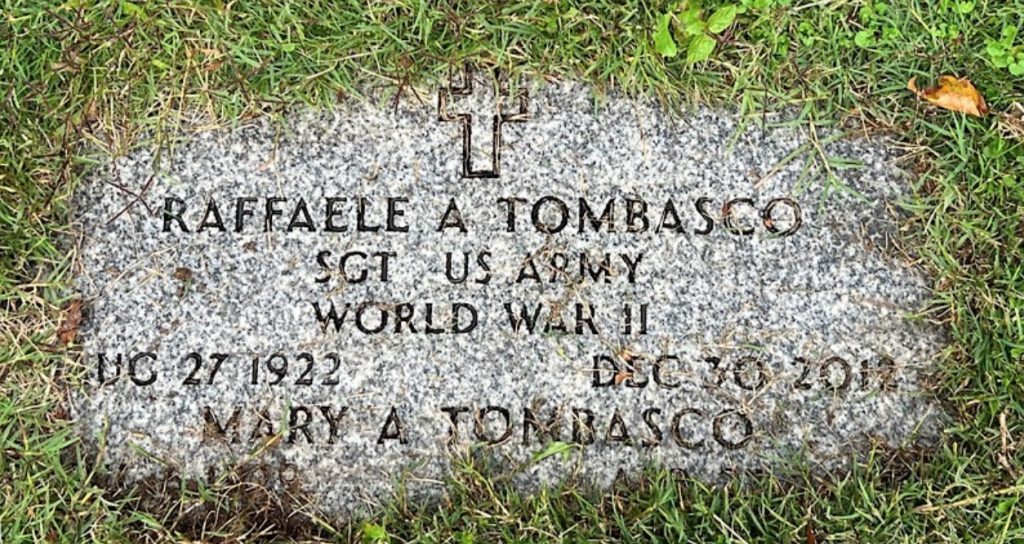
TROCCIOLA, EDWARD JOSEPH (1923-2017). Technical sergeant, 58th Fighter Squadron, United States Army Air Force. Edward was born in Brooklyn, according to the borough’s record of births, to Italian-born parents Pasquale, a “shoe laborer,” and Josephine. In the 1925 New York State census, two-year-old Edward is living on 72nd Street in a triplex owned by his father, with five older sisters. The other two units in the building were occupied by Edward’s uncle John and aunt Frances Trocciola, with their five sons and one daughter; his uncle Amadeo and aunt Christina Trocciola, with their three sons and one daughter; and his uncle Mario Trocciola. All the Trocciola brothers were shoe laborers. In that year, the Trocciola cousin count was nine boys and seven girls. By the time of the 1930 federal census, the count had risen to eight girls.
Edward Trocciola attended P.S. 259 in Brooklyn, according to his daughter Carol Kirrane. By the time of the 1940 census, 16-year-old Edward was reported still in school beyond the 8th grade. In 1942, a few weeks before his 19th birthday, Edward registered for the draft, listing his employer as Polarizing Instrument Company and signing his name as Eddie. He was described as 5′ 3½” tall, 123½ pounds, with black hair and a dark complexion.
Trocciola enlisted on January 23, 1943, according to his daughter. He served in the 58th Fighter Squadron of the Army Air Force. During World War II, the 58th participated in several operations in the Mediterranean Theater and in the China-Burma-India Campaign until the end of the war in August 1945, flying P-40 Warhawks, P-47 Thunderbolts, and P-38 Lightnings.
For his service, Trocciola received the Asiatic Pacific Service Medal, the Good Conduct Medal, and the World War II Victory Medal. He was discharged from service on December 13, 1945.
After his military service, his daughter reports, he worked for Caltro Trucking. Edward and Marie Masino received a marriage license in New York City on August 21, 1948. They are interred together. Section 69, lot 45400.
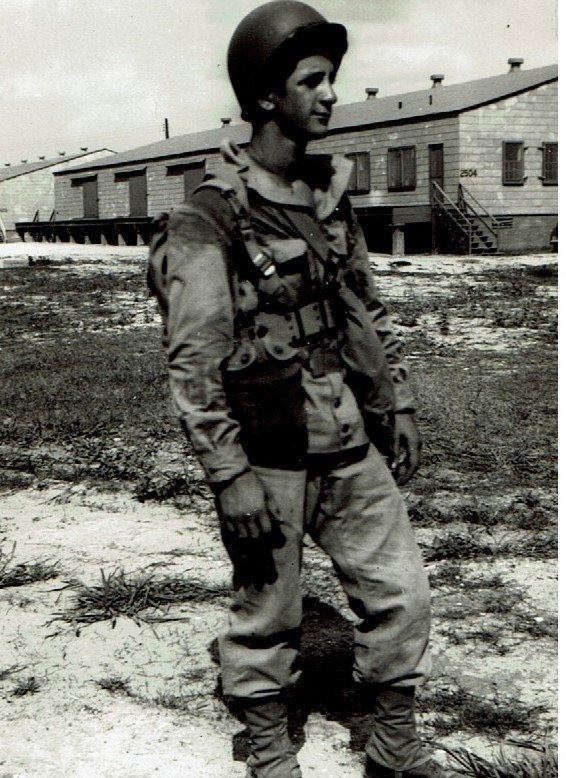

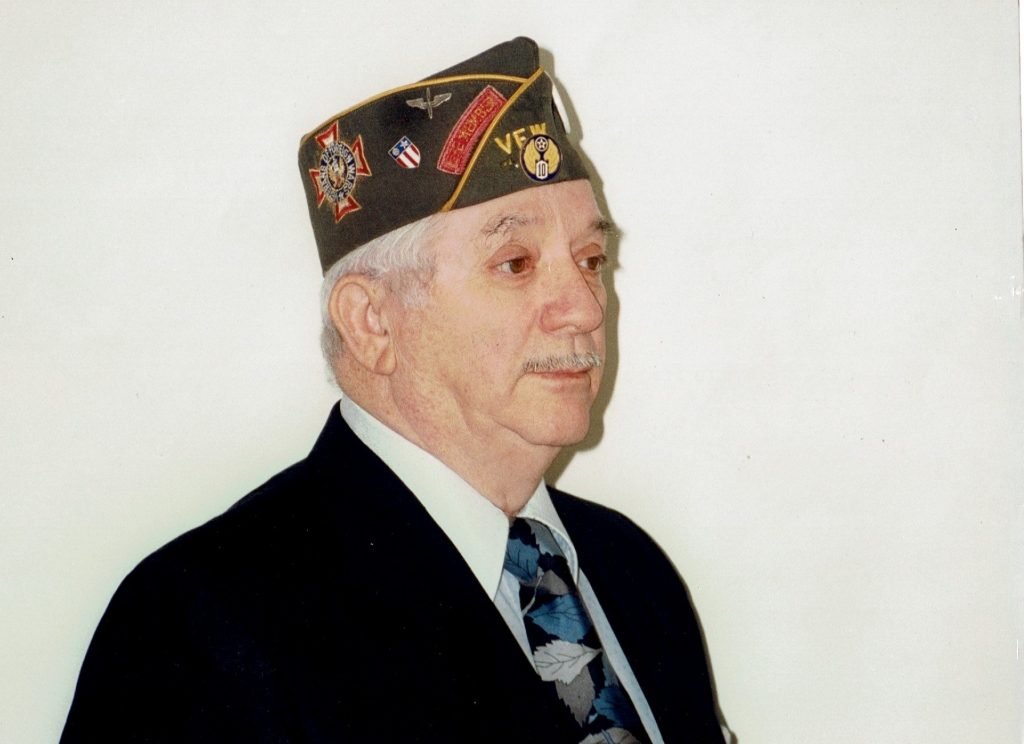
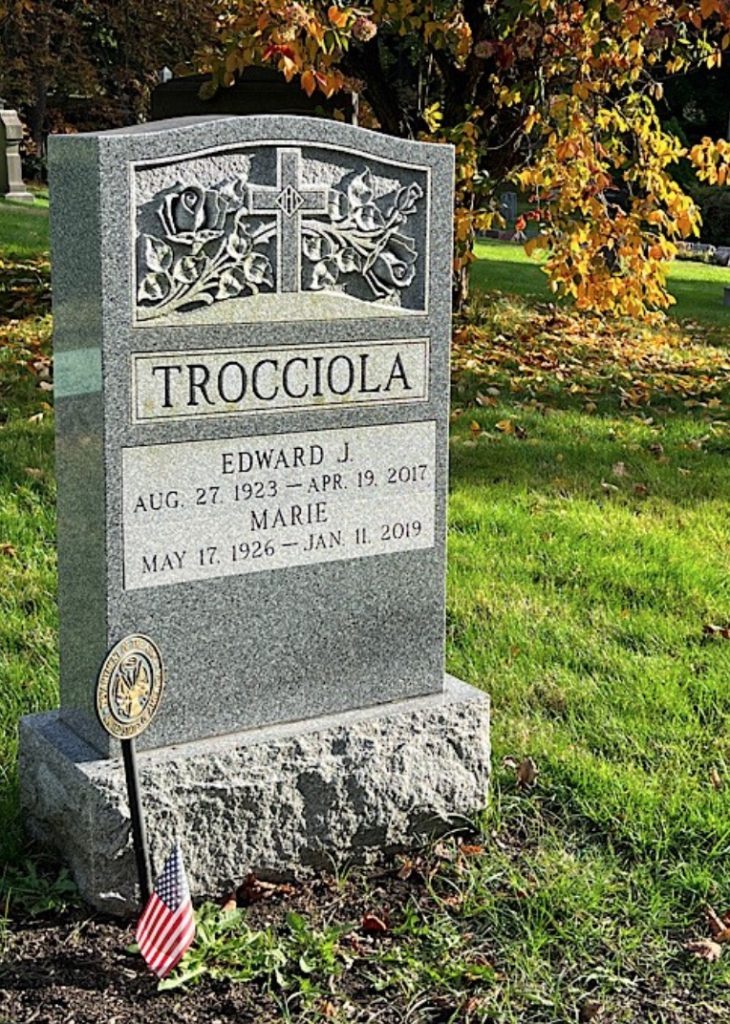
TROTTO, PHILIP B. (1917-2001). Second lieutenant, 101st Airborne Division, United States Army Air Force. Born in Manhattan to Italian-born parents Angelo and Anna Trotto, Philip was the third of seven children. According to the 1920 census, the family lived on Conover Street in Brooklyn and Philip’s father was a dock worker. By the time of the 1930 census, the family had a new address—68 Walcott Street, a house owned by Philip’s parents. His father, now a naturalized citizen, worked in the shipyards.
Trotto graduated from Brooklyn Industrial High School’s cabinetmaking program in January 1934. According to the 1940 census, he lived at home, along with all his siblings, and worked for a coffee company—probably his eventual employer, the Maxwell House division of General Foods in Hoboken, New Jersey, where he rose to the position of assistant foreman in the Shipping & Receiving Department.
Trotto registered for the draft in October 1940, at age 22. The name on his draft card is “Philip Bob Trotto,” and he is described as 5′ 10″ tall, 165 pounds, with blue eyes and brown hair. He was drafted into the Army in January 1941, and assigned to the 60th Infantry Regiment, 9th Infantry Division, for basic training.
In February 1942, as a sergeant, he was part of a cadre that reactivated the 82nd Infantry Division. He was instrumental in the rapid development of the men in his platoon and was promoted to first sergeant in July 1942. In August 1942, the 101st Airborne Division was created from a part of the 82nd Infantry Division and his rifle company became Battery B of the 81st AA/AT Battalion, a glider antitank battery. As per his son, he participated in the D-Day invasion of Normandy, landing in a glider behind Utah Beach at 4:00 a.m. on June 6, 1944. His battery had a scattered landing and he rapidly rounded up small groups of its personnel and their antitank weapons under heavy enemy small-arms and mortar fire, safely leading them in the darkness over strange terrain to their assembly area in Heisville, France. His battery lacked both executive and reconnaissance officers; he assisted the battery commander in these duties throughout the Normandy Campaign. He participated in the successful attack on Carentan, France. He also rode a glider into Holland (the Netherlands) during Operation Market Garden and was part of the defense of the town of Bastogne during the Battle of the Bulge.
Trotto participated in the airborne invasion of Holland in September 1944, landing in a glider in the vicinity of Zon, Holland. Again, as a result of scattered glider landings, he assembled small groups of men and equipment into one fighting unit and immediately committed them to the defense of the Zon Bridge under heavy enemy shelling and small-arms fire. He participated in vital engagements with the enemy at St. Oedenrode, Veghel and Dodewaard, Holland. During the defense of Bastogne during the Battle of the Bulge, due to the absence of an officer, he was put in charge of an antitank platoon. His platoon, attached to a parachute infantry regiment at Bisory, Belgium, and in the vicinity of Nouvelle, Belgium, was instrumental in preventing enemy armor and infantry attacks headed for Bastogne. He remained in command of the antitank platoon until the end of the war in Europe. On June 6, 1945, he was commissioned as a second lieutenant. He received the Bronze Star for his actions during World War II.
After separation from the Army in September 1945, he returned to his position at Maxwell House and later went on to become a foreman at Greene Wolf Plumbing Supply and later Davidson Pipe Supply, until his retirement in1984. His career would be interrupted for a few years in the early fifties, when he suffered from PTSD (then called “battle fatigue”).
In April 1946, he married Marie Castelluccio and they had two sons: Angelo, born in October 1947; and Philip, born in May 1950. He had two grandchildren: Mark, son of Philip and Eileen; and Cassandra (“Cassie”), daughter of Angelo and Marie. Section 12, lot 40396.
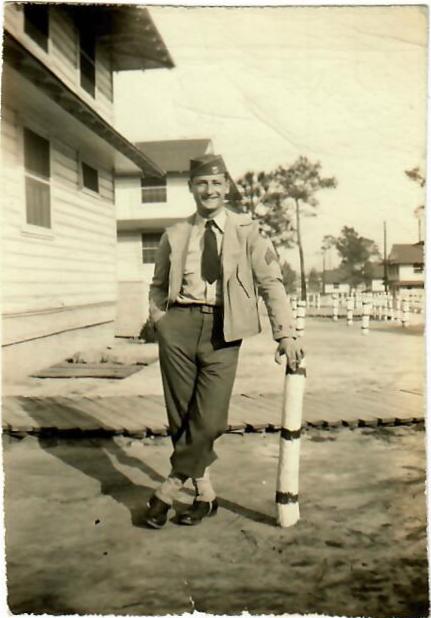
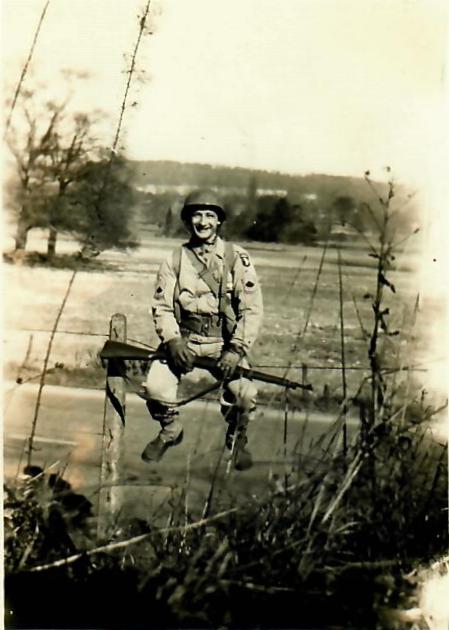
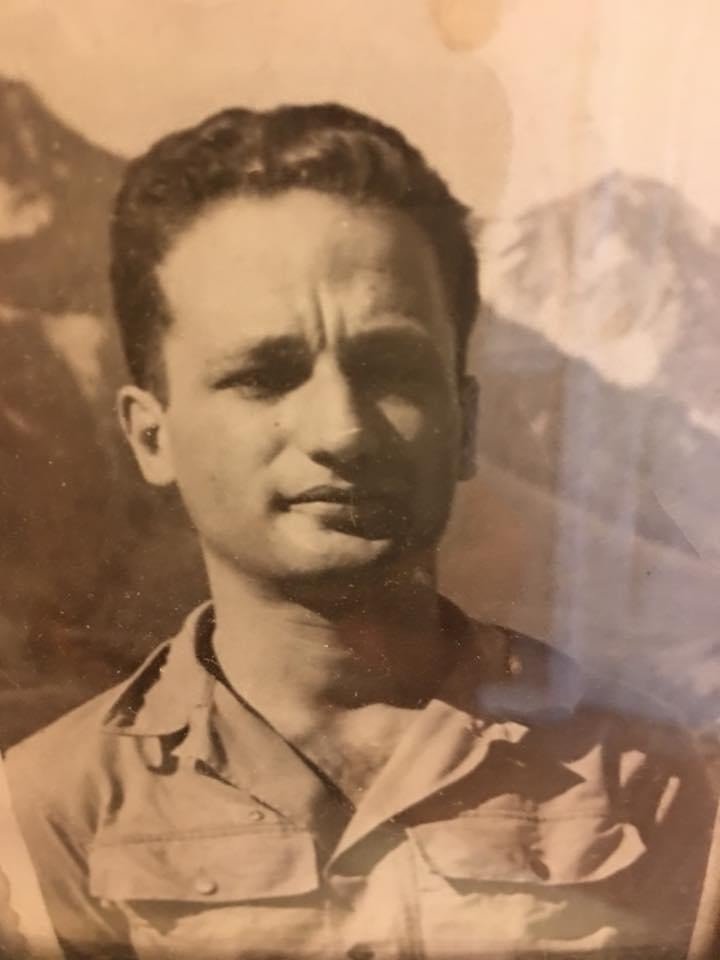

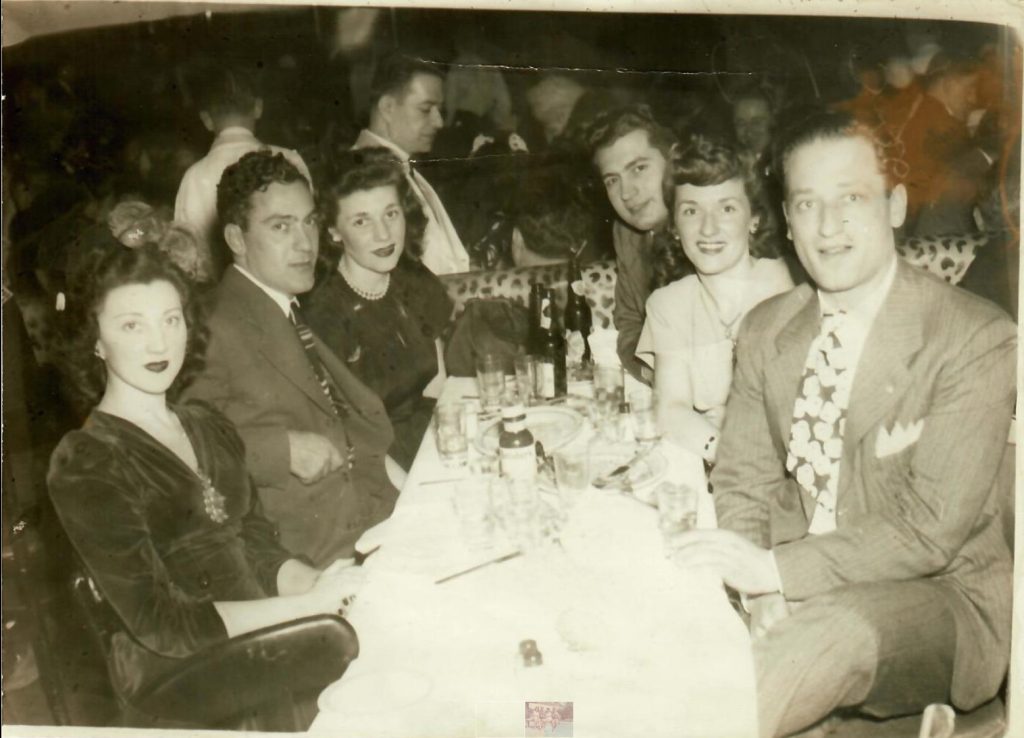
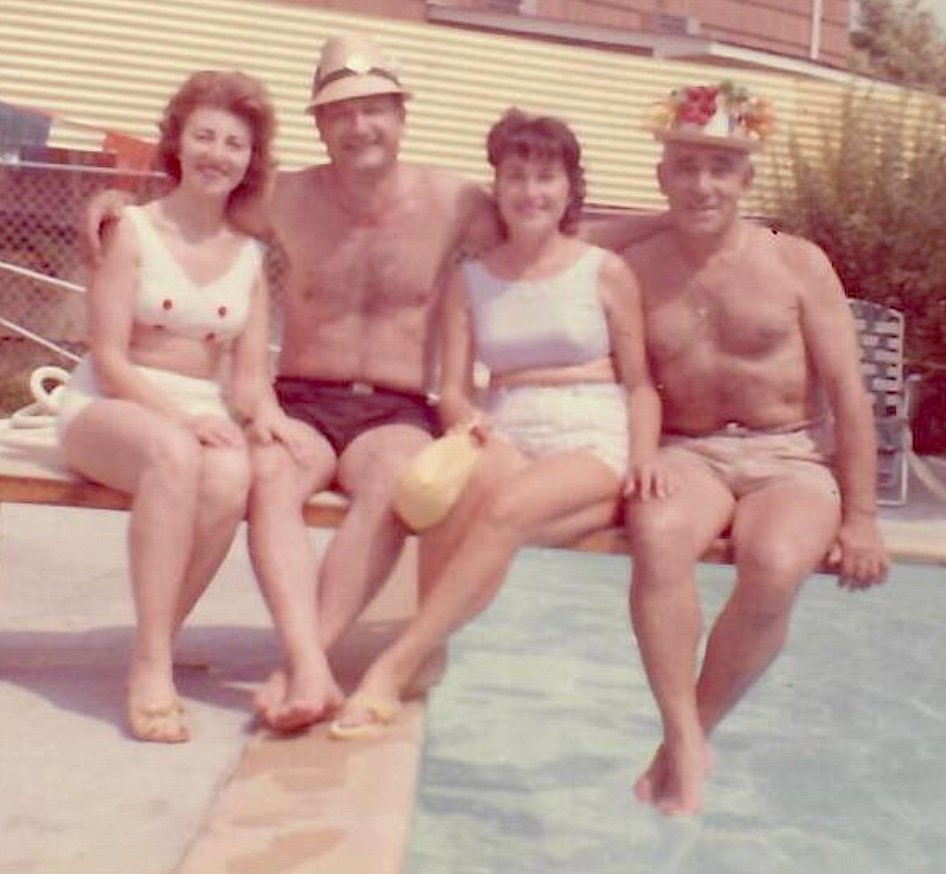

UNZ, RITA S. (1918-2014). Corporal, Women’s Army Corps, United States Army. Born Rita Strittmatter in East Carroll Township, Pennsylvania, she was raised on a farm, which her family still operates, now as a truck farm. The family included her father, F. J., mother Matilda, and seven siblings. She first appeared in the 1920 census and was recorded as 11 years old by the 1930 census. The 1940 census recorded that Rita was living in Queens, New York, with her younger brother and married older sister, and that she and her brother were working at a retail drug store, she as a clerk typist. On March 13, 1943, at the age of 23, Unz (then Strittmatter) enlisted with a rank of aviation cadet as part of the Women’s Auxiliary Army Corps (WAAC), Inactive Reserve.
In July 1943, President Franklin D. Roosevelt signed a bill declaring the Women’s Army Corps (WAC) officially part of the United States Army. This meant that WACs could serve overseas and they or their families would be given benefits if wounded or killed in service. WACs would also receive rank and pay equal to that of men in the regular Army. Rita served in England and perhaps other parts of Europe. She was in England on D-Day and was awarded six battle stars for her service during the war.
After World War II, WAC personnel quickly demobilized. According to passenger lists from the Queen Mary, in October 1945 Rita and her unit arrived at an Army separation center at Fort Dix, New Jersey, by way of Le Havre, France, and Southampton, England. She is listed as a corporal WAC.
Five years later, she was the first WAC reservist to apply for active duty at the outbreak of the Korean War. Returning to civilian life after the Korean War, she worked as a legal secretary and was an active member of the Bay Ridge Historical Society. She married her first husband, Wiliam Godet, sometime after 1950. He died in 1981. Known by then as Rita Godet, at the age of 63 she married Ernest Unz.
Rita Unz died in Bay Ridge in 2014, at the age of 95. Her obituary in the Johnstown, Pennsylvania Tribune-Democrat notes that she lived independently until the end of her life, and was survived by her younger brother. It also confirms her service as a WAC during World War II and her re-enlistment during the Korean War. Section 13, lot 44217.
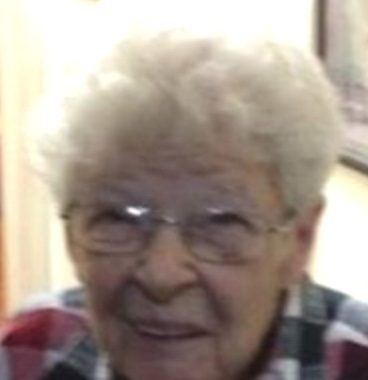
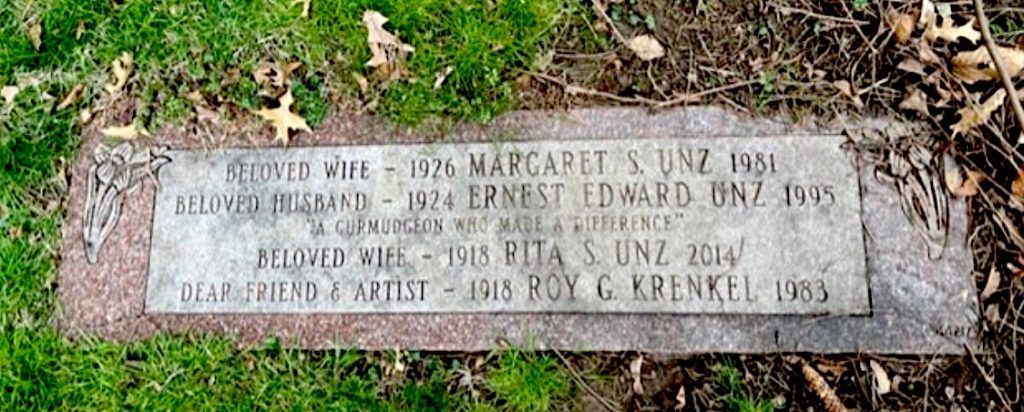
UOTILA, OTTO OLAVI (1923-1944). Second lieutenant, United States Army Air Force. Otto was born to mother Anna Uotila (Malkonen), and father Otto Uotila (pronounced Vodola), in Manhattan. According to the 1930 federal census, at age 6, Otto was living at 2085 Lexington Avenue in Manhattan with his mother as lodgers. Both of his parents were born in Finland, and his father had returned to Finland some years earlier. At age 11, on October 5, 1934, Otto had returned to New York aboard the Kungsholm from Gothenburg, Sweden.
By the time he was in high school, Otto and his mother had relocated to West Islip, Long Island. At the age of 19, Otto registered for the World War II draft on June 30, 1942, at local board 703 in Bay Shore, New York. He lived at 35 Willoughby Avenue in West Islip with his mother and listed himself as unemployed. He described himself as 5′ 7″ tall, 148 pounds with blue eyes, brown hair, and a light complexion, Otto completed school in West Islip and graduated from Babylon High School in absentia in June 1943. He had successfully completed the United States Army Air Forces Advanced Flying School training at Williams Field in Chandler, Arizona, and was commissioned a second lieutenant. He was then sent to California and became a pilot.
Sadly, on August 22, 1944, while in Santa Barbara, California, the plane Uotila was riding on crashed into a farmer’s field in heavy fog and he was killed at the age of 21. The plane was not flown by Otto, but by an experienced overseas pilot. Three others were killed in the crash. Section 129, lot 37195.

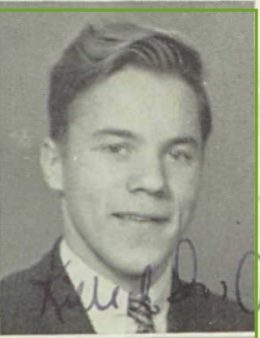
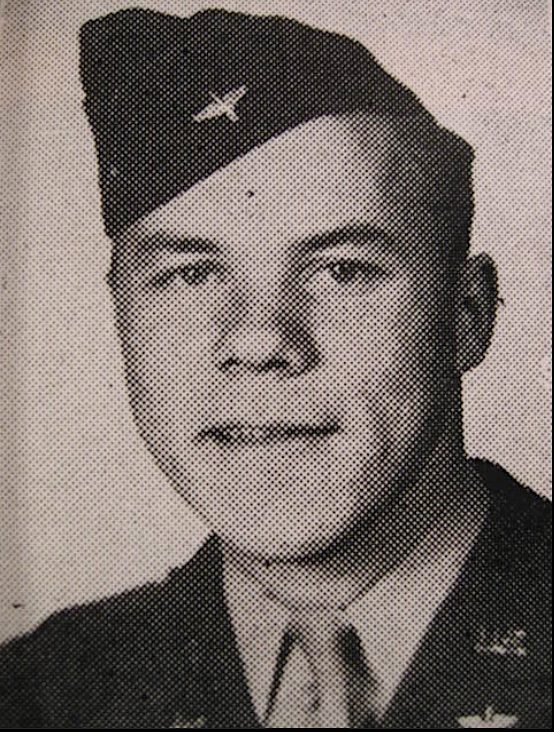
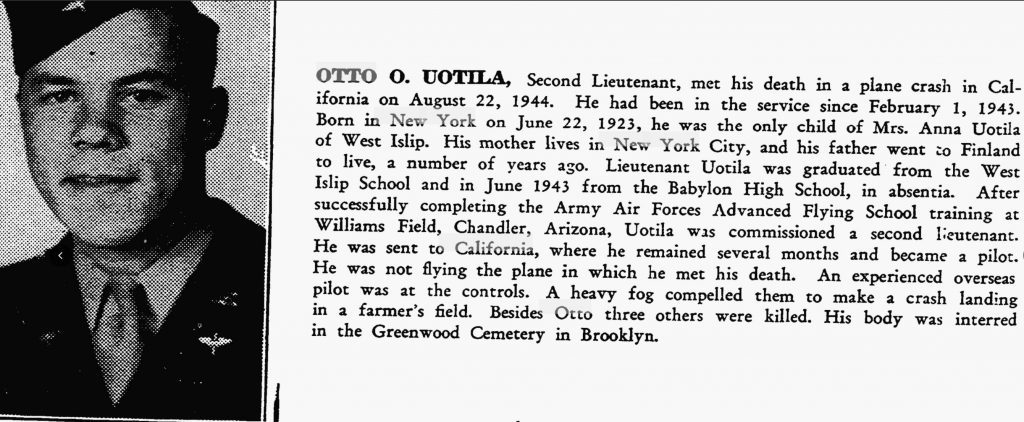
VACANTE (or VICENTE, VICANTE), JOSEPH (1925-1993). Tec 5, 375th Ordnance Heavy Automotive Maintenance Company, United States Army. Vacante was born in Brooklyn to Italian-born parents, Frank and Alfia (also spelled Alfera and Alfreda on other documents). The 1930 census reports that his family was living at 448 Hicks Street in Brooklyn and that he had three older brothers- Salvatore, 15; Gaetano, 13; and Charles, 11. By 1940, the family, spelled Vicente on that census, was living at 436 Hicks Street, Joseph had completed one year of high school and the household included the parents, and his brother, now known as Thomas, as well as Thomas’s wife Rose.
As per his draft registration card, filed on March 22, 1943, Joseph still lived at 436 Hicks Street in Brooklyn and listed his mother, Alfreda, as his next of kin. At that time, Vacante worked at Chelsea Vocational High School in Manhattan. He described himself as 5′ 8″ tall, 138 pounds, with brown eyes, black hair and a ruddy complexion. His Army enlistment record, dated July 6, 1943, reports that he was single, had a grammar school education and had the rank of private.
According to his separation qualification record, Vacante entered active service as a private on July 27, 1943. He first served in basic training for three months as a private with the Coast Artillery Corps. He then was an automotive mechanic for one month. That record shows that Vacante was promoted to tech 5 as a truck driver (light) for 16 months and then as a special vehicle operator for 12 months. In addition, the document details that as a tech 5 truck driver (light), Vacante served with the 375th Ordnance Heavy Automotive Maintenance Company in France where he drove a 2½ ton G.M.C. truck hauling supplies, equipment and personnel. He drove over all types of terrain and under blackout conditions making minor repairs himself using small hand tools, when necessary. In addition, he drove 4-ton trucks and a 10-ton wrecker. As per his son, his father was a Normandy Beach on D-Day, June 6, 1944.
On April 4, 1946, a day before his official separation, he made a request at Fort Meade for a Soldiers Medal for actions on the first Friday in February 1946 when he put out a fire on a truck before the Fire Department arrived, saving the lives of 18 men. He was honorably discharged on April 5, 1946 at Fort George G. Meade in Maryland.
On December 7, 1947, Vacante married Prudence (or Providenza, Providence) Ippolito in New York City after obtaining their marriage license a month before on November 8; they had three children. At the time of the 1950 census, Joseph and Prudence were living in Brooklyn and he was not employed; that census spells his surname as Vicante. As per his son Joseph, his father worked for Eastern Airlines for 43 years.
His obituary in the New York Daily News, notes that Vacante was survived by his wife, Prudy, and his children Freda, Ann Marie and Joseph. He was waked at Cobble Hill Chapels at 171 Court Street in Brooklyn. A Mass of the Resurrection took place at St. Francis Xavier Roman Catholic Church in Brooklyn. He last lived in Brooklyn. Section 81, lot 43781.
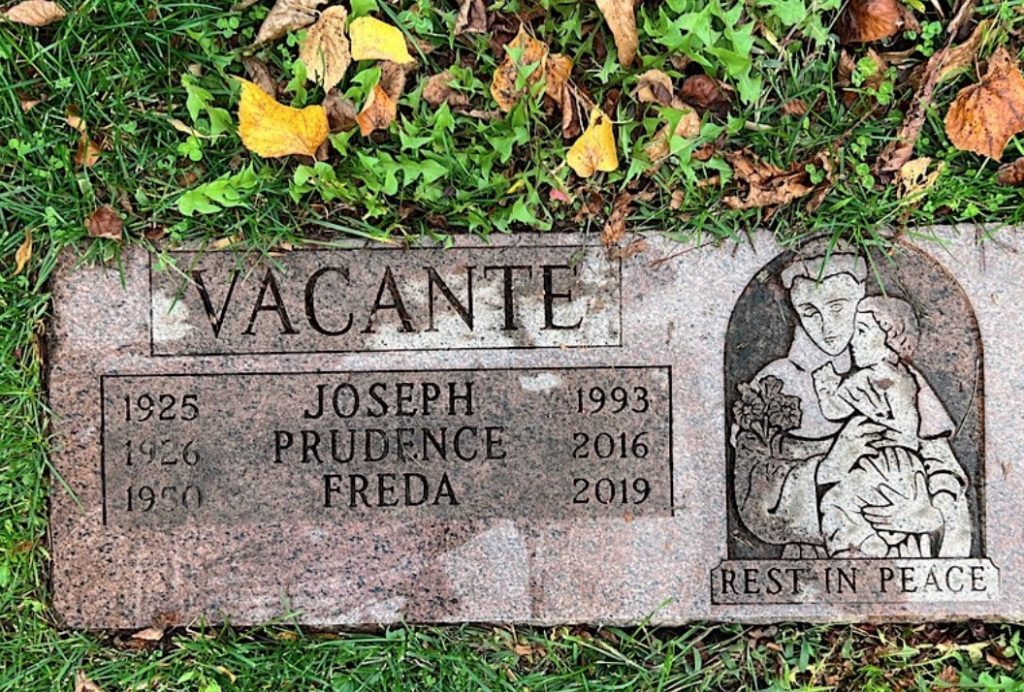
VACCARO, JOHN (1919-2010). United States Navy. John was born in Scranton, Pennsylvania, to Cosmo and Angelina Vaccaro. His father and mother were both born in Italy. According to the 1920 federal census, Cosmo worked in a bakery and Angelina was a homemaker. They were listed at the time as registered aliens. John had an older sister, Mary, and before the year was out, another sister, Johanna, would join the family. By the time of the 1930 federal census, the Vaccaro family had moved to Brooklyn. The three children were all attending school, and Cosmo was working for the railroad. Ten years later, the federal census reported that everyone in the family except Johanna was employed and living on Homecrest Avenue, in a home owned by the family. John, having completed “elementary school” (possibly through the eighth grade), worked as a machine operator.
In October 1940, 21-year-old John registered for the draft. His registration card describes him as 5′ 8½” in height, weighing 135 pounds, with brown eyes, black hair, and a sallow complexion. His employer was Schrader and Son, on Atlantic and Vanderbilt Avenues in Brooklyn. John listed his mother, Angelina, as the person who would always know his whereabouts.
On December 1, 1941, John enlisted in the New York Guards, Company C, 13th Regiment, of Brooklyn, just before war was declared. He was separated from the Guards two months later, on February 10, 1942, for failure to attend drills. It isn’t clear when John entered active service, as his records are missing, but his obituary notes that he was a Navy veteran.
After the war, John married Pauline Morello in 1948. The couple had one daughter, Regina Maria Vaccaro, born in May 1953. John worked for the Post Office as a letter carrier. In 1958, John was pictured in the Greenpoint Weekly Star, making the first contribution to the Brooklyn March of Dimes campaign. Four-year-old Regina Maria is also in the photograph; she is wearing a brace on one leg, possibly the result of contracting polio during the lengthy epidemic in the United States in those years. Regina Maria was going to be the Grand Marshall in the Mothers’ March on Polio of that year.
John lived to the age of 90 and died in 2010, survived by his wife, daughter, and younger sister. Section 197A, lot 39453.
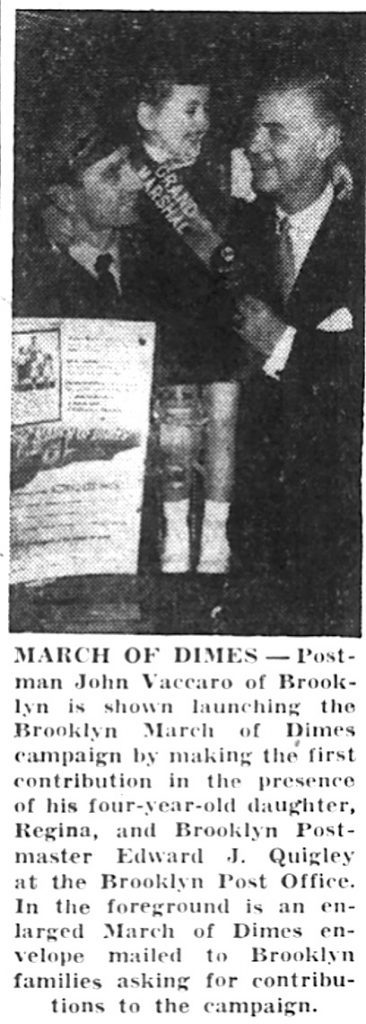
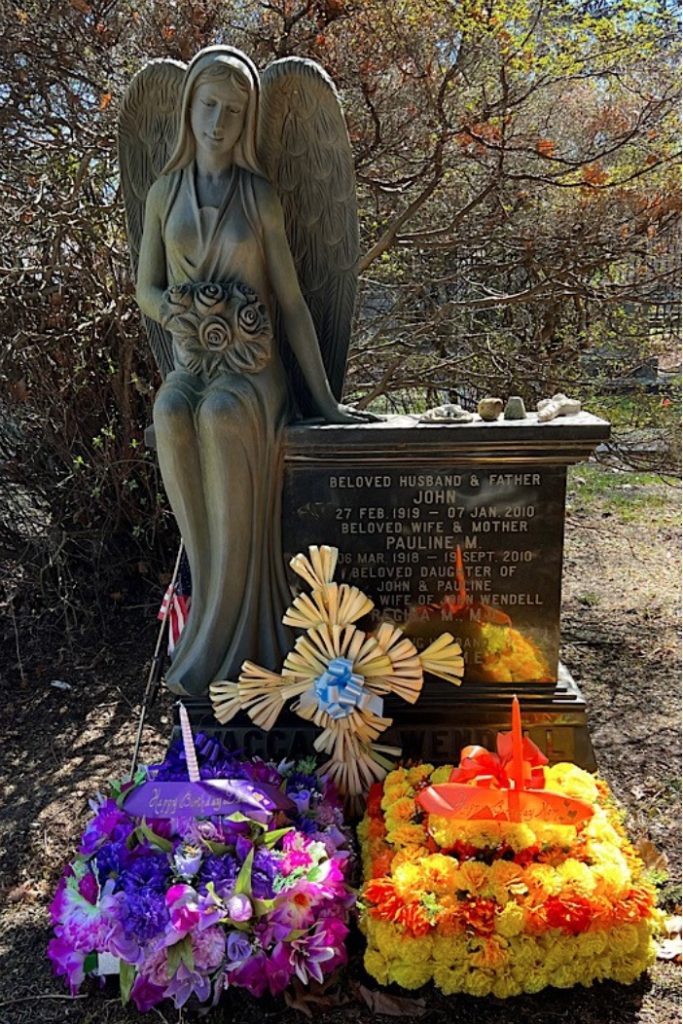
VALENTI, THOMAS (or GAETANO) A. (1916-1985). Rank unknown, unit unknown, United States Army. The 1920 census reports that four-year-old Thomas Valenti, born in New York City, lived with his parents, Giovanni and Theresa, both born in Italy, his brothers Salvatore and Frances, and sister Sebastina at 121 Elizabeth Street in Manhattan. An uncle also lived at that residence with his wife and three children. Thomas’s name was recorded as Gaetano, his Italian name. His father worked as a longshoreman. According to the 1930 census, Valenti’s father, now known as John, was employed as a subway worker. By 1940 Thomas’s father, again listed as the head of the family, was employed as a dock worker. The 1940 census states that Valenti, now 23 years old, was also employed as a dock worker.
Valenti’s World War II draft card, signed in October 1940, states that he had his own business, located on Forsyth Street on the Lower East Side. It lists his father as the “Name of Person Who Will Always Know Your Address.”
On November 3, 1941,Valenti and his wife-to-be, Fortunata (Fay) DeBella, registered for a marriage license before Valenti’s service in the United States Army began. He enlisted on April 22, 1942 and was discharged on October 25, 1944. There is no information regarding his rank, unit, or where he was stationed during the war.
Valenti and his wife had three children, John, Thomas, and Theresa. According to his United States Department of Veteran Affairs death file, he passed away in Brooklyn. His last residence, as recorded by the Public Records index, was a three-story home at 125 28th Street in Greenwood Heights, a neighborhood adjacent to the western edge of Green-Wood Cemetery. Yard, lot 39000, grave 1080.
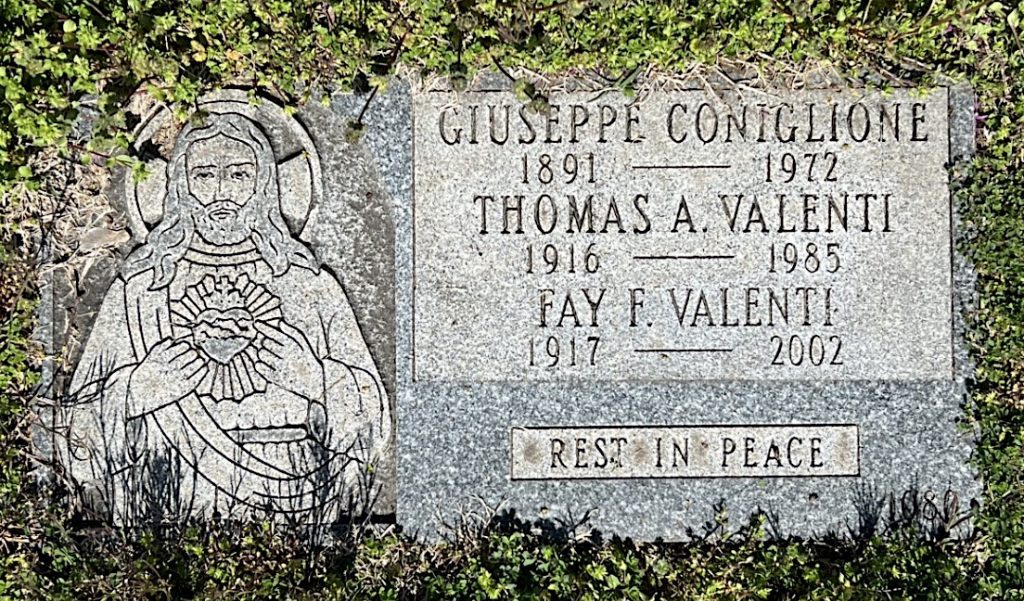
VAN PELT, CHARLES EDWARD (1919-1994). Radioman second class, United States Navy. A Brooklyn native, Charles lived with his parents and 19-months-older sister, Marion, on Garnet Street, according to the 1920 census. His father, Tunis, was working as a teamster/truckman, and his mother, Rebecca, was a homemaker. By the time of the 1930 federal census, the Van Pelt family had grown by four more children. Tunis was employed on the docks as a laborer and all six children were in school. The census noted that the household had a radio. In 1940, the federal census listed Rebecca Van Pelt as married, but head of the household at 373 7th Avenue. Tunis was not living with the family. Twenty-one-year-old Charles had left school after the 8th grade and was working as a longshoreman in a shipyard.
Later in 1940, Charles registered for the draft. His registration card described him as 5′ 5½” in height, weighing 150 pounds, with blue eyes, brown hair, and a ruddy complexion. He enlisted in the Navy on September 24, 1942.
According to Navy reports, Charles was transferred in the spring of 1943, from the USS Laramie, an oiler on a circuit from Boston to Greenland, to the USS Hale, a newly commissioned destroyer bound for the Pacific Theater. His service occupation and rank was radioman 3rd class. In September 1944, Charles was transferred from the Hale to the USS Duluth, a brand-new light cruiser sailing from Newport, Rhode Island, to the South Pacific. After the formal surrender of Japan in Tokyo Bay, the Duluth steamed to Seattle, where Charles was ultimately discharged from the Navy, most likely before January 1946.
In September, 1946, Charles obtained a marriage license in Scranton, Pennsylvania, with Catherine Laubenheimer, also of Brooklyn. He was 27 years old, and she was 32 years old.
In the 1950 federal census, however, Charles was apparently living at home with his mother, Rebecca, and brother William. Rebecca was listed as “separated,” and Charles as “never married,” and unemployed. Only William, also “never married,” was working.
At the time of his death, Van Pelt had been living in the village of Wurtsboro, in Sullivan County, New York. His first cousin, also named Charles Van Pelt (see), was an Air Force veteran; they are interred in the same lot. Section 62, lot 12695.

VAN PELT, JR., CHARLES EDWARD (1929-1993). Private, United States Air Force. Charles was born in Brooklyn in 1929, the second child of Charles Van Pelt Sr., and Mildred Hamilton Van Pelt. According to the 1930 federal census, the young family lived on Third Avenue in Brooklyn, Charles Sr. worked as a chauffeur for a trucking company, and Mildred was a homemaker. By the time of the 1935 New York State census, the family had moved to 392 Hamilton Avenue. In 1940, according to federal census data, the family had four children: Margaret, the oldest; Charles Jr.; and two younger sisters. Charles Sr., who was looking for work as an auto mechanic, had completed the 5th grade in school, and Mildred had completed the 8th grade.
In July 1946, according to an article in the Brooklyn Daily Eagle, Charles and 16 other Brooklyn men enlisted in the Army.
The 1950 federal census listed Charles as living at home with his parents and two youngest sisters (a fifth child was born in 1941). He was counted as unemployed and looking for office work. The U.S. Department of Veterans Affairs, however, records Charles as enlisted in the Air Force until February 1953.
Charles died in December 1993, at the age of 64. Although his headstone lists him as a veteran of World War II as well as Korea, the date of his enlistment makes the first of those impossible. He may, however, have been stationed overseas during the Occupation that followed World War II. He is buried in Green-Wood along with his parents and his first cousin, also named Charles Edward Van Pelt (see). Section 62, lot 12695.
VERSACE, ROCCO (1919-2010). Staff sergeant, 636th Quartermaster Laundry Company, United States Army. Versace was born to Rosario Versace and Antonia Fedele in Bagnara, Italy. He had a grammar school education. At the age of 16, in October of 1935, he arrived in New York on the SS Rex from Naples, Italy. On the passenger and crew list from the ship, it states that his intent was to reside in the United States permanently and become a citizen. A former farmhand, he set off to 58 Sackett Street in Brooklyn where his father resided.
Five years after he arrived in the United States, his draft registration card reported him working for Moore-McCormack, a shipping line, at Pier 15, resting at the base of Montague Street in Brooklyn. He was living at 66 President Street during this time. This document also records him at 5′ 5″ and 150 pounds with brown hair, brown eyes, and a light complexion.
Versace enlisted in the United States Army on October 20, 1942. The enlistment record states that he was working as a longshoreman, presumably still for Moore-McCormack. The unit that Versace belonged to, the 636th Quartermaster Laundry Company, had served a vital role in World War I by providing laundry services and salvage work. Surprisingly, the military did not previously provide laundry services; this was a significant health hazard as lice were rampant and infectious. During World War II, the Quartermaster Laundry Company’s duties expanded to include more field services such as clothing repair and delousing.
Versace served in nine countries with his unit, including France (Normandy), Germany (Ehrang), the Philippines (Taal Luzon Island), and Japan (Yokohama). Fighting and performing services in different theaters resulted in distinct challenges, and the Pacific Theater was particularly challenging. Versace is seen photographed at the Imperial Palace in Tokyo, Japan. A decorated staff sergeant, Versace received five commendations: the American Service Medal, Asiatic-Pacific Service Medal, European-African-Middle Eastern Service Medal, Good Conduct Medal, and the Philippines Liberation Ribbon.
During his service, Versace petitioned for naturalization. With his fellow United States Army soldiers as witnesses, he signed the affidavit on December 6, 1944. He was 25 years old. When he returned to the United States from Genoa, Italy, in 1946, following his service, he was a United States citizen. At that time, the 27-year-old returned to his address at 66 President St. in Brooklyn.
In the days following his homecoming, Versace married his fiancée Nancy Iaria. Nancy was born to Italian parents as well and lived in Brooklyn. Versace lived in Brooklyn for the rest of his life. John Morreale, his grandson, relates that Versace worked as a longshoreman for 40 years. Living to the age of 90, he was predeceased by his wife, Nancy in 2005, who is interred with him. Morreale notes that his grandfather’s burial at Green-Wood included military honors. Section 149, lot 44608, grave 435.
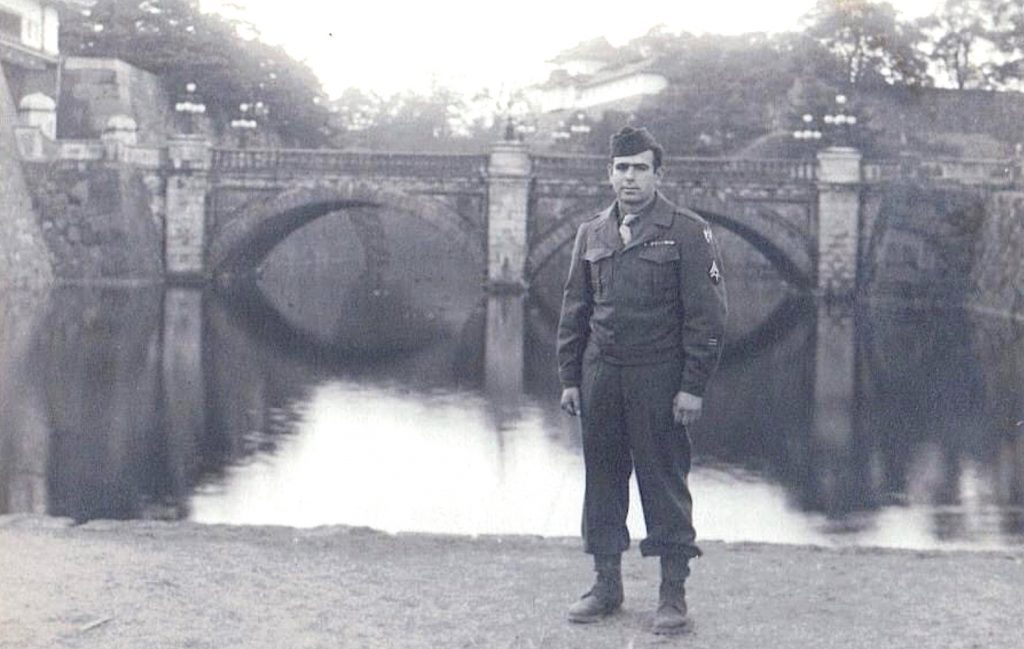
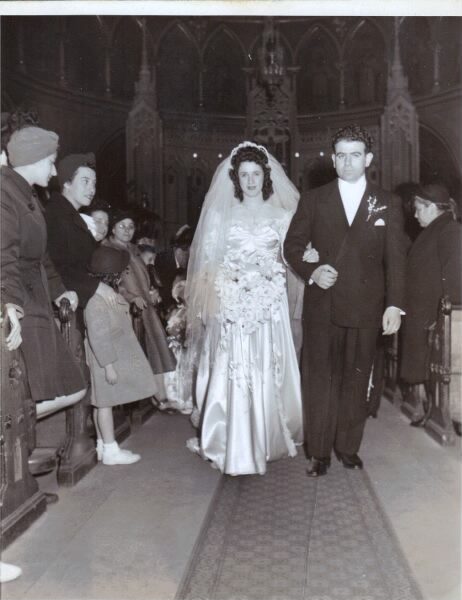
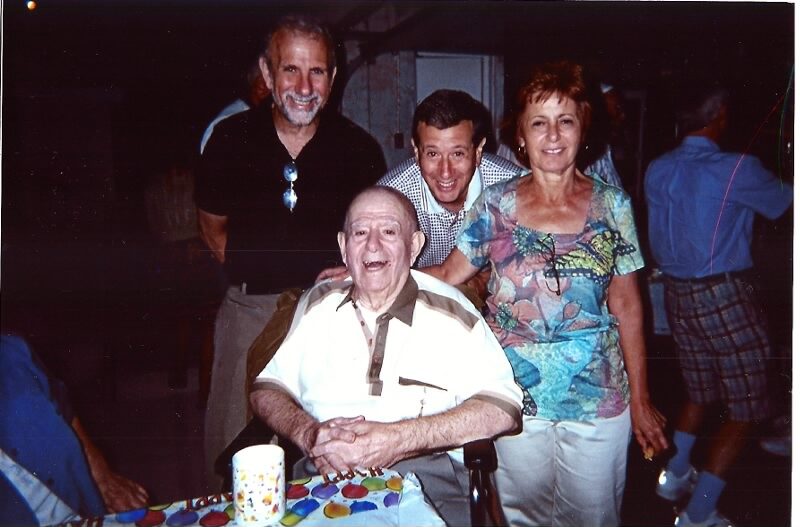
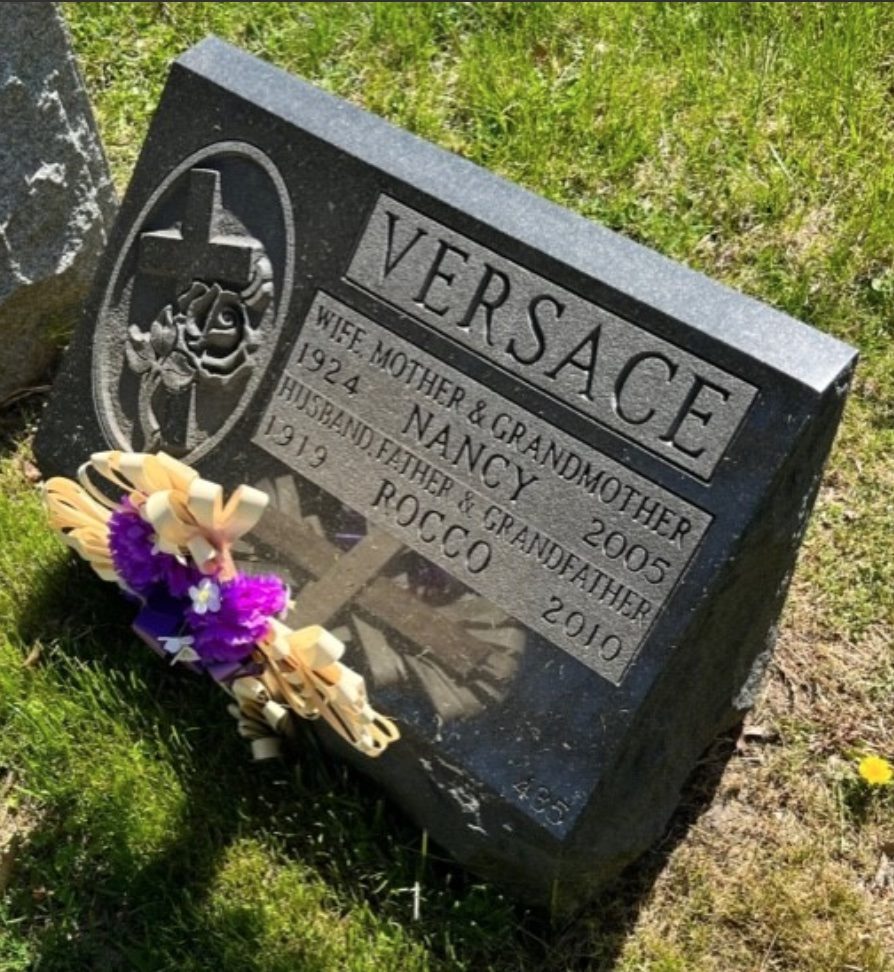
VILLAGIO, VINCENT (or VINCENZO) (195-2001). Staff sergeant, 401st Bombardment Group, 612th Bombing Squadron, United States Army Air Corps. Villagio was born in Brooklyn. His first name is recorded as Vincenzo. As per the 1930 federal census, his parents, Vincent and Mary, and his older brother, Peter, were born in Italy. His five other older siblings, Mary, Albert Nick, Salvatore, and Antoinette, were born in New York. His father was a furrier and his parents owned their residence on East 87th Street in Brooklyn. The 1940 federal census records his father now worked as a watchman in a construction company. It appears that Nick and Peter were no longer residing with the Villagio family. Vincent attended Brooklyn High School for Specialty Trades, located at 49 Flatbush Avenue Extension. According to an article published in the Brooklyn Daily Eagle on April 21, 1946 entitled, “Specialty Trades H. S. Boasts Fine Record,” the school, at that time, was a public vocational institution for boys which offered 2, 3, and 4-year programs, such as electrical wiring, plumbing, and commercial art. It enrolled upwards of 3,000 full-time and 1,500 part-time students. According to an article in the New York Times on February 22, 1947, “The twenty-eight-year-old Brooklyn High School for Specialty Trades, one of the oldest of its kind in the city, was renamed the George Westinghouse Vocational High School.”
Prior to his enlistment in the Army Air Corps, Villagio served in the New York State Guard Service. According to his New York State Guard Service Card, he enlisted on April 4, 1943, was assigned to Company G, 13th Regiment, and was discharged on October 7, 1943 to “enter the U. S. Armed Forces.” Villagio’s World War II draft registration card documents that he was eighteen years old, lived at 228 East 87th Street, was a student at Brooklyn High School for Specialty Trades, and named his mother as next of kin. As per Vincent’s World War II Army enlistment records, he was single and had two years of high school education. His civil occupation was documented as a commercial artist and he entered the service as a private.
Villagio’s daughter, Annmarie Rossi, shares that “my dad served in the Army Air Corps during World War II from 1943 to 1945. He was a tail gunner on a B-17 aircraft and his crew flew 30 missions over Europe during the war.” Vincent was a crewmember in the 401st Bombardment Group, 612th Squadron. A detailed account of the crew’s endeavors during the war can be found on the 401st Bomb Group (H) Association website. Linked to this website is a 170-page pdf describing the missions in which the 612th participated. There is a listing of the 52 crews of the squadron, including Captain J. L. Cromer’s crew (Lieutenant R. W. Trout, Lieutenant M. T. Phillips, Lieutenant J. G. Waldhoff, T/Sergeant D. W. Stott, S/Sergeant M. B. Goodman, S/Sergeant R. J. Coffin, S/Sergeant E. F. Clark, and S/Sergeant V. V. Villagio) listed on page 61. Also documented are the serial numbers, nicknames and history of the aircraft. In this listing is Villagio’s B-17 displaying its serial number (43-38733), code (SC-K), nickname (“I’ll Be Seeing You), and history (delivered on October 11, 1944. Crashed at Westhall, Suffolk on March 24, 1944).
After the war, Vincent married Gerry (Girolama) DiMaria in 1953. He worked in the commercial art field. According to posts on his son’s Flickr page, he created Christmas mechanical display windows for Lord and Taylor, Saks Fifth Avenue, and Abraham and Strauss. He was also the assistant to Ms. Rubenstein of the Helena Rubenstein Company, among other companies. His son also added this note: “Mr. Villagio was hired by Walt Disney as a cartoon artist. On the same day, he was drafted into WWII. He never worked for Walt!”
In August of 1971, Vincent and his crew mates celebrated a reunion in Harlingen, Texas. Reports were featured in several newspapers, including The Chronicle Telegram (Elyria, Ohio, published August 8, 1971), San Antonio Express (published August 5, 1971), and The Times-News (Twin Falls, Idaho, published July 25, 1971). The Times-News published a picture of the crewmembers during the war and a short biography of each. The article also details their post on the B-17: Cromer, pilot; Trout, copilot; Phillips, navigator; Waldhoff, bombardier; Stott, engineer-gunner; Goodman, radio operator; Coffin, ball-turret operator; Clark, waist gunner; and Villagio, tail gunner.
Vincent’s daughter also shares that “he was a talented artist and painted a picture of a beautiful, sexy woman on the nose of the B-17 he flew. He painted the words, ‘I’ll Be Seeing You’ under the portrait. The nose of the plane, with my dad’s work, was photographed and published in a book on World War II Nose Art. My brother has a copy of the book. He also painted the back of his crew mates’ bomber jackets with the same beautiful lady logo.” An excerpt from the article in the San Antonio Press states: “The B-17 used in the flight (during the reunion), a Confederate Air Force plane, was decorated with their “I’ll Be Seeing You” insignia painted on the side. Villagio, who painted the original insignia, including a scantily clad beauty, said the paint job was a good copy of the original.”
Vincent passed away on March 28, 2001 at Maimonides Hospital in Brooklyn. According to the death notice published in the New York Daily News, he and his wife had three children, Annemarie Rossi, Lydia Valinoti, and Vincent. Section 99, lot 1451.
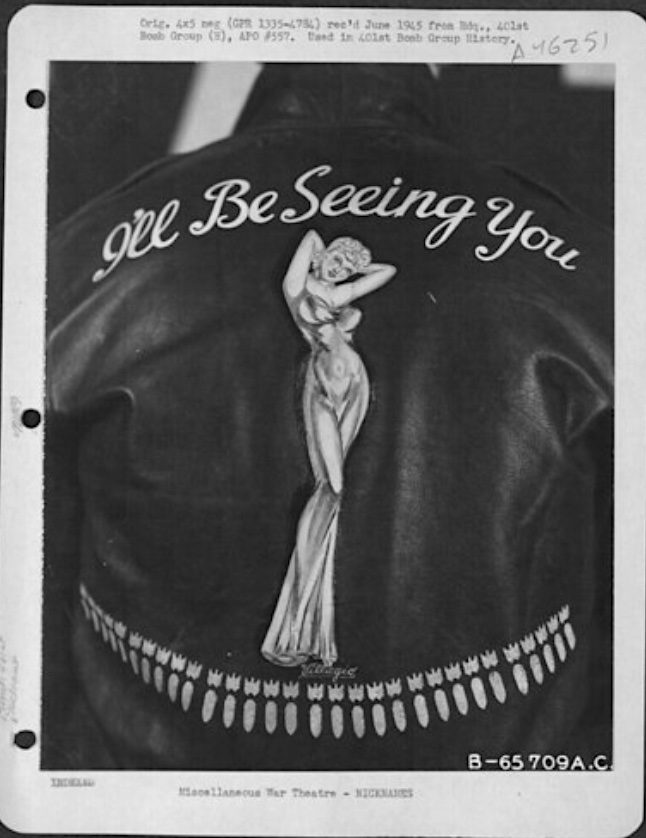
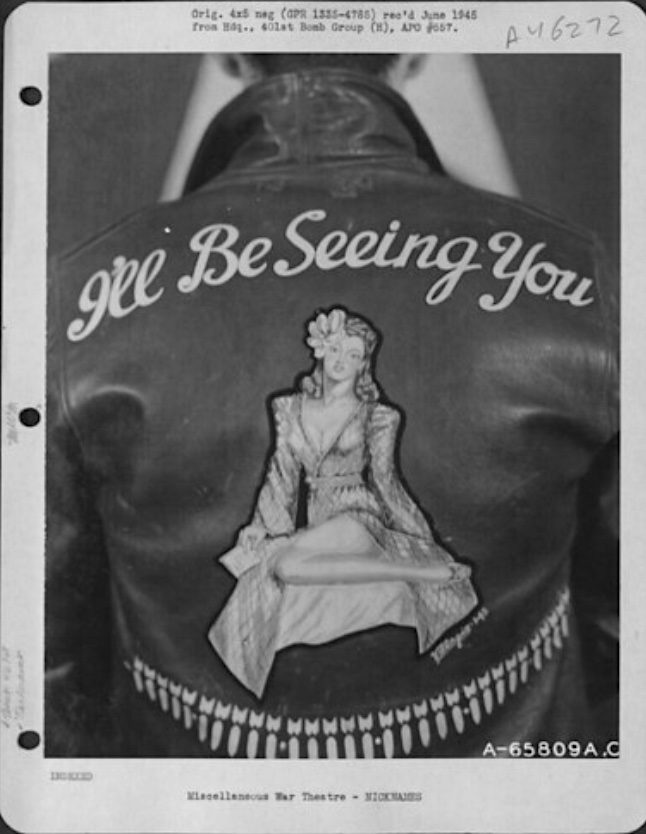
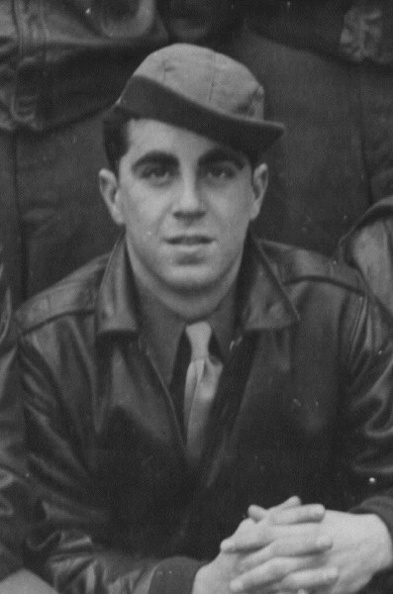

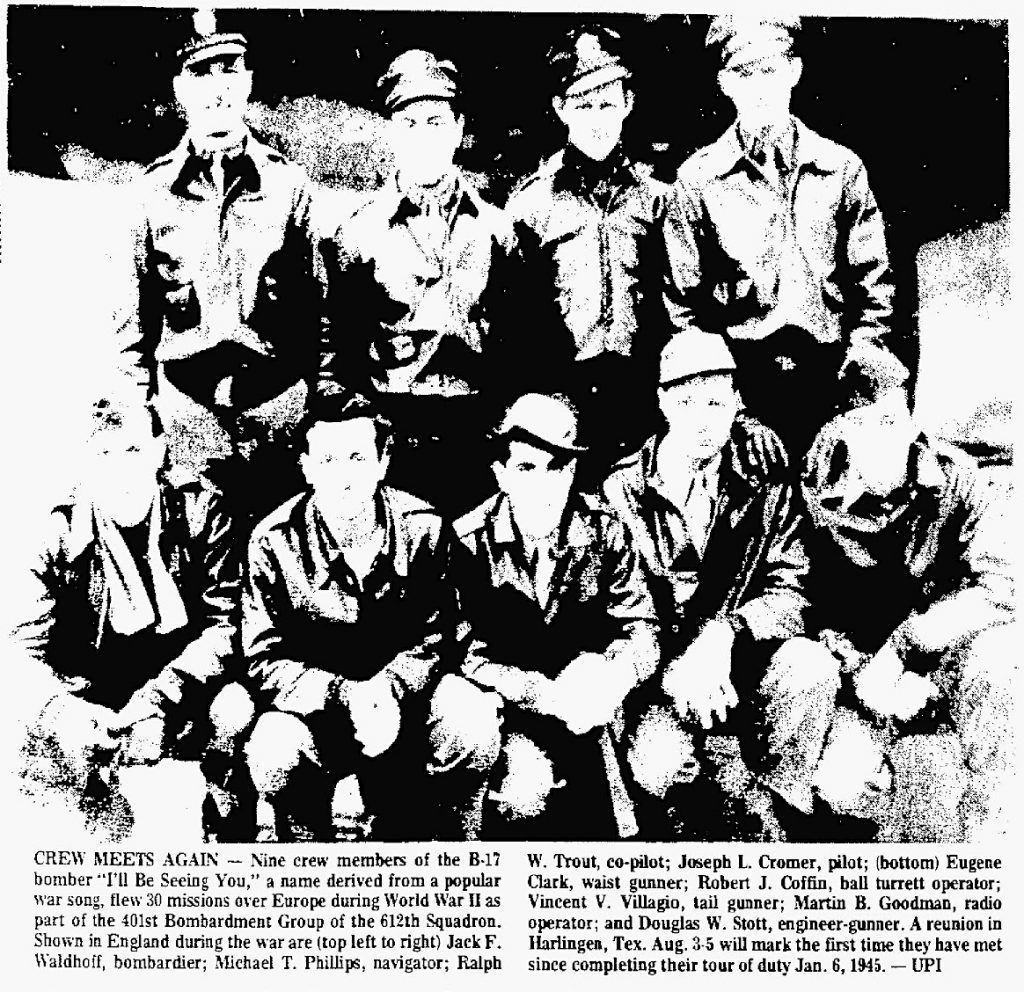
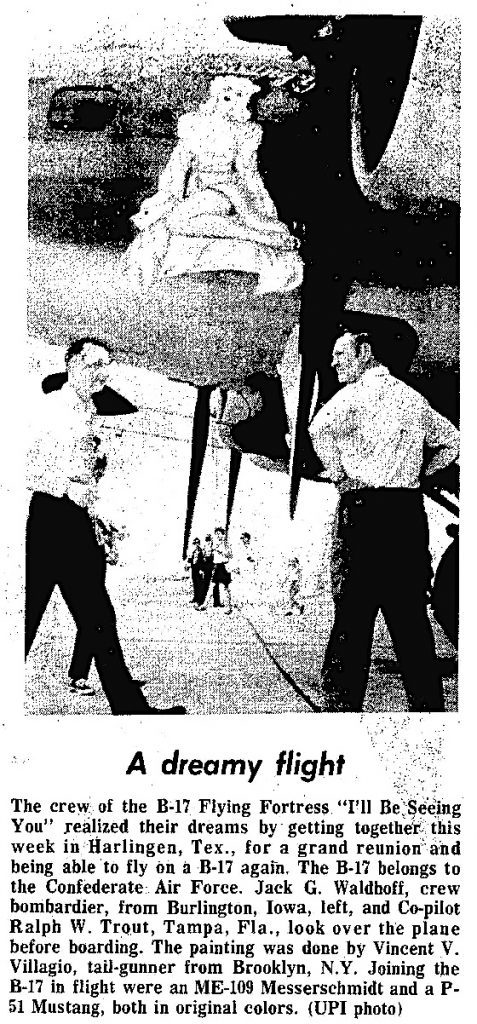


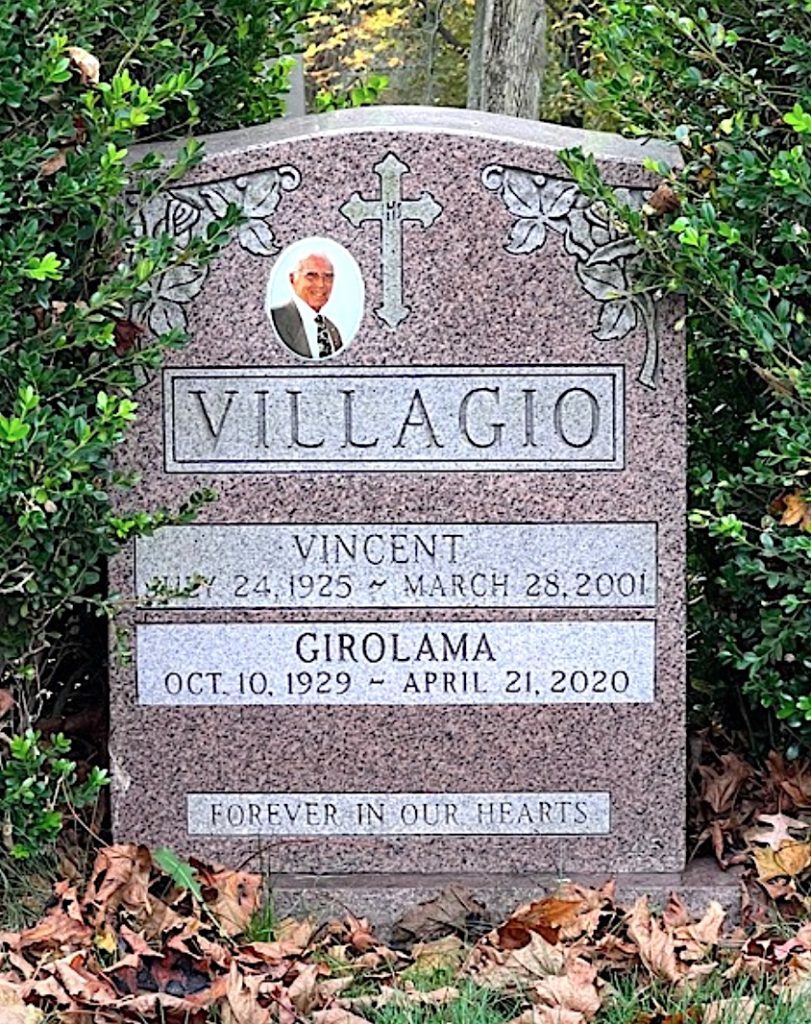
WALDRON, JAMES RICHARD (1916-1999). Corporal, United States Army. James Waldron was born in Brooklyn to Henry Charles Waldron and Mary Kennedy Waldron. James had four full siblings and two half-sisters from his father’s earlier marriage. James’s father’s occupation, according to the 1900 federal census, was glass engraver. By 1920, he was a laborer in an oil yard; by 1930, an office clerk. He died in 1933, having worked for Standard Oil for 15 years, according to his death notice. James was 16 years old at that time.
By the time of the 1940 federal census, 23-year-old James Waldron was living at home on Ainslie Street in Williamsburg with his widowed mother, his siblings, and his mother’s brother. He was working as a bookkeeper at J.B. Slattery & Brothers, a gas stove manufacturer. In that year, James registered for the draft. He was described as 5′ 10″ tall and 210 pounds, with brown hair and eyes, and a light complexion.
Waldron was inducted into the United States Army on September 26, 1942, at the age of 25. According to his son, Richard, he served in New Guinea. He was discharged from the service at the end of December 1945.
After the war, Waldron went to college, graduating St. John’s University School of Commerce in 1951 with a bachelor’s degree in business administration. Waldron continued to work at J.B. Slattery for a total of 22 years; at Welbilt Stoves for 10 years; and at Long Island Stove for five years.
In 1950, he married Anne Marie Shapiro in New York. His wife was from a Belarus-born, Yiddish-speaking, Jewish family. Her two older brothers were born in Russia. Anne and her twin, Harry, were born in New York in 1917. James and Anne had two sons, Brian and Richard, and four grandchildren. Anne died in 1993 and is buried with her husband in Green-Wood. James Waldron died at the age of 82. Section 149, lot 44608, grave 241.
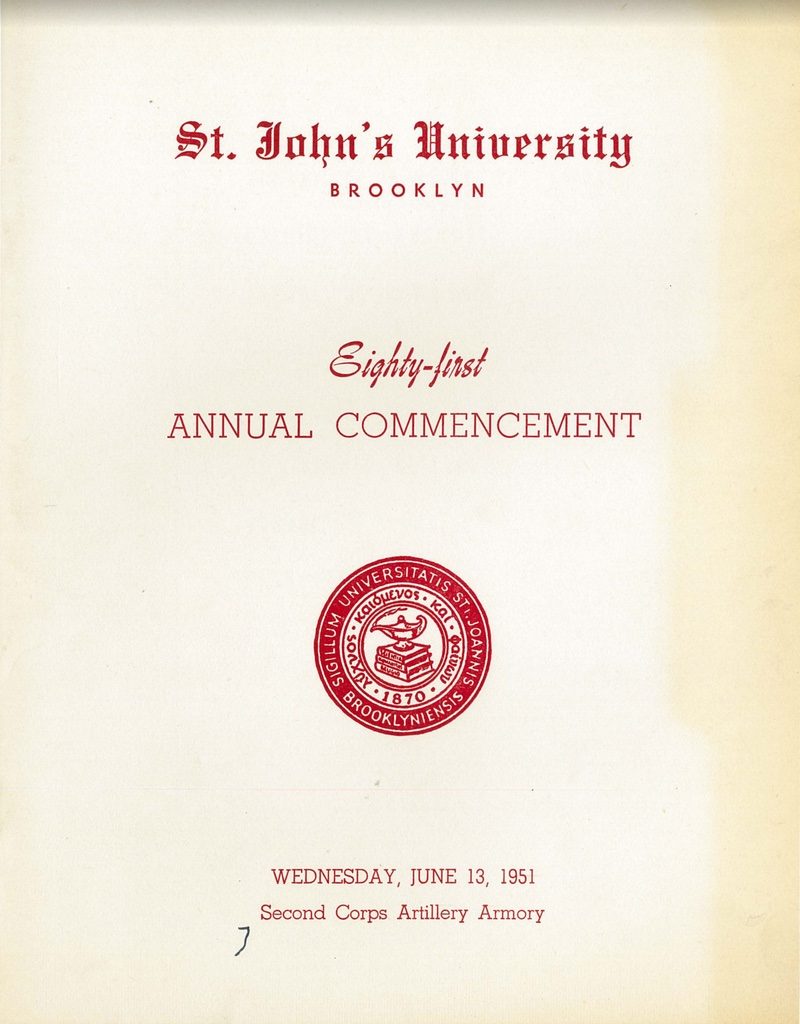
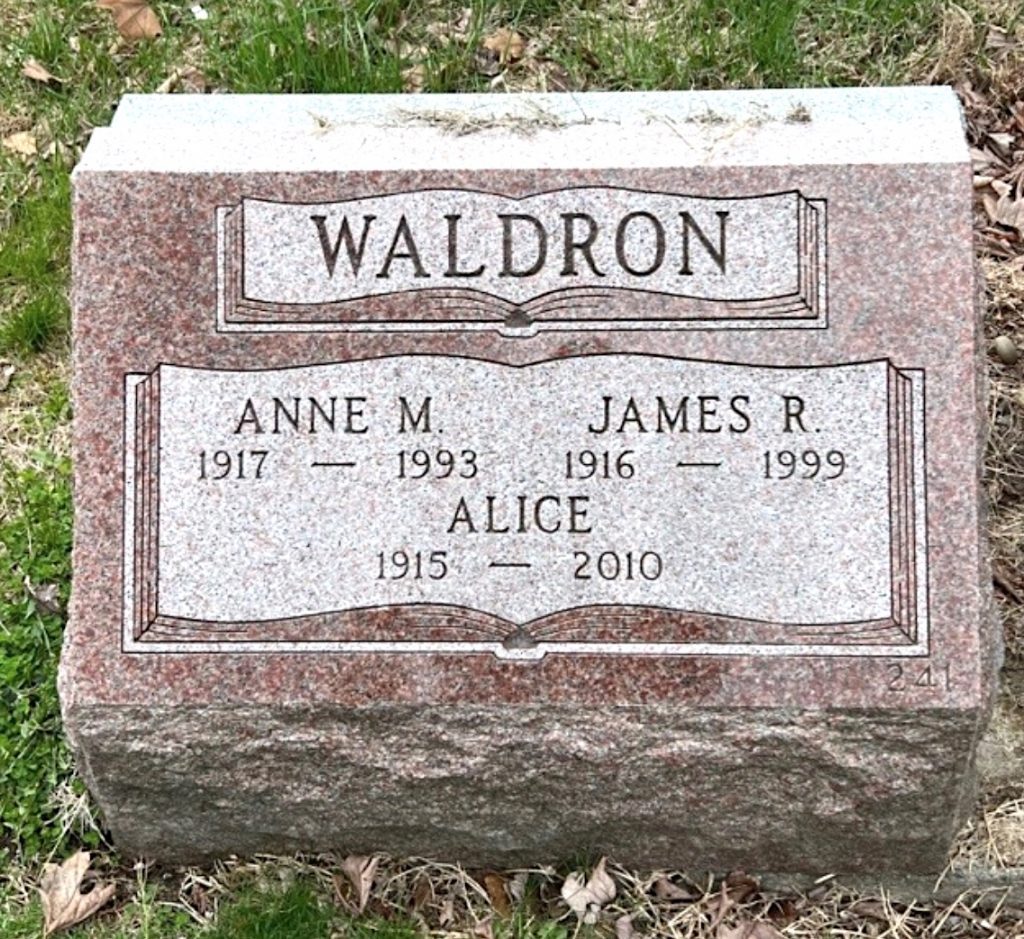
WALERIUS, ERNEST ERIC (1924-1998). Sergeant, United States Army Air Force. Walerius was born in Brooklyn. Ernest’s father, Eric, submitted a Declaration of Intention to become a United States citizen on October 17, 1914. This form states that his father was age 18 years old, a machinist, and born in Stockholm, Sweden. He emigrated from Liverpool, England and arrived in Boston, Massachusetts on October 16, 1913 on the Arabic. As per the 1900 federal census, Ernest’s mother, Celia Meyer, was born in New York and lived with her parents and two sisters in Brooklyn. The New York State Marriage License Indexes documents that Ernest’s parents applied for a marriage license in Brooklyn on February 14, 1922. As per the 1930 federal census, Ernest lived with his parents and his younger brother, Eric, in a family-owned residence at 1824 78th Street in Brooklyn. His father became a citizen in 1919 and worked as a tool and die maker in a machinist shop. The 1940 federal census records that the sixteen-year-old Ernest was attending school. His father was a foreman in the aviation industry and his paternal grandfather, a machinist in a foundry, lived with the family.
An article in the Brooklyn Daily Eagle, dated February 17, 1933, reports that Ernest was promoted from primary to junior status in his Sunday School class at Saint Philip’s Episcopal Church, located on 11th Avenue and 80th Street in Dyker Heights, Brooklyn. The June 22, 1938 issue of the Brooklyn Daily Eagle announced that Ernest and his classmates received their confirmation rites at Saint Philip’s. As per the 1942 edition of Brooklyn Technical High School’s yearbook, Blueprint, Ernest was enrolled in a mechanist course and would graduate that year. Ernest, an Honor Roll student, intended to attend the Stevens Institute of Technology in New Jersey. However, there is no documentation regarding his attendance there.
Ernest’s World Word II draft enlistment card records he was eighteen years old, resided at the 78th Street residence, and his mother was designated next of kin. His employer was Vitarama Corporation in Long Island City, which made a major contribution to the war effort. According to the Science Museum Group:
Vitarama Corporation developed widescreen cinema technology which was later developed into Cinerama. Founder and inventor Fred Waller was approached by an architect to make a projected picture display inside a sphere for New York World’s Fair in 1939. Waller developed “Vitarama” for the Fair, which used an 11-projector system.
During World War II Vitarama Corporation (and Fred Waller) produced the aerial gunnery trainer used by the armed forces. It saved an estimated 350,000 casualties during the war. In it, four trainees sat in a large room in front of a huge spherical screen on which five synchronized projectors threw movies of enemy planes that drove on the novice gunner every which way. In a realistic three-dimensional atmosphere, the gunner fired an electronic machine gun at his adversaries. When they fired, their kicking gun only roared. When they hit, they got a “beep.” By the time the gunner climbed into a real plane, he’d had not only realistic target practice but also the experience of attacking and being attacked.
Ernest’s registrar’s report, dated June 30, 1942, describes him as 5′ 8″ tall and 140 pounds with blue eyes, blond hair and light complexion. According to his World War II enlistment records, Ernest entered the service as a private on February 13, 1943. This document records he had completed four years of high school and his civil occupation was machinist.
There are no details as to what unit or where Ernest served during the war. His neighbor, Donna Falcone, shares that he was promoted to sergeant during his service.
After the war, as per the 1950 federal census, Walerius lived with his parents and paternal grandfather in Brooklyn. The census also states that he was a tool and die maker at the Daco Machine and Tool Company. The Brooklyn Daily Eagle, on February 28, 1949, announced the engagement of Ernest to Elsie Olson. At the time, the couple were living on the same block, Ernest at 1324 78th Street and Elsie at 1341 78th Street. According to the New York State Marriage License Indexes, he and Elsie applied for a marriage license on May 20, 1950.
Interestingly, Ernest served as Juror # 10 for a criminal case. Below is an excerpt from the Records and Briefs of the New York State Appellate Division of what transpired when Ernest requested to be dismissed during voir dire examination of prospective jurors:
The Court: Suppose you sit yourself down and see what the story is and let’s see if we can help, if we can. Your full name.
Mr. Walerius: Ernest E. Walerius.
The Court: You are Number –
Mr. Walerius: 10, I believe.
The Court: What seems to be your problem?
Mr. Walerius: I have been on jury duty a few times on civil cases, you know, on a week or two of duration. I don’t get paid for doing this and I feel it is my civic duty to sit in jury…This particular case, two weeks’ duration, and it has the earmarks of being drawn out to a longer case, Toward the end, I might get nervous, drawing up to Christmas.
The Court: Who are you employed with?
Mr. Walerius: Diego, industrial company, tool and die maker.
The Court: My own opinion is that it will not go beyond the 17th. I cannot give you a guarantee. I can tell you this, one of the reasons we spent so much time yesterday and we will be putting longer time is the effort on the part of the Court to finish by the 17th, for more reasons than one.
Mr. Selzer: I think we’ll be through by the 17th.
The Court: There are no jurors beyond the 17th. Furthermore, this is my only opportunity to relax a little bit after a long hard year.
Mr. Walerius: I can see the way it is going, if the lawyers are going to draw this out as picking the-
The Court: Suppose we do this: If in the event that it begins to draw out unduly, we may be able to throw in an alternate by stipulation and consent. What is your thought, Mr. Kaplan?
Mr. Selzer: It’s all right with me.
Mr. Kaplan: It’s all right with me, Judge.
Mr. Walerius: To be honest with you, I would gladly serve two weeks up until next Friday. I’m beginning to wonder if they are drawing it out to Christmas Eve and let’s get out. It’s Christmas Eve. I want to get this case settled, my wife is waiting under the Christmas tree.
Section 118, lot 38006.
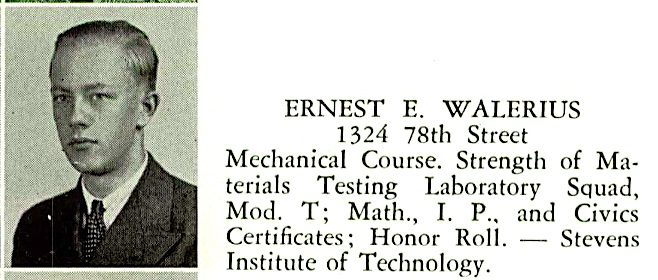
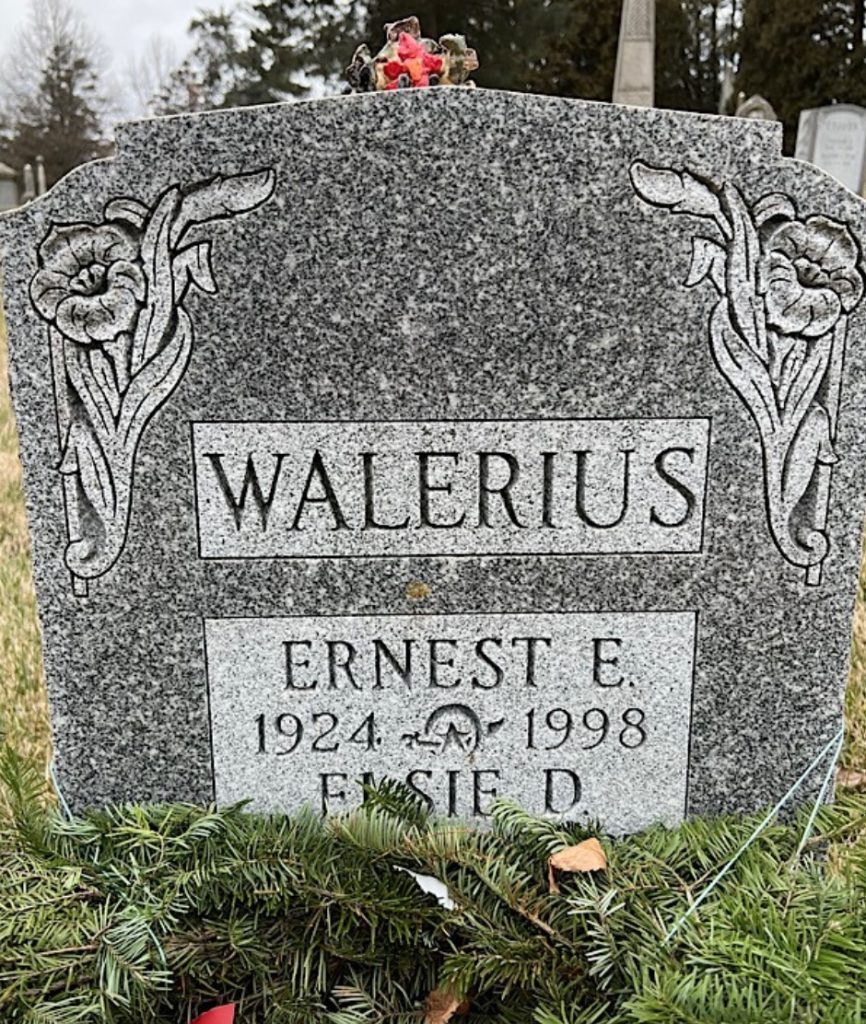
WARD, RICHARD CARLETON (1916-2005). Sergeant, United States Army. The Ward family members were among the early English settlers in Rhode Island, arriving in the 1670s. John Ward had been an officer in one of Cromwell’s cavalry regiments, arriving in America from Gloucester, England, after the accession of King Charles II. Another ancestor married the son of Benedict Arnold. Burr H. Nicholls and Rhoda Holmes Nicholls, Richard Carleton Ward’s maternal grandparents, were both noted artists. Burr Nicholls was an oil painter and Rhoda Holmes Nicholls was a painter, water colorist, and art editor in the early 1900s.
The 1918 Darien, Connecticut City Directory records the Ward family living on Runkenhage Road in the Tokeneke neighborhood. On March 19, 1927, Richard Ward was listed as sailing from London, England on the SS American Shipper, arriving in New York on March 30, 1927, with his mother Olive Nicholls Ward, age 39, and his sister, Alida Carleton Ward, age 18. Richard, 10 years old, was listed as having been born in Darien, while his mother and sister were listed as born in New York City.
The 1930 federal census lists Richard Ward’s father, Henry Marion Ward, who was 59 and a lawyer at a law office. His mother, Olive, was 42 and an interior decorator. Sister Alida was 15 and Richard was 13. The home they lived in was valued as $60,000. Richard’s grandparents were all born in New York, except for his maternal grandmother, who was born in England. The family also had a female servant living with them, listed as a 46-year-old “Negro” born in North Carolina.
Richard Ward registered in Darien for the draft on October 16, 1940, when he was 24 years old. He listed his date of birth as August 17, 1916, in Darien, and his residence as on Runkenhage Road in Darien. His contact was his mother Olive Nicholls Ward who also lived at that same address. Richard worked at S. W. Hoyt Jr. Co., Inc. on Washington Street in South Norwalk, Connecticut. He was 6′ 4½” tall and weighed 165 pounds, with a light complexion, blue eyes, and brown hair. He had a small scar on his left shoulder. He signed his registration card as “R. Carleton Ward.” He enlisted in the United States Army on December 17, 1943, and was discharged on November 5, 1949, according to Department of Veterans Affairs records.
Family trees on the ancestry website indicate that Richard married Antonina Pavlova in Canada in 1949. Per Antonina’s obituary in the Greensboro News & Record, she was born in St. Petersburg, Russia, had been a prisoner of war and, after being liberated by the Allied Forces in Austria, she met United States Army Sergeant Richard Carleton Ward there. The 1950 federal census confirms their marriage, showing Ward’s age as 31 and Antonia’s as 26. Per the 1950 United States census, they were living in New London, Connecticut, along with their newborn daughter, who had been born in Canada in August 1949, but was an American citizen. The additional information for Ward shows that he had been living at Westerly, Rhode Island, the previous year, that he had finished one year of college, and that he had served in World War II, but there was no job listed, although he was not noted as unemployed.
Antonina Ward’s 1954 naturalization record, issued in 1954 in Hartford, Connecticut, shows her residing at Bay Road in Amherst, Massachusetts. In the 1950s, Richard Carleton Ward was a botany instructor at the University of Vermont, holding a Bachelor of Arts degree and appointed in 1954, according to the school’s catalogs for 1954-55 and 1955-56. The 1956 Burlington, Vermont City Directory lists Richard and Antonina as living in Vermont. Ward was active in botanical societies and contributed to collections in many parts of the United States. For example, in 1961, he submitted several samples to the Southern Appalachian Botanical Club. Later, he was a biology professor at Guilford College in Greensboro, North Carolina.
According to Ward’s daughter Tanya, Ward and his wife had three daughters, Tamara Olive Ward, Lalla Ward Reid, and Tanya Ward Feagins. The 1970 North Carolina Divorce Index shows that Ward and his wife were divorced on November 30, 1970, in Guilford, North Carolina. In 1994, Ward was living at 8101 Oak Arbor Road in Greensboro, North Carolina and, in 1995, at 410 Guilford Avenue, Greensboro, North Carolina. Per Social Security records, Ward passed away on December 2, 2005. The Piedmont Bird Club of Greensboro, North Carolina, posted an obituary of Ward in their February-April 2006 newsletter. He was known as Carl and was active in the club for many years. He was an activist and lover of nature.
Ward was interred on October 10, 2007, in the same section as his father. His daughter Tamara’s 2014 obituary in the Greensboro News & Record, states that she was laid to rest in what was termed “the Ward family ancestral burial site.” “Professor Ward Devoted to Preserving the Environment” is carved on his gravestone. Section 77, lot 72.

WEAVER, ALBERT W. (1915-1978). Lieutenant, United States Navy. Albert was born in New Rochelle in Westchester, New York. As per the 1910 federal census, his paternal grandmother was born in New York, was a widow, owned her mortgage-free home in Westchester, and is listed as head of household. Albert’s father, Courtney Maujer Weaver Sr., also born in New York, was a stockbroker and resided with his mother and two servants. The Select Births and Baptisms of New Brunswick, Canada, record that Albert’s mother, Maud Josephine Wright, was born on April 20, 1888 in Stoney Creek, New Brunswick. Albert’s parents applied for a marriage license on February 5, 1914 in Manhattan, according to the New York Marriage License Indexes. The 1920 federal census records that Albert’s grandmother was designated the head of household and was renting. The four-year old Albert, his parents, a younger brother, Courtney Jr. (see), and one servant resided with Albert’s grandmother. At the time of the 1930 federal census, Albert’s father, an insurance salesman, is designated head of household and owns the home in Eastchester, a city in Westchester County. Also residing in the home are Albert, his mother and his brother.
As per the Wilkes County, North Carolina Marriage Register, the twenty-one-year-old Albert married Elizabeth Mathis, twenty-three years old, in Wilkes, North Carolina on February 15, 1937. There is no documentation as to the outcome of the marriage, however, the Passenger and Crew List of the Rotterdam, dating from 1939, lists Albert’s marital status as “single.” Although not clear where he sailed from, he arrived at San Juan, Puerto Rico, on September 13 of that year. According to the 1940 federal census, Albert lived on Treno Street in New Rochelle with his parents and younger brother. His father, a tailor, is still listed as head of household. Albert, twenty-four years old, had completed three years of college and was a restaurant manager. Courtney, twenty-three years old, had completed one year of college and was a buyer for a restaurant. The 1940 City Directory validates the census as it lists Albert as living at 60 Treno Street and documents “restaurant business” as his occupation. The Washington State Marriage Records certify that Albert married Margaret Greive on October 26, 1943. His address is recorded as the Naval Air Station in Seattle, Washington.
Albert and his brother, Courtney, served in the military during the war – Albert in the Navy and Courtney in the Army. As reported in the March 3, 1944 issue of the Daily Times, the brothers co-owned a restaurant and depended on their parents to keep the business operating while they were serving. As detailed in the article: “Mr. and Mrs. Courtney M. Weaver Sr., are busy these days running Weaver’s Restaurant on the Post Road just off Larchmont Avenue. The restaurant was opened by their two sons, Albert and Courtney Jr., some two years ago.”
There is little documentation regarding Albert’s military career. As per the Department of Veterans Affairs BIRLS Death File (Beneficiary Identification and Records Locator Subsystem), his enlistment date was June 30, 1941. The newspaper article cited earlier provides details regarding Albert’s service:
Albert enlisted shortly after the war started as a midshipman and spent 19 months in the Pacific on a submarine. Currently, he is recuperating in the Naval Hospital in San Francisco Bay as a result of being depth bombed by a Japanese airplane while on duty in the South West Pacific. He now has a submarine medal and five stars for his work in the Southwest Pacific. He also has four stars from the battle of Midway.
History.com describes the Battle of Midway as an epic clash between the United States Navy and the Imperial Japanese Navy that played out six months after the attack on Pearl Harbor. It concludes, “The United States Navy’s decisive victory in the air-sea battle (June 3-6, 1942) and its successful defense of the major base located at Midway Island dashed Japan’s hopes of neutralizing the United States as a naval power and effectively turned the tide of World War II in the Pacific.”
Albert may have been hospitalized a second time; a World War II hospital admissions card records that he was admitted to a hospital on July 1, 1944 and discharged later that year. His diagnosis was malaria falciparum (estivo-autumnal), a life-threatening form of malaria that can cause death if not treated properly. His Navy muster rolls show that he served as a lieutenant on the USS Aspro (SS309) after his hospitalization. He was discharged on December 21, 1945. However, he served in the Navy long after World War II: his name appears in the Select Military Registers on January 1, 1943; July 1, 1944; April 1, 1951; and July 1, 1961. He is also listed in the Navy and Marine Corp Register for the year 1965.
As per the 1950 federal census, Albert, a salesman, lived at 139 Treno Street with his father and mother. Although the census states that Albert is married, there is no documentation of his wife living in the household. A text accompanying a photo Albert in a 1952 Cruise Book from the U.S.S. San Marcos states:
Commander Albert W. Weaver, USNR, was born in New Rochelle, New York, lists that as his home today. Prior to being assigned as Exec. of the San Marcos he served duty in the Submarine Service. He studied prelaw at New York University and entered the Navy in 1940.
On April 3, 1954, Albert married for the third time. His bride was Isolde Vonpscheck; they married in New Rochelle. The 1955 City Directories document that he and Isolde lived at 220 Pelham Road, New Rochelle. According to his obituary in the August 30, 1978, issue of the Atlanta Constitution, he died in Fulton, Georgia, and was survived by his wife and two daughters. Section 184, lot 23544.
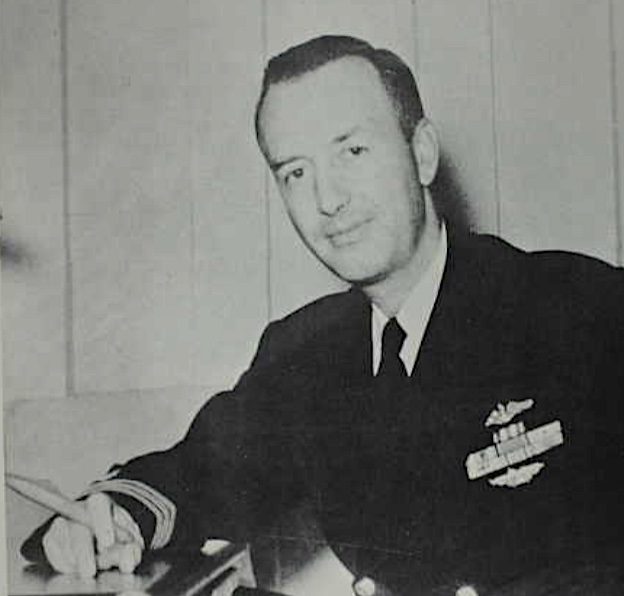
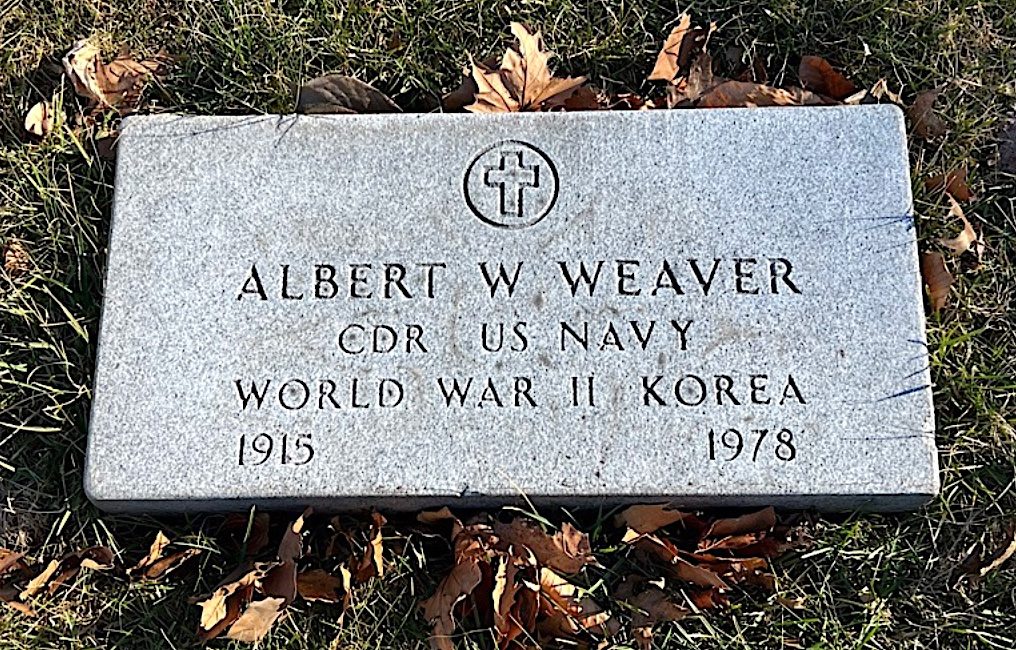
WEAVER, JR., COURTNEY MAUJER (1916-1945). Second lieutenant, 82nd Airborne Division, United States Army. Courtney was born in New Rochelle in Westchester County, New York. As per the 1910 federal census, his paternal grandmother was born in New York, was a widow, owned her mortgage-free home in Westchester, and is listed as head of household. Courtney’s father, Courtney Maujer Weaver Sr., also born in New York, was a stockbroker and resided with his mother and two servants. As per the Select Births and Baptisms of New Brunswick, Canada, Courtney Jr.’s mother, Maud Josephine Wright, was born on April 20, 1888 in Stoney Creek, New Brunswick. The New York Marriage License Indexes document that Courtney’s parents applied for a marriage license on February 5, 1914, in Manhattan. The 1920 federal census lists Courtney’s grandmother as the head of household and that she was renting. The three-year old Courtney, his parents, an older brother, Albert (see), and one servant resided with Courtney’s grandmother. At the time of the 1930 federal census, Courtney’s father, an insurance salesman, is designated head of household and owns the home in Eastchester, a city in Westchester County. Residing in the home are Courtney, his mother and his brother. According to the 1940 federal census, the family was renting on Treno Street in New Rochelle. His father, a tailor, is still listed as head of household. Albert, twenty-four years old, had completed three years of college and was a restaurant manager. Courtney, twenty-three years old, had finished one year of college and was a buyer for a restaurant.
Courtney’s World Word II draft enlistment card records he was twenty-three years old, and was self-employed at 118 Boston Post Road in Larchmont, Westchester. His mother was designated next of kin. As per his registrar’s report, dated October 16, 1940, he was 5′ 8½” and 145 pounds with blue eyes, brown hair and light complexion. As reported by the Daily Times on November 1, 1941, prior to his enlistment, Courtney attended a Halloween Barn Dance held by the Larchmont Avenue Church Forum. There were about 40 couples in attendance, replete with decorations, games and square dancing. According to his World War II enlistment records, Courtney entered the service as a private on September 24, 1942. This document records he had completed four years of college and his civil occupation was described as a hotel and restaurant manager.
Courtney and his brother, Albert, served in the military during the war – Courtney in the Army and Albert in the Navy. As reported in the March 3, 1944 issue of the Daily Times, the brothers co-owned a restaurant and depended on their parents to keep the business operating while they were serving. As detailed in the article: “Mr. and Mrs. Courtney M. Weaver Sr., are busy these days running Weaver’s Restaurant on the Post Road just off Larchmont Avenue. The restaurant was opened by their two sons, Albert and Courtney Jr., some two years ago.” The article continues with a description of the early military career of Courtney: “The other son, Courtney, after some service in Panama, returned to Officers Training School at Camp Davis and was graduated as a second lieutenant. With some special training in Panama, he was first man in his entire class.”
As per the United States Army Casualty List for Westchester County, New York, Courtney was killed in action. The Daily Times of January 31, 1945, reported the sad news along with a brief history of his military career:
Lt. Courtney M. Weaver, who, with his brother, operated Weaver’s Restaurant on the Post Road near Larchmont Avenue, Larchmont, for several years, was killed in action on January 7 (1945) in Belgium, according to a War Department telegram received by his parents, Mr. and Mrs. C. M. Weaver of 60 Treno Street, New Rochelle.
A 1934 graduate of New Rochelle High School, Lt. Weaver entered the service in September, 1942, and was immediately sent to Panama where he specialized in anti-aircraft control until he was sent to Officer Candidate School at Camp Davis, North Carolina, in October 1943. He graduated from Camp Davis at the head of his class, receiving his commission last February as a second lieutenant in the Coast Artillery.
He received further training in the Infantry at Fort Benning, Georgia, and served as an instructor in automotive weapons at Fort McClellan, Alabama, before going overseas. In addition to his parents, he is survived by a brother, Lieutenant Albert W. Weaver, now on duty in the Navy submarine service.
Courtney’s father submitted an Application for Headstone or Marker in July of 1948. The application notes that Courtney served in the 508th Parachute Infantry of the 82nd Airborne Division. The nickname for the regiment was “Red Devils” and its motto was “Fury from the Sky.”
An extensive account regarding the 508th Parachute Infantry during World War II was written by William G. Lords. Following are the events that Courtney’s unit took part in on January 6th and 7th in the Ardennes and in which circumstances he was likely killed:
The 508th Parachute Infantry remained in reserve until the evening of January 6, at which time the three battalions were in separate assembly areas north of Odrimont, awaiting orders from the Division commander. For four days the troopers had been slowly displacing forward, following the attack closely enough to be committed on short notice, but not closely enough to allow enemy fire to hamper maneuvering or preparations for an attack.
At midnight on January 6 the battalion commanders returned from a meeting with Colonel Lindquist and issued the attack order to their staffs and company commanders. The objective, ironically enough, was to be Thier-du-Mont, the ridge from which the 508th had withdrawn on Christmas Eve. Each company would take the area with which it was most familiar — the area which it had defended previous to withdrawal.
The Regiment would attack in a column of battalions with the 3d Battalion leading. Once this unit was on its objective, the other battalions would pass through and slide over onto their respective portions of the ridge.
The early hours of the 7th were busy ones for entire outfit, for ammunition had to be drawn, and rolls had to be made and spotted for supply personnel to pick up. Arrangements had to be made to ensure that blankets reached the men again after the attack, and of course orders had to be passed down so that each individual was thoroughly familiar with his job and the job of his unit.
Before dawn the long columns of fighting men began forming on the snow-covered roads, and march to the line of departure began. Through Odrimont and Arbrefontaine the column of troopers twisted. At the village of Menil, 2,000 yards northwest of the ridge. Major Alton L. Bell, 3d Battalion executive officer, set up a hasty command post to relay all messages from Colonel Mendez to the regimental command post. Supply vehicles came up as close as possible bringing 81mm mortar ammunition to the mortar platoon as they went into position to support the attack.
Meanwhile the rifle companies passed through the village and deployed for the jump-off. G Company was to lead the assault followed by the rest of the battalion in column. Colonel Mendez’s command group followed the lead platoon…
The enemy clung to the ridge with fierce tenacity, and the 1st and 2nd Battalions took their objectives by wrestling them from the Germans with blood and steel. By dark the Regiment was back in the position it had left on December 24, but the ground over which they had returned was stained by American and German blood.
The worst part of the attack on January 7 was not that so many men were killed in the assault, for this is to be expected in war, but rather that many men who were wounded in the attack died that night from exposure. The thermometer hovered around zero all day and then dropped much lower at night. The entire ridge was buried in two feet of snow, and the few paths that ran up the side of the hill was snowbound. Not even a jeep could get near many of the wounded. Search parties combed the thick woods all night in hope of finding some of the wounded, but many were not found until too late.
Courtney Weaver is listed among those cited for Honor Roll designation in the History of the 508th Parachute Infantry. Burial at Green-Wood was on November 8, 1947; given the date of his burial at Green-Wood, he was likely buried first in Europe. Section 184, lot 23544.

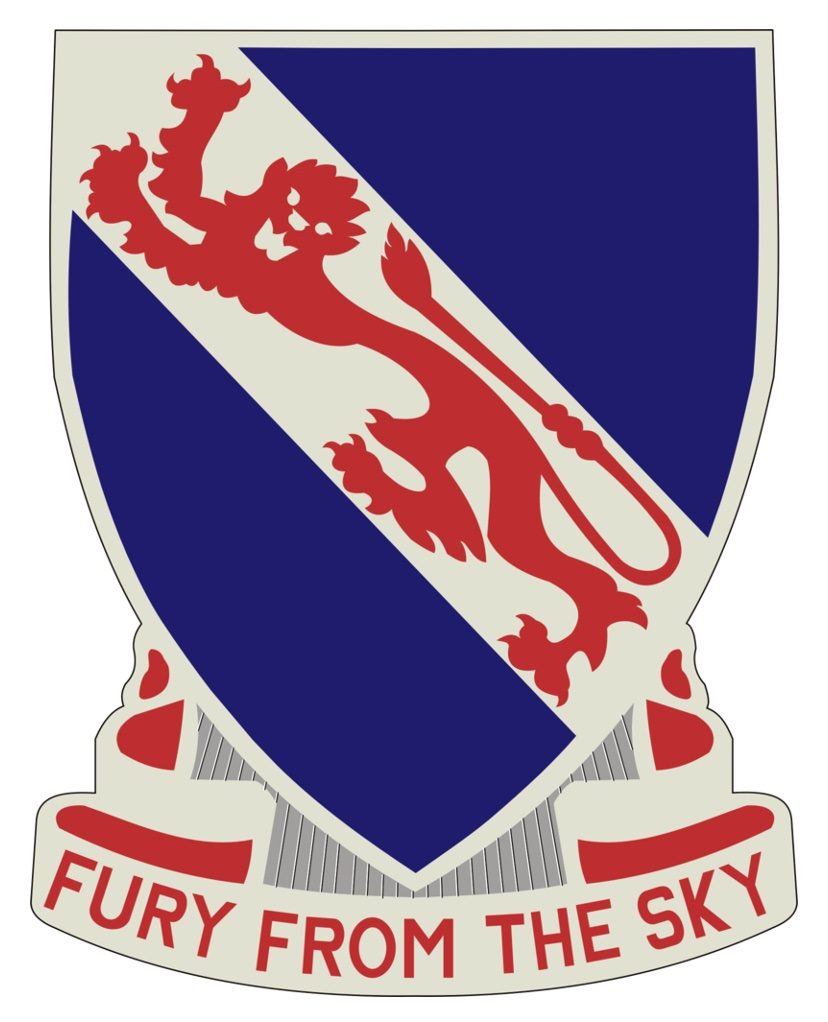
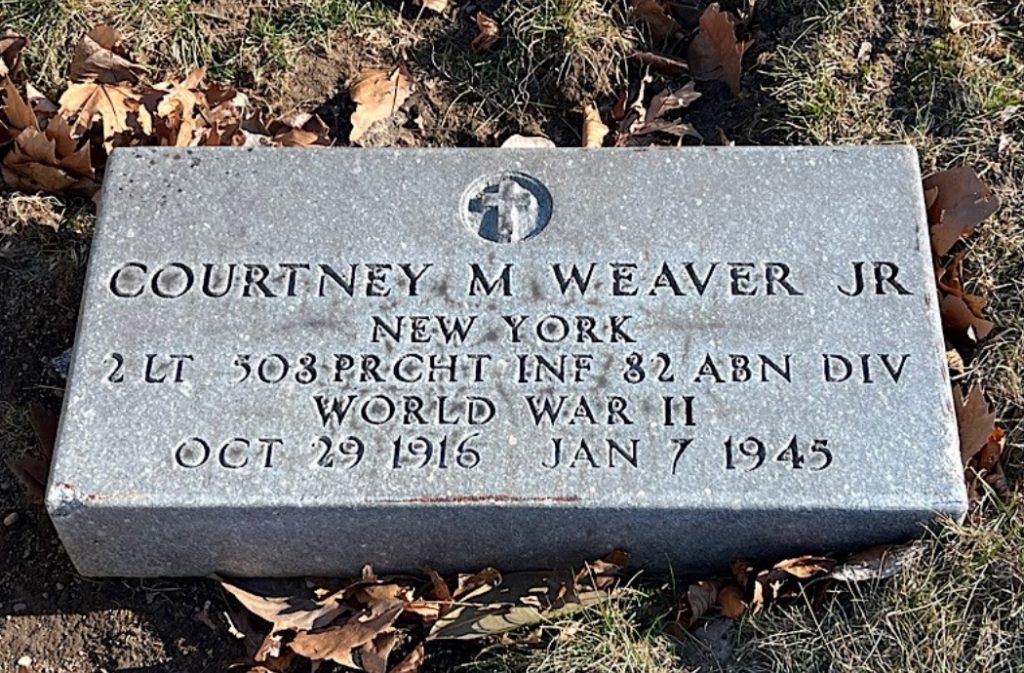
WEST, JR., GEORGE WASHINGTON (1914-1975). Corporal, United States Army. George was born in Brooklyn. As per the 1915 New York State census, George lived with his parents, George and Bertha. The 1920 federal census documents that his father was born in New York and was employed as a driver. His mother, a descendant of German parents, was also born in New York. George was their only child and the family lived in Brooklyn. As stated by the 1930 federal census, George, 16 years old, attended school. His father’s occupation is recorded as a salesman and the family resided in Brooklyn. The 1940 federal census details that George, then twenty-six-years-old, lived with his parents and was a cosmetics salesman. His father’s occupation is recorded as a guard on a ship.
West’s World War II draft registration card records that he was twenty-six years old and resided at 226 Etna Street in Brooklyn with his parents. He was employed by Huylers Candy Company, located on East 13th Street in Manhattan. George had brown eyes and hair and a dark complexion, as per his registrar’s report, dated October 16, 1940. His height is listed as “tall” with a weight of 155 pounds. According to the Veterans Affairs BIRLS (Beneficiary Identification and Records Locator Subsystem) Death File, he enlisted on January 6, 1943 and was discharged on February 12, 1946. Four months after his enlistment, George married Helen M. Aberg on May 10, 1943 in Brooklyn.
There is little other documentation regarding George’s military service during World War II. The Application for United States Military Veteran’s Headstone, submitted by his wife on May 7, 1976, states that he was a corporal in the United States Army. He possibly served in the 1447th Service Command Unit which is written on the form, but then crossed out. The application also states that George passed away on May 30, 1975.
Little is known of George’s life after World War II. As per his wife’s obituary in February 1992, the couple had three children, William, Janet and David. Section 85, lot 6830.

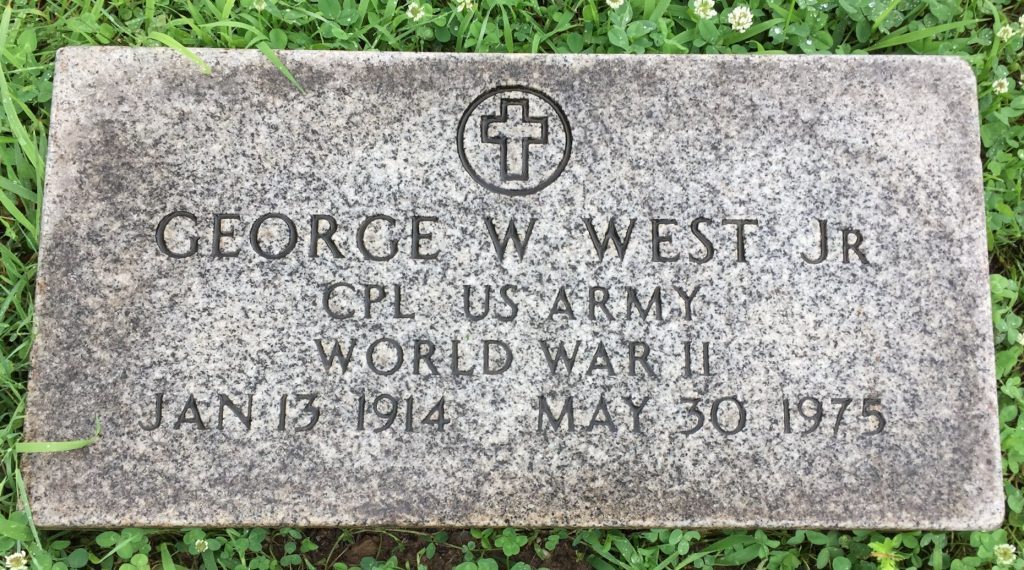
WIEMANN (or WIEMAN), III, GEORGE FREDERICK (1921-1993). First lieutenant, United States Army Air Force. Wiemann was born in Manhattan. The 1925 New York State census reports that he was living with his parents, George and Mary, in North Hempstead, Long Island, with a younger brother, John, and a maid; his father was in the manufacturing business. At the time of the 1930 census, the family, including a servant, was living at 3 Plandome Court in Plandome Heights, Long Island. That census reports that George was attending school.
Wiemann filed his draft registration card on February 16, 1942, when he was a 20-year-old student at Middlebury College in Vermont. He recorded his home address as Eight Acre Farm in Newtown, Connecticut, where his family had a home telephone, and he listed his father as his next of kin. The accompanying registrar’s report describes him as having brown eyes and hair, a dark complexion, and a mastoid scar behind his left ear.
Soldier records show that he enlisted in the United States Army on February 26, 1943, and was discharged on March 11, 1944. He re-enlisted on March 12, the next day, and was discharged on November 5, 1945. “George F. Wiemann” appears on Navy muster rolls as of October 19, 1944, as being stationed to LST-597. However, as per the information from his enlistment records and from his gravestone, he was in fact a first lieutenant in the United States Army Air Force on that date. An inscription on his gravestone reports that he was awarded the Distinguished Flying Cross.
On October 18, 1947, George married in Scarsdale, New York. The 1950 census reports that he and his Georgia-born wife Mary were living in Queens and that he was working as a draftsman in the contracting industry. As per public records, in 1989 Wiemann was living at 175 SE Saint Lucie Boulevard, Apt E1 in Stuart, Florida. He moved in 1992 to 6051 SE Medinah Lane in Stuart. He died in Martin, Florida. Section 206, lot 31922.
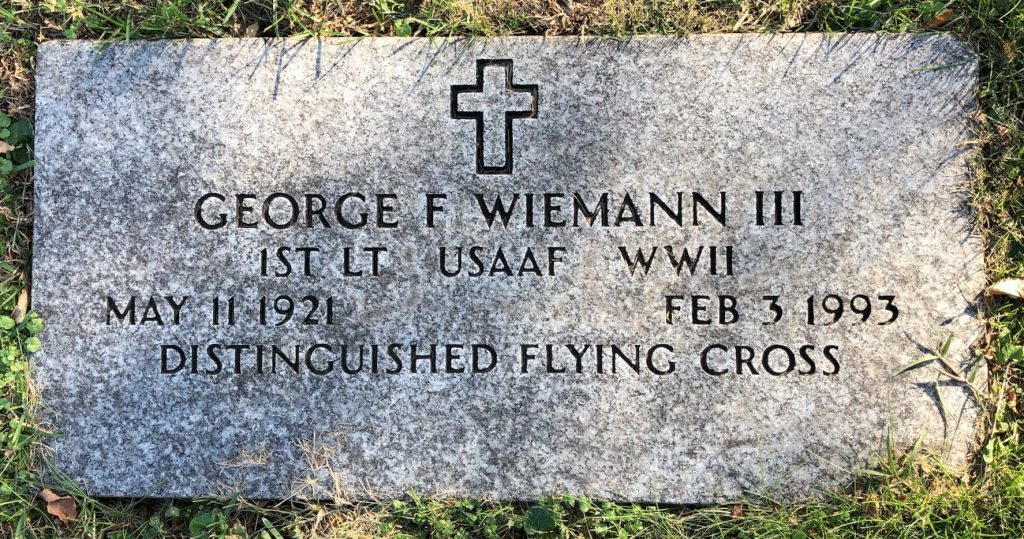
WILLIAMS, JR., REMSEN TAYLOR (1914-1941). Leading aircraftman, Royal Canadian Air Force. Williams was born in New York City; his application to the Royal Canadian Air Force specifies Long Island City. The 1920 census notes that he was living with his parents, Remsen and Gertrude and older sister, Dorothy, age 7; his father was born in Canada and was manager of the veneer mill at the Steinway piano factory. On March 25, 1921, his name appeared on the manifest of the Santa Elisa, a ship that departed from Cristobal in the Panama Canal Zone and arrived in New York City on that date. At the time of the 1925 New York State census, the family had moved to North Hempstead in Nassau County and the household included a butler and a cook. The 1930 census shows that the family owned their $45,000 home in Kensington, a part of Great Neck on Long Island, and that his father was a stockbroker; that census lists the father’s birthplace as New York and includes a butler, cook and child of one of the household helpers. Remsen’s photo appears in the 1932 Pawling [New York] High School Yearbook.
On October 25, 1940, Williams registered for the draft in Loudoun County in Leesburg, Virginia. As per his draft registration card, he was living in Middleburg, Virginia, where he was self-employed. His mother, Gertrude Taylor Williams, who lived at 15 Nassau Drive in Great Neck, New York, was listed as his next of kin. His registrar’s report describes him as 5′ 10″ tall, 160 pounds with blue eyes, brown hair and a ruddy complexion. That card was subsequently marked in red pencil, “deceased.”
Williams applied to enlist in the Canadian Royal Air Force on May 5, 1941. He stated that he was a commission broker, single, Episcopalian, had never served in the military, had no honors or awards or owed any debts. That application listed his mother’s home address as his residence and noted that he was an American citizen and that his father was deceased.
On October 20, 1941, Williams died in an airplane accident at Three Rivers (Cap de la Madeleine) in Quebec, Canada. His obituary, which confirmed his service as a leading aircraftman (pilot), states that he was from Long Island and was attached to the #11 Elementary Flying Training School in Quebec. Williams, who was piloting the aircraft, collided mid-air with another plane, both of which were Fleet Flinch planes flying over the aerodrome at Cap de Madeleine. Neither pilot survived the crash.
The American Foreign Service published a Report of the Death of an American Citizen on January 29, 1942. That report confirms Williams’s birth in New York City and last residence in Middleburg, Virginia. The report of his death, furnished by the Chief of Air Staff, Royal Canadian Air Force, in Ottawa, Canada, states that Williams declared his willingness to serve but took no oath of allegiance and provided no evidence of American citizenship. The aforementioned report was sent to his mother, who lived at the above address on Nassau Drive but indicated as RFD #1 in Huntington, New York, on January 29, 1942. That report notes that his family vault at Green-Wood Cemetery was the Steinway Mausoleum. Green-Wood archives indicate that his last residence was in Huntington, Long Island. His name appears on an online list, Commonwealth War Graves, of the final resting places of British Commonwealth veterans. Section 46, lot 15388, vault.
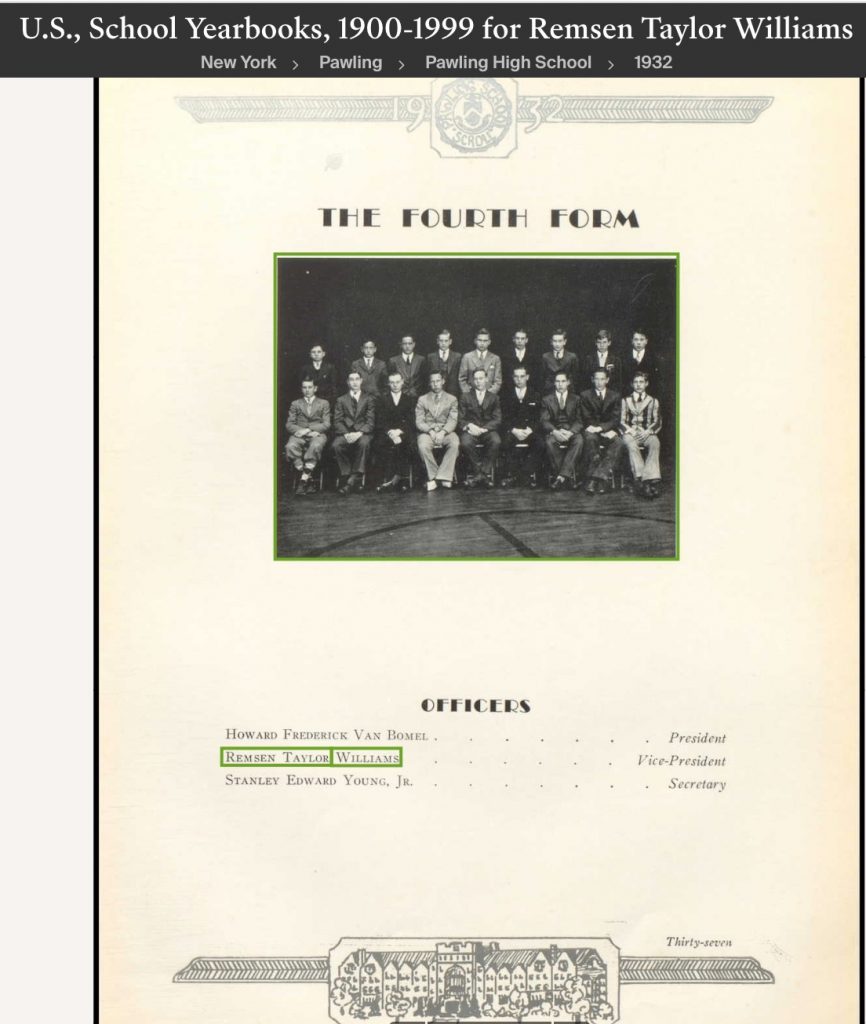
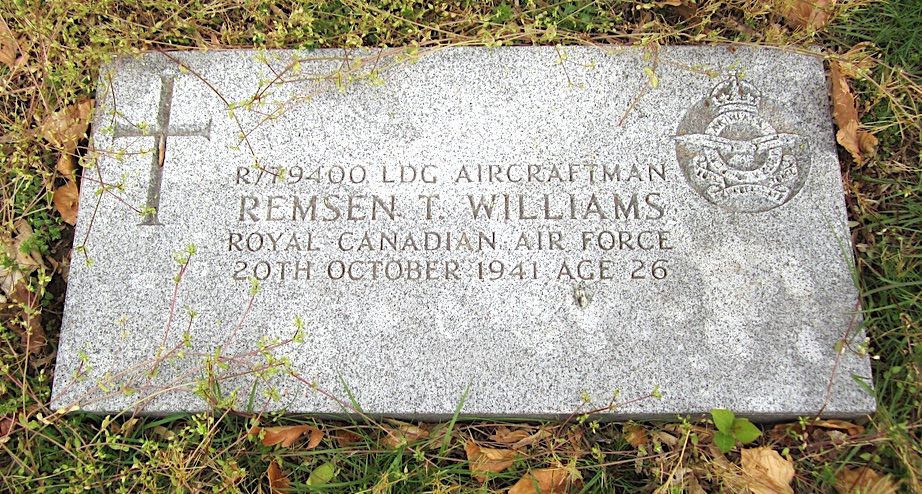
WINIKA (or WANIKKA, WUNIKKA, WINEKA), WALTER WERNER (1912-1942). Lieutenant, junior grade. and aviator, United States Naval Reserves. Walter was born in Brooklyn. The 1915 New York State census, which spells the family name as Wanikka, notes that Walter’s parents, Henry and Simi, were Finnish-born. His father was a carpenter and Walter had two older brothers, Waino Henry, 7, and Willie (Wilho), 5. At that time, the family was living in Brooklyn. The name Walter Wainikka, age 6, appears on a manifest of aliens entering the United States from Canada at Saulte Ste. Marie, Michigan; that child was recorded as born in Finland so it is uncertain if that youngster is the subject of this biography. The 1920 census notes that the family was still living in Brooklyn and that Walter was attending school. The 1925 New York State census, which spelled the surname as Wunikka, reports that the family included an aunt of Walter’s, Elsie Johnston, and her two daughters, Lydia, 20, and Martha, 18. At the time of the 1930 census, Walter, his parents and siblings were living at 936 79th Street in Brooklyn. Walter was single and employed as a laborer in the burlap bags industry.
According to his biography on Find A Grave and Wikipedia, Walter attended Manual Training High School (now John Jay Educational Campus) in Park Slope and entered Rutgers University in the fall of 1931. An article on his death in the Brooklyn Daily Eagle on July 18, 1942 details that he was captain of his high school football team and a member of the all-city high school eleven in 1931, his senior year. The Rutgers yearbook for 1931 pictures him as a member of the freshman baseball team. Continuing his excellence in athletics, Winika was a distinguished football player at Rutgers, playing on their varsity team from 1933 through 1935. He was considered one of the best ends in the East during that decade. The biographies note that he was the only player to score a touchdown against Fritz Crisler’s undefeated national championship team at Princeton when he caught a 45-yard pass in front of 40,000 fans at Princeton in 1933. An entry in the Rutgers Athletics Hall of Fame notes that Winika almost single-handedly won the game against Boston University in 1935. He was selected by the Associated Press as a second-team All-American as an end in 1935 and was awarded his Bachelor of Science degree in education in 1936. In 1940, Winika was selected as a member of the all-time All Rutgers football team. The Brooklyn Daily Eagle reports that after graduation from college, Winika worked with the Air Reduction Sales Company for two years.
As per Wikipedia, in May 1939, Winika enlisted in the Navy and was commissioned as an ensign in July 1940, rising to lieutenant in December 1941; his obituaries in the Brooklyn Daily Eagle and the Courier News in Bridgewater, New Jersey, state that he entered the Navy in 1938 and commissioned an ensign in the Navy Air Force in 1941. As per the 1940 census, which spelled the surname Wineka, he was listed as a cadet, having worked 32 weeks in 1939 earning $500. That census notes that his family was still living at 936 79th Street in Brooklyn and that the household included Winnia Wineka, a 32-year-old stepdaughter; Elsie Brubaker, 41, a sister-in-law and her two sons as well as a 27-year-old lodger.
According to the Brooklyn Daily Eagle, Winika distinguished himself on two occasions while in the service. He spotted a sinking ship while on patrol during a storm and relayed an alarm that ultimately saved 190 persons on board that ship. Another time, his plane developed mechanical problems; he ordered the crew to bail out before he safely landed the plane. Sadly, while on patrol near Trinidad on July 12, 1942, the plane that Winika was piloting crashed at sea; nine members of the crew died in that accident. On July 18, the Brooklyn Daily Eagle reported on his death, identifying him as an ex-football star in high school and college. He was the first varsity athlete from Rutgers to die during World War II. In his memory, the members of Alpha Rho of Chi Psi Fraternity established the William Winika Fund with insurance funds and gifts in his memory. That fund became the basis of the Alpha Rho Memorial Foundation in 1948.
Winika was survived by his parents and brothers; at the time of his death, his brother Wilho (see), who was a football teammate at Rutgers, was a lieutenant with the Navy at Annapolis in pre-flight training school. Walter’s body was never found and a memorial cenotaph marks his gravesite. He was listed on United States World War II Military Personnel Missing in Action or Lost At Sea, 1941-1946, as a lieutenant junior grade in the United States Naval Reserves, missing in action on July 12, 1942. He was also listed in the United States Navy Casualty Books dating from 1776; that book identifies him as an ensign and lists his mother as next of kin. In addition, his name appears in the United States Defense Department records as among those who had unaccounted for remains; that list covered the years 1941 through 1975 and records his place of death as the West Indies (Trinidad). In 1992, he was inducted into the Rutgers Athletics Hall of Fame. Section 171, lot 37750.

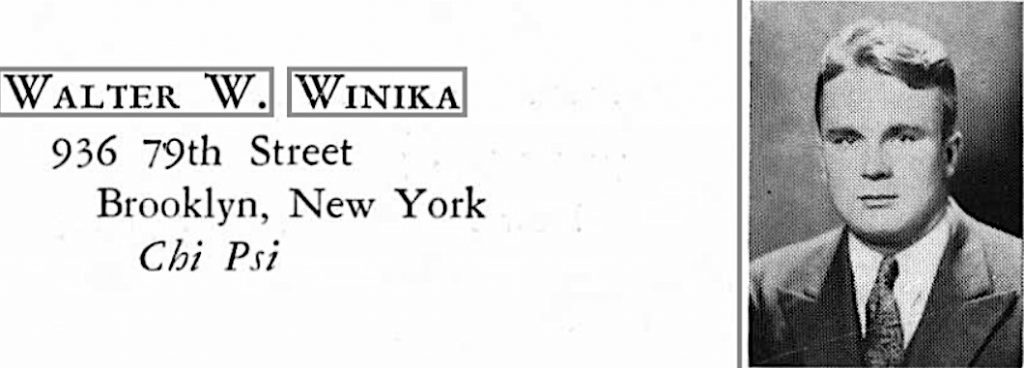
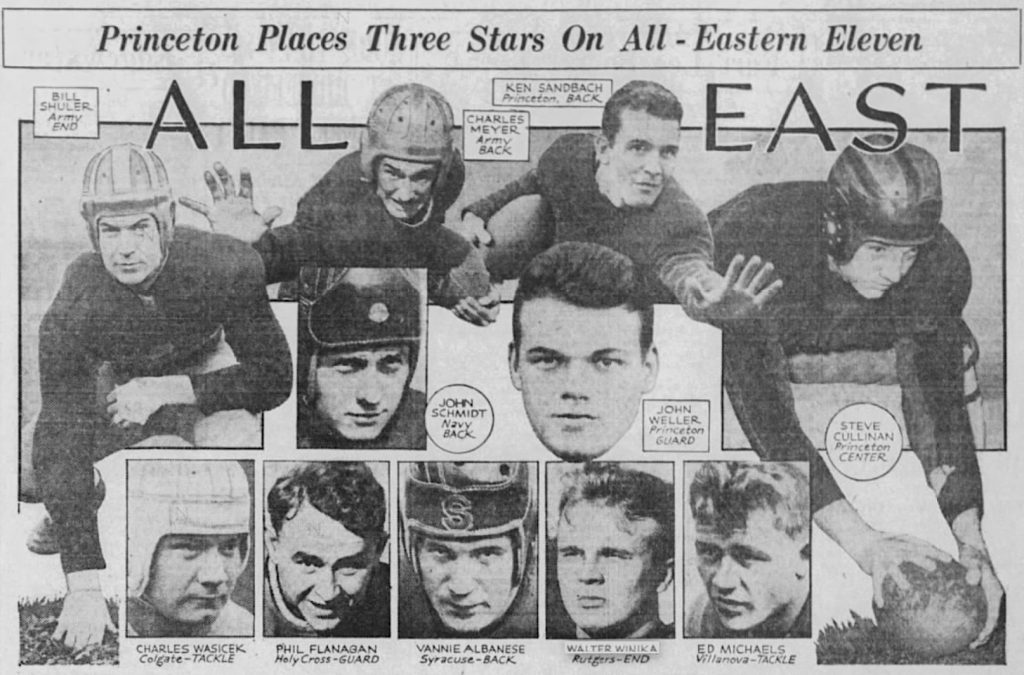

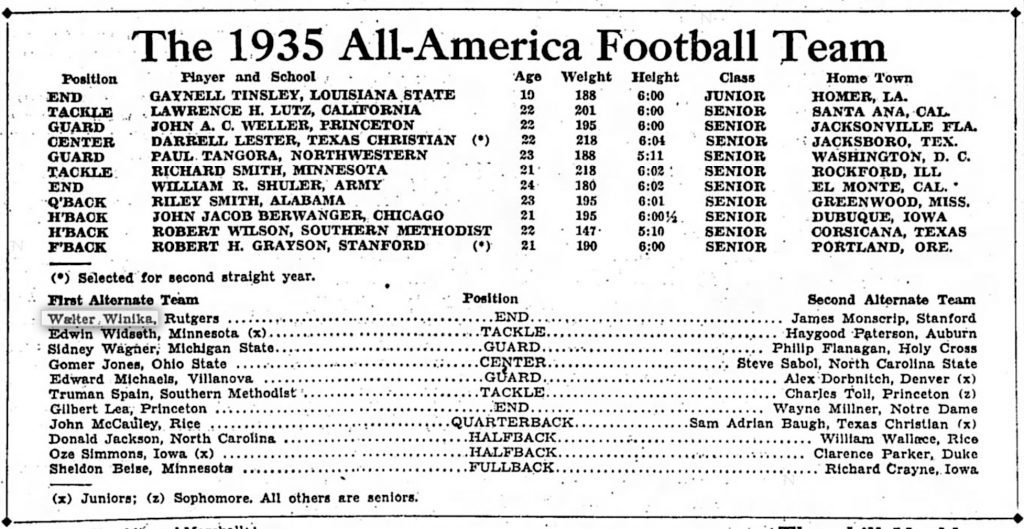

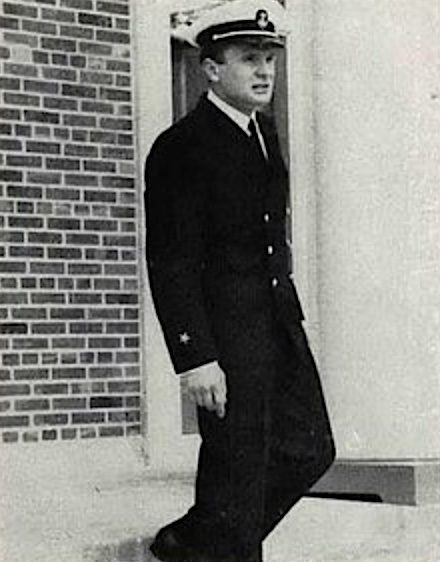
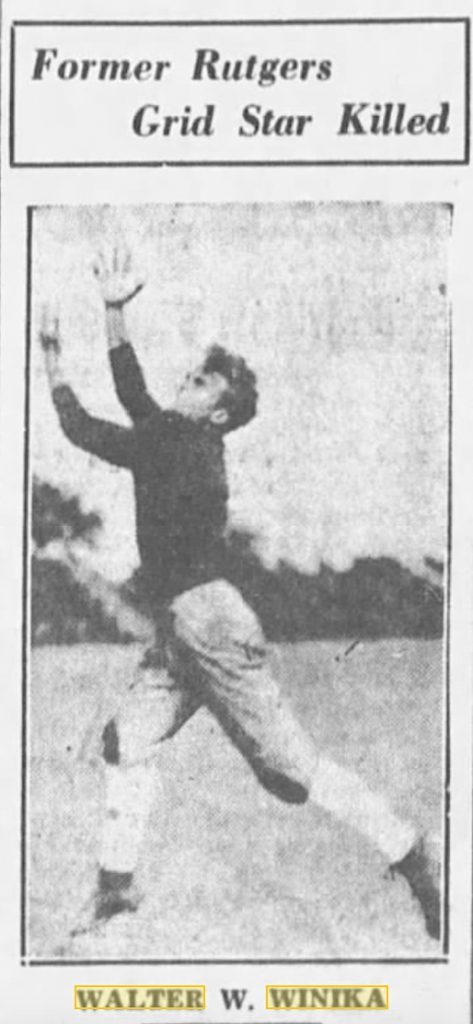
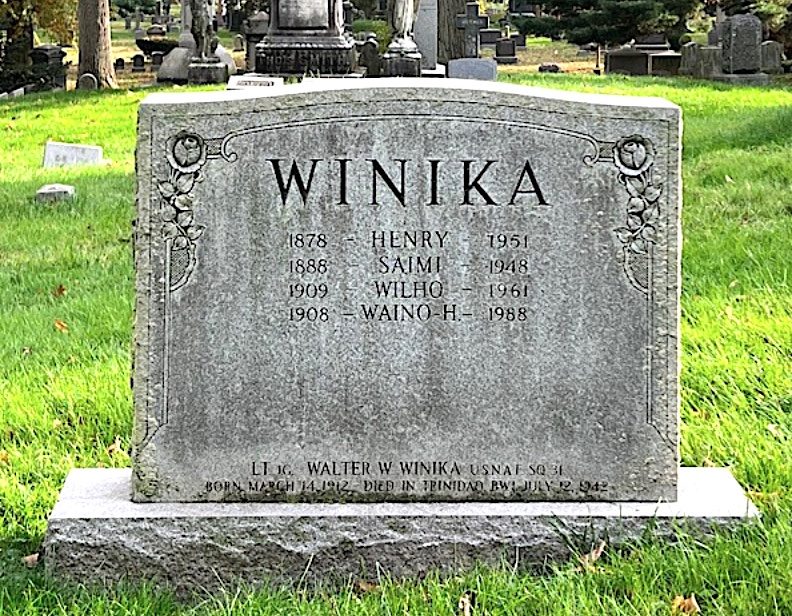
WINIKA (or WANIKKA, WUNIKKA, WINEKA), WILHO ABRAHAM (1909-1961). Lieutenant commander, United States Naval Reserve. Winika was born in Brooklyn on December 24, 1909; other documents list other birth years but the birthdate listed is confirmed by the Social Security Death Index. The 1915 New York State census, which spells the family name as Wanikka, notes that Wilho (Willie on the transcript) was born to Henry and Saimi (Simi), both of whom were born in Finland. His father was a carpenter and Wilho had two siblings, an older brother, Wano (Waino) Henry who was seven, and a younger brother, Walter (see), who was three. At that time, the family was living in Brooklyn. The 1920 census notes that the family was living on 39th Street in Brooklyn. The 1925 New York State census, which spelled the surname as Wunikka, reports that the family included Wilho’s aunt, Elsie Johnston, and her two daughters, Lydia, 20, and Martha, 18. At the time of the 1930 census, Wilho as well as his parents and siblings were living at 936 79th Street in Brooklyn.
Wilho was a star athlete at Rutgers University from which he graduated in 1935. He was listed as a student living at 4 College Avenue in the 1932 New Brunswick, New Jersey Directory. His yearbook thumbnail sketch notes that he was a left guard on the football team, on which his brother Walter later joined him as a teammate and gained great fame as an All-American. Wilho was a member of Chi Psi fraternity, president of the freshman class, belonged to the track and boxing teams, and was a secretary-treasurer of the Spiked Shoe (cross-country) club. In 1935, he earned a letter in track and was on the 1935 football team that played its rival Princeton.
According to the 1940 census, which spelled the surname Wineka, his family was still living at 936 79th Street in Brooklyn and that the household included Winnia Wineka, a 32-year-old stepdaughter; Elsie Brubaker, 41, a sister-in-law and her two sons as well as a 27-year-old lodger.
Winika’s World War II draft card, filed when he was 30 years old, reports that he lived at 941 Boulevard East in Weehawken, New Jersey, had no home phone and worked as a teacher in Belleville, New Jersey. His wife, Rosa, was listed as his next of kin. The accompanying registrar’s report described him as 5′ 11″ tall, 205 pounds with blue eyes, blond hair, a ruddy complexion and a scar on his left foot.
As per the United States Select Military Registers, Winika entered the Naval Reserves on June 11, 1942. On July 12, 1942, when his brother Walter Winika died when the plane he was piloting crashed at sea near Trinidad, Wilho was a lieutenant with the Navy at Annapolis in pre-flight training school. The Military Register indicates that he was a lieutenant commander commissioned in the United States Naval Reserves. A “military date” of October 3, 1945, is also listed, presumably his discharge date.
The 1960 Belleville, New Jersey, Directory lists Winika as a teacher who was living at 279 Washington Avenue. Section 171, lot 37750.
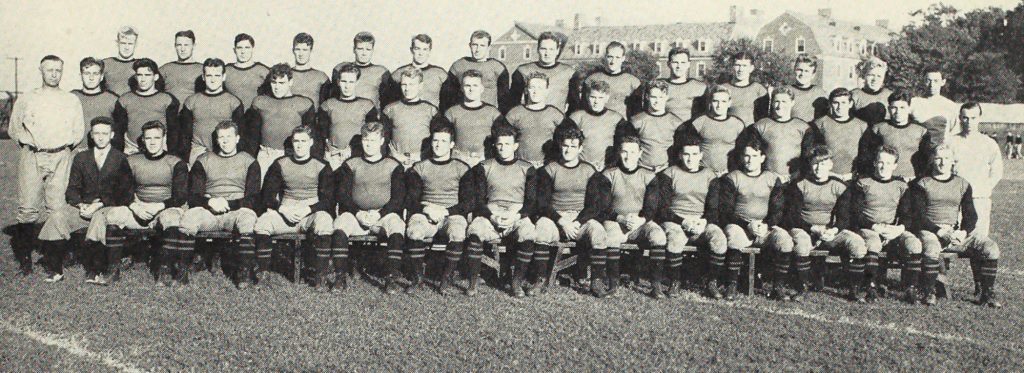

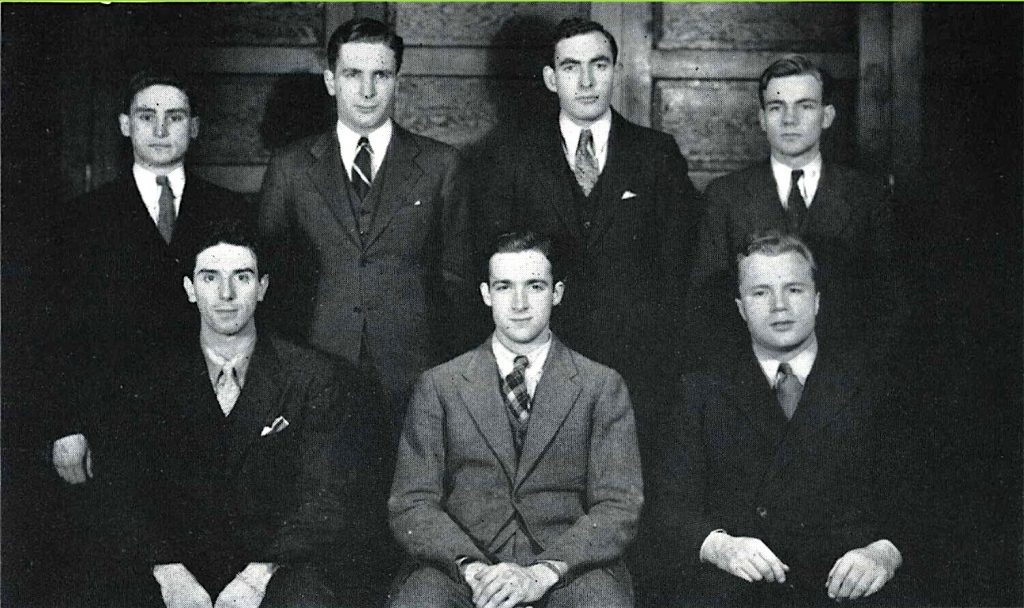
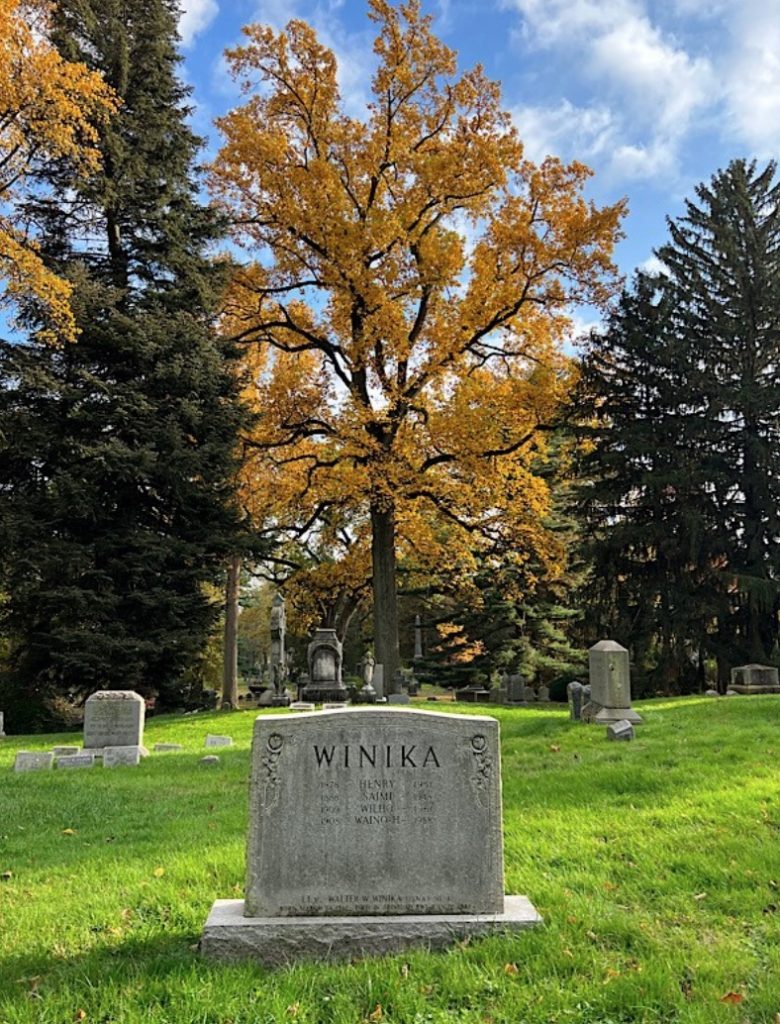
WITZEL, CHARLES E. (1917-2004). Private, United States Army, 39th Infantry and 9th Infantry Divisions. Witzel was born in Amsterdam, Montgomery County, New York. As reported by the 1920 federal census, he lived with his father, John H., a garage mechanic, 42 years of age, and his mother, Ethel M., 33, a homemaker. In addition to Charles, the family had other two sons, John Martin, born in 1916, and Frank B., born in 1917. Both of Witzel’s parents were born in New York State, as were his grandmother and grandfather on his paternal side. According to the 1925 New York State and 1930 federal censuses, John Witzel worked as a rug designer and Ethel Witzel continued to work in the home. All three sons still resided with the family in Amsterdam.
By 1940, Charles Witzel had moved to Brooklyn, as evidenced by his draft registration card, which was signed on October 16, 1940. He was 23 years old, resided at 2206 Beverly Road, and worked at the W. T. Grant Company, a chain department store on Flatbush Avenue. His key contact was his father John, who continued to live in Amsterdam, New York. Charles was 6′ 2″ tall, weighed 155 pounds, and had blue eyes, blond hair, and a light complexion.
In 1941, as reported by the Amsterdam, New York Directory, his parents still resided in Amsterdam while their sons appear to have all left home. John worked as a teacher in Ithaca, New York; Frank was working in Washington, D.C., and Charles was a member of the United States Army.
Charles Witzel and his fiancée Mary R. Lee obtained a marriage license in Brooklyn on February 13, 1942. According to a wedding announcement published in the Brooklyn Daily Eagle, they were married the next day, Valentine’s Day 1942, in Holy Cross Church in Brooklyn. Charles was stationed at Fort Bragg, North Carolina, at the time.
By October 17, 1942, as a member of the 39th Infantry Regiment out of Fort Bragg, Witzel landed at Inveraray in Scotland. The 39th Regiment was the first combat unit of American troops to set foot on foreign soil in Europe in World War II. The regiment joined the 47th Infantry Regiment in capturing Roetgen, the first German town to fall in the war, in September, 1944. The 39th also fought through the Battle of the Bulge and moved across Germany as the Allied Forces pressed on towards the end of the war in 1945.
From his family, we know that Witzel was the personal driver for Colonel Harry A. “Paddy” Flint up until they were both wounded by a German sniper on July 24, 1944 in Normandy. Though Colonel Flint died the next day from his wounds, Charles Witzel was flown to a hospital and survived.
Witzel took part in three invasions and six campaigns in the European Theater of Operations. In addition to his combat and infantry medals, he also received the Purple Heart with bronze oak leaf cluster, the Bronze Star with bronze oak leaf cluster, the Silver Star, and the Good Conduct Medal. He was discharged from the United States Army on June 25, 1945.
By 1947, according to a publication by the College of the Holy Cross, Ninth Infantry Division Association, Charles and Mary had a child. At that time, Witzel worked at a shoe store on West 47th Street in Manhattan.
According to the federal death indices and cemetery records, Charles Edward Witzel passed away in 2004, predeceased by his wife, Mary, in 1970. His last residence was in Brooklyn. Section 15-16, lot # 17263, grave 1999.

WOLBER, FRED (or FREDERICK) JOHN (1920-1987). Private first class, 350th Infantry Regiment, 88th Infantry Division, United States Army. Wolber was born in Brooklyn, the firstborn child of Frederick and Mary Wolber. His grandparents on both his maternal and paternal sides were born in Germany. Wolber’s father was working as a checker at an oil refining company at the time of his birth. At the time of the 1920 census, the family lived at 71 Union Avenue in Staten Island.
By 1925, according to the New York State census, the Wolbers had moved to Brooklyn and resided at 330 58th Street. Wolber’s father worked as a chauffeur. The family included his mother, Mary, a home-maker. An uncle named George and a cousin, Jack Kennedy, also resided there. By the time of the 1930 census, the Wolbers lived at 535 51st Street in Brooklyn. Wolber’s father, Frederick, still worked as a chauffeur. The rest of Fred’s family included his mother Mary, and siblings George and Dorothy.
According to the 1940 federal census, the family had moved again in Brooklyn, this time to 5011 Third Avenue. Wolber’s father worked as a chauffeur for a trucking company and Wolber, now 20 years of age, worked as a metal worker in a tin factory. His mother Mary, brother George, and sisters Dorothy and Mary, also lived at home.
As per his draft registration records, Frederick John Wolber registered for the draft on February 15, 1942. He listed his fiancé, Helen Questel, as the “Name and address of person who will always know your address.” Both of their addresses were listed as 5013 Third Ave, Brooklyn. At the time, Wolber worked for William Westfall at 4601 First Ave in Brooklyn.
According to the Marriage License Index of New York, on September 9, 1942 Frederick and his fiancé, Josephine Helen Questel, obtained a marriage license. According to the family, the couple married on October 4, 1942.
World War II Army enlistment records show that Wolber enlisted on December 7, 1942, the first anniversary of the bombing of Pearl Harbor. At the time, he was employed as a kitchen worker. His place of entry into service was Fort Dix, New Jersey. From his family, we know that Wolber was a light machine gunner who fought in the European Theater of Operations with the 350th Infantry Regiment of the 88th Infantry Division. Other documentation lists his specialty as a cannoneer 610.
Frederick Wolber fought in battles and campaigns in the Po Valley, Rome-Arno, and the North Apennines. He was wounded in Italy on September 29, 1944. Wolber was awarded a Good Conduct Medal, Purple Heart, EAME Theater Ribbon with three Bronze Stars; American Theater Ribbon, and the World War II Victory Medal. The Purple Heart was from being hit by shrapnel from a hand grenade. Accompanying his Bronze Star was a letter from Major General of the United States Army Paul W. Kendall:
For heroic achievement in action on 28 April 1945, near San Pietro in Gu, Italy. On this day, the Second Battalion was proceeding north in a column of troops carriers when it was suddenly fired on by enemy rifle and machine guns from the flanks, inflicting several casualties. Private Wolber, of the Anti-Tank platoon, leaped from his truck and seized a rifle from a fallen comrade. Then, taking up a position under the truck, he delivered such a deadly hail of fire at the enemy machine gun, concealed in a railroad car, that it was immediately silenced. This splendid display of bravery and initiative encouraged the other troops to also take up firing positions and the result was the complete routing of the enemy machine gunners….. Private Wolber’s quick actions in firing on the enemy, inspired others to also take up positions and permitted the battalion to continue forward after having knocked out the strong points of resistance. Private Wolber’s magnificent courage and superb initiative won him the sincere respect and admiration of all who witnessed these deeds.
Wolber was discharged from Camp Breckinridge, Kentucky, on November 1, 1945.
Wolber and his wife, Helen, had three children, Marilyn, Randy, and Cathy. At the time of his death, at age 66, he had eight grandchildren. According to his family, Wolber died of lymphoma. Section 6, lot 39340.
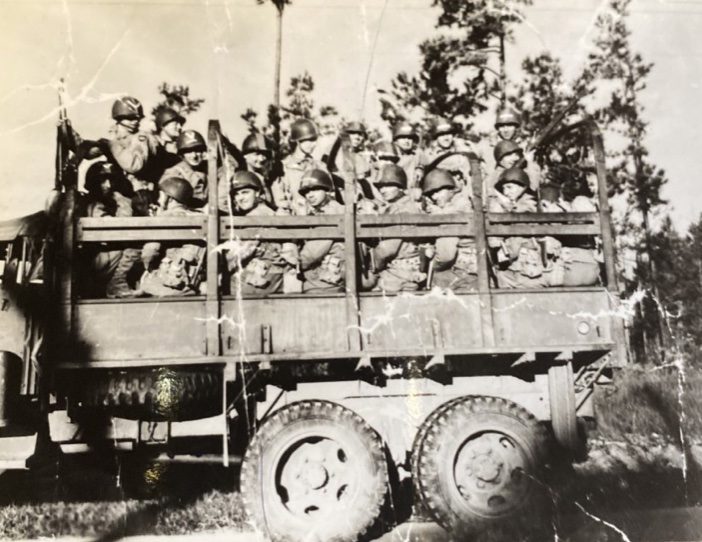
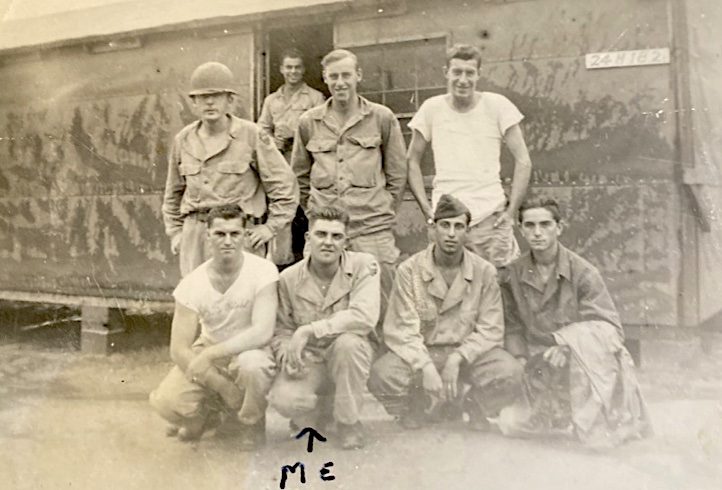
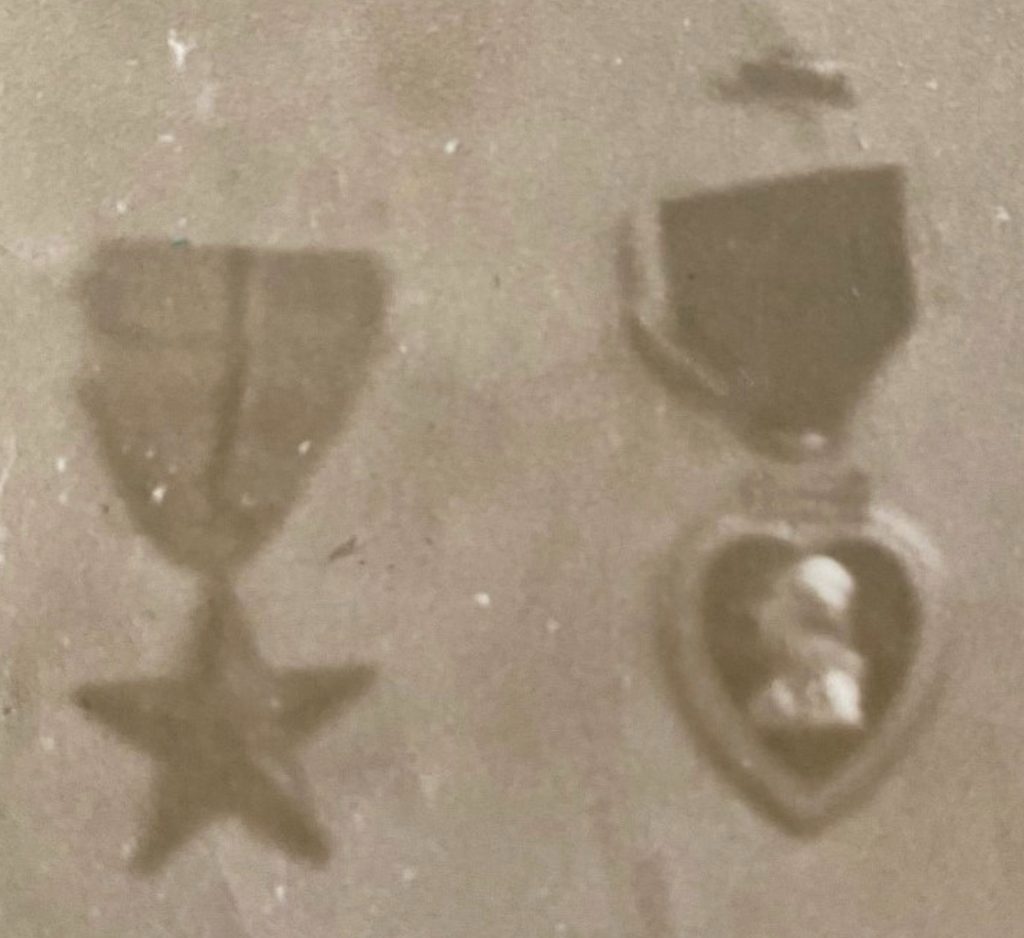
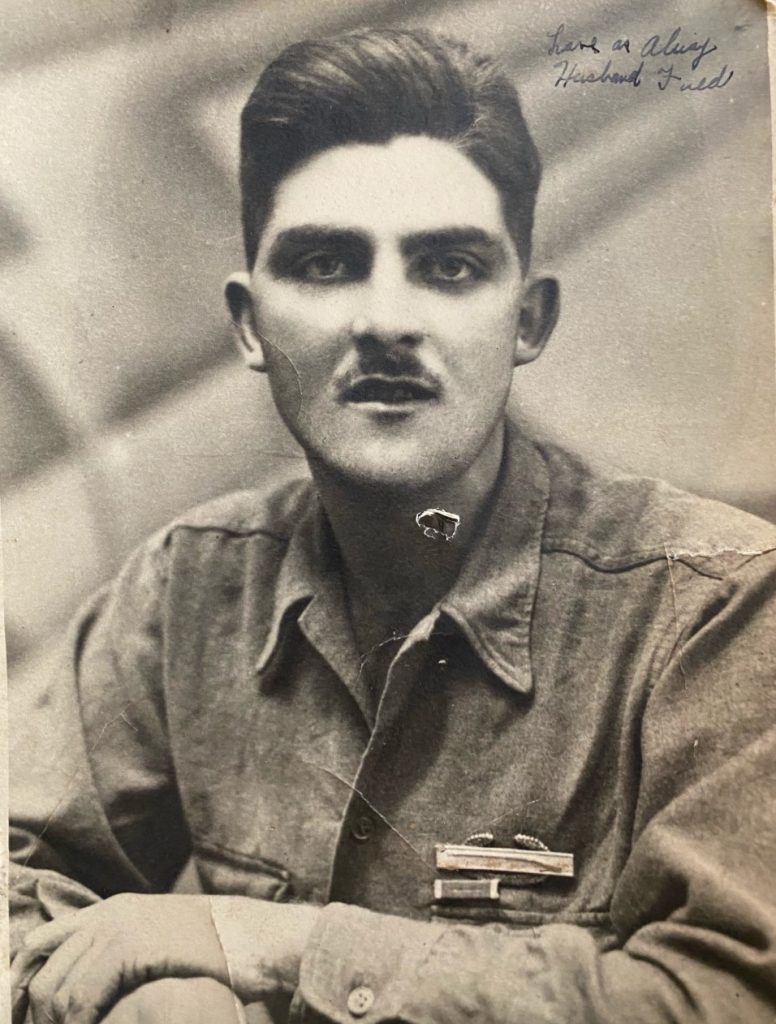
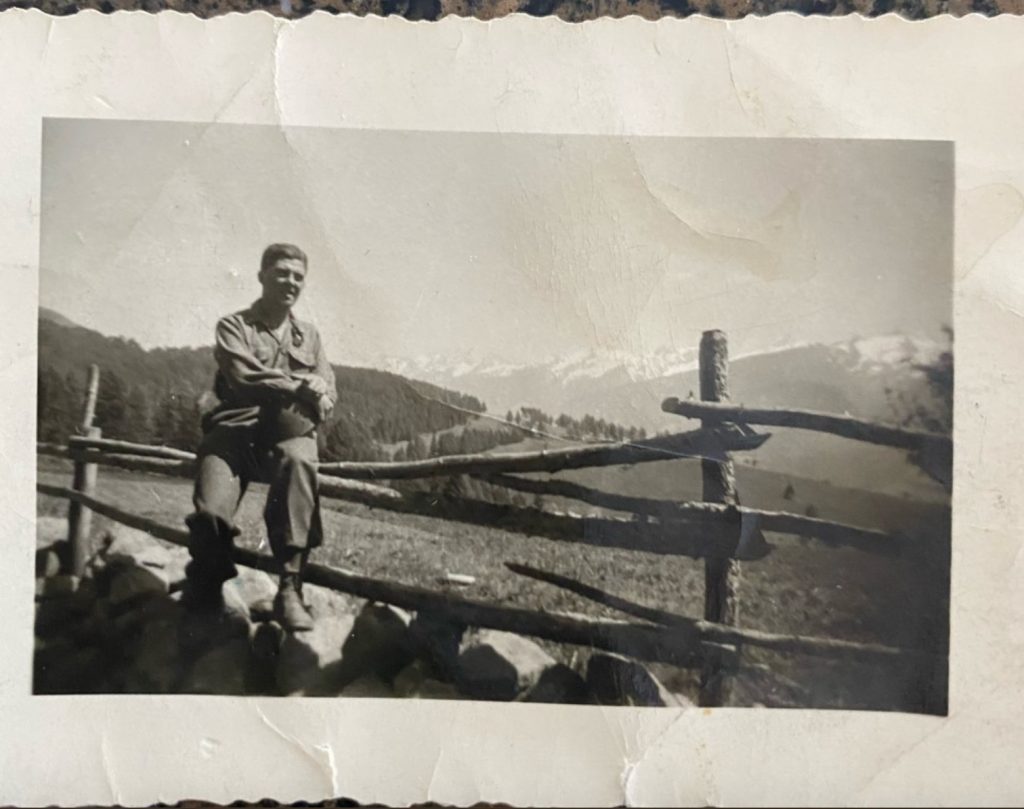
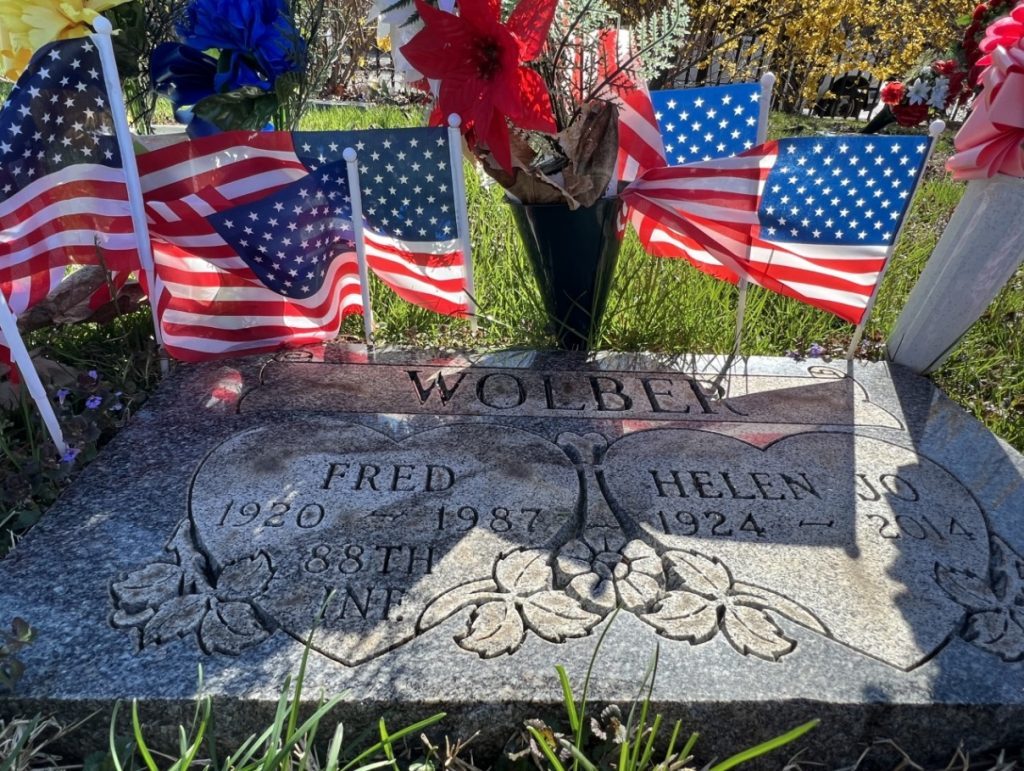
XANTHOS (or XANTHAKOS), LEON (or LEONIDES) G. (1919-2010). Sergeant, 97th Infantry Division, United States Army. Leon Xanthos was born in Sparta, Greece, to George and Garifalia Xanthakos, according to Ancestry.com. Leon was their fourth child; three daughters had preceded him. His father immigrated to the United States in 1920, when Leon was a year old, and eventually shortened the family name to Xanthos. By the 1930 federal census, his father was living with his daughter, Stella, and son-in-law, Louis Paulos, working at Louis’s newsstand.
Leon, known at the time as Leonides Xanthakos, immigrated to the United States from Greece in late 1937, arriving in New York on the ship Vulcania, according to passenger lists. He had just turned 18 years old. His daughter, Maria, said of her father’s reasons for immigrating:
Greece was about to enter WWII. His father knew that if [Leon] stayed in Greece, he was obligated to serve in the Greek Army and [George] decided to send him to America. When the U.S. entered WWII, my father decided to enlist in the U.S. Army. [He]wanted to fight for America because Italy invaded Greece and [he] wanted to help the cause. When [Leon’s] father found out that he enlisted, he went to the Army office and told them that he was not an American citizen and was not allowed to fight for the American Army, but later the laws changed and my father was drafted into the American Army.
After his arrival, Leon worked at his brother-in-law’s newsstand and went to school. He spent time at the Park Slope Library, learning to speak and write English, according to his daughter, who related: “He went to night school at Brooklyn Technical High School to become an engineer and to learn how to repair televisions, but was expelled because he was not an American citizen.” His daughter reports that her father went on to attend Diesel Mephils Diesel School, in Long Island City, New York, and graduated in 1942.
By the time of the 1940 federal census, 20-year-old Xanthos was a lodger at a residence on 10th Street in Brooklyn, had completed the first year of high school, and was working as a counter man in a restaurant.
He first registered for the draft on July 1, 1941, at the age of 21, as Leon George Xanthos. His draft registration card describes him as 5′ 11½” tall, 155 pounds, with brown eyes, black hair, and a dark complexion. Leon listed his sister Fay’s husband as his emergency contact. He was still working for his sister Stella’s husband, Louis, at the newsstand.
Xanthos was inducted into the United States Army as a private in September, 1942. He was “not yet a citizen,” according to enlistment records. According to his daughter, Maria, he served in the 97th Infantry Division, and was eventually promoted to the rank of sergeant. After basic training in the United States, he trained as a rifleman, rising to tech4-clerk, general (the equivalent of a sergeant).
Maria said that during the time her father served in Louisiana:
He was on maneuvers doing a 25-mile march with a heavy backpack and [was] not given any food. As they were marching, one of his friends from Kentucky noticed there was a sweet potato crop. So at nightfall they went to the farm and started eating them because they were hungry. After that experience, [when he] became a civilian, my father never ate another sweet potato.
The 97th Infantry Division arrived in Europe in February 1945, to bolster divisions committed in the Battle of the Bulge. Xanthos performed a variety of clerical and file-handling duties at the 2016th Prisoner of War Overhead Detachment, in Belgium. Maria stated, “He handled and kept accurate alphabetical files of new prisoners by preparing admission cards and fingerprinting them.” He served in the European Theater of operations for 24 months.
Regarding her father’s experience in combat, Maria stated that when he was in London, he was in a cab with his friend, going to Victoria Station to return to camp:
A block away, a V2 bomb exploded and the cab overturned. His friend was hurt and received the Purple [Heart]; my father received the Battle [or Service] Star, because England was considered a war zone. My father received his second Battle [or Service] Star at Bastogne, Belgium: He was given a rifle to fight the Germans. This was the only experience that he had in combat.
In January 1944, Xanthos became an American citizen when he was stationed in England. According to his daughter, “He saw an advertisement that he can become a citizen at the American Embassy in London, and that’s where he became an American citizen.” At the same time, he formally changed his name from Leonides Xanthakos; his naturalization papers, dated December, 1944, record his name as Leon G. Xanthos.
After two years in Europe, Xanthos was honorably discharged from Fort Dix, New Jersey, on May 1, 1946. He had received the American Campaign Medal, the European-African-Middle Eastern Campaign Medal, and the World War II Victory Medal.
Back in New York, Leon and Sterliani “Stella” Mentonis were married on November 30, 1948. The couple had four children. Xanthos owned his own business, a stationery store on the corner of 9th Street and 5th Avenue in Brooklyn, for 45 years.
Xanthos was residing in Daytona Beach, Florida, at the time of his death in May 2010. His wife, Stella, died several weeks later, and is buried next to him in Green-Wood. Section 25, lot 45145, grave 1.
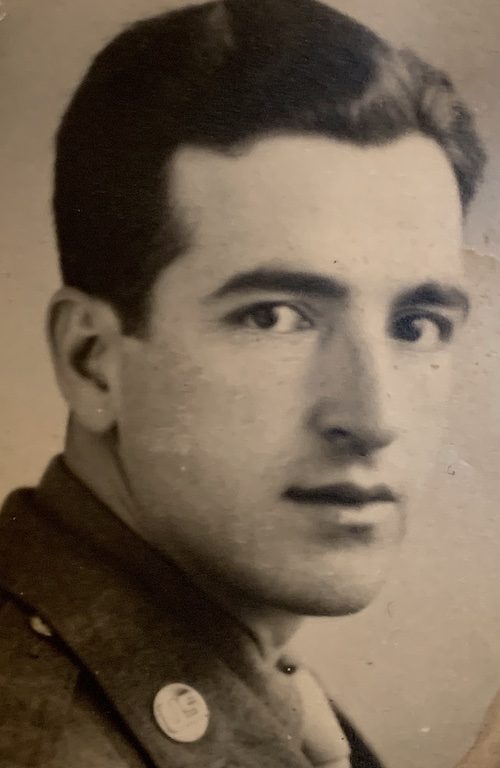
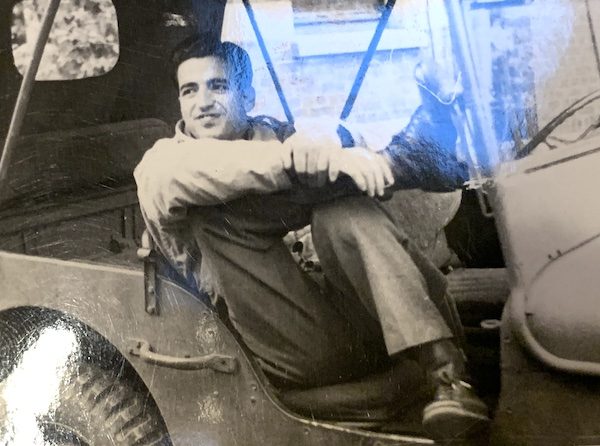
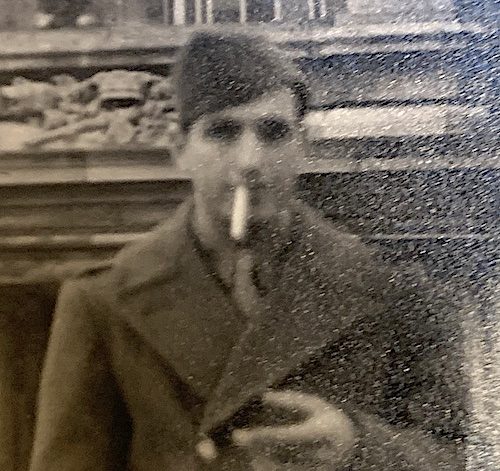

ZAFFIRO, FRANK A. (1921-2019). Technician fifth grade, 720th Amphibian Tractor Battalion, United States Army. Frank Zaffiro was born in Brooklyn. Both the 1930 and 1940 federal censuses indicate that he lived on Union Street with his parents, Alfredo and Maria Zaffiro, who were Italian immigrants. In 1930, Maria’s parents were living with them, but by 1940, Alfredo, Maria and Frank were the only tenants. It appears that Frank remained an only child, as no records list other children in the home. Alfredo is described as a carpenter at a box factory. Frank is listed as having completed his fourth year of high school, and according to information provided by his son, also Frank, he attended Manual Training High School (now the John Jay Educational Campus) on Seventh Avenue and Fourth Street in Brooklyn. Zaffiro was still living with his parents on Union Street in 1942 when he filled out his draft registration card. It describes him as having a light complexion, gray eyes and brown hair, measuring 5′ 7″ tall, and weighing 145 pounds. His mother is listed as the person who would always know his whereabouts. His employer is shown as William Kelly, on East 25th Street in Manhattan.
Zaffiro enlisted in New York, in 1942; his civilian occupation was listed as semiskilled occupations in manufacture of paper and pulp. He served as a technician in the 720th Amphibian Tractor Battalion, which conducted many missions in the Pacific Theater. The invention of the amphibious tractor enabled Allied forces to reach islands surrounded by perilous reefs and lagoons that had previously prevented traditional watercraft from landing on their beaches. Some amphibious tractors were fitted with guns and acted as artillery support, while some were fitted for carrying personnel and supplies, both playing a vital role throughout the Pacific. In 1944, Zaffiro was hospitalized for a non-combat-related illness but recovered and returned to active duty. A war diary entry from 1945 indicates that the 720th participated in training exercises at Pearl Harbor. Zaffiro was recognized for his outstanding service on multiple occasions. According to his son, Zaffiro was awarded the Pacific Service Medal, Good Conduct Medal, American Service Medal Asiatic, and World War II Victory Medal. He was honorably discharged in 1946.
Zaffiro returned home to Brooklyn and soon decided to settle down. When he and Irene Mauro were issued a marriage license in 1948, The Brooklyn Eagle shows Zaffiro residing at the same Union Street address where he grew up. His obituary mentions that he worked for the United States Postal Service for the remainder of his career, retiring in 1980. Zaffiro and his wife had two sons, Alfred and Frank. In retirement, the couple moved to Bay Ridge. Zaffiro’s family expanded to include two grandsons, then four great-grandchildren. Irene died in 2006 and was laid to rest in Green-Wood Cemetery. Zaffiro passed away in 2019 and was buried at her side. Section 93/105, lot 44806.
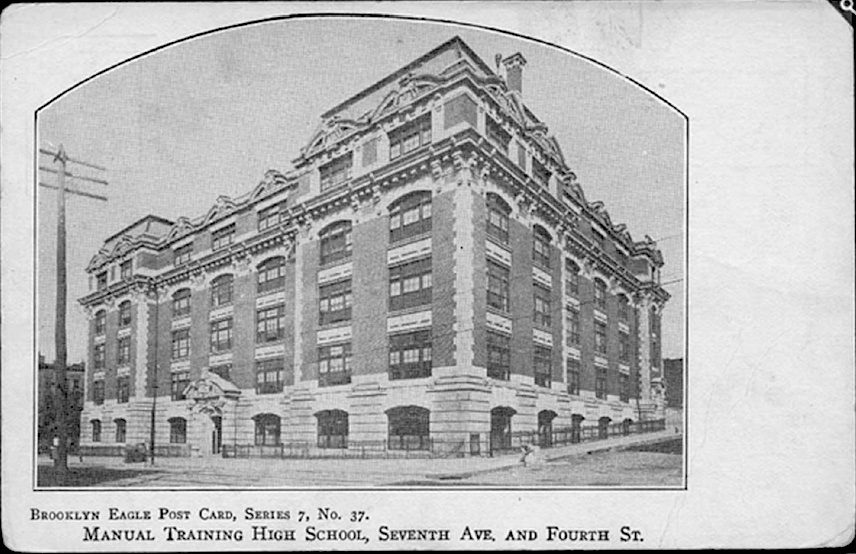
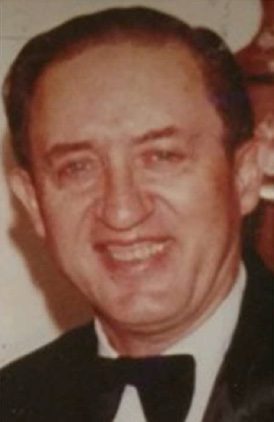
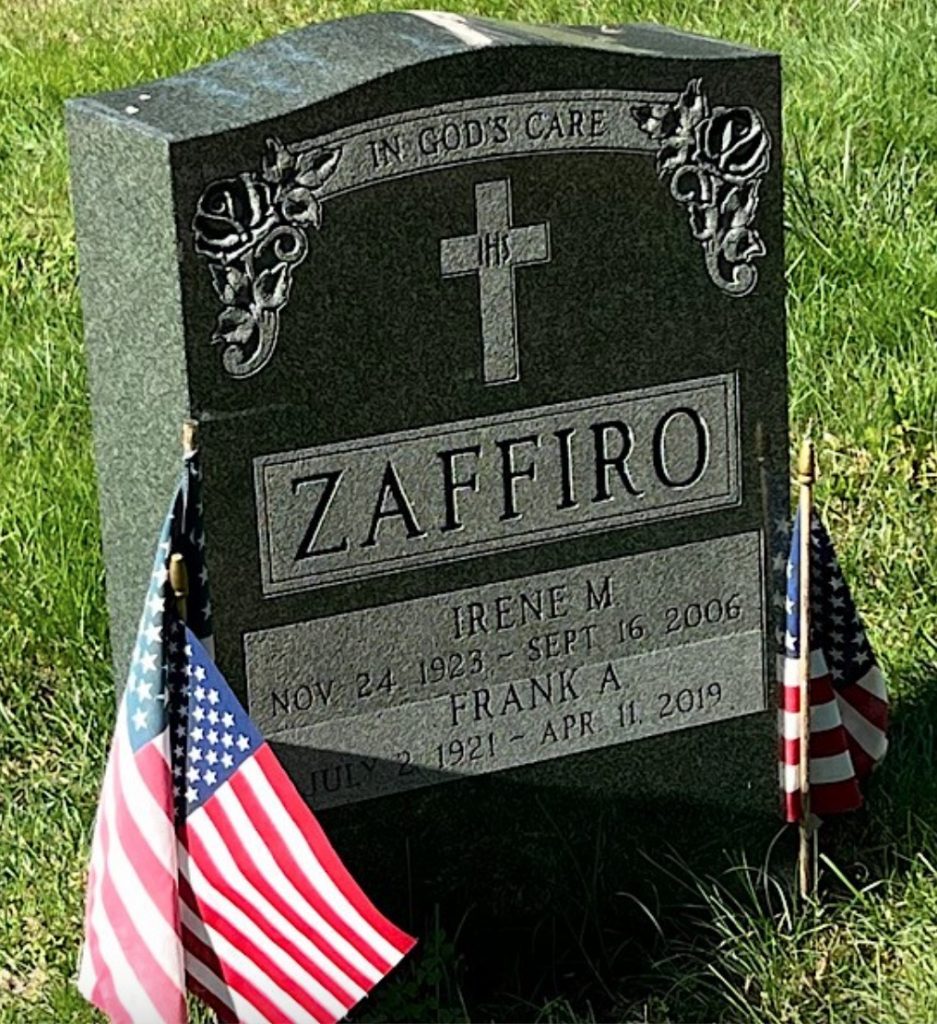
ZDYRKO, JOHN (1923-1992). Staff sergeant, 356th Fighter Squadron, United States Army Air Force. John Zdyrko was born in Manhattan. According to the 1930 federal census, when he was seven years old, he was living with his parents and siblings at 205 East 33rd Street in Manhattan. He was in school and could read and write. His parents, John and Caroline Zdyrko, were both 38 years of age, and were both born in Poland. Ukrainian was the language spoken at home. A brother, Mike, 15 years old, as well as three sisters, Mary, 17; Alice, 13; and Helen, 11, all lived there as well. A 40-year-old boarder, John Ciplicki, lived with the family.
By the 1940 federal census, John was 17 years of age old, and the family had, by then, moved to Brooklyn, living at 128 Hamilton Avenue. He was in his fourth year at Manual Training High School (now John Jay Educational Campus). Nicholas, another son, was 24 years old and sister Anna was 23.
Zdyrko’s World War II registration card shows that, at age 19, he was living at 87 First Place in Brooklyn and employed by Robert Armour in Bayonne, New Jersey. John enlisted on January 7, 1943, and served as a staff sergeant in the 356th Fighter Squadron, 354th Group of the Army Air Force. After arriving in England and then landing in Normandy, John saw major action in Europe, fighting across France. John fought in the Battle of the Bulge in the Ardennes region, the last major German offensive campaign on the Western Front. At the end of the war, John was in Germany, and he returned to the United States in late 1945. He was discharged on November 19, 1945. Zdyrko was awarded the Presidential Unit Citation for victories in the air.
John married Mary Maresca and they had three children: Michael, John, and Laura. He was a grandfather and died a natural death in Manhattan. He and Mary are interred together. Section 104, lot 44604, grave 633.
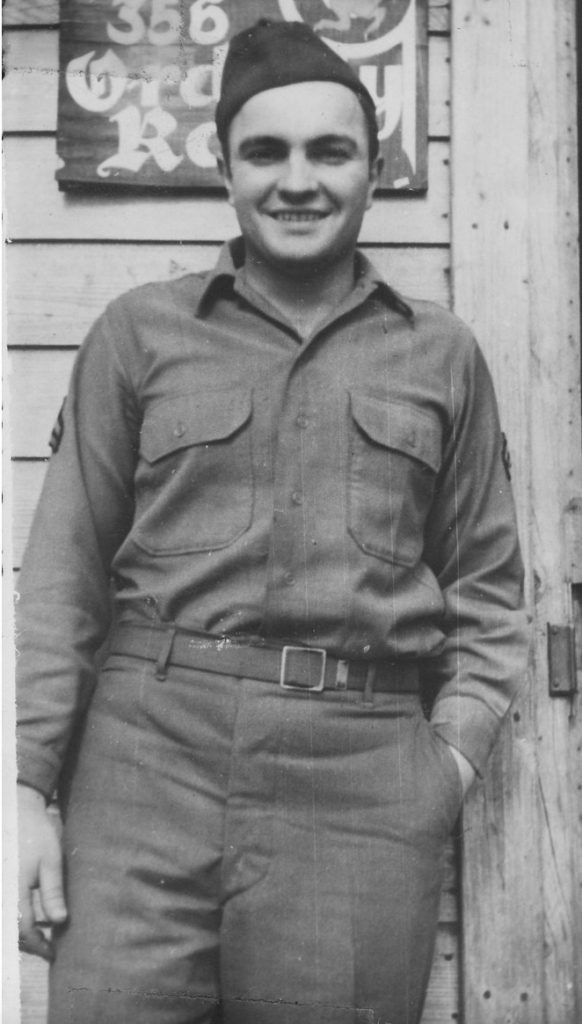
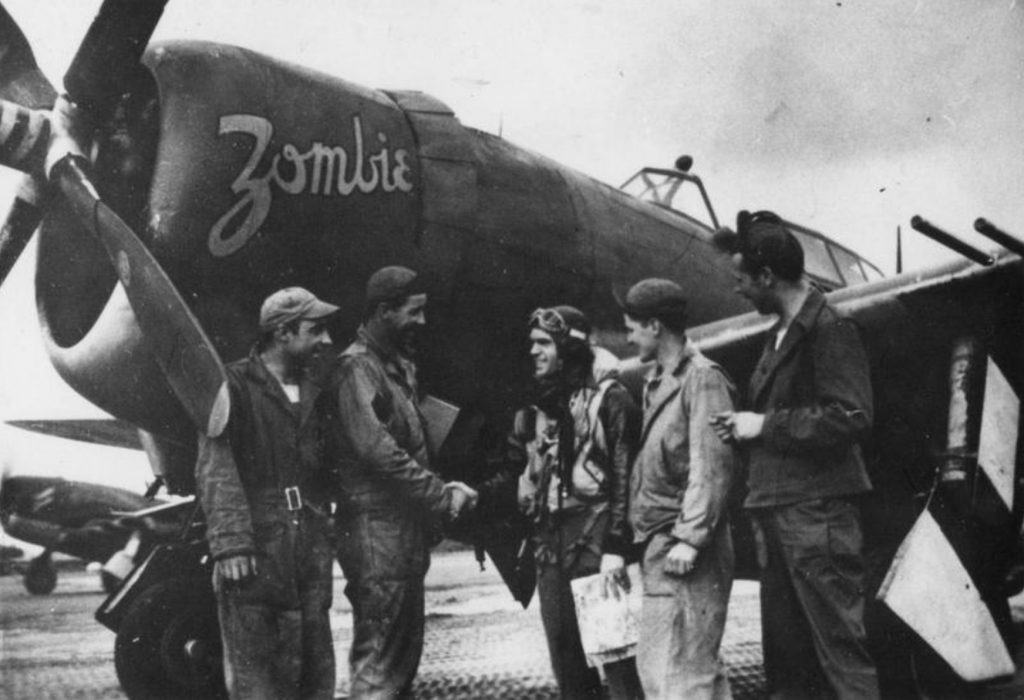
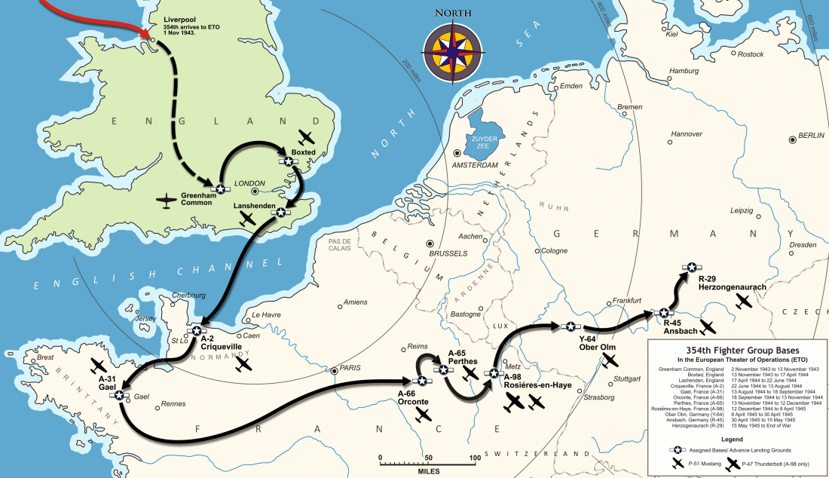
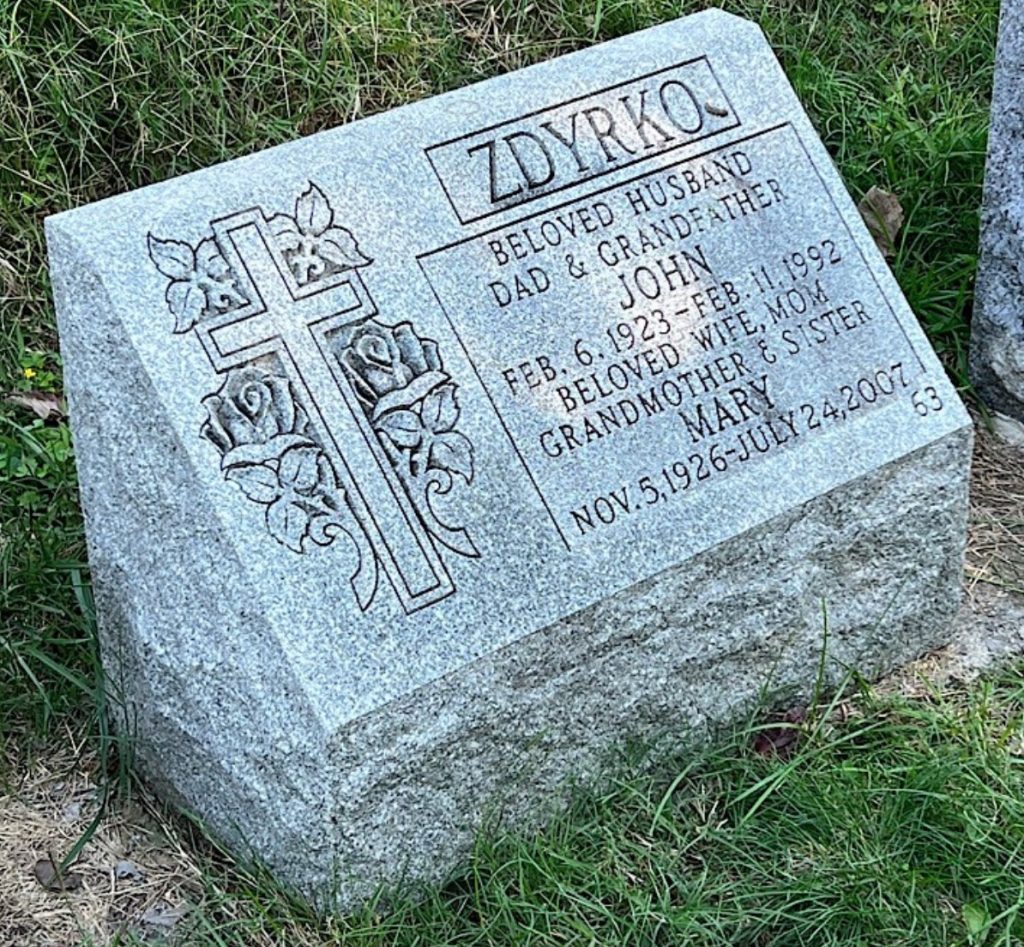
ZELTMANN, CHARLES FREDERICK (1918-1944). First sergeant, unit unknown, Antisubmarine Command, United States Army Air Force. Charles was born in Brooklyn to father, Charles Christopher, and mother, Mathilda (Matilda). He had two older sisters, Dorothy Lippert, and Betty (Bertha) Butler and two younger brothers, William and John Zeltmann. He graduated from East New York Vocational High School, today known as the Transit Tech High School, built on the former site of pumping stations of the Ridgewood Reservoir.
According to the 1920 United States federal census, and the 1925 New York State census, Charles was living with his family at 189 20th Street in Brooklyn. His father worked as a truck driver. By 1930 the family had moved to Middletown, New Jersey, where the father worked as a commercial traveler for the milk industry. The family lived on 192 Harmony Avenue and Charles was 11 years old.
On his World War II draft registration card, signed October 16, 1940, Charles listed his address as 1198 Pacific Street in Brooklyn. He was 22 years old, 5′ 10″, 160 pounds, and had hazel eyes, brown hair, and a ruddy complexion. “Name Of Person Who Will Always Know Your Address” was listed as his father. His employment was as an office/messenger boy at 209 West 38th Street in Manhattan, for Charles D. O’Brien.
Zeltmann, having graduated from high school, enlisted on April 21, 1941, in Jamaica, Queens in the United States Army Air Forces. He served for 27 months in Italy and North Africa, without injury, and received the Soldier’s Medal and the Air Force Bronze Star Medal for his participation in the antisubmarine command for the Mediterranean Theatre of Operations.
Charles’s younger brother, William, passed away at the age of 20 in 1942, in an automobile accident on the South Channel Bridge on Cross Bay Boulevard in Rockaway Beach, Queens, New York. He had been living at 1325 Bedford Avenue in Brooklyn. William and four other young men had attended a St. Patrick’s Day Event in Broad Channel, Queens.
Zeltmann died on September 11, 1944 at the age of 26 while on a 21-day furlough, when the bomber plane he was aboard crashed into Choctawhatchee Bay, Florida, near Elgin Field. According to the obituary in The Brooklyn Daily Eagle, published on September 17, 1944, Charles had also worked as a linotyper for a Manhattan printing firm. His parents were living in Port Monmouth, New Jersey. The National Jewish Welfare Board, Bureau of War Records, had a record of his service in its Master Card System. Both William and Charles were interred at Green-Wood on September 16, 1944. Section 92, lot 37818.
